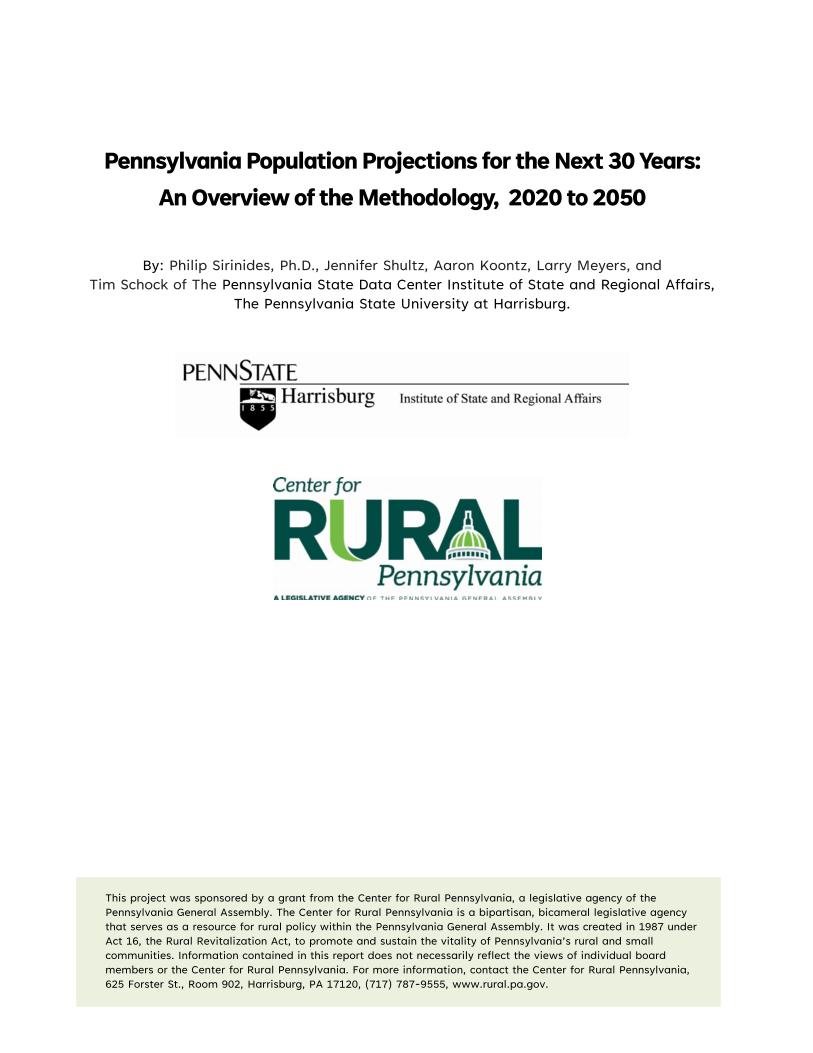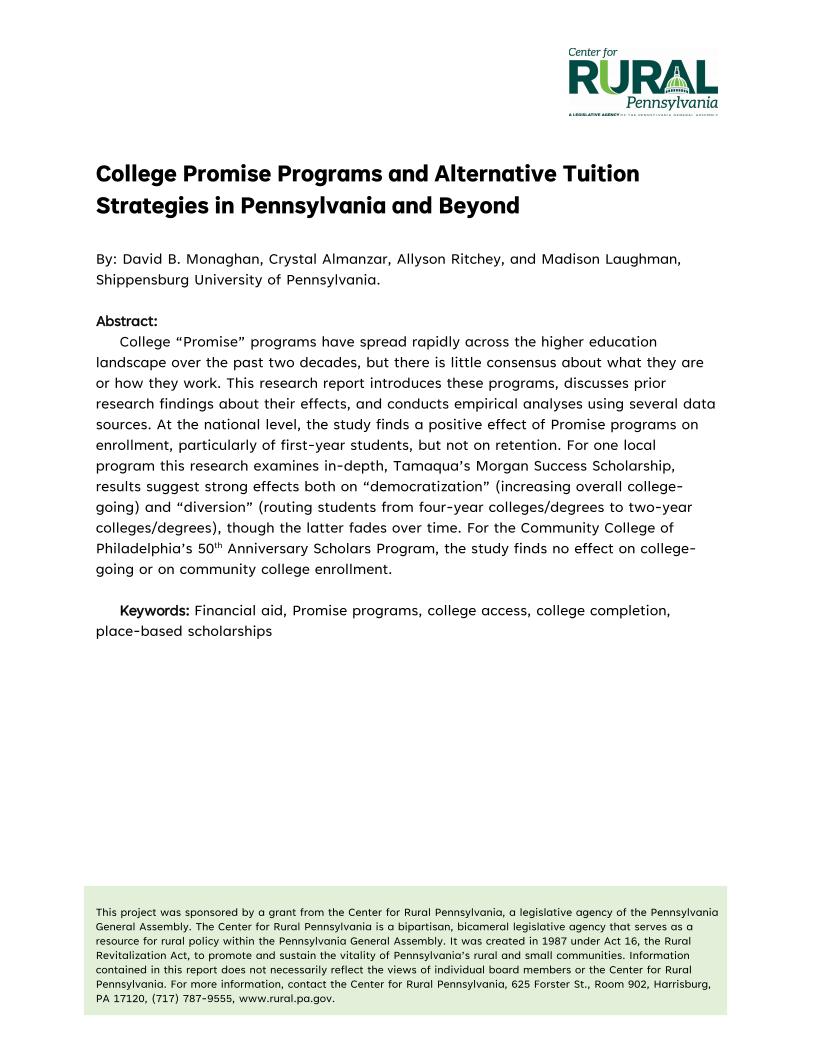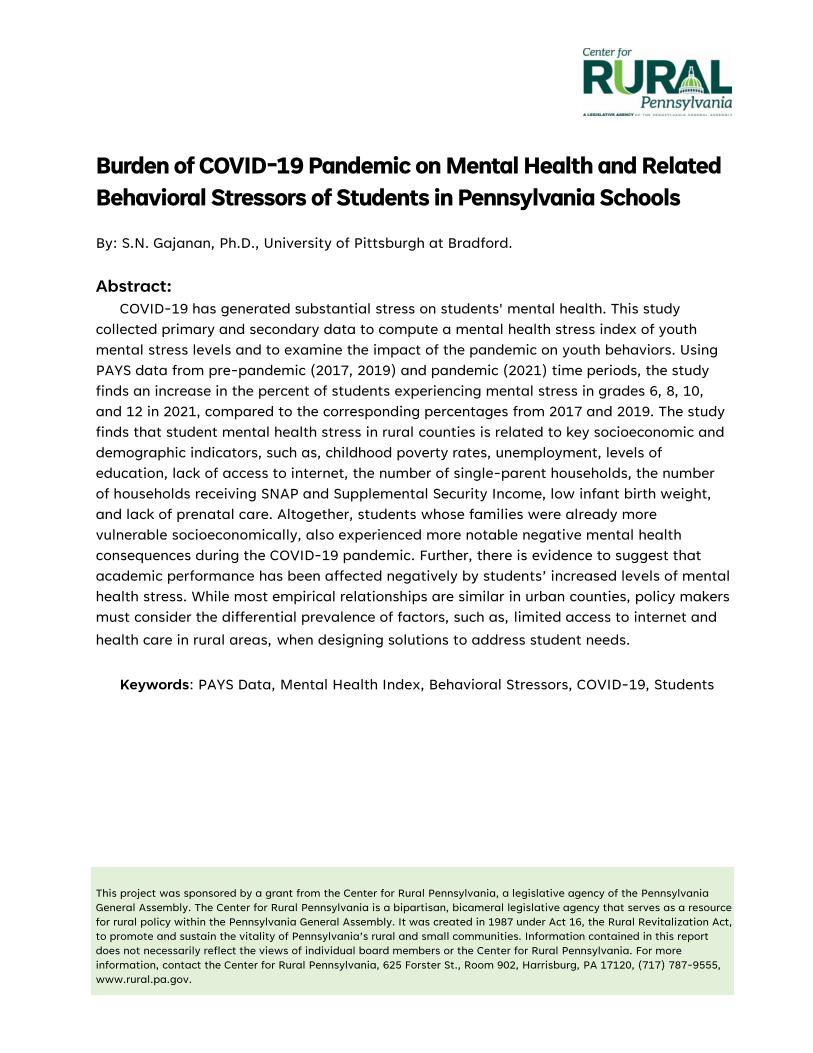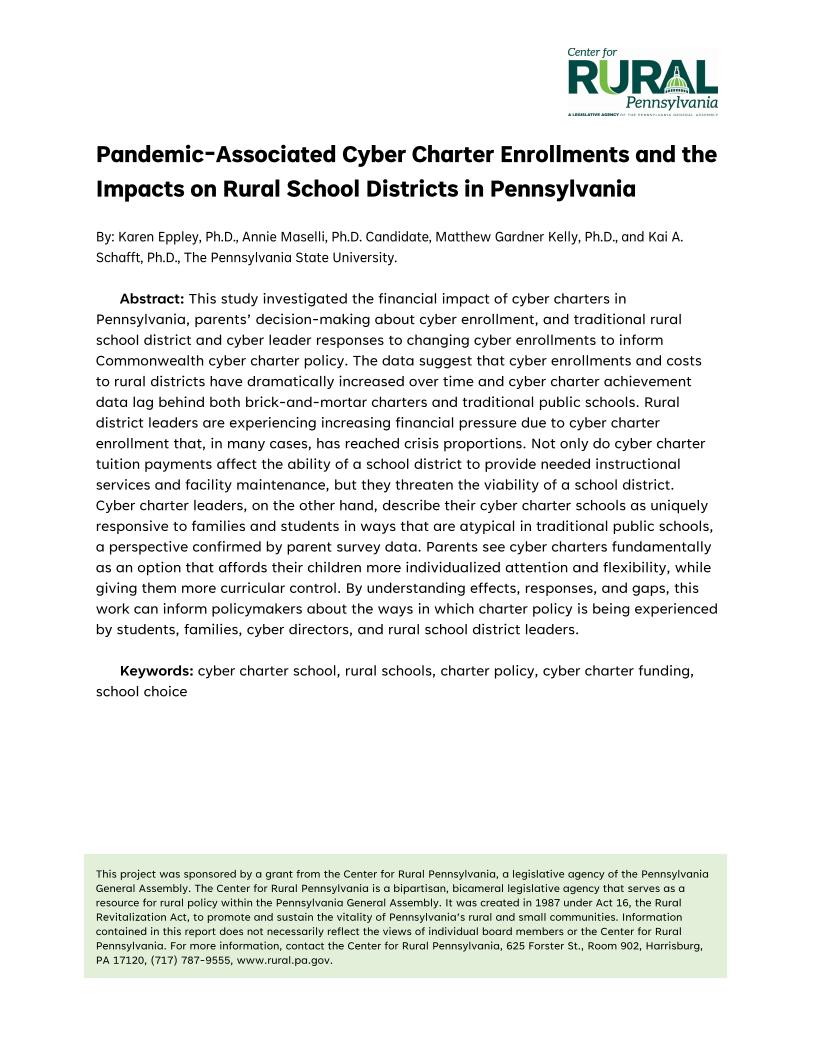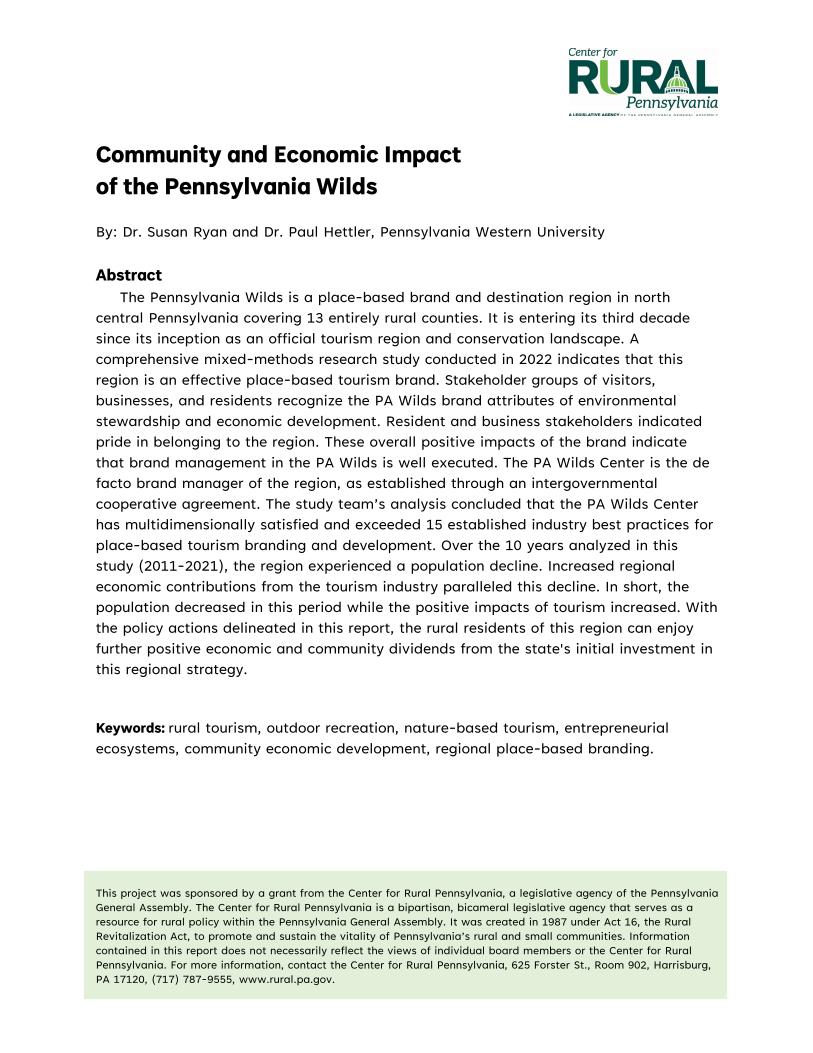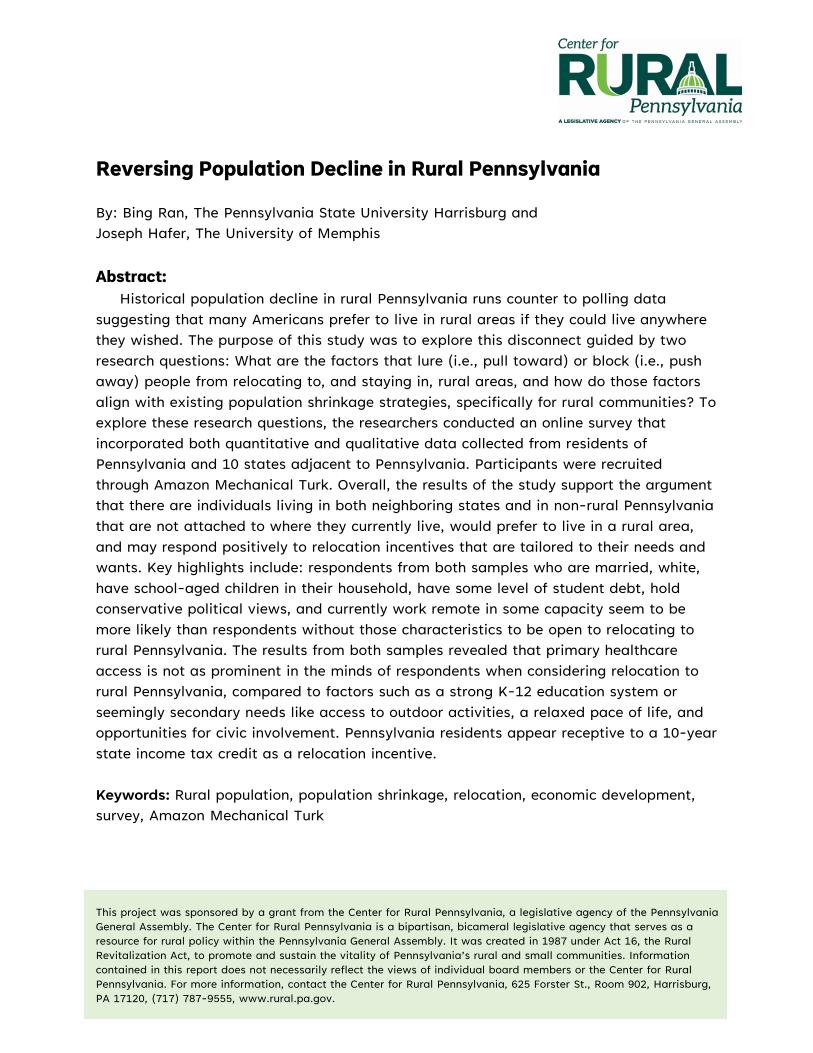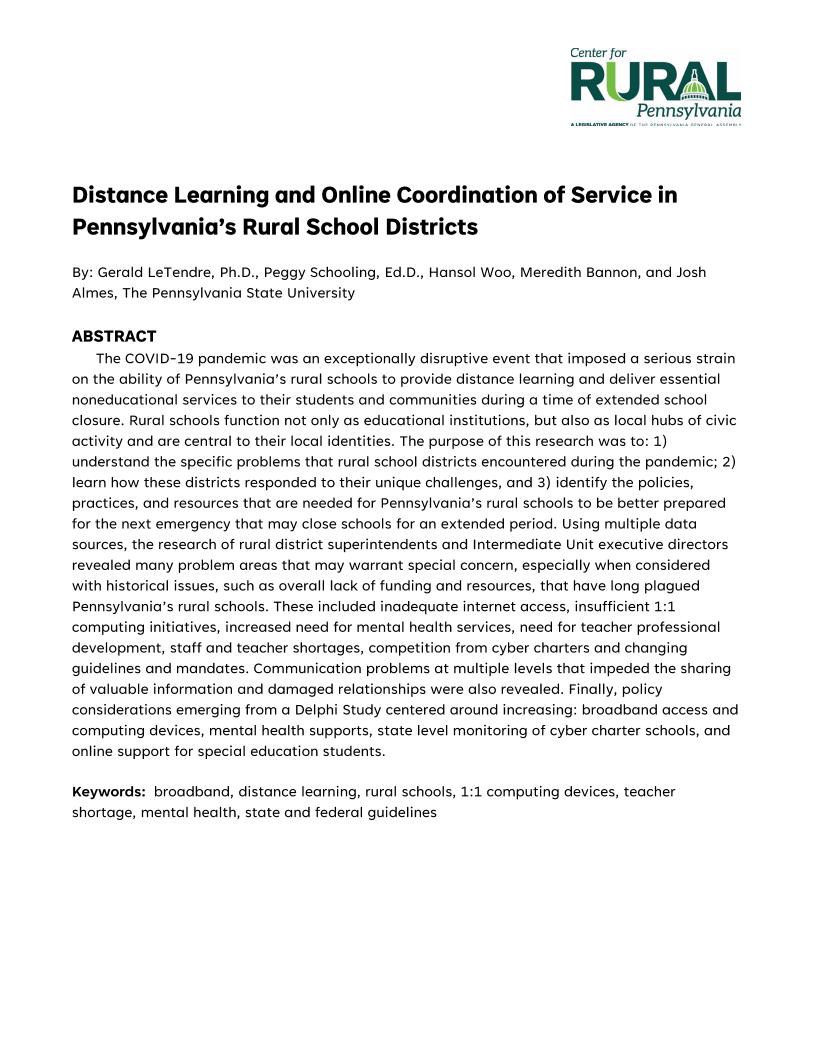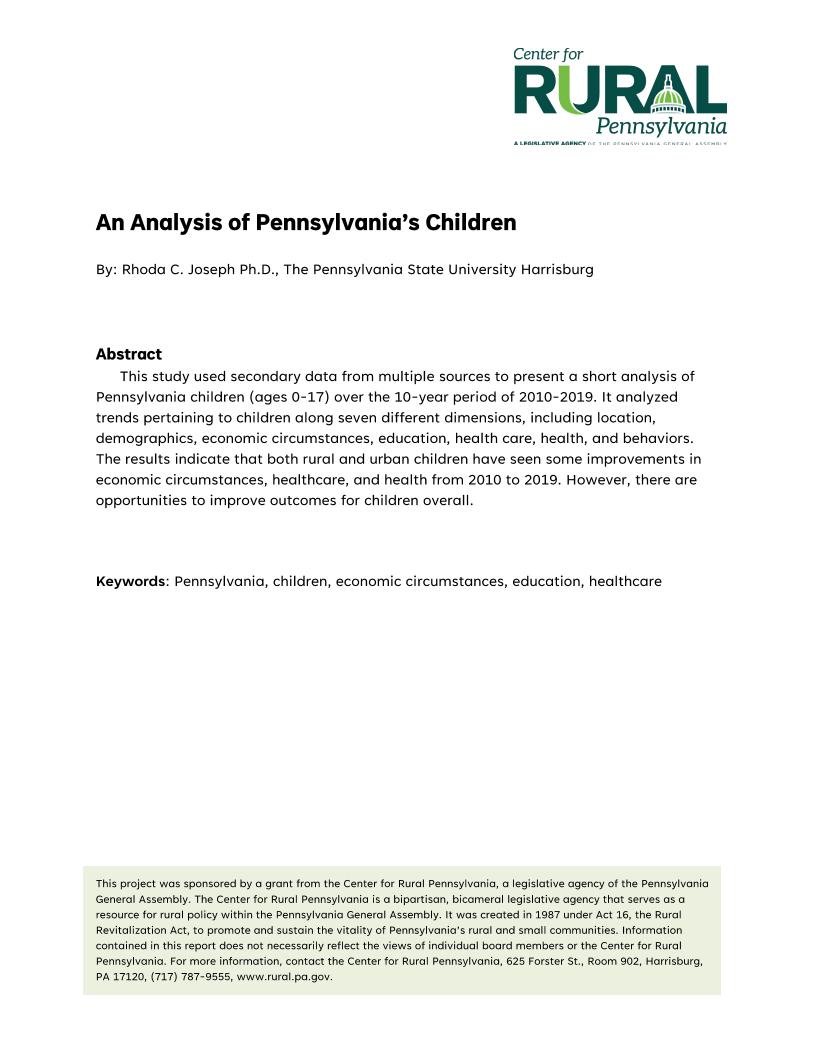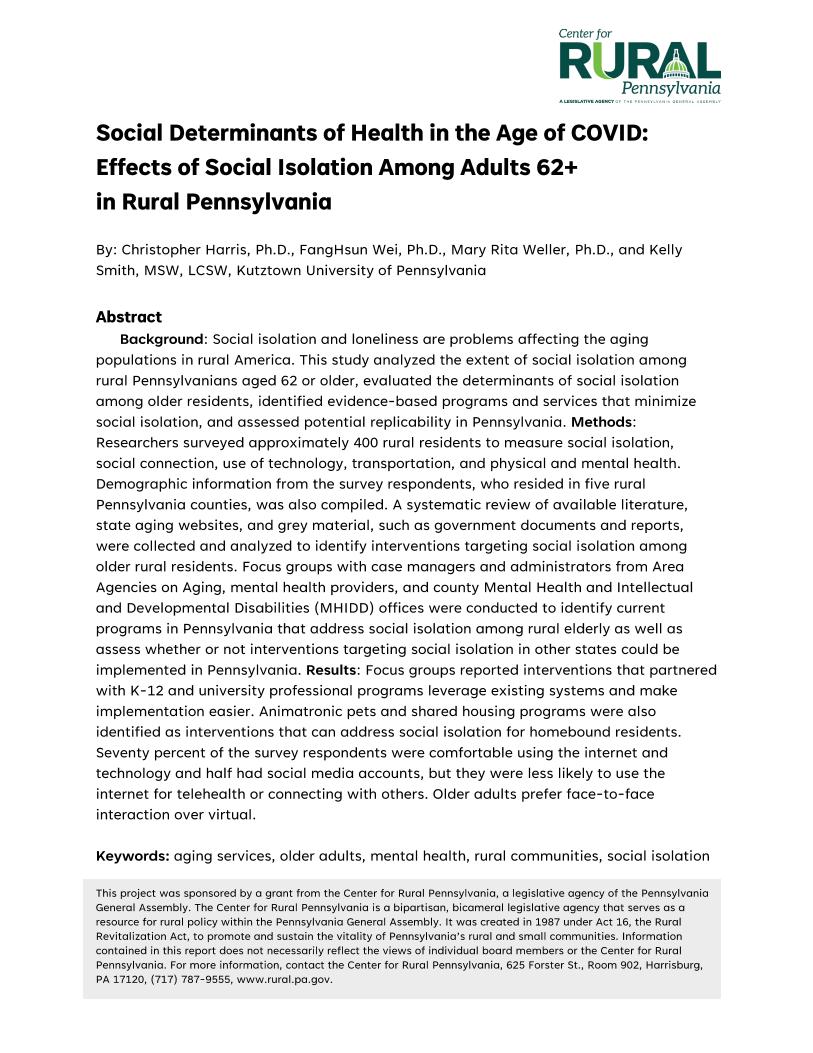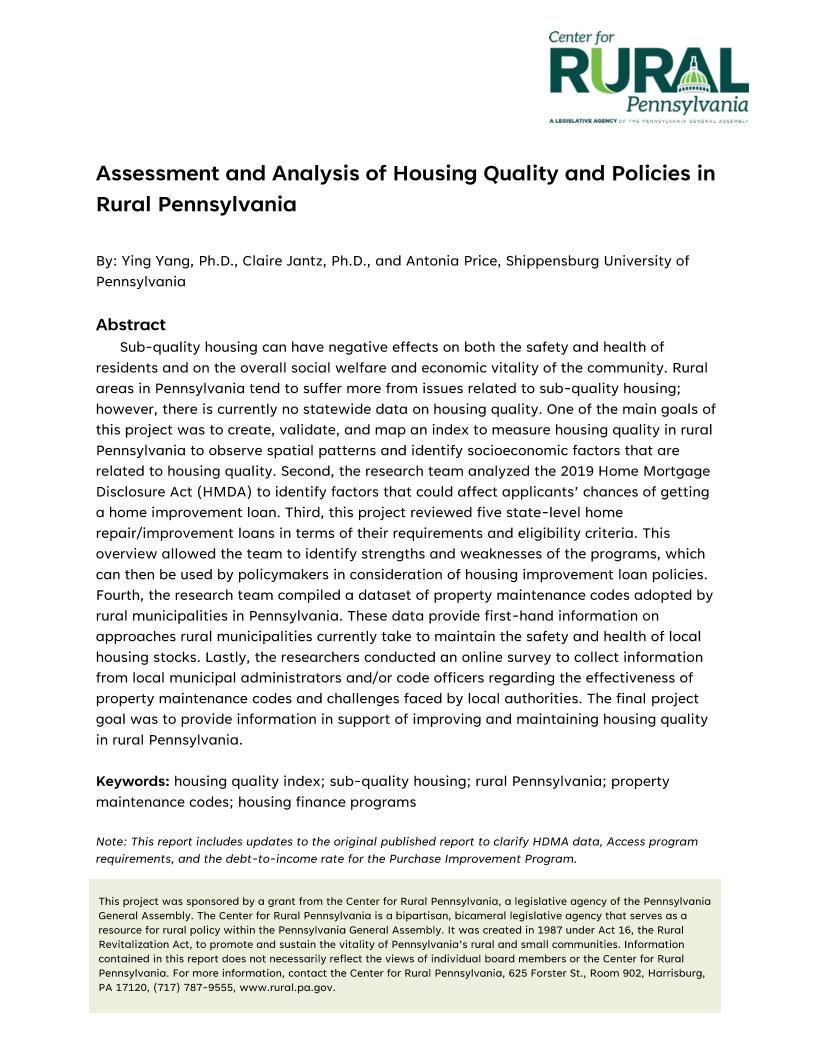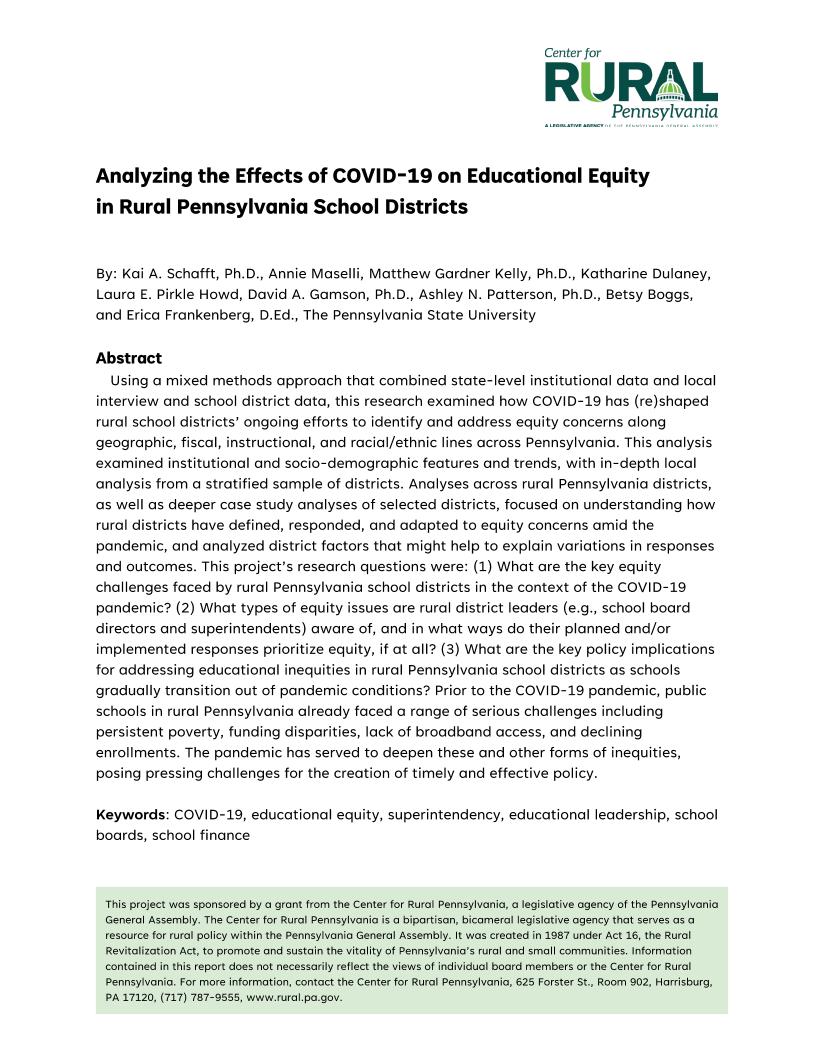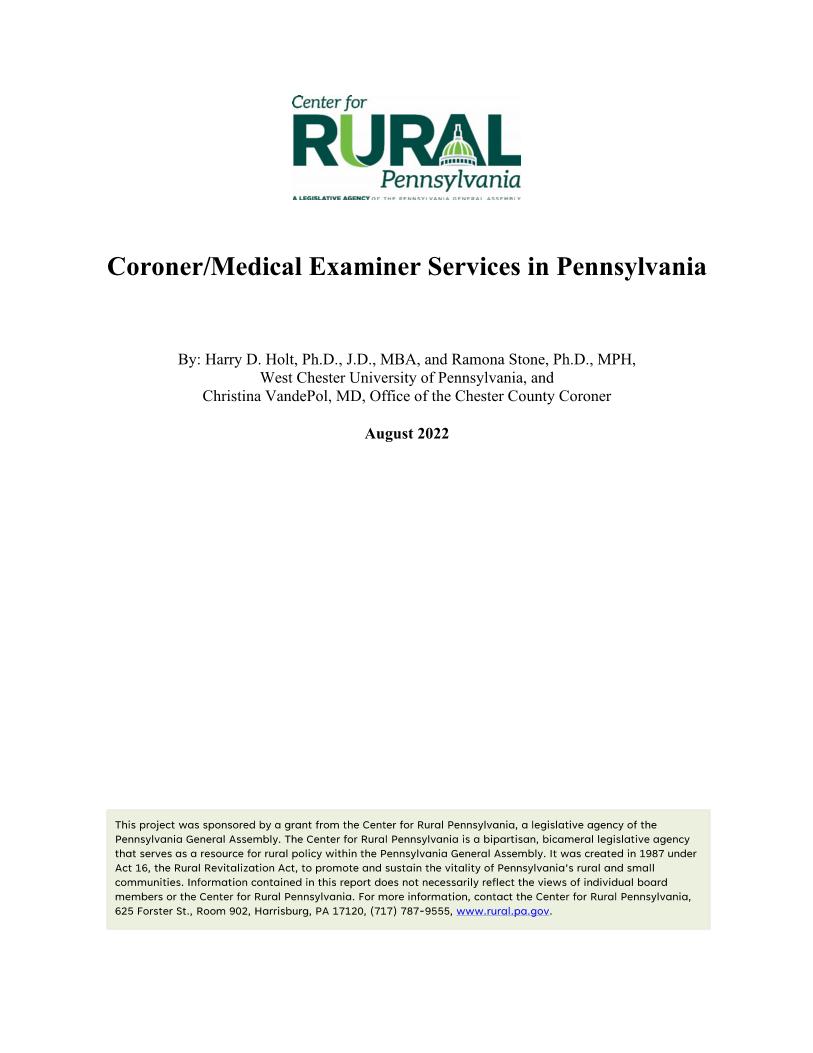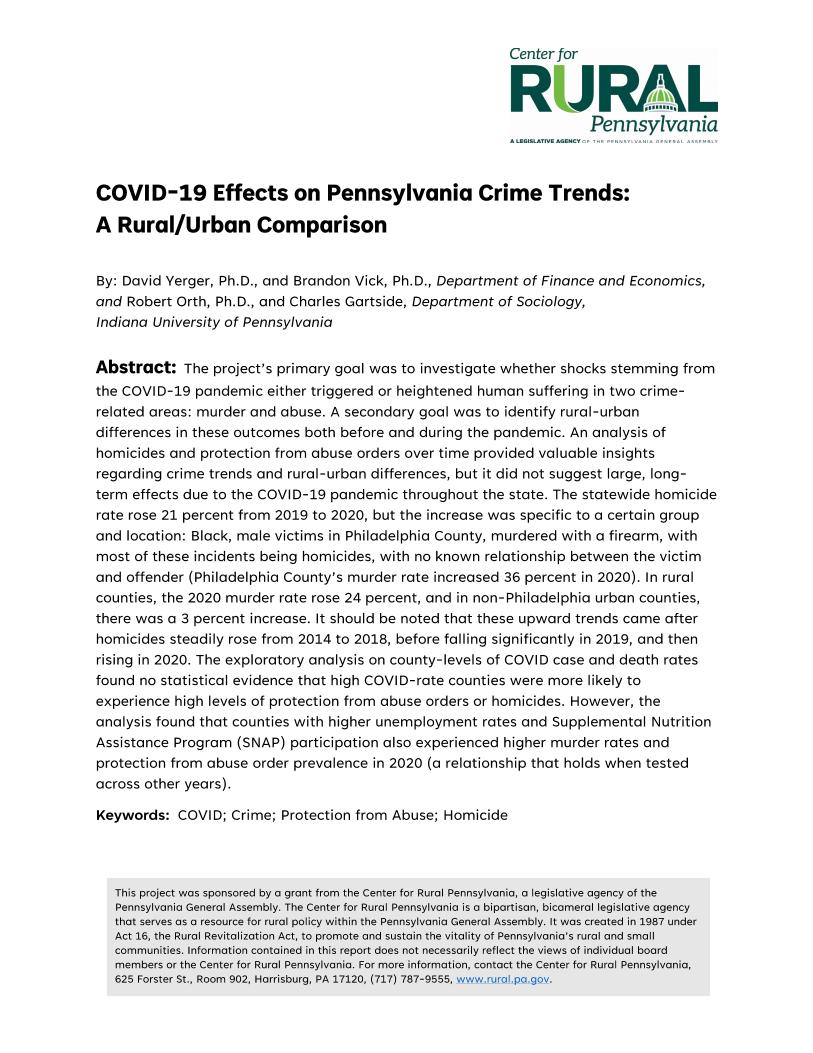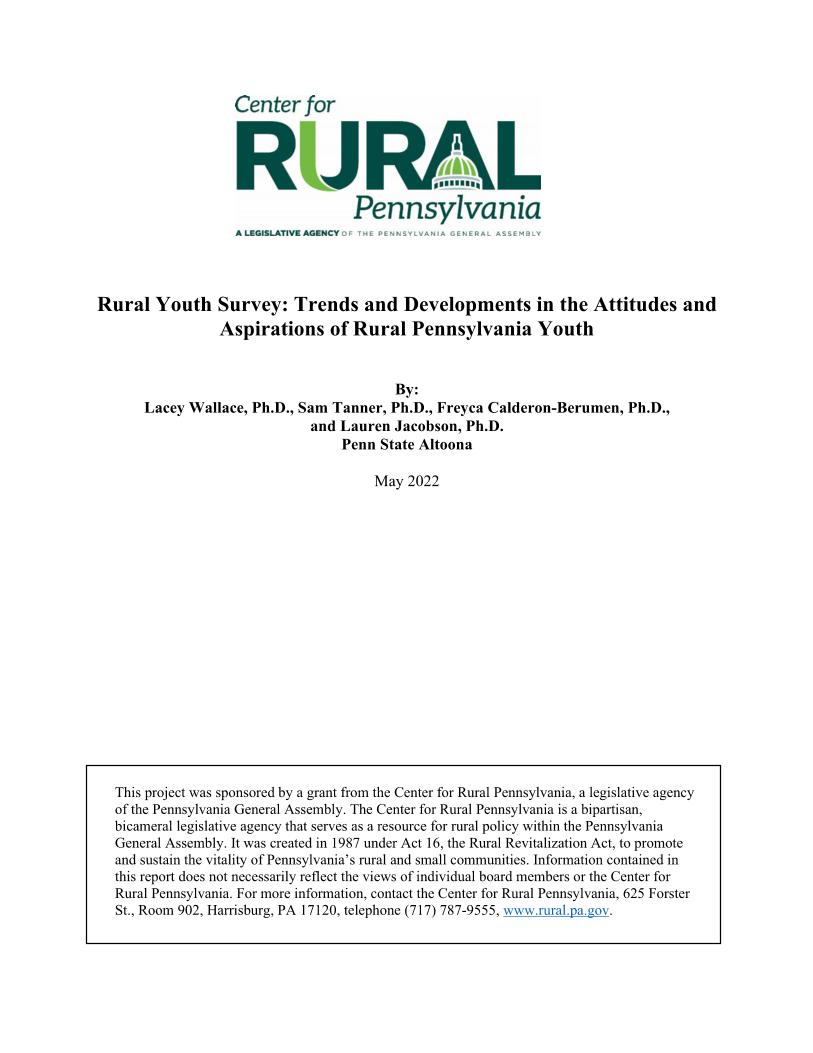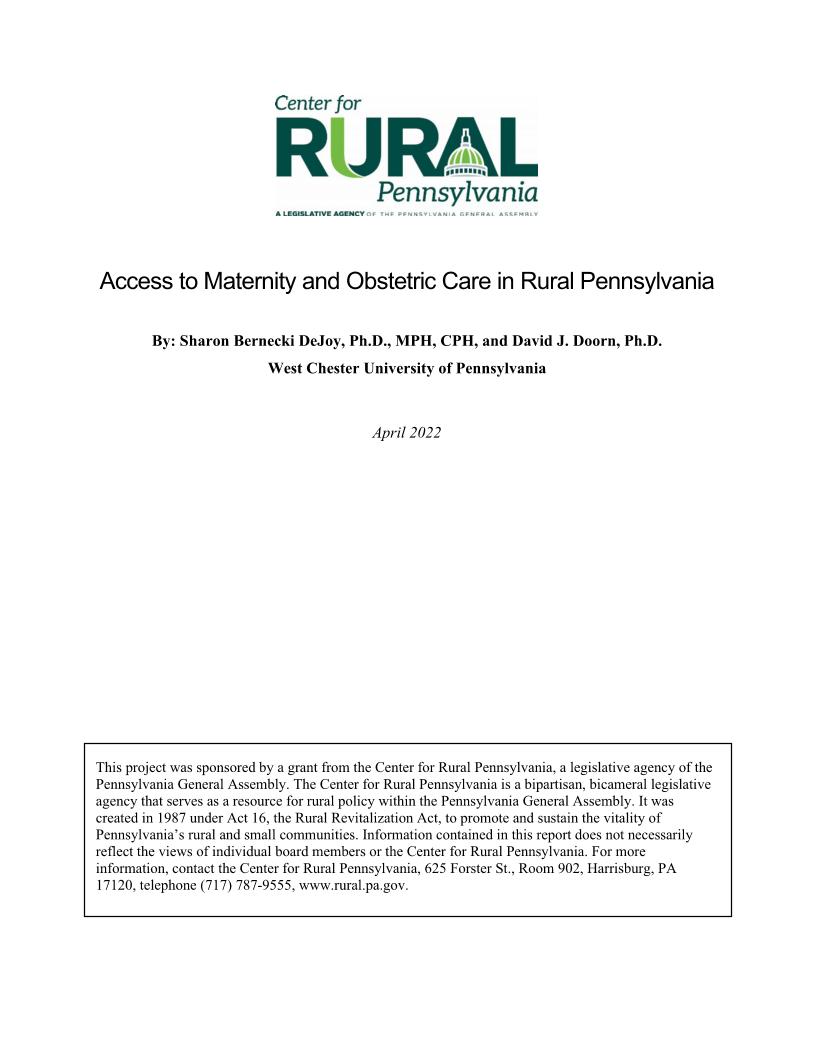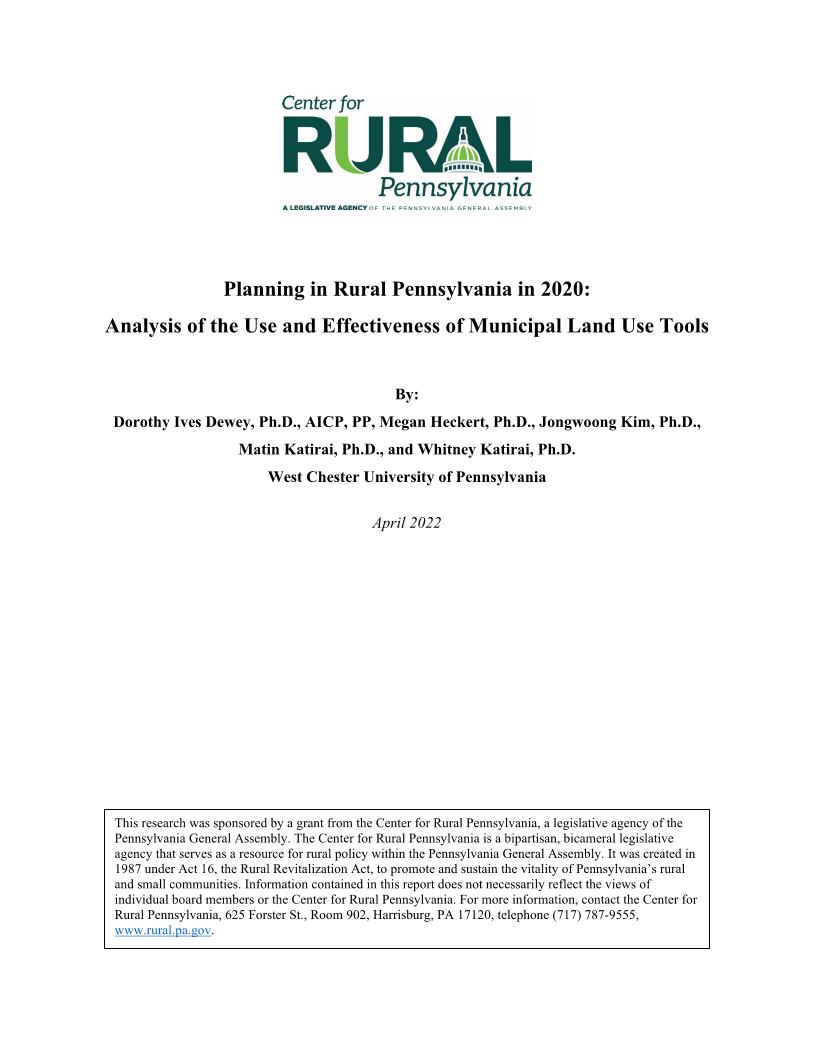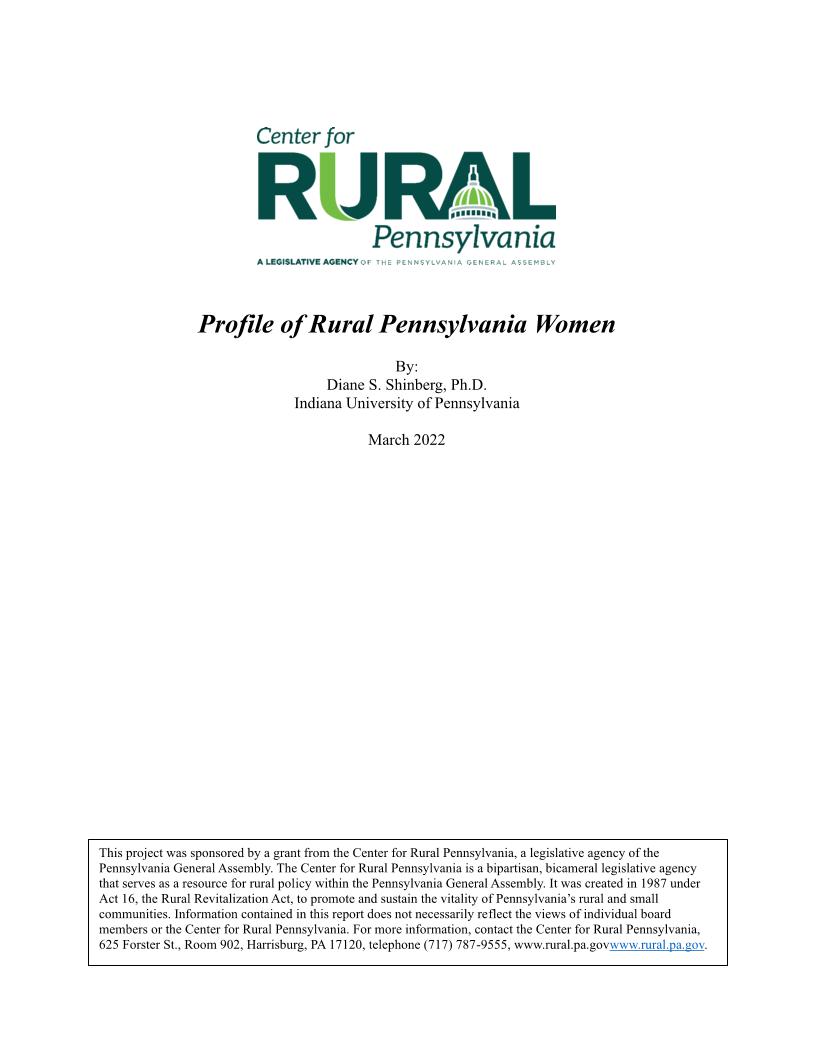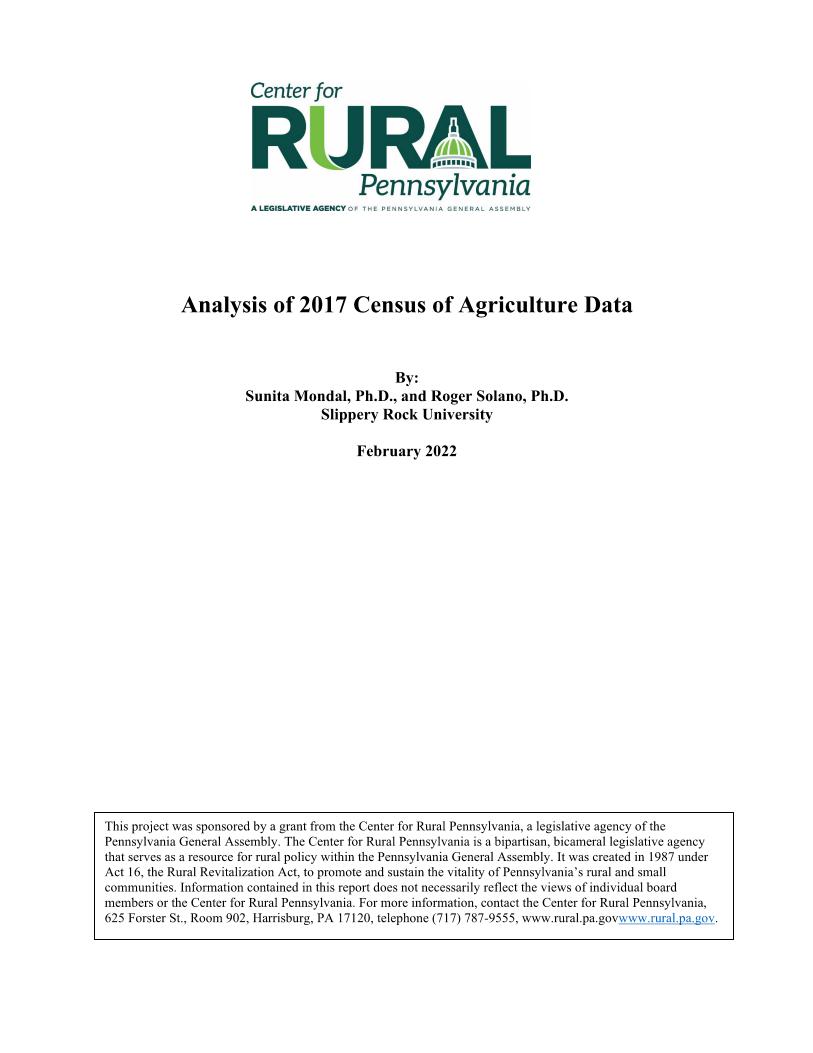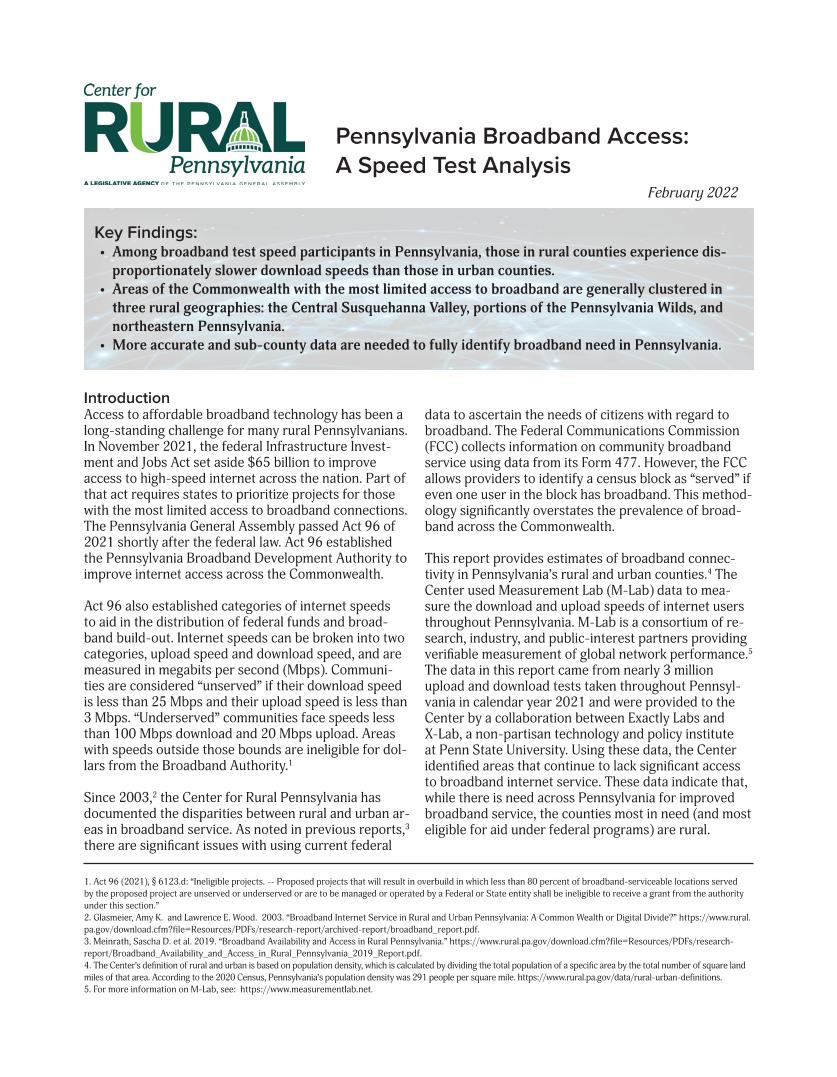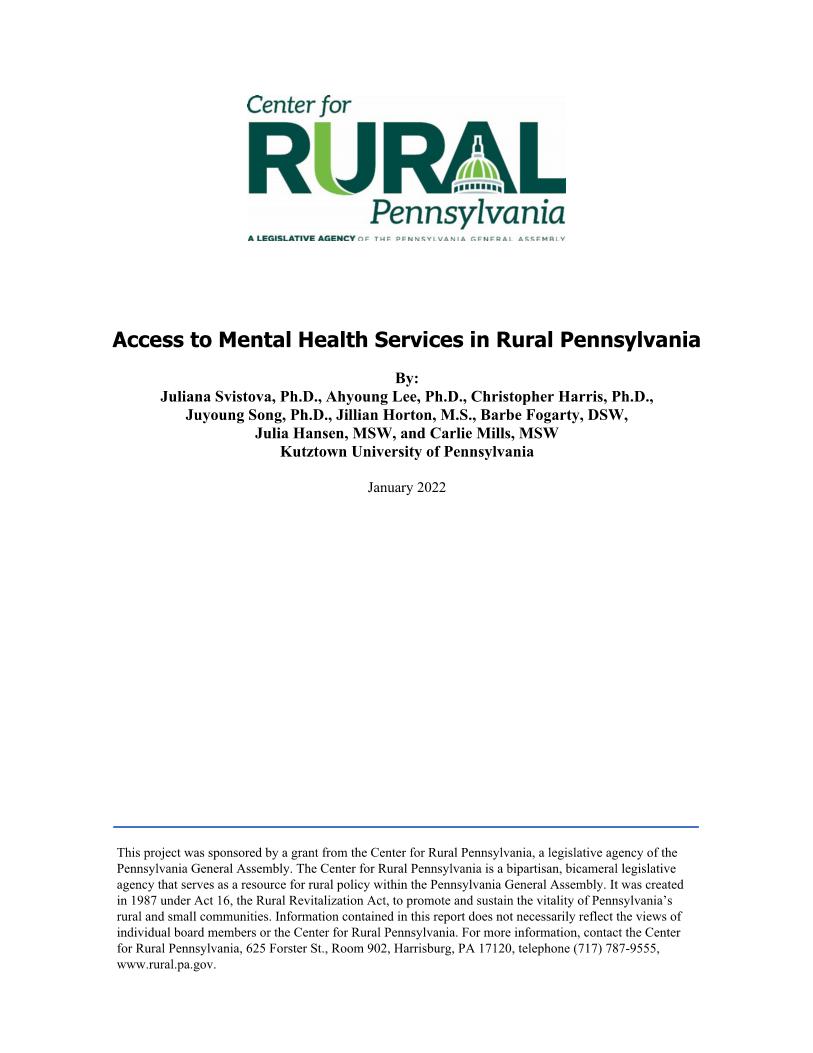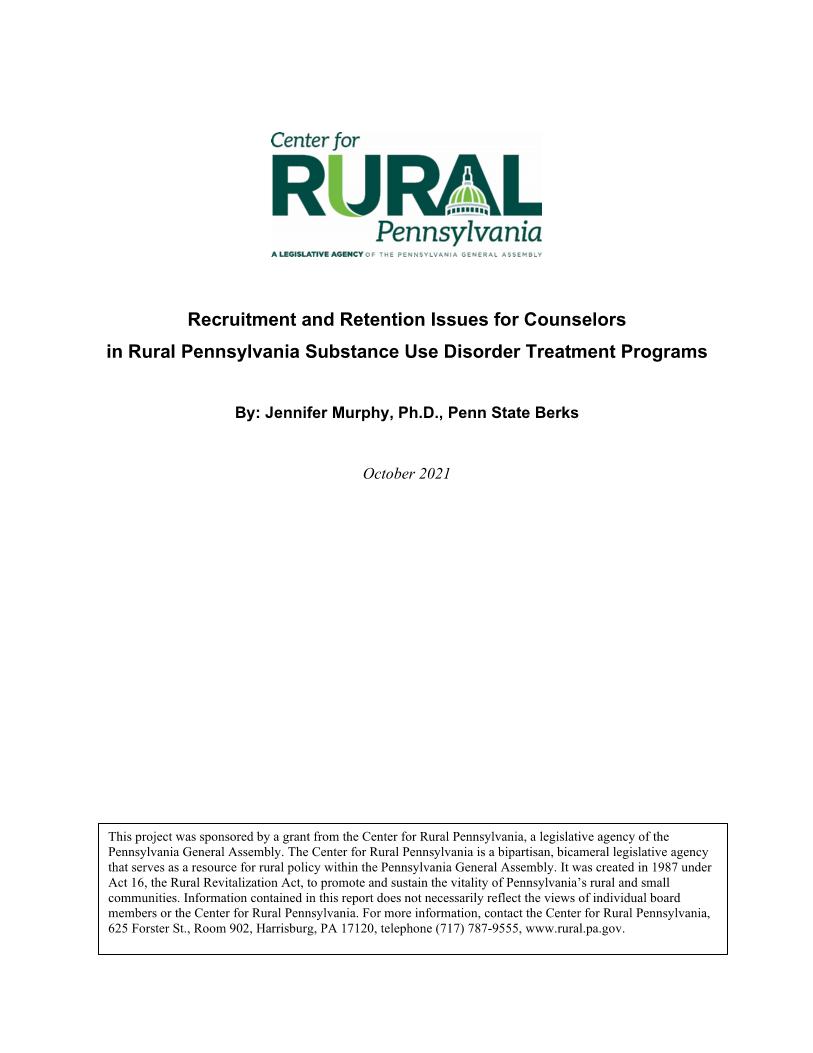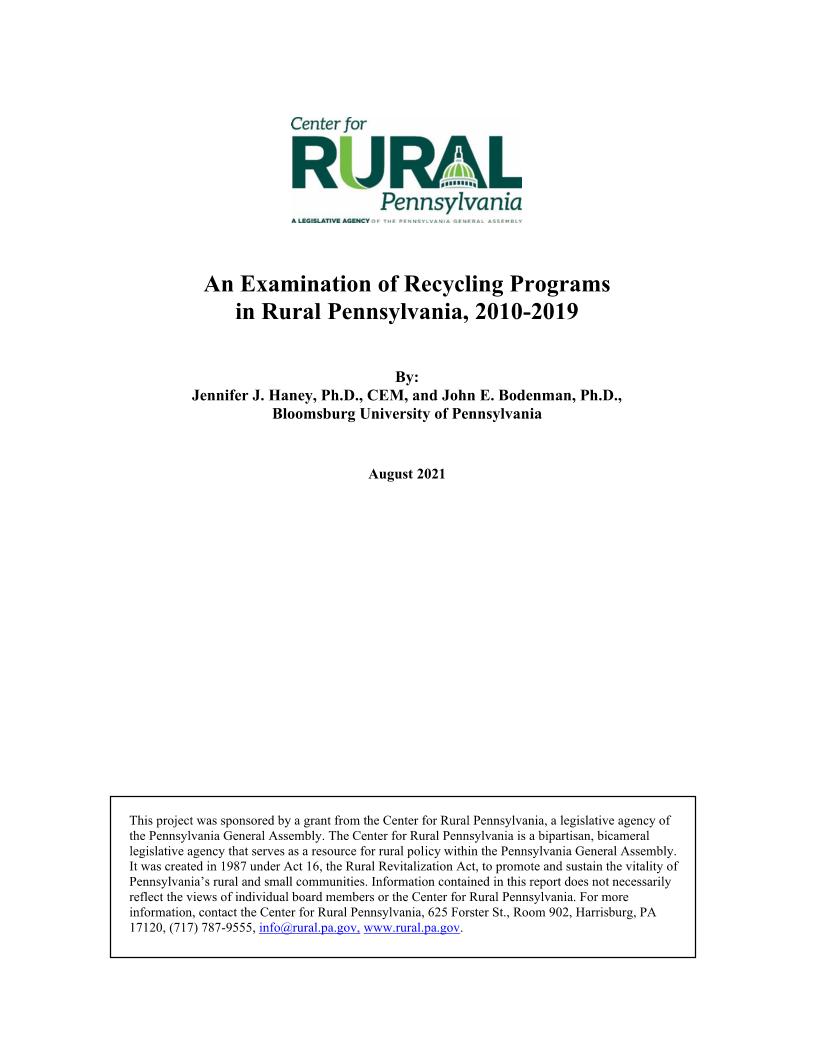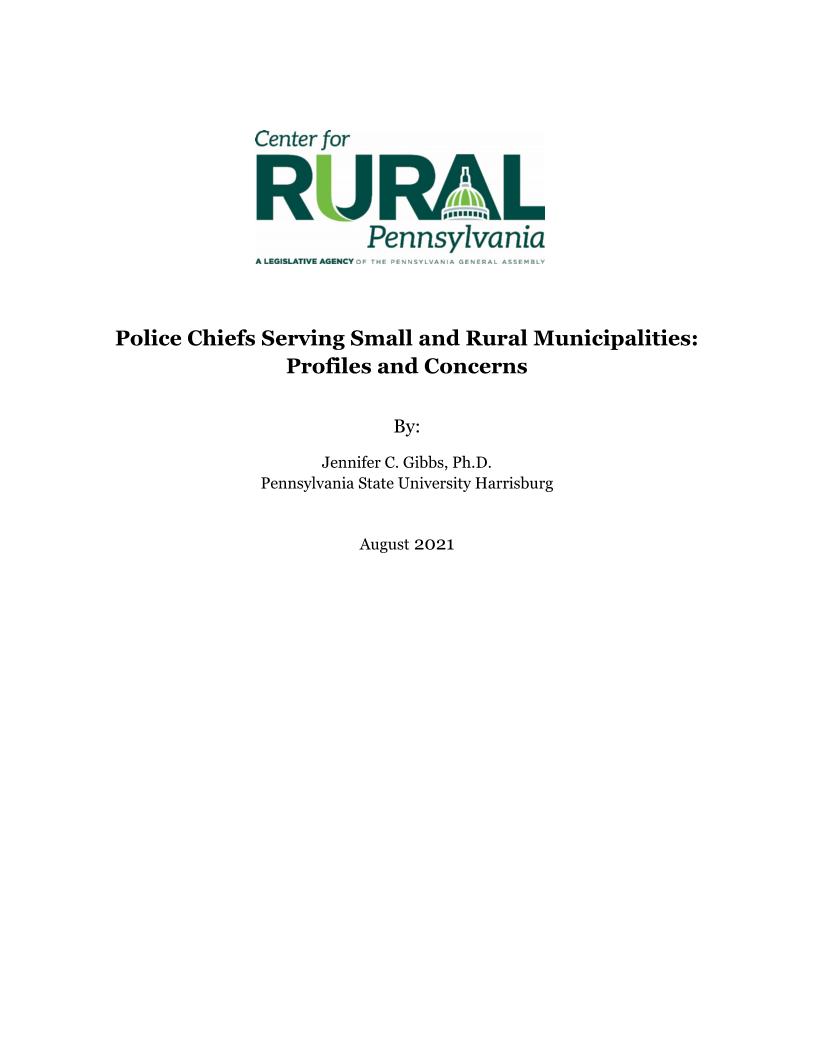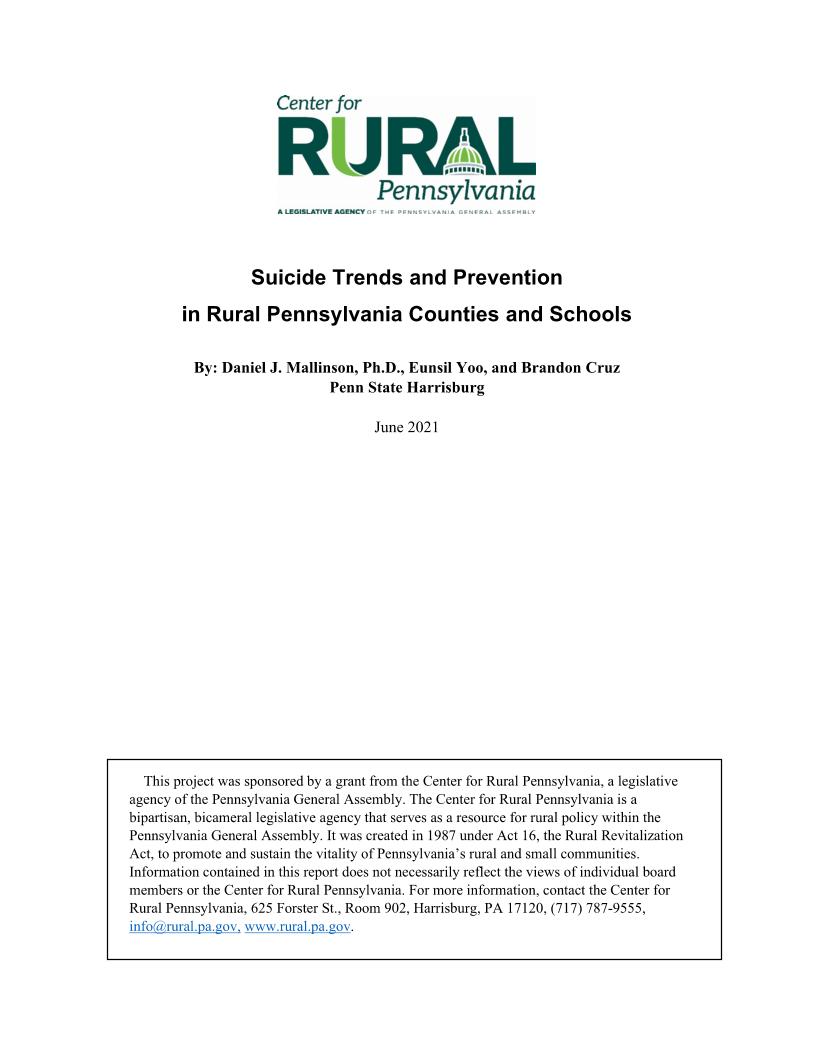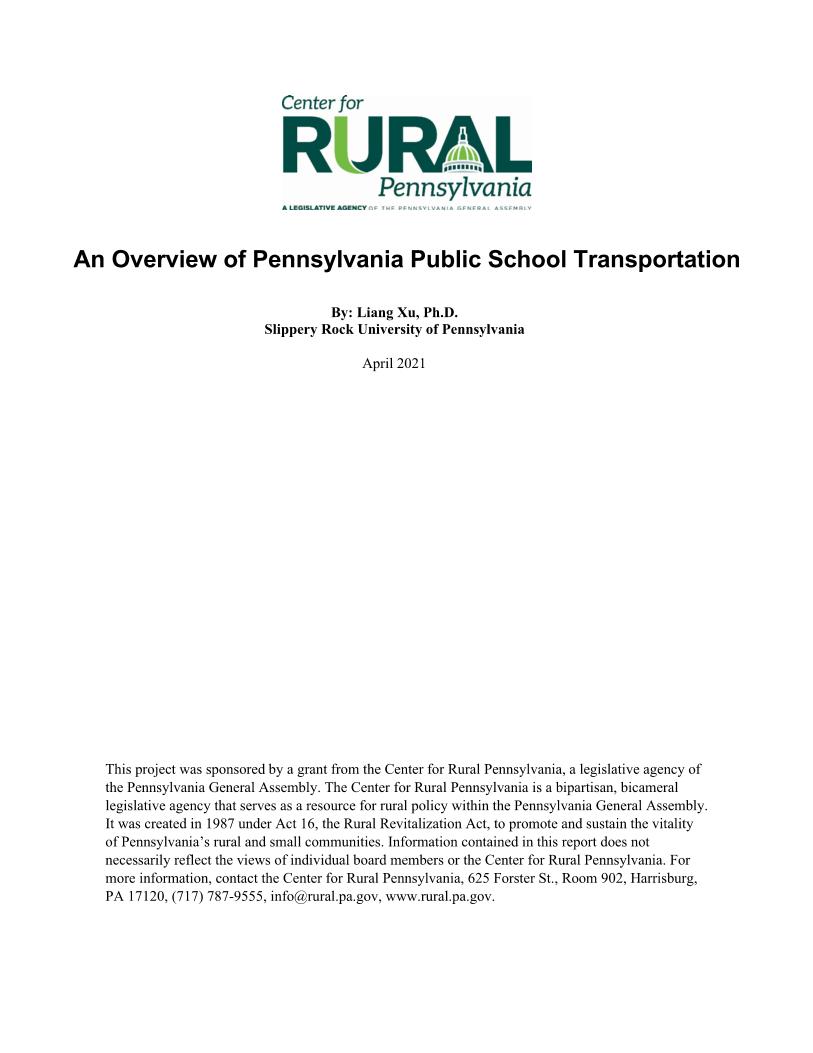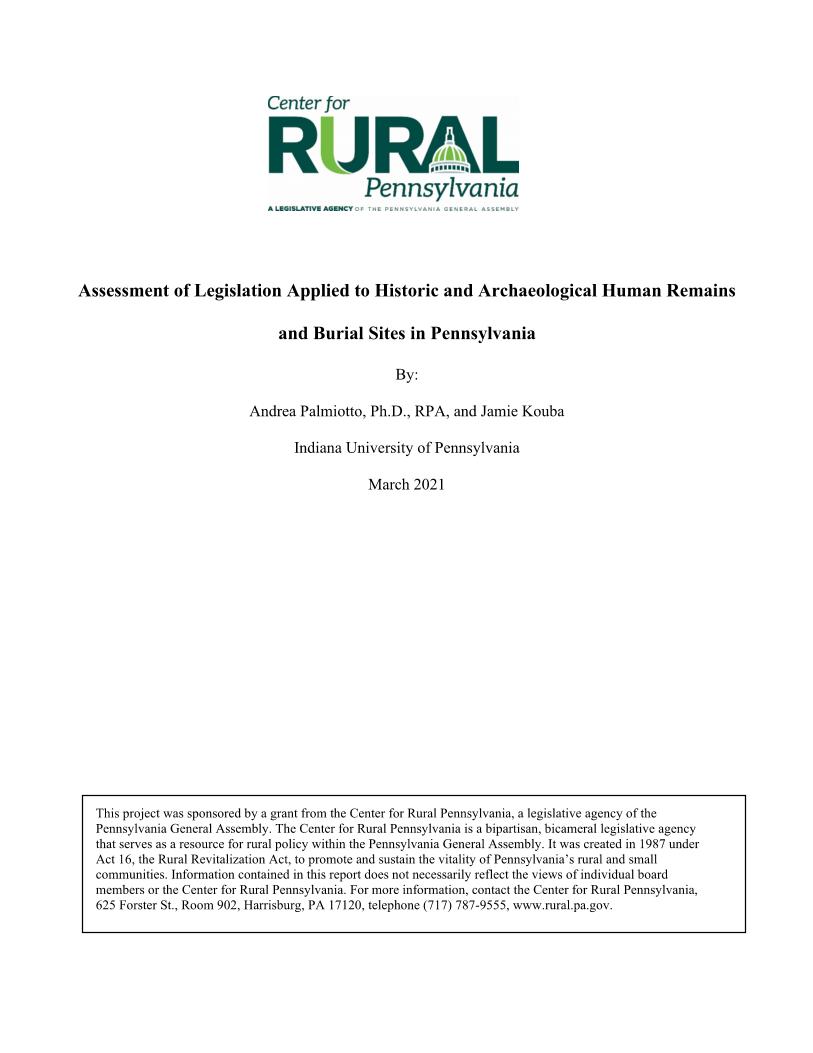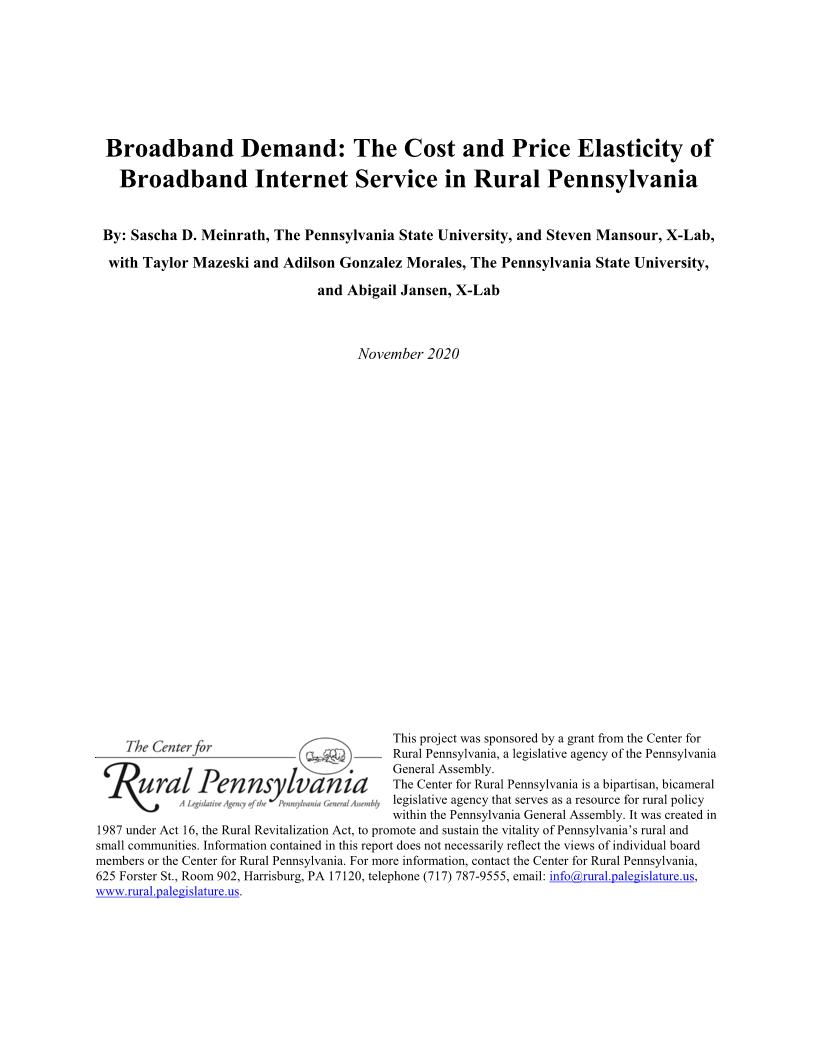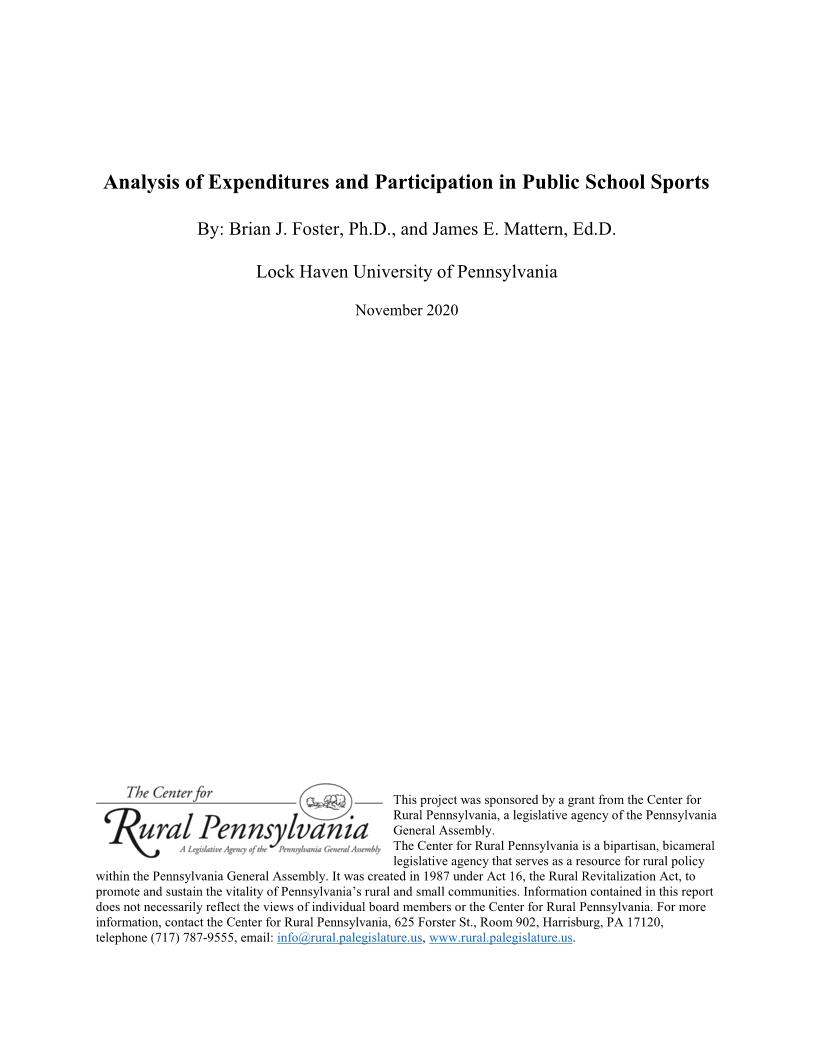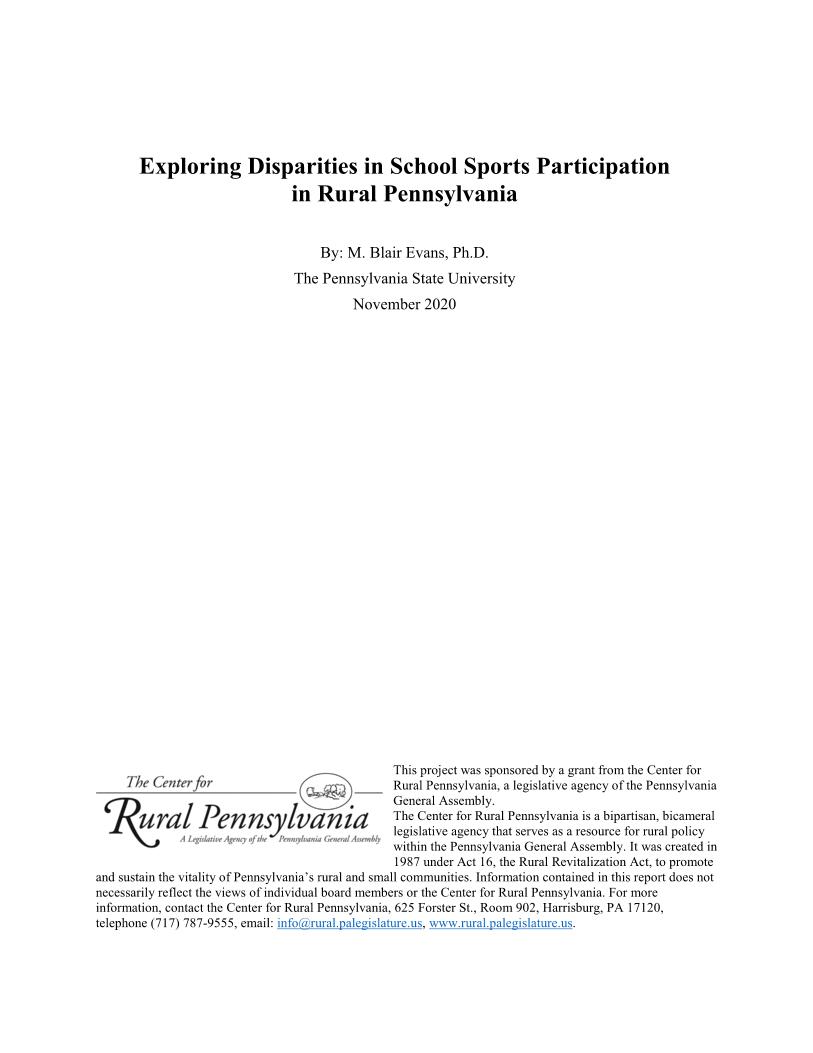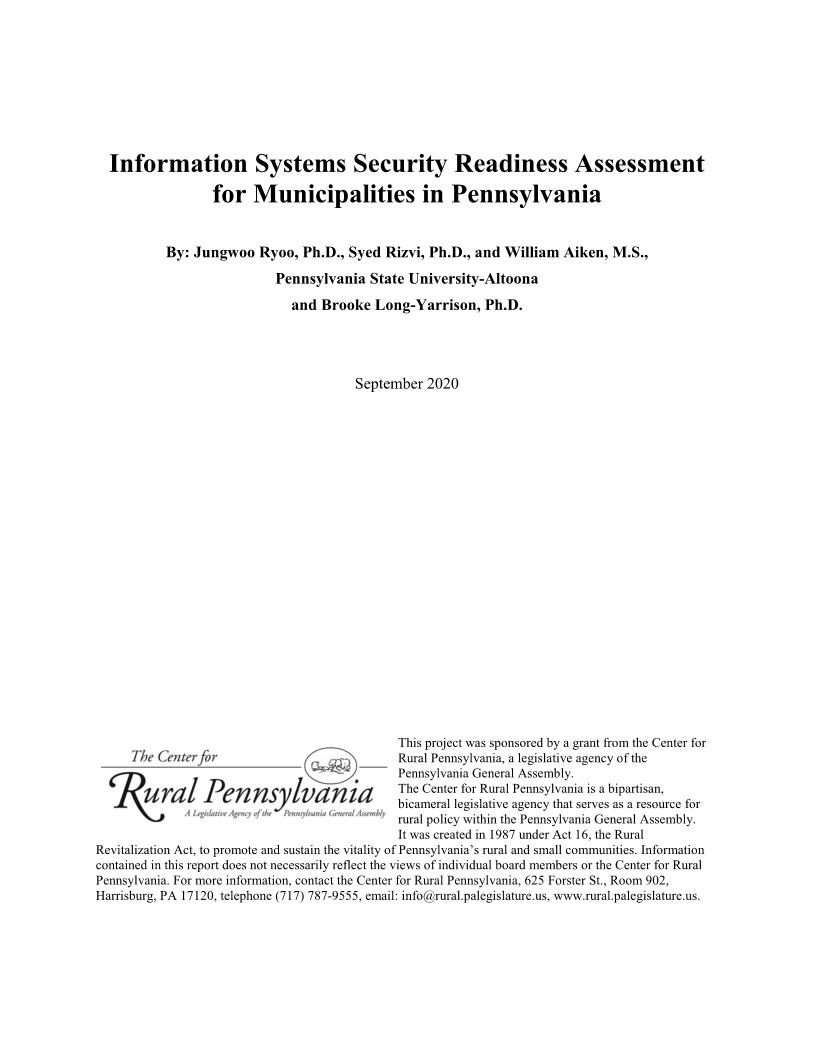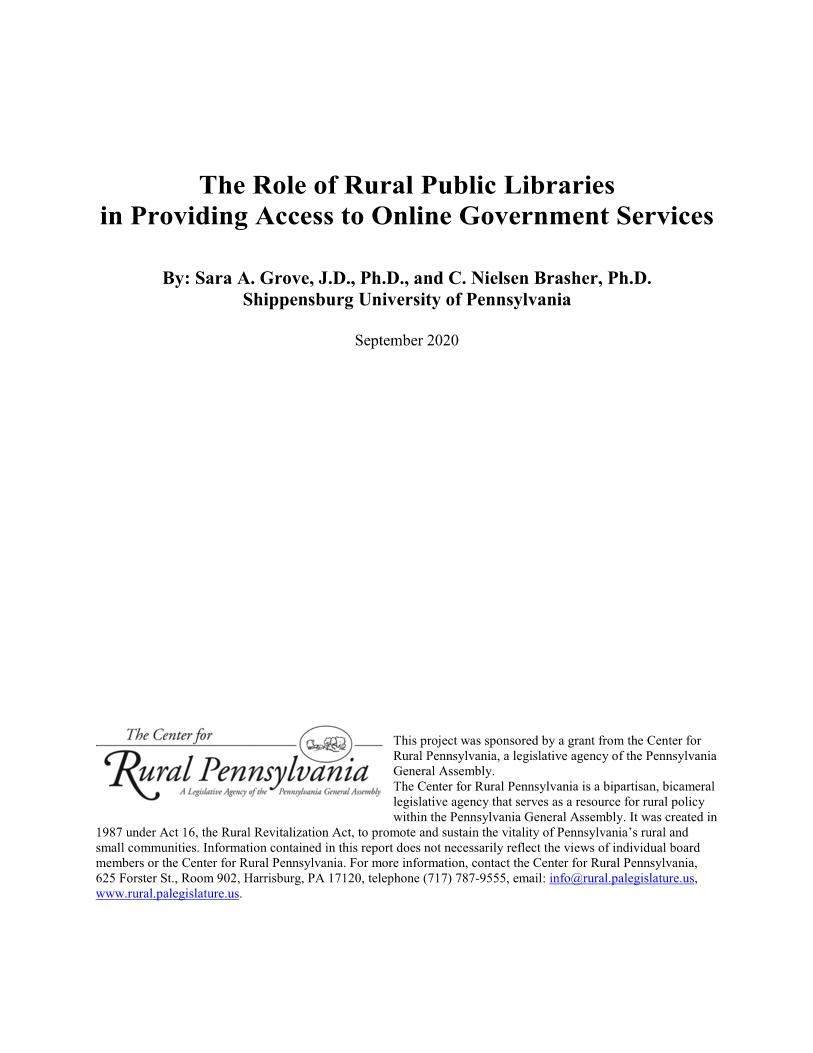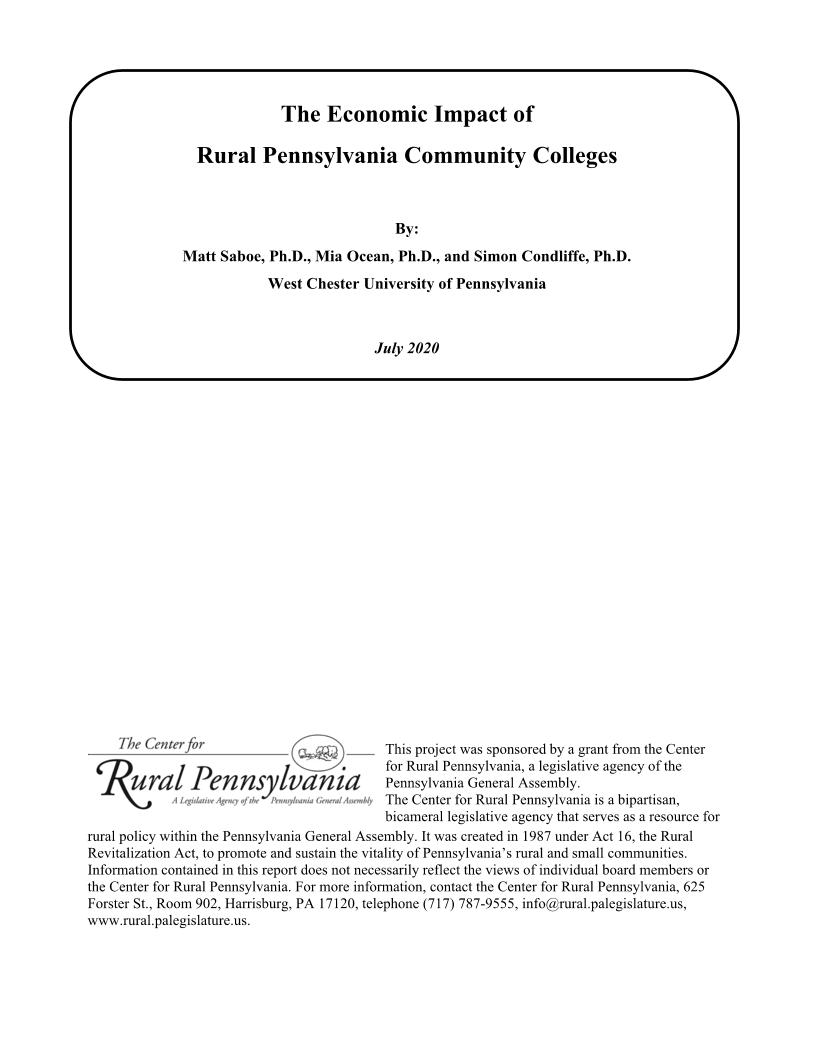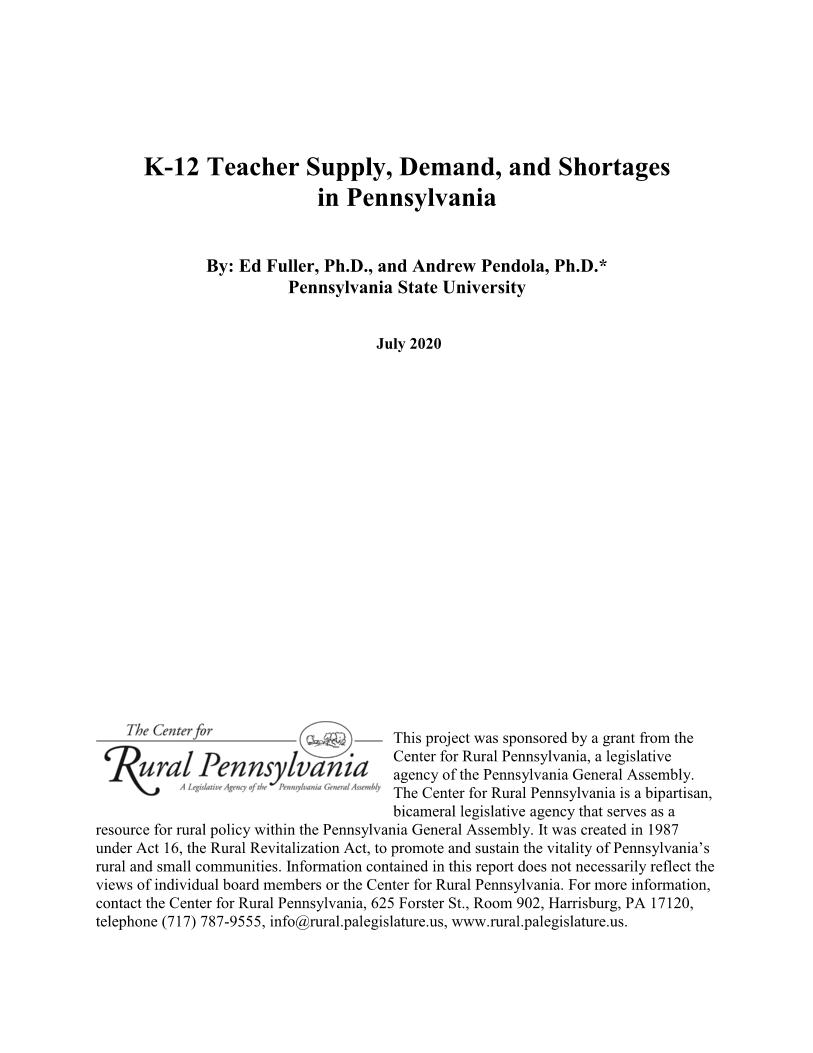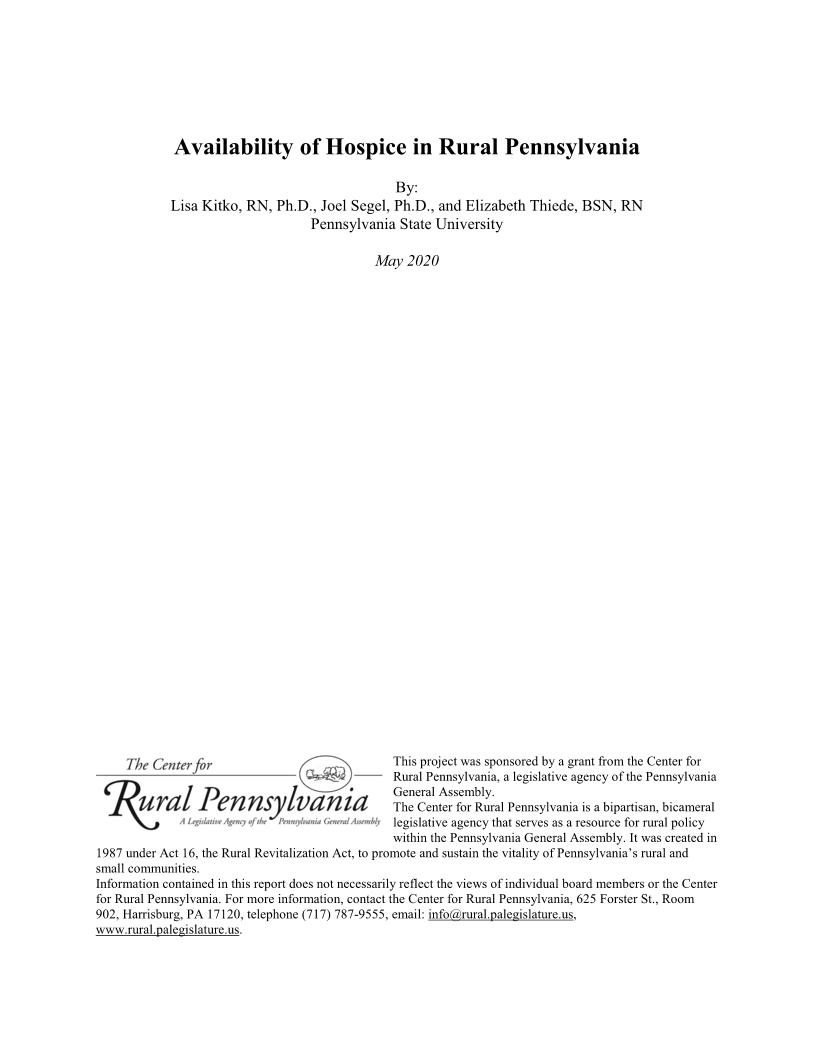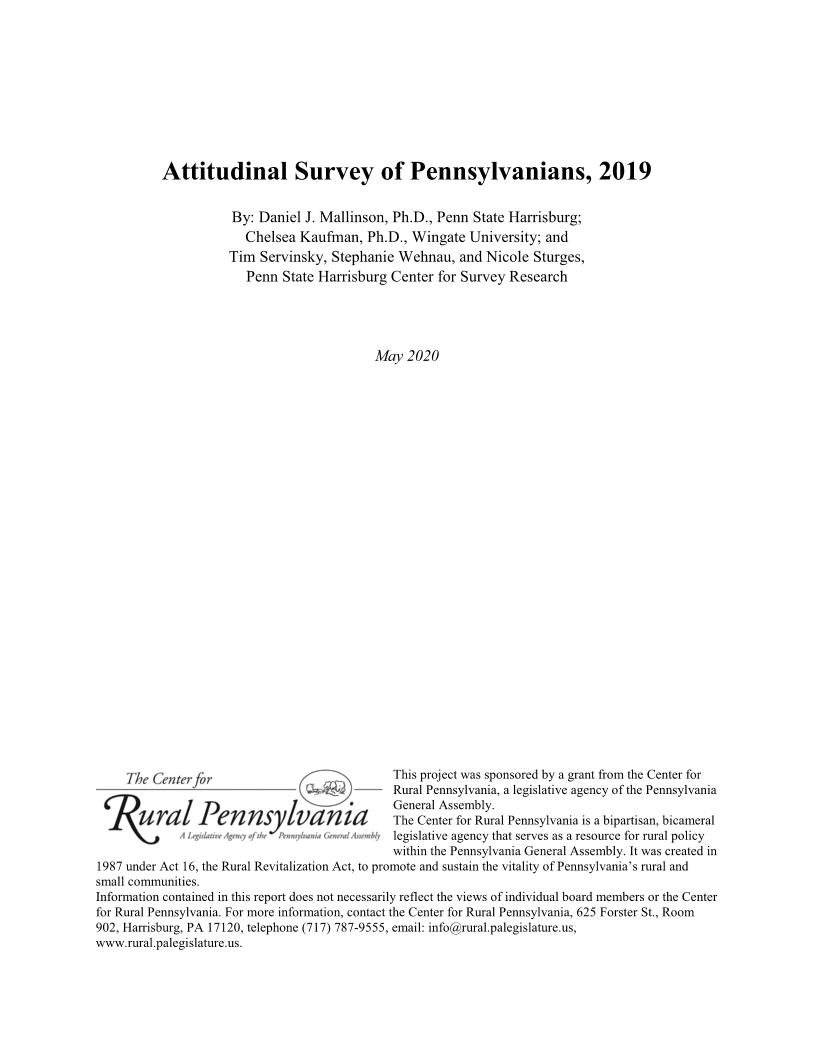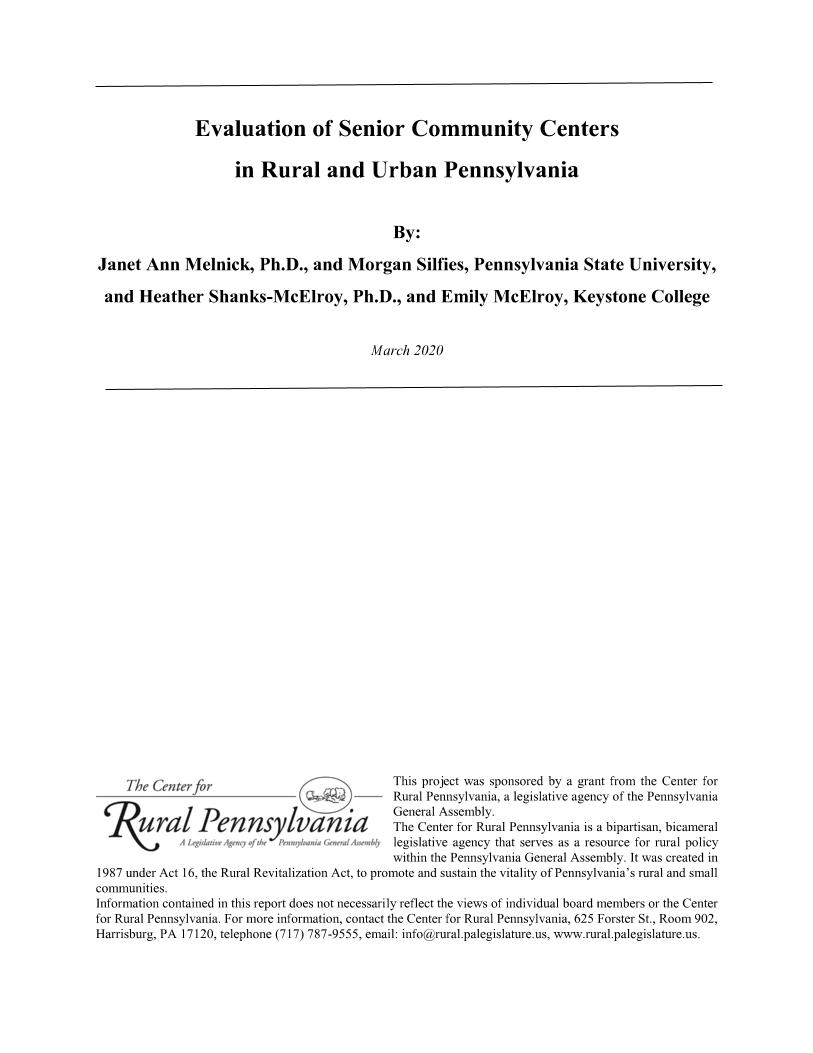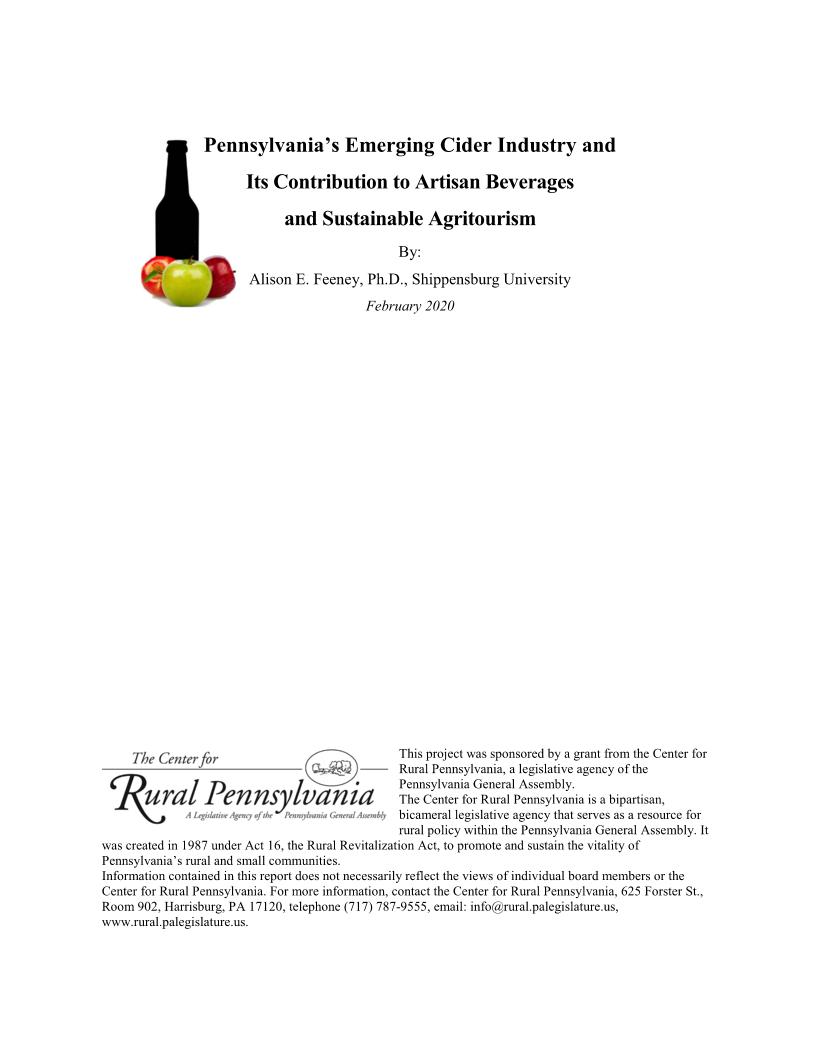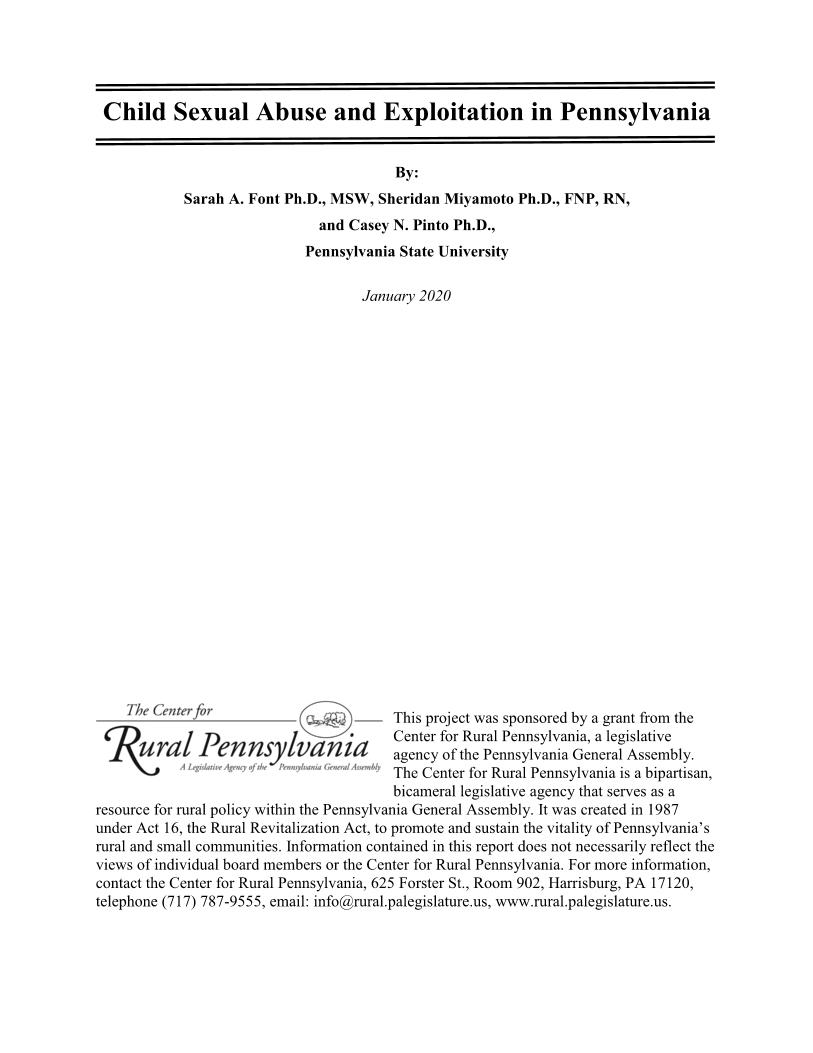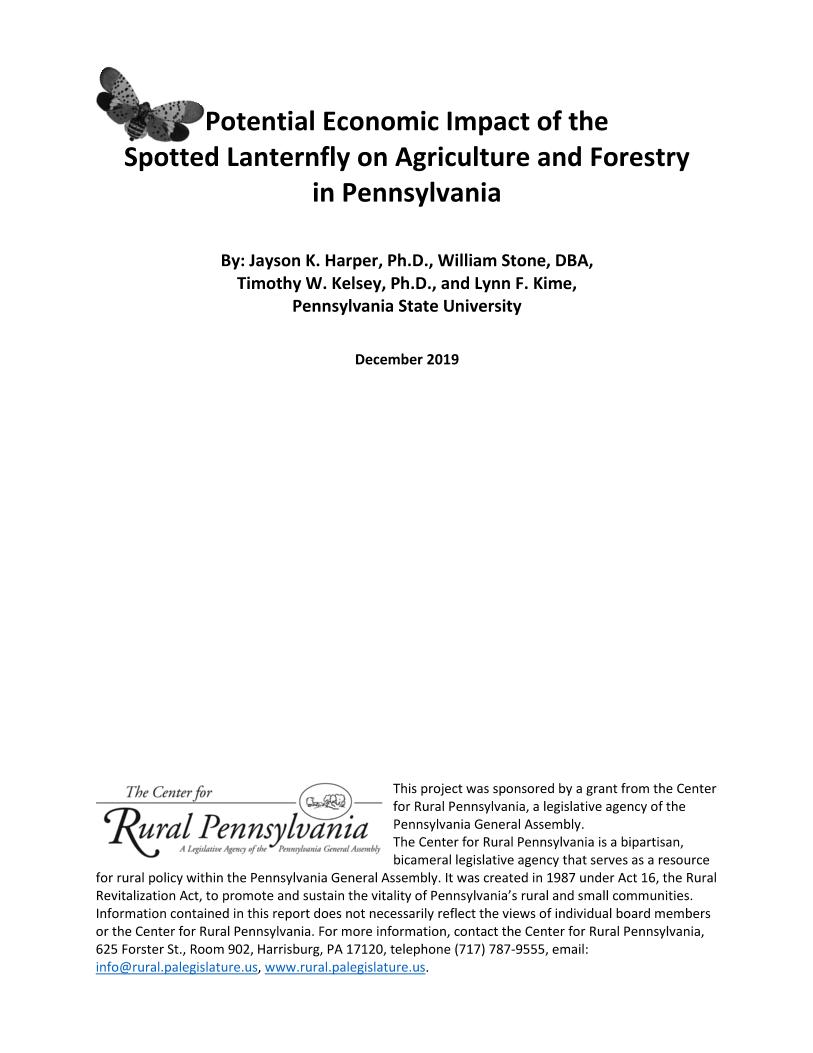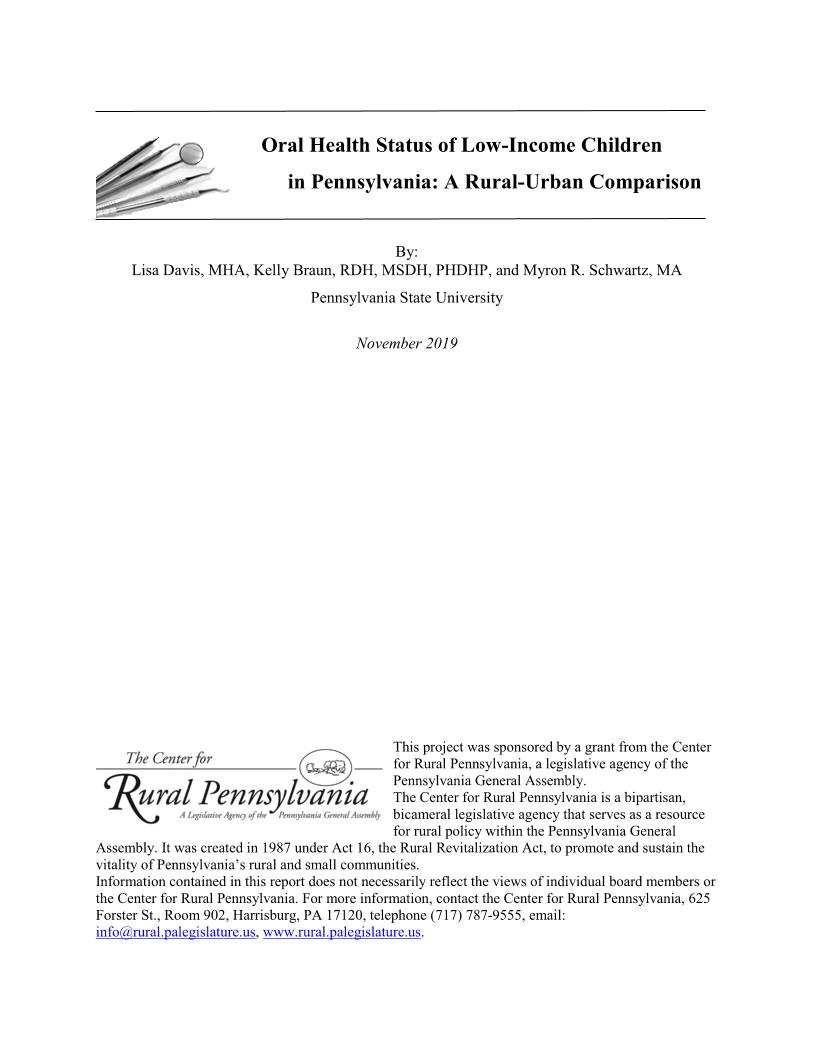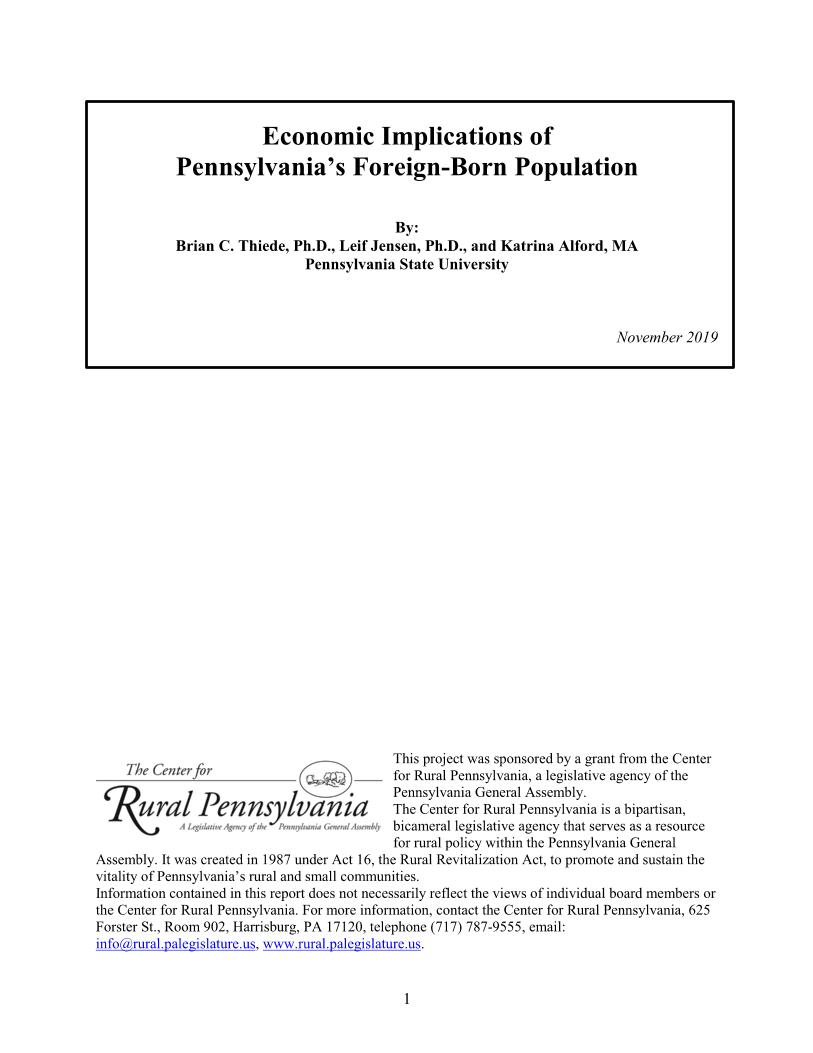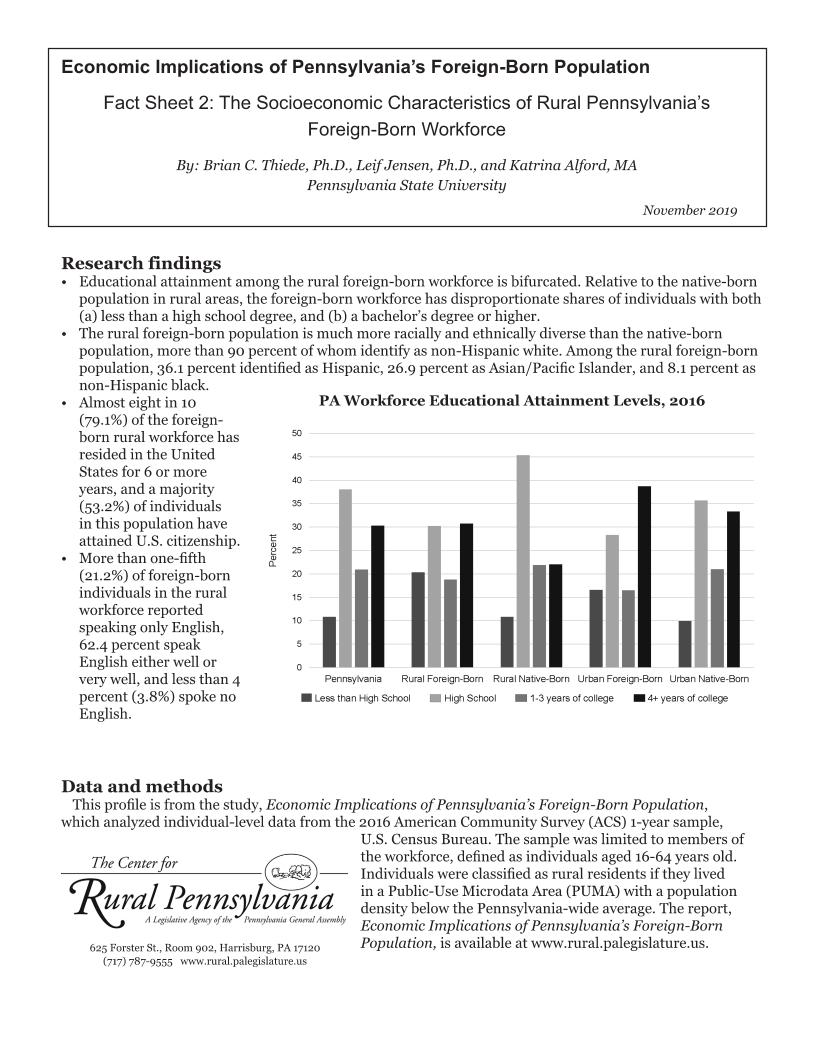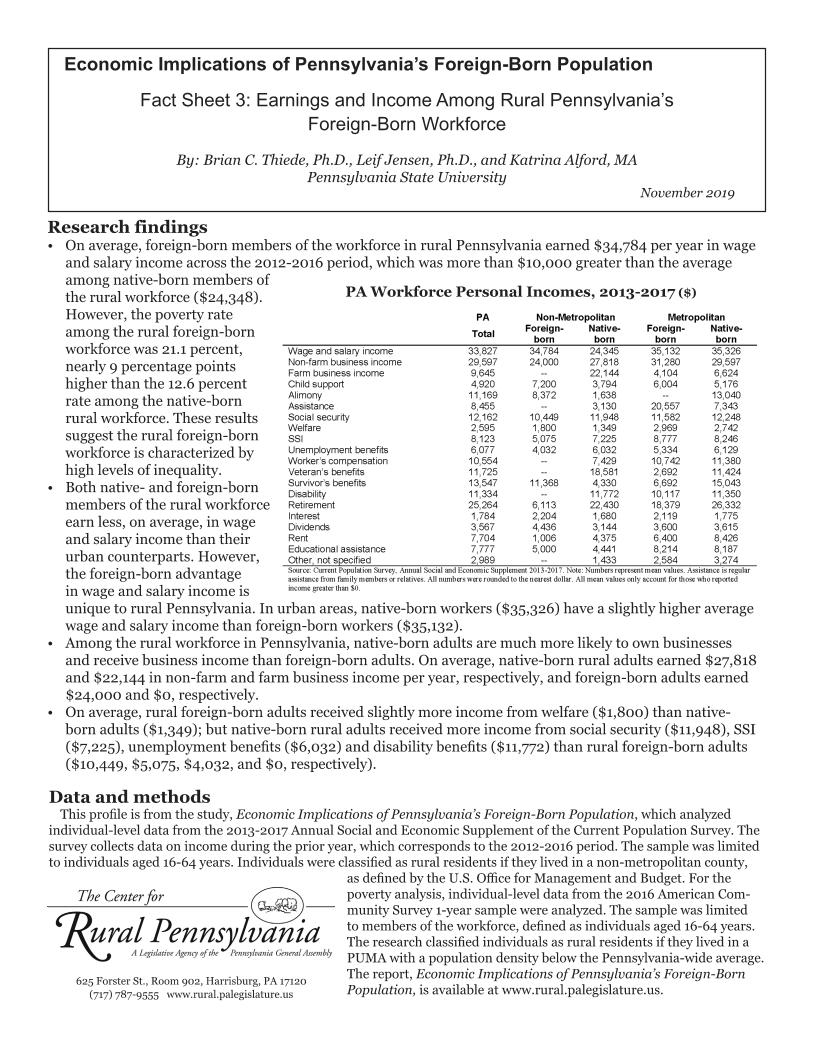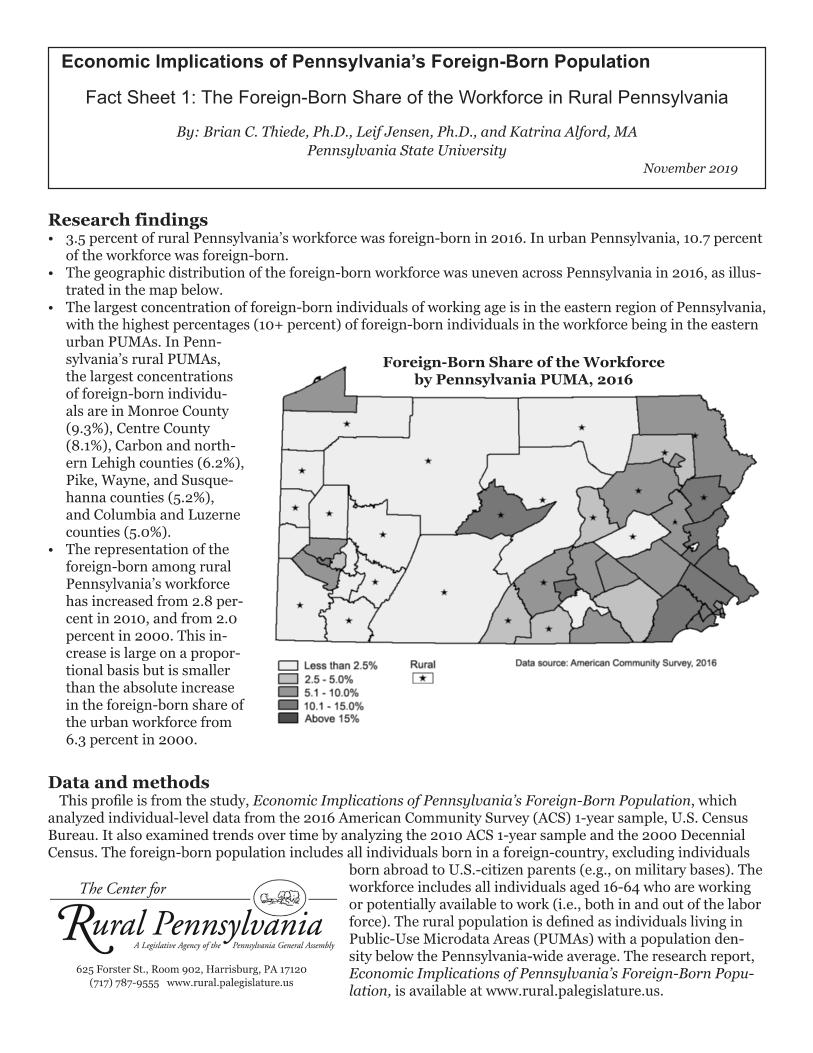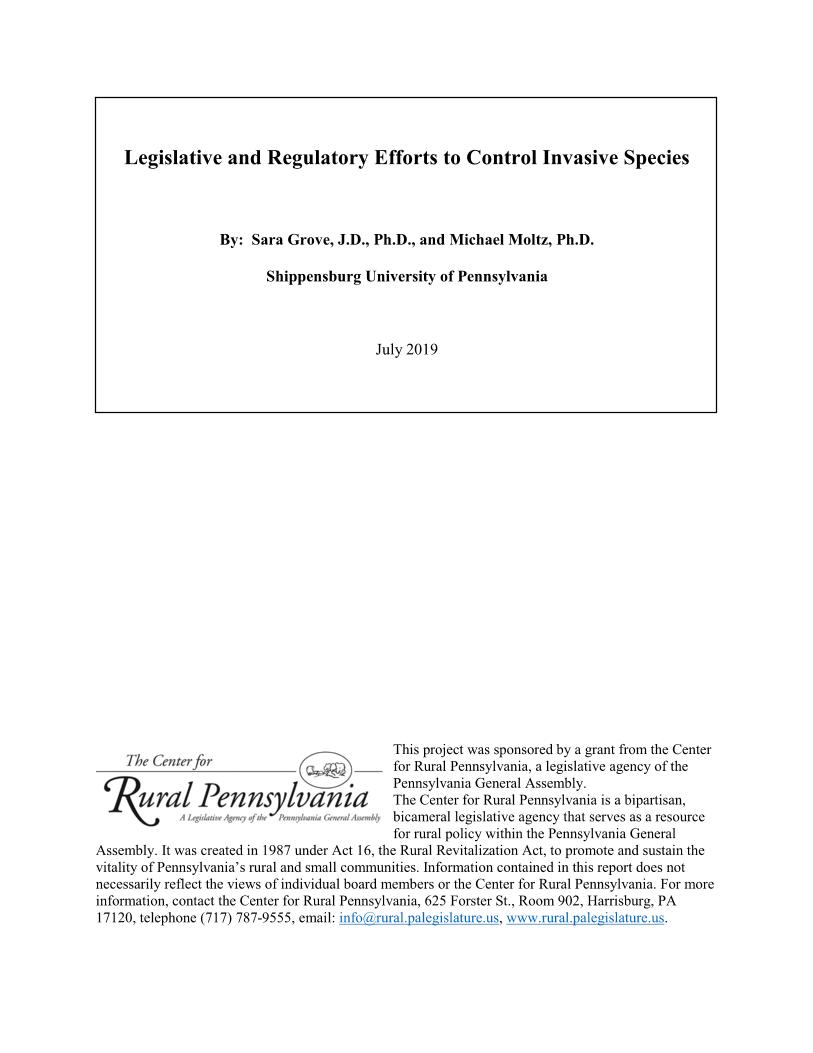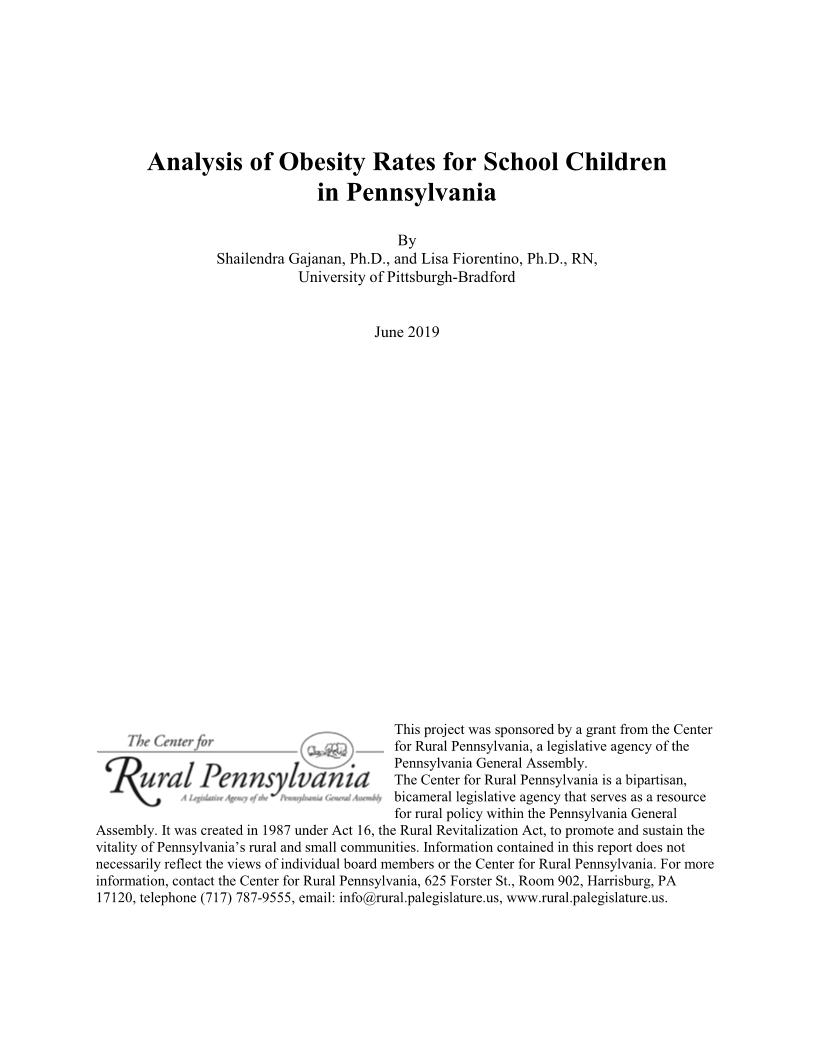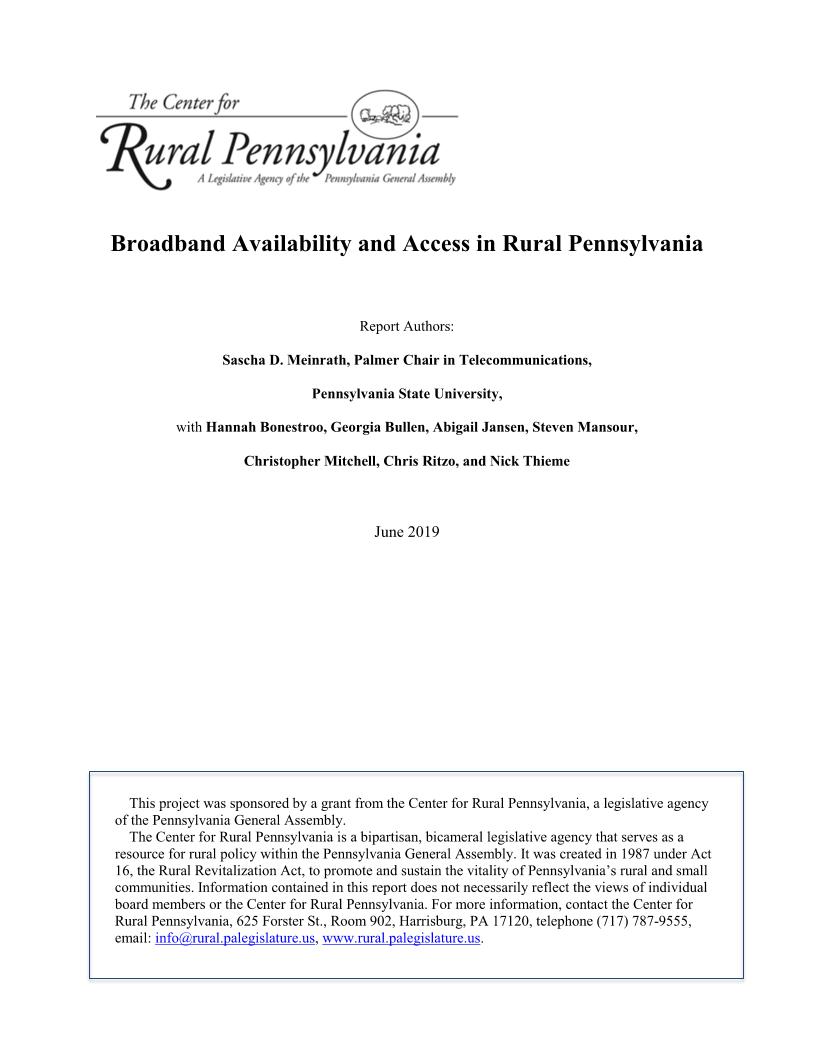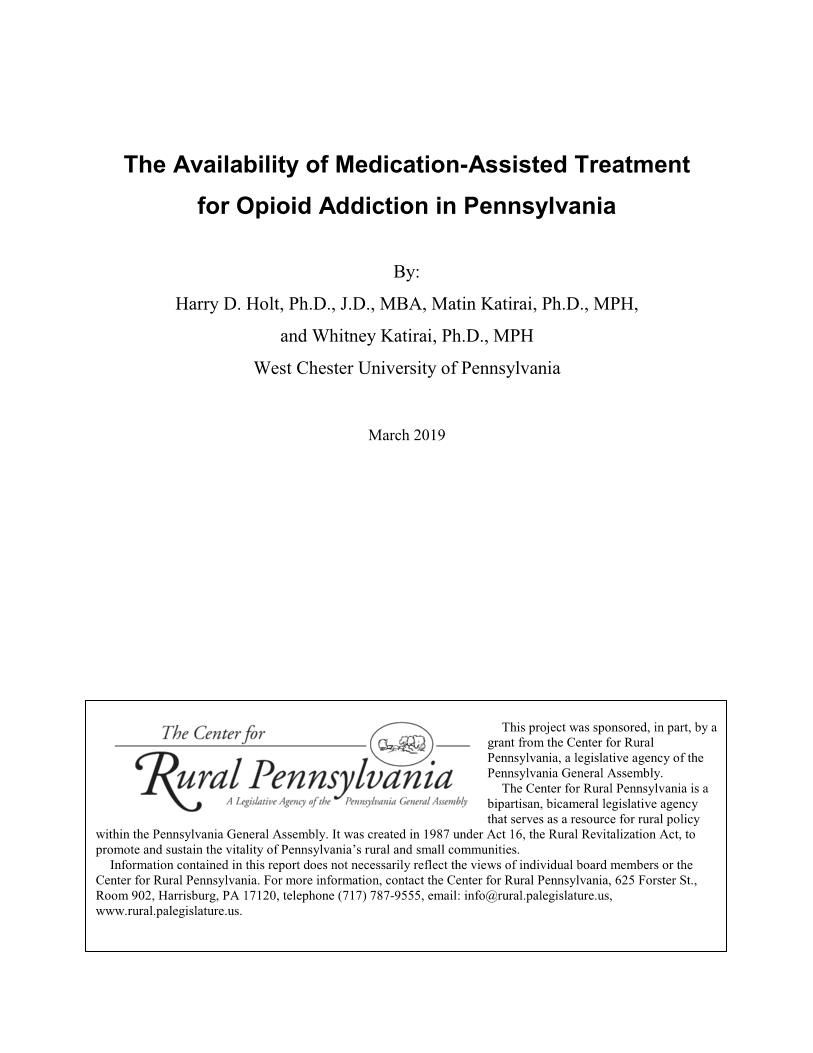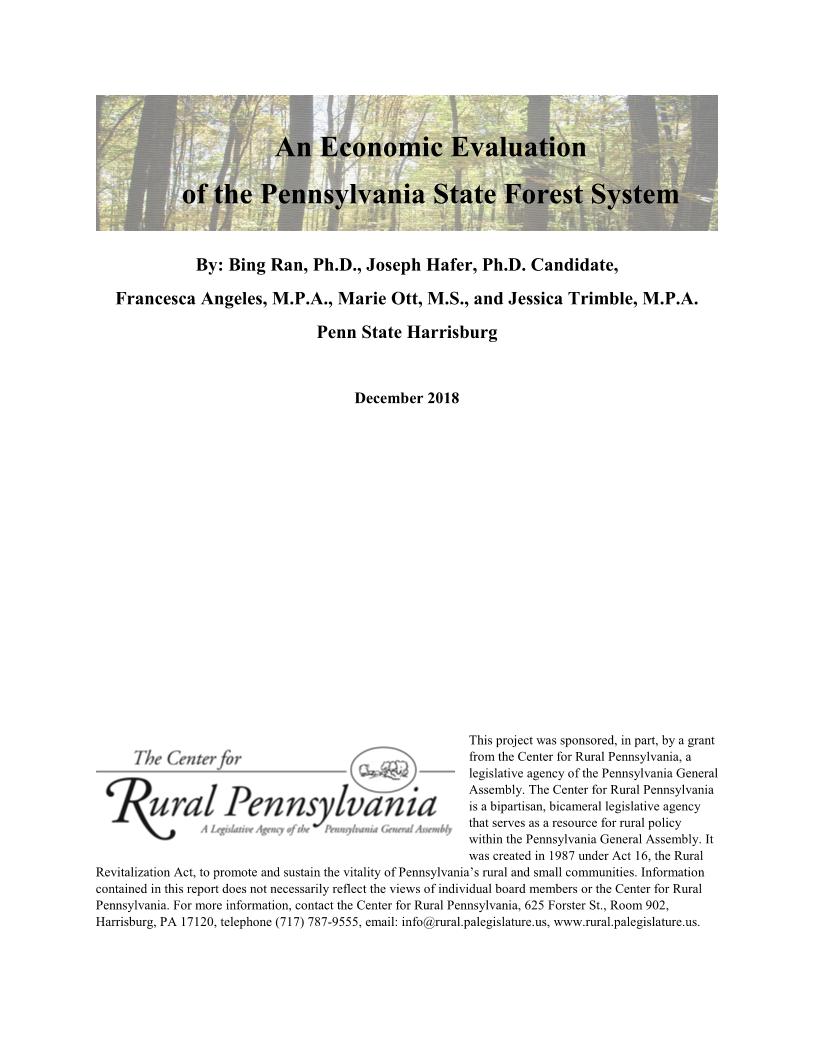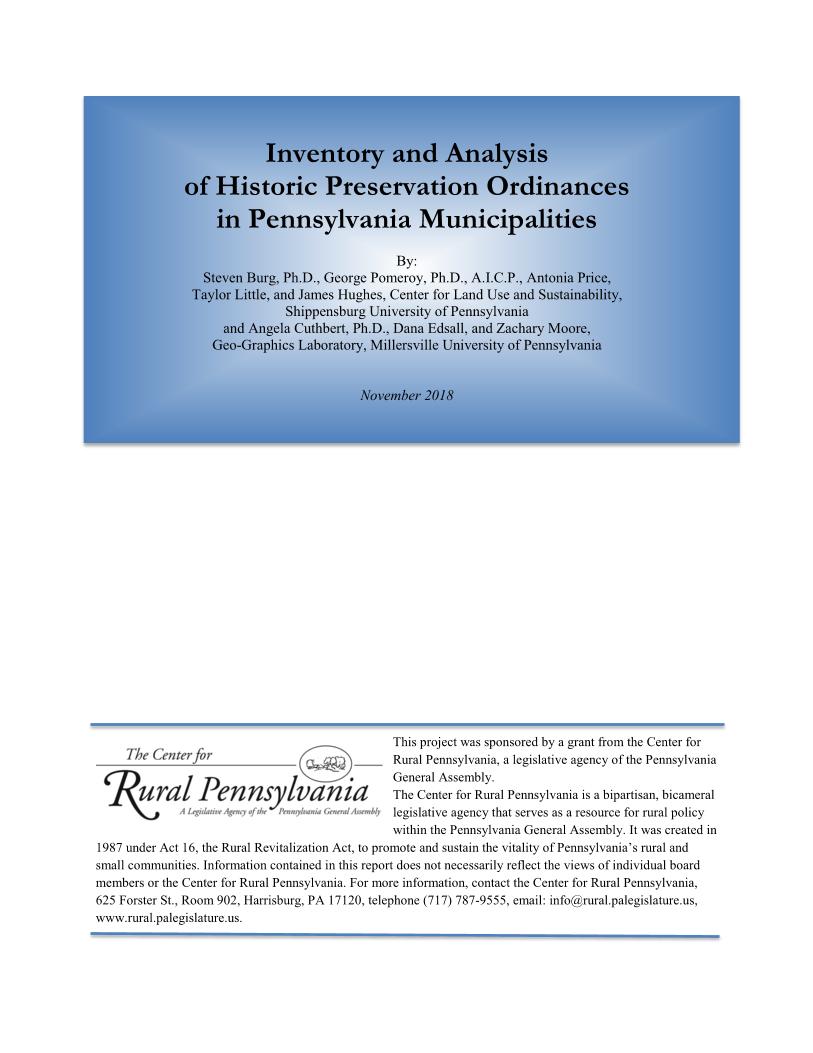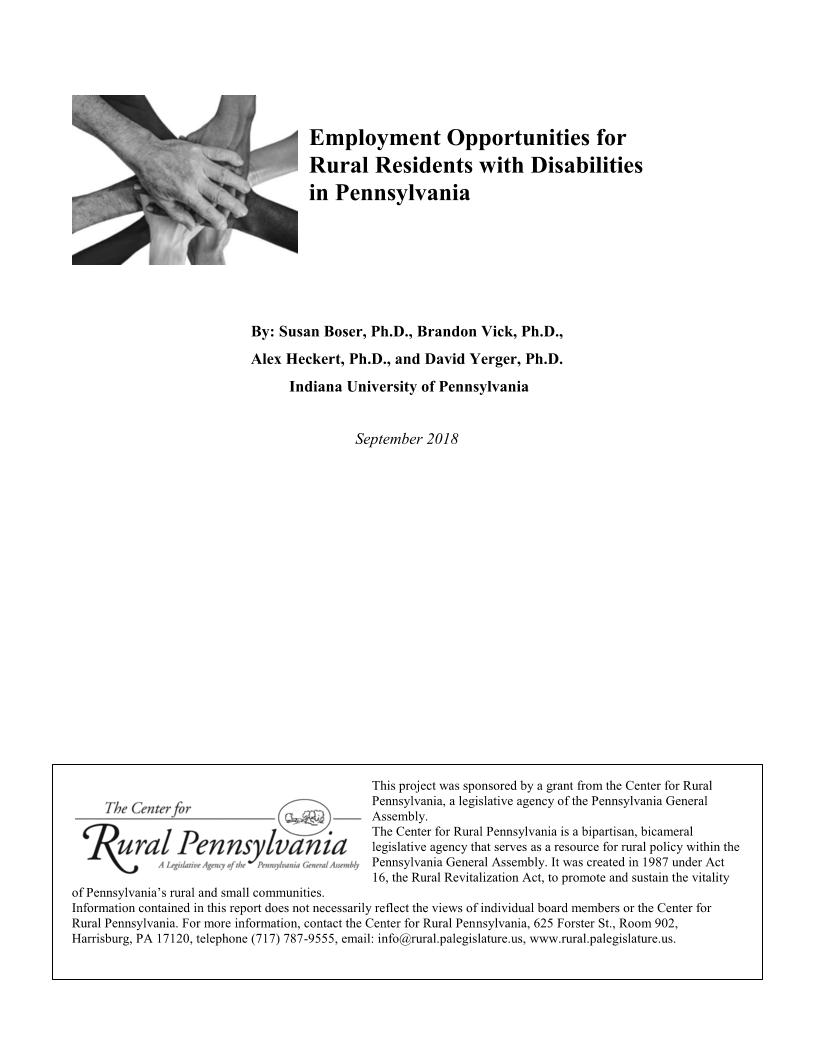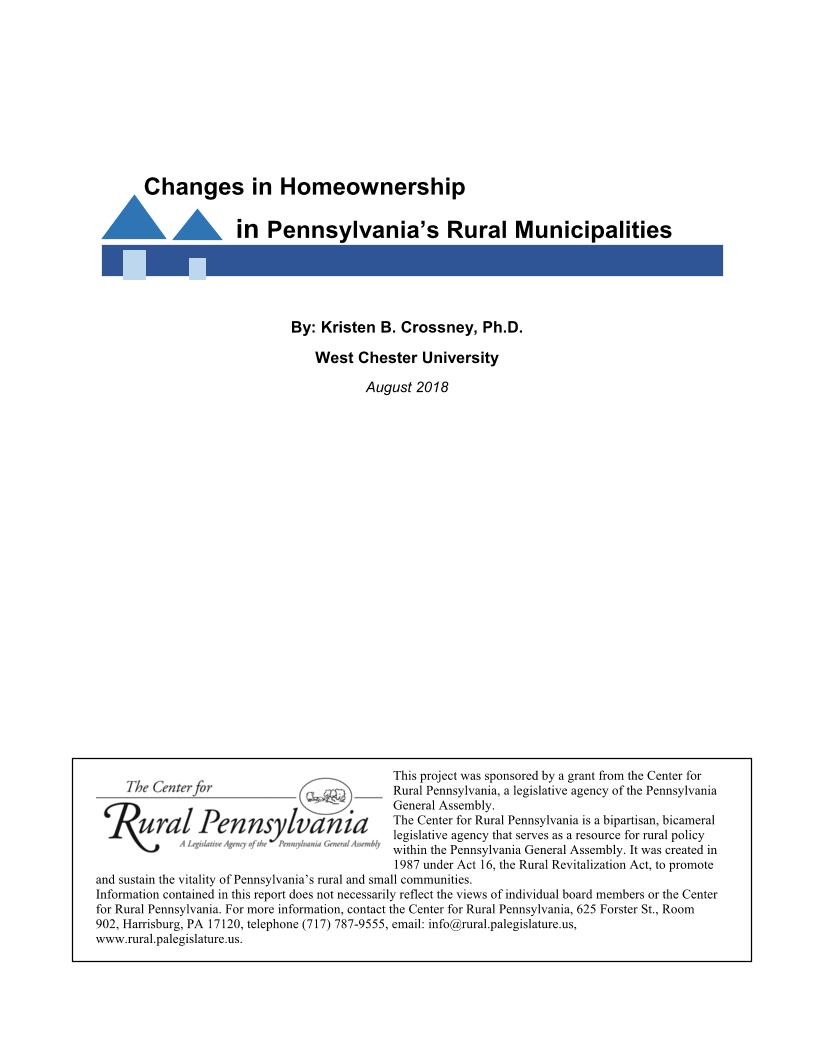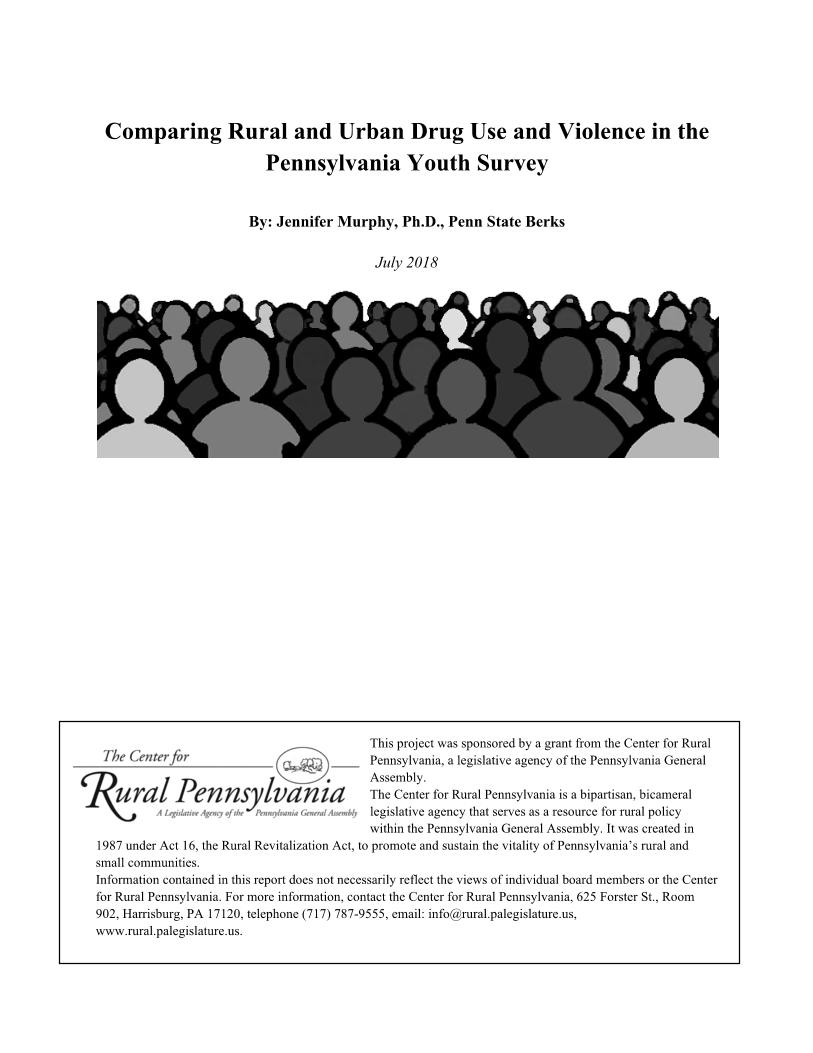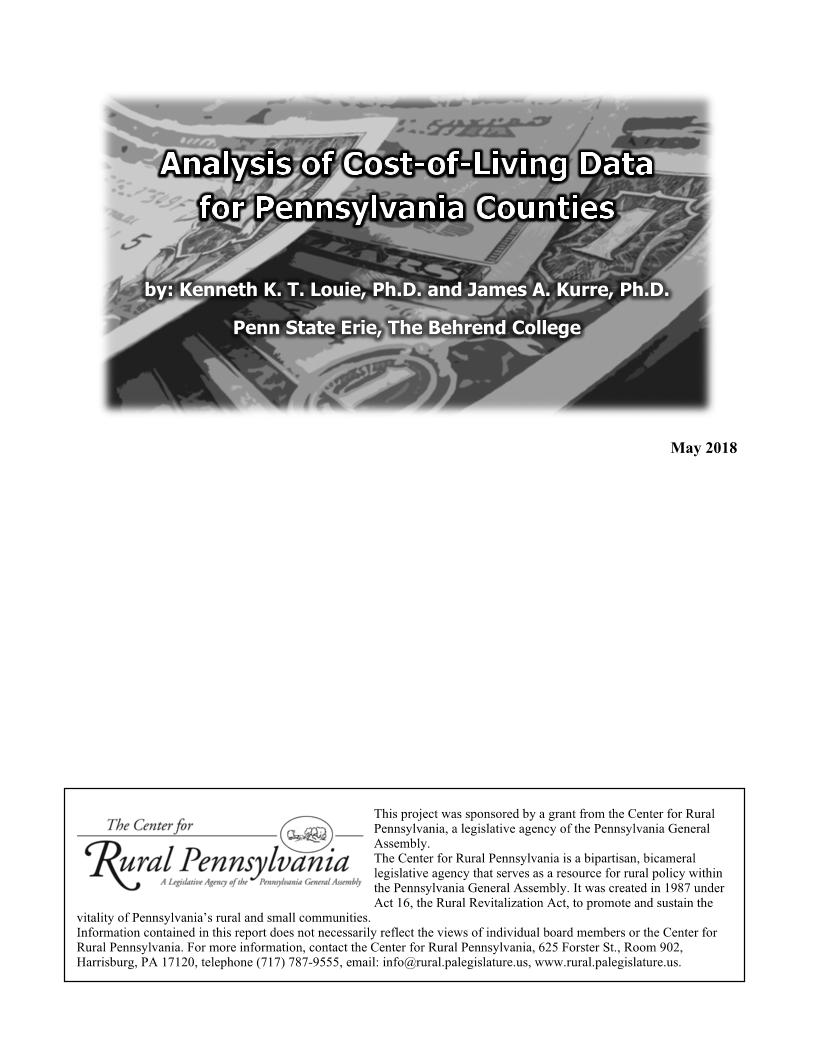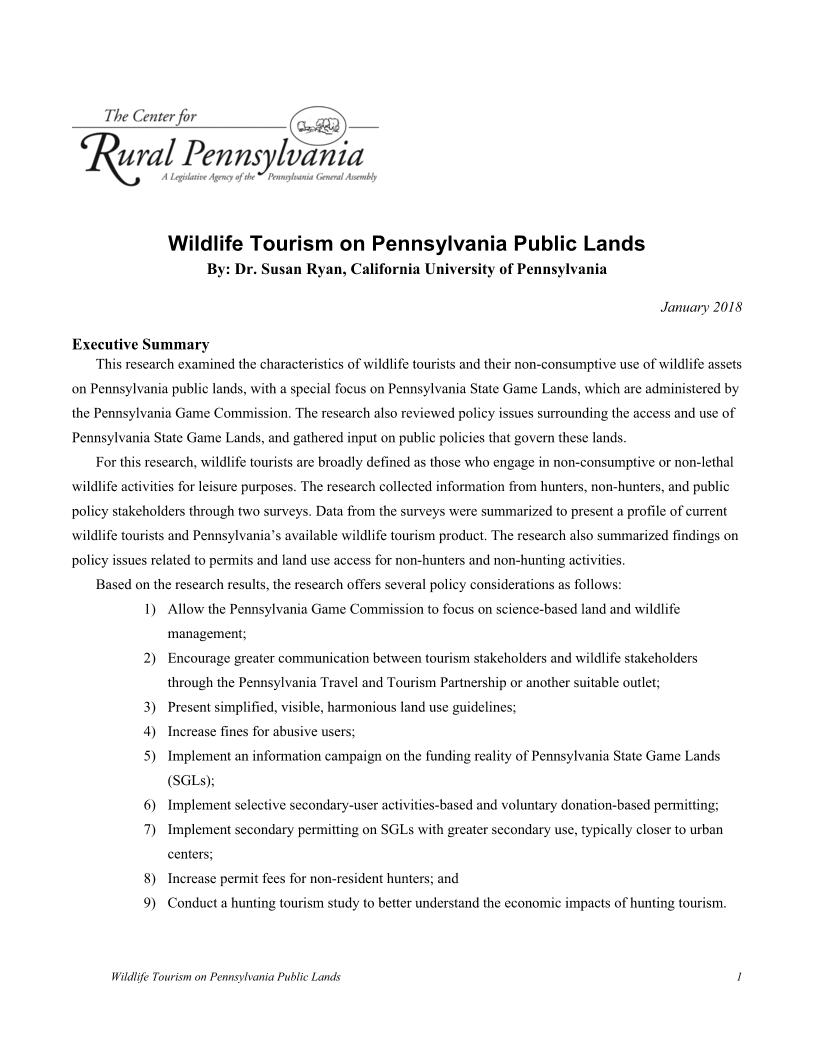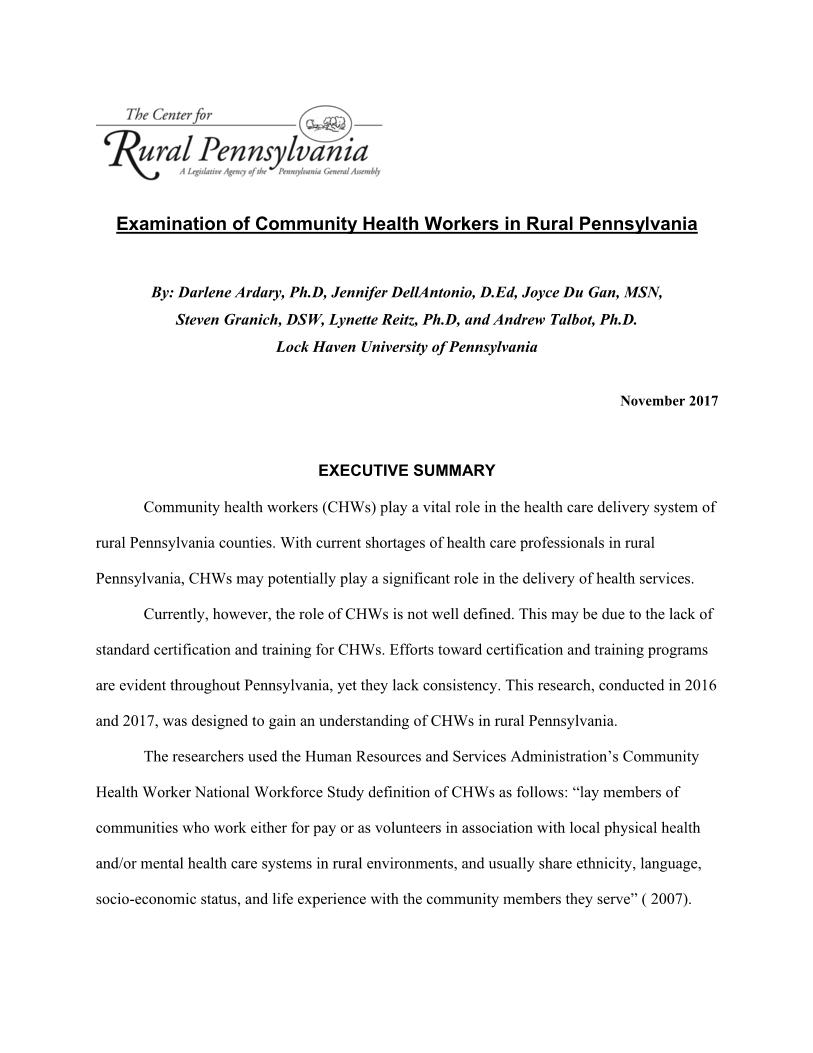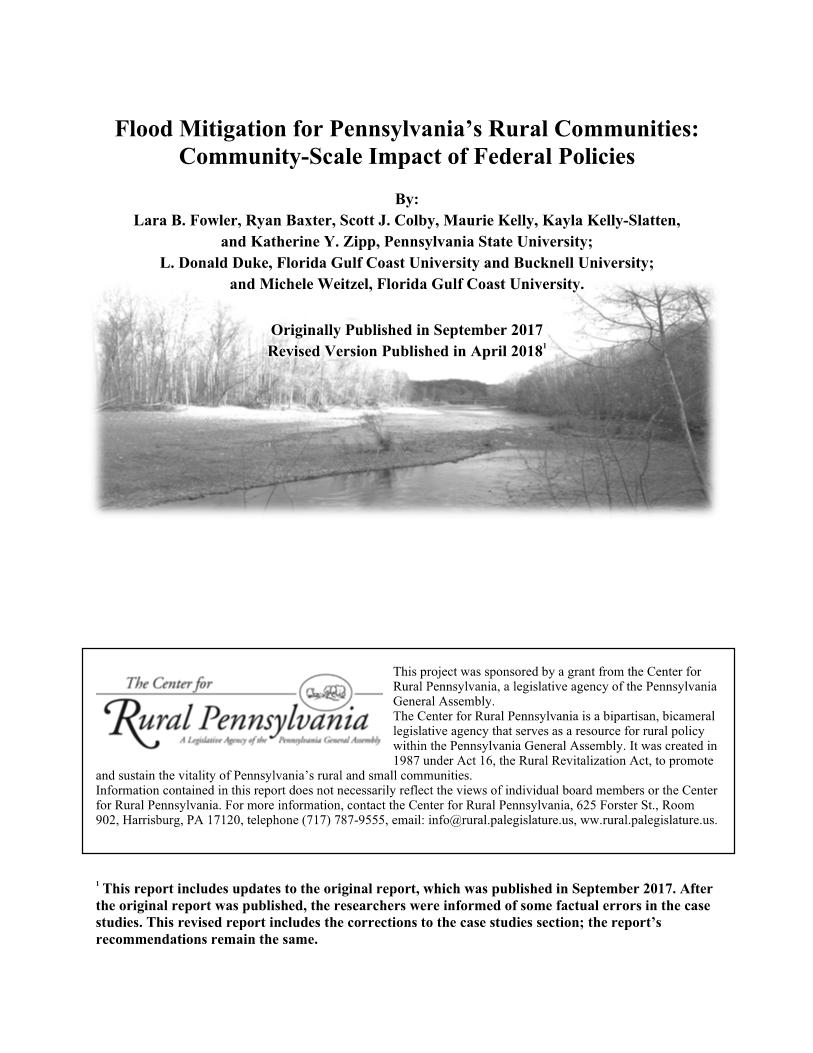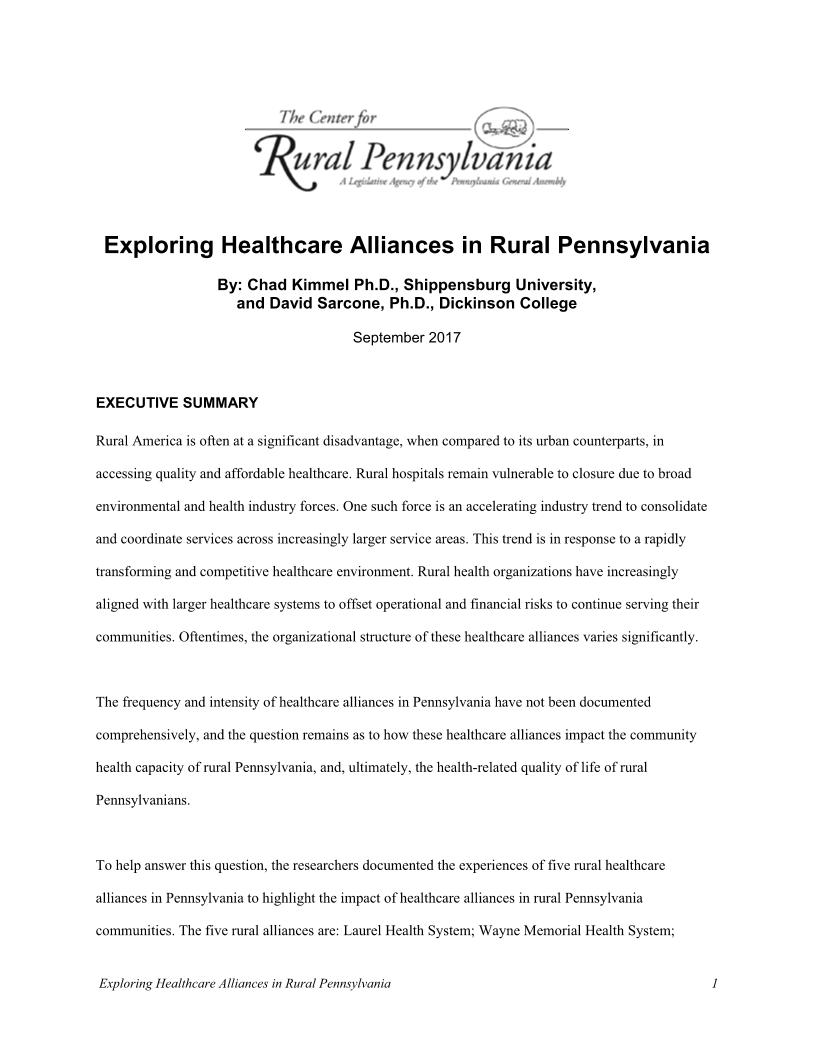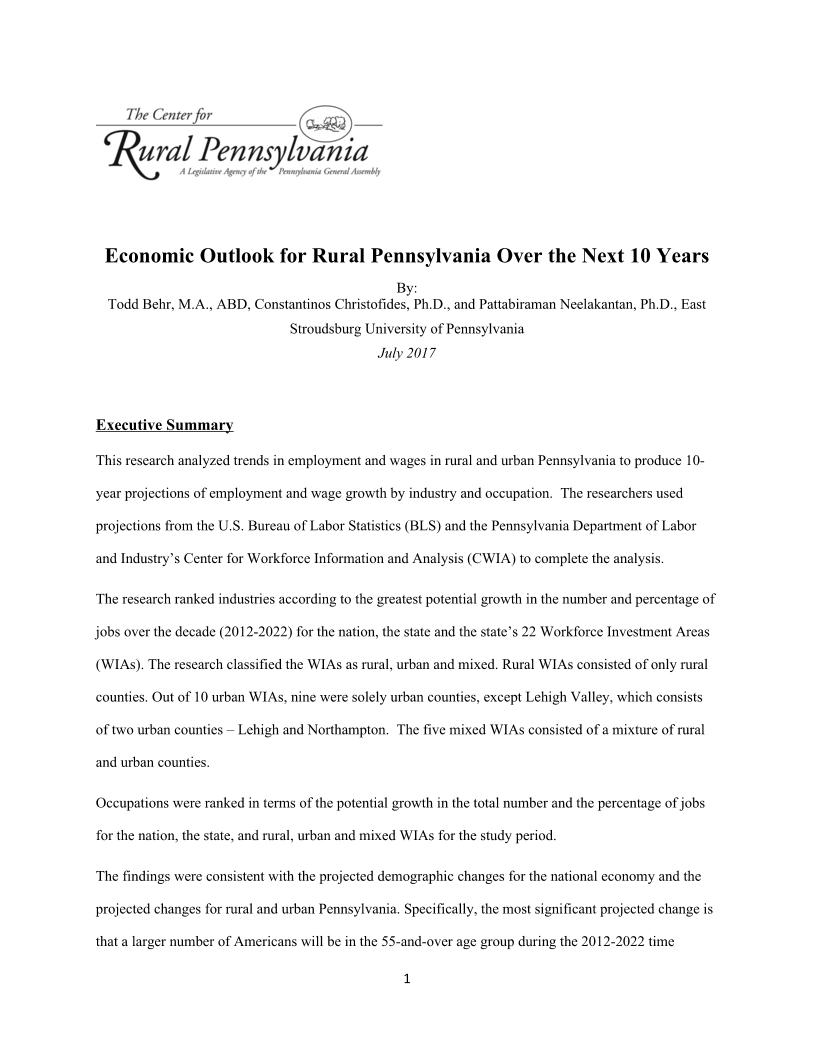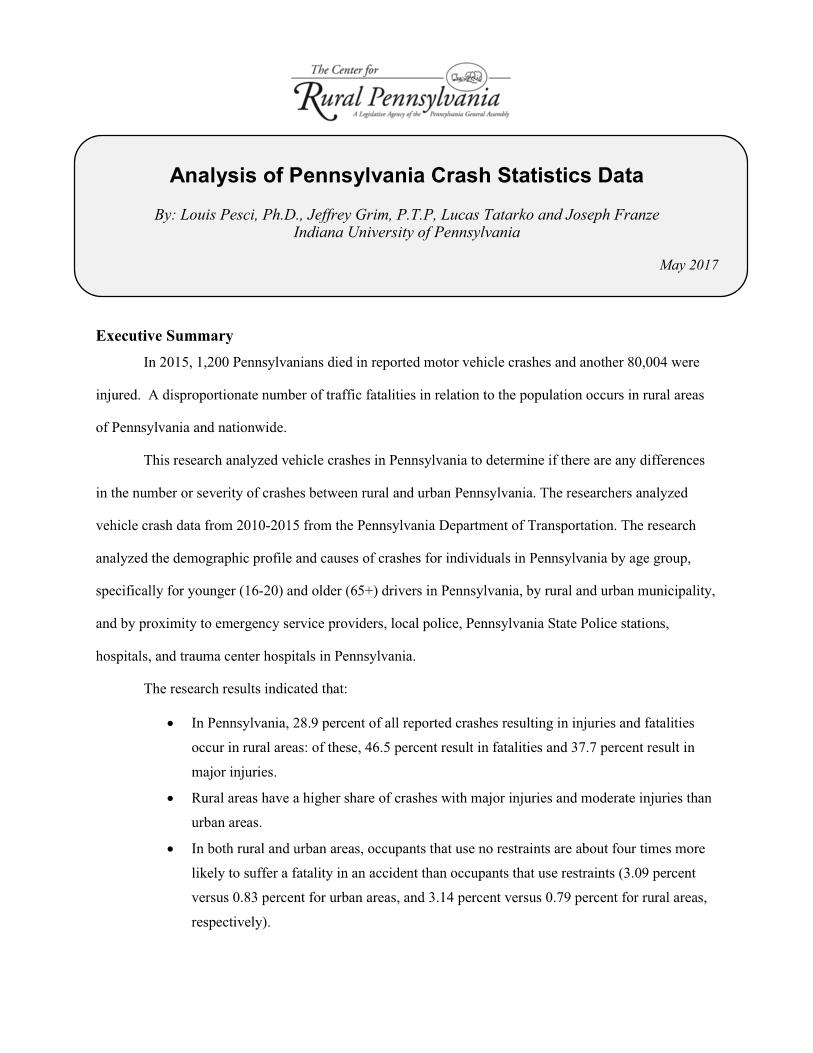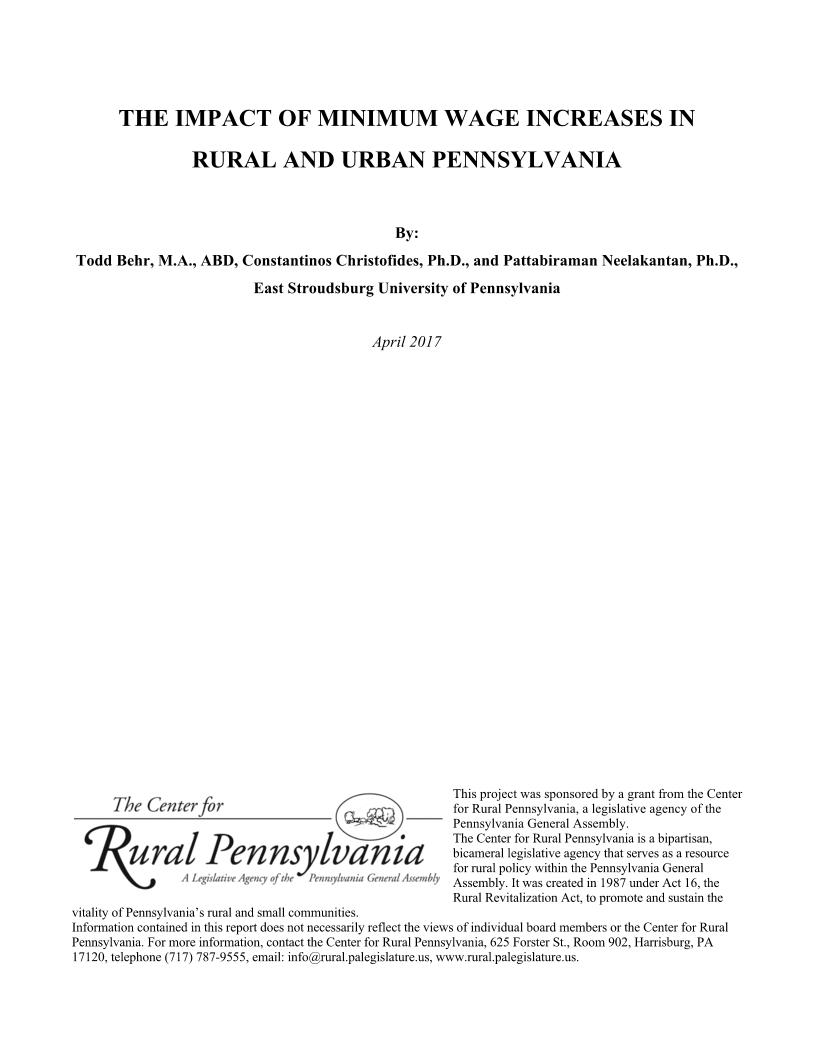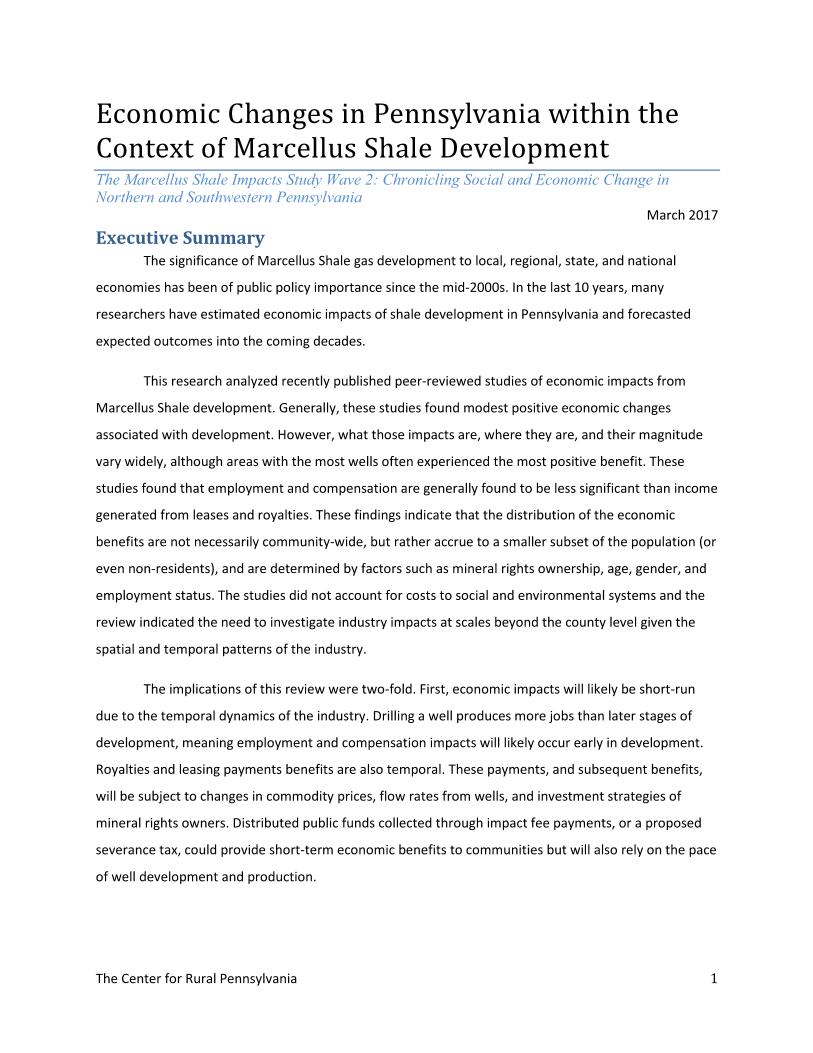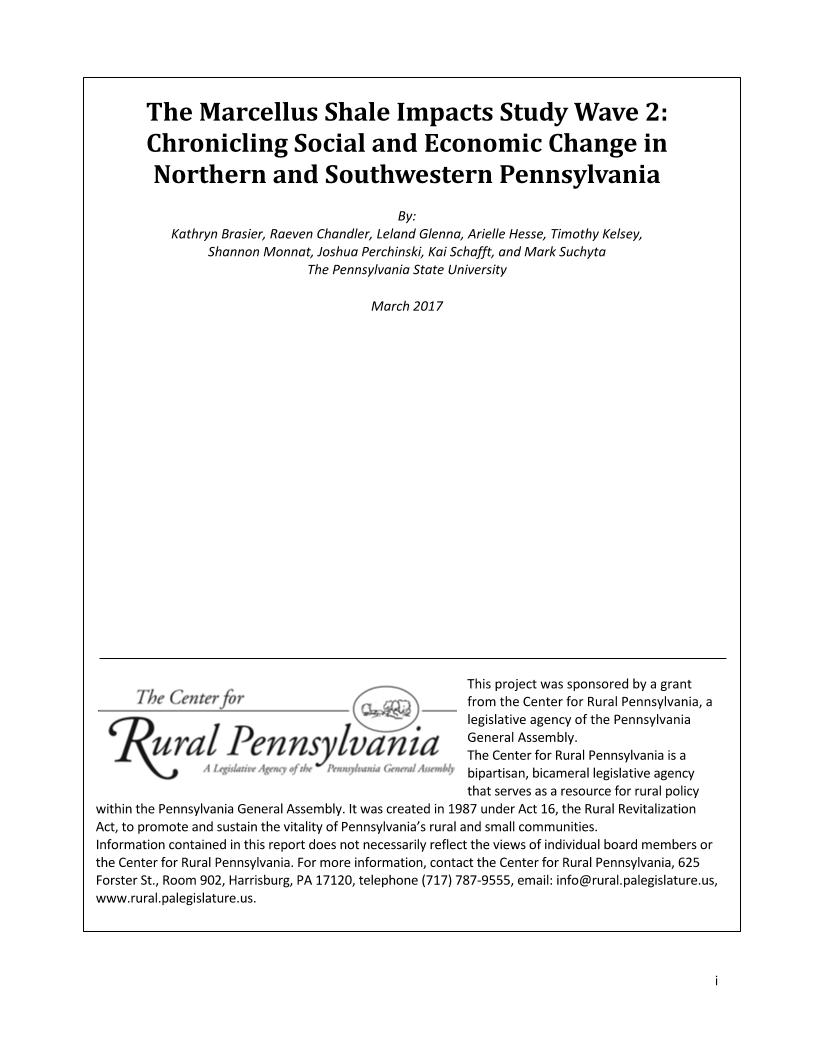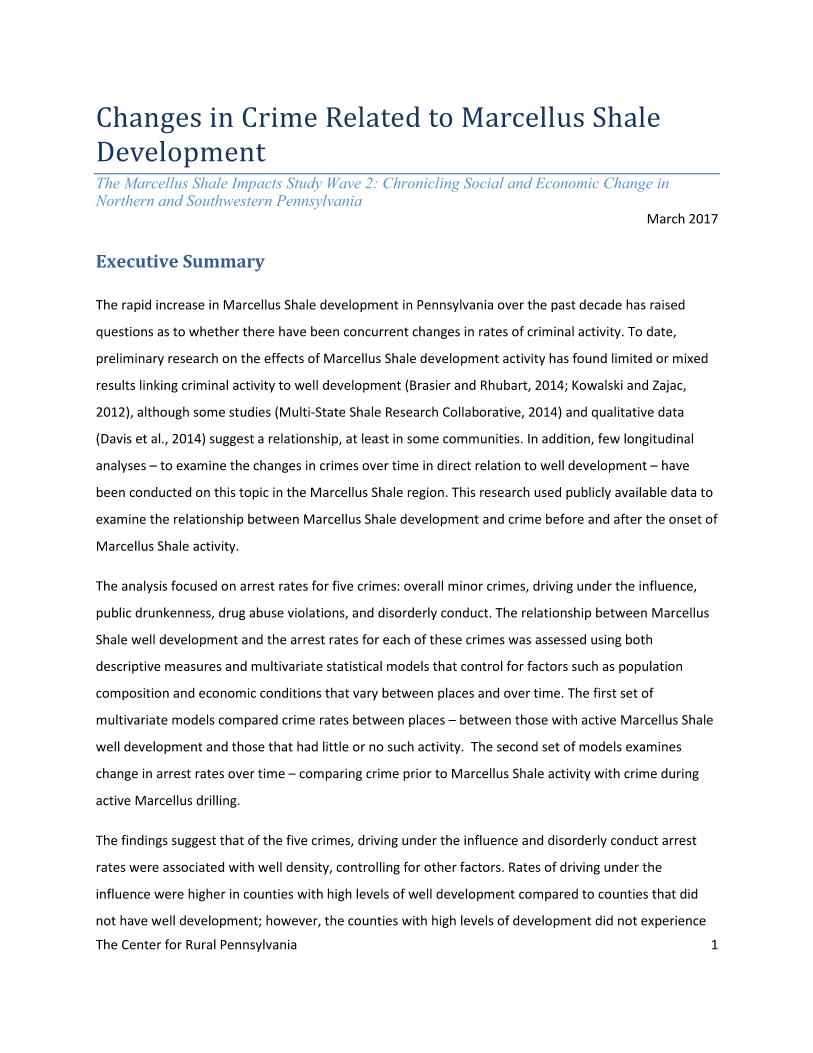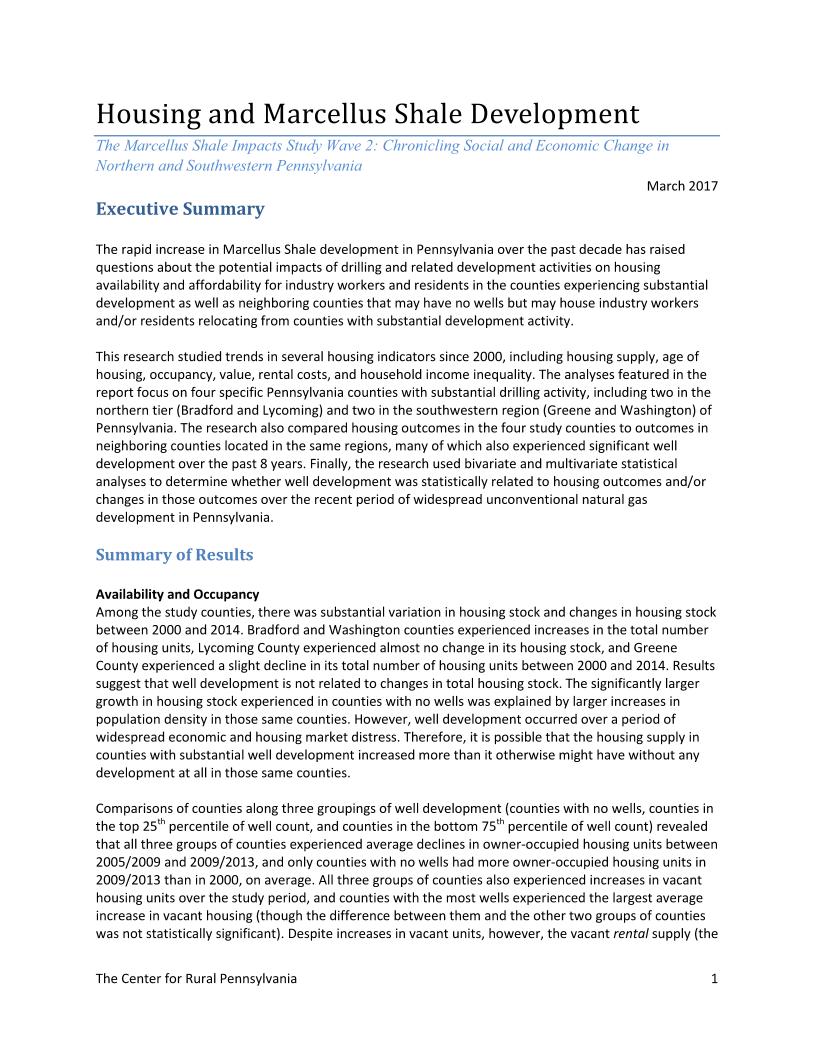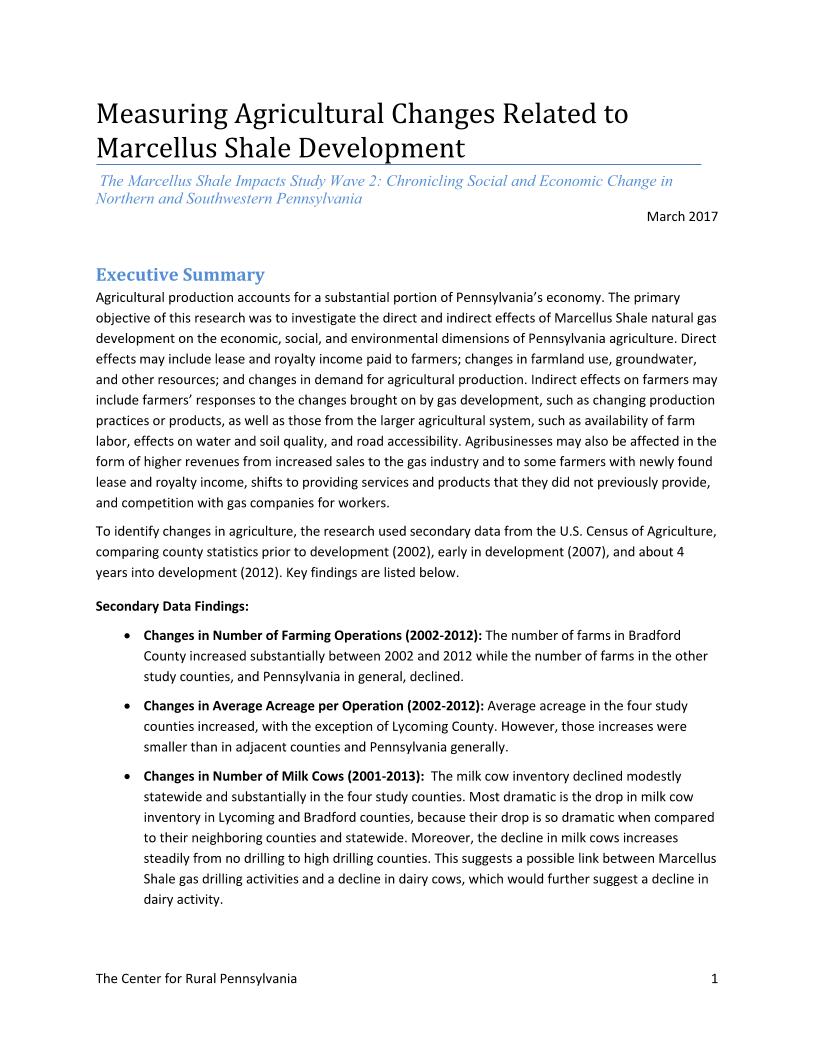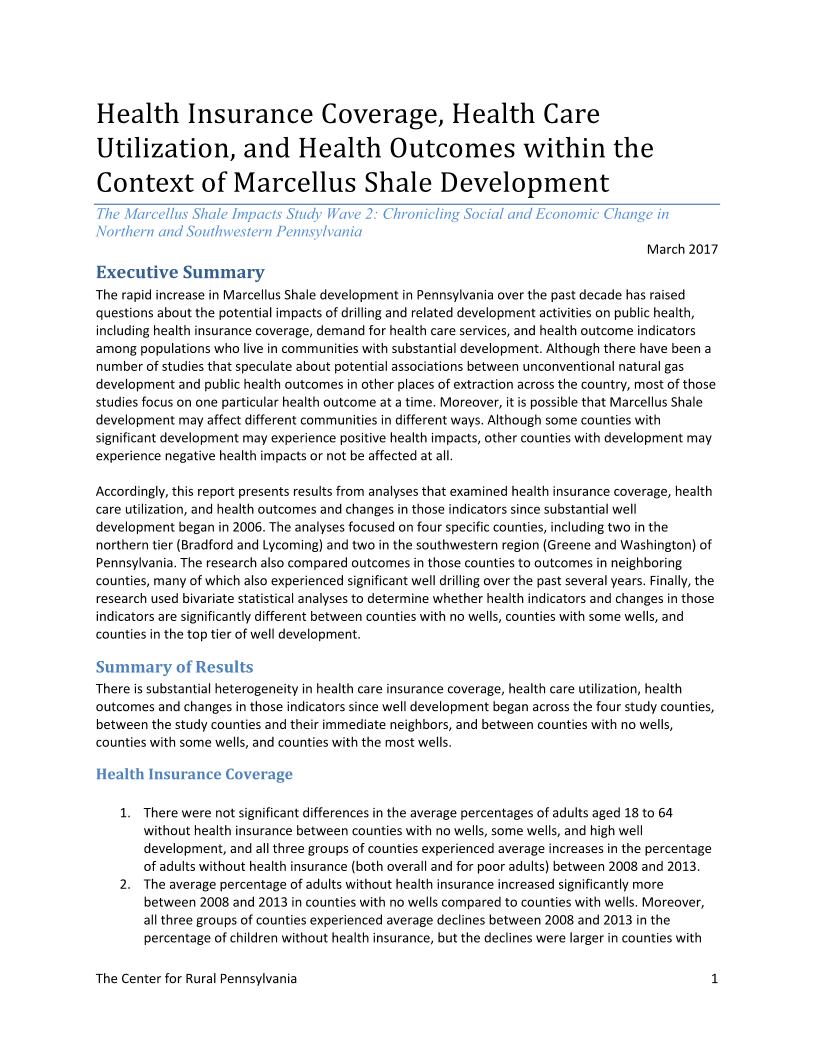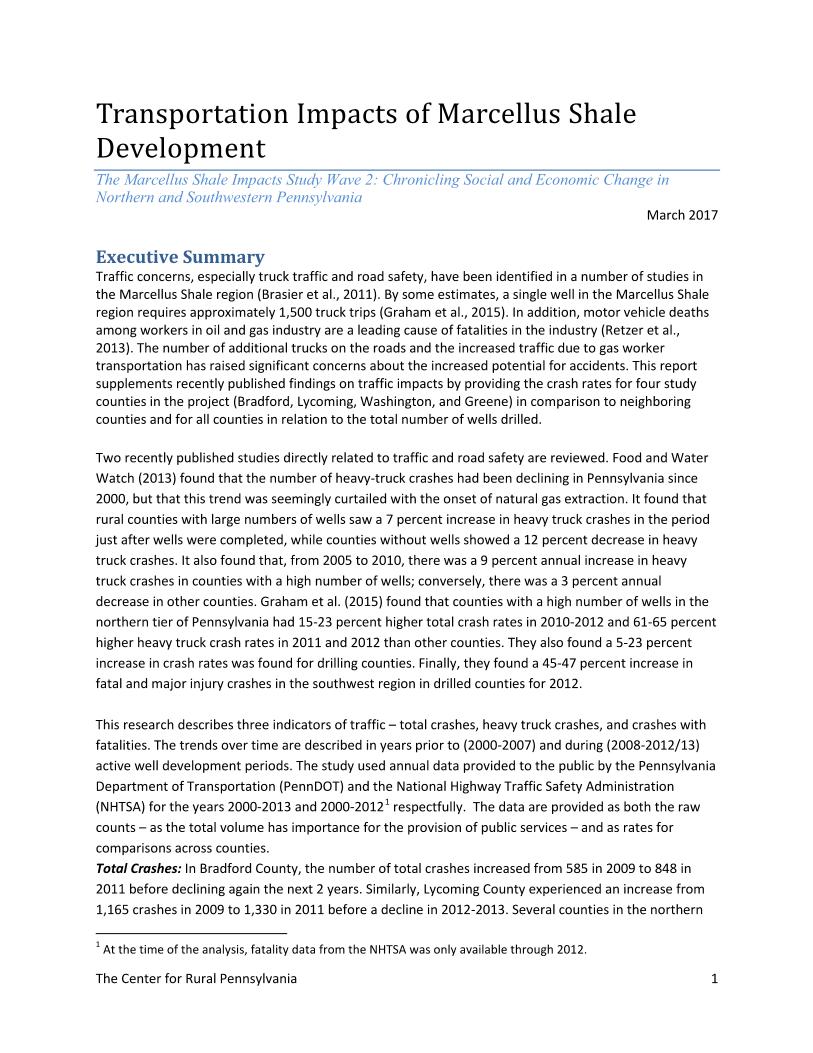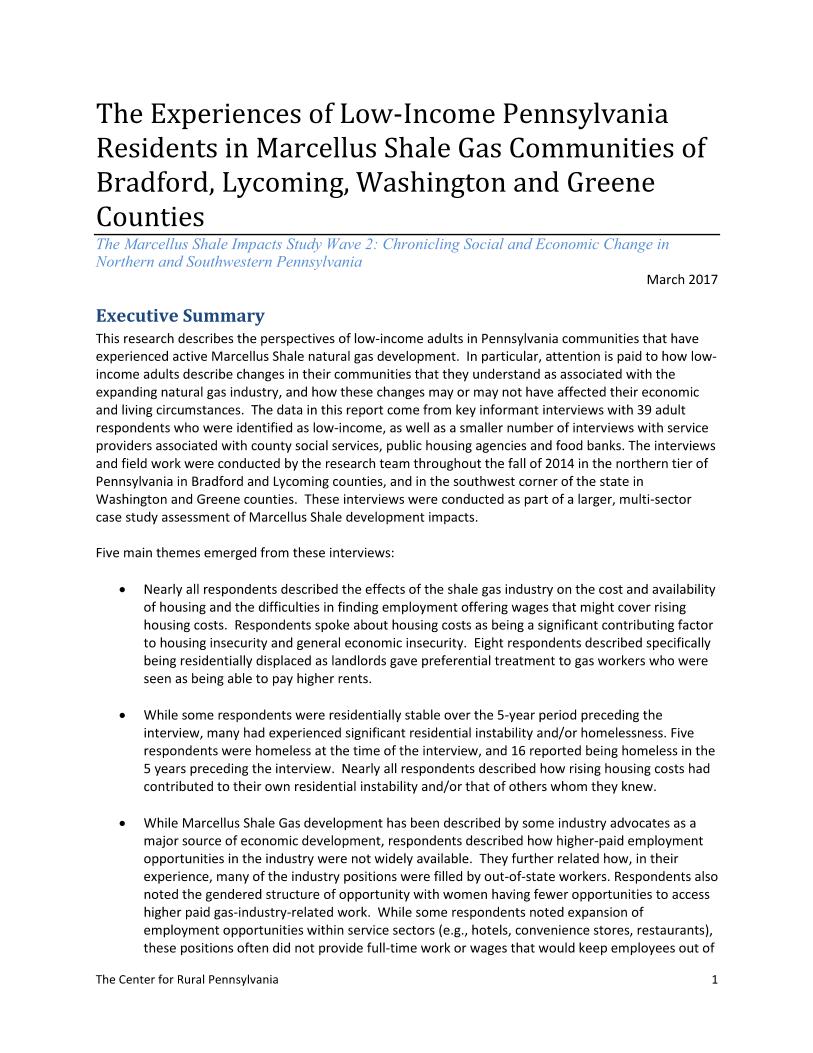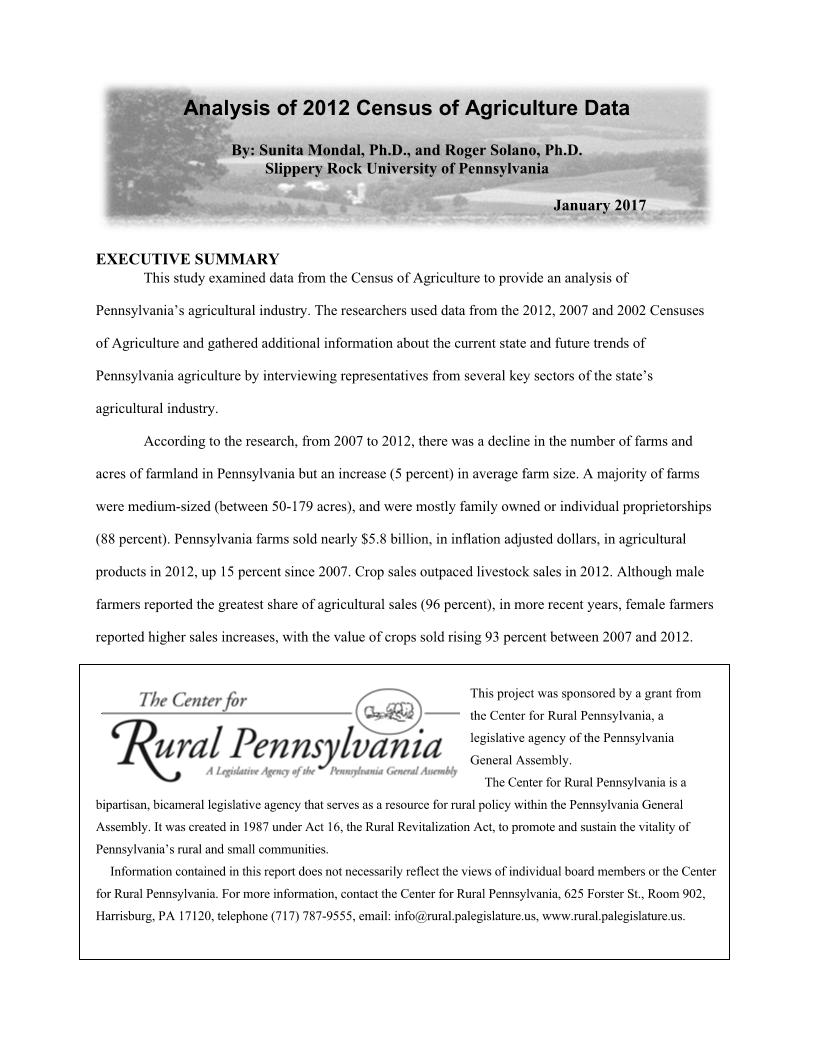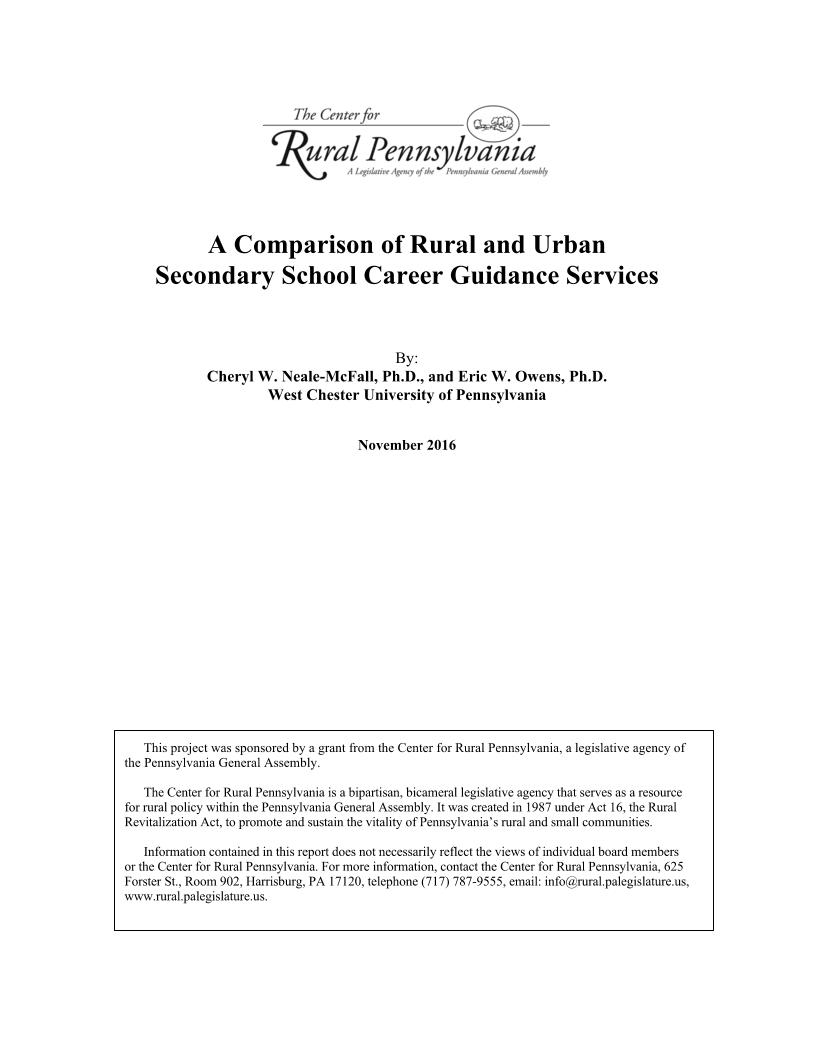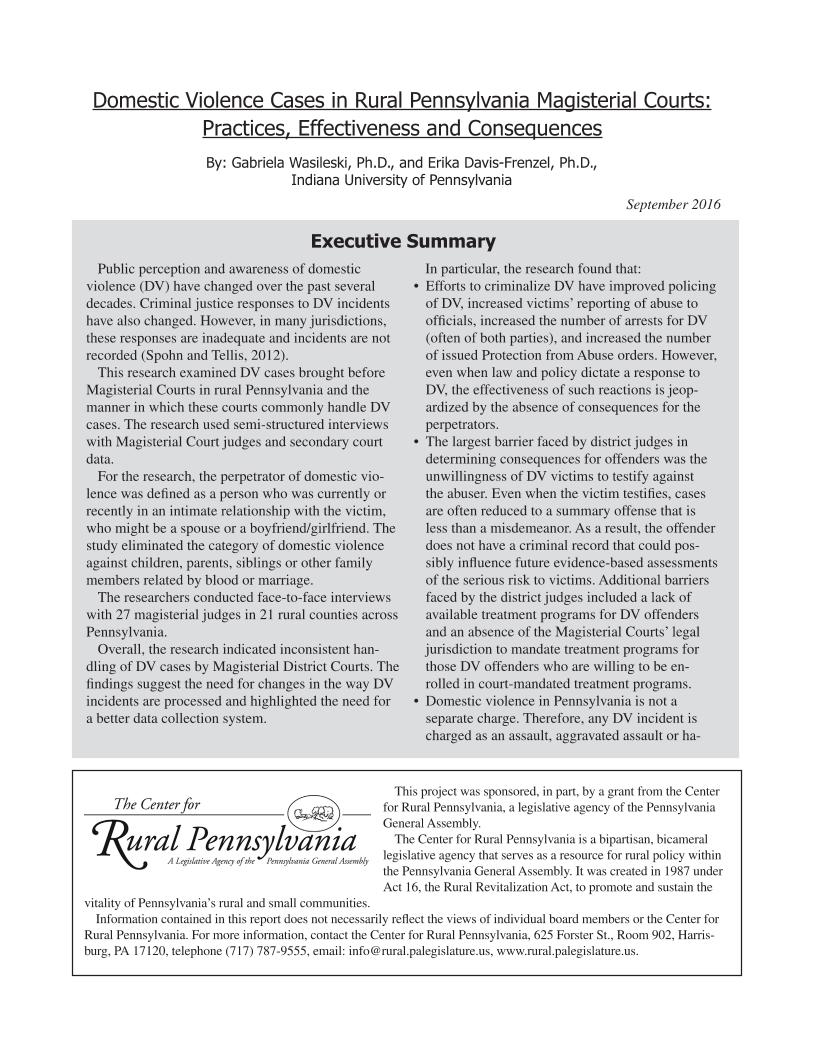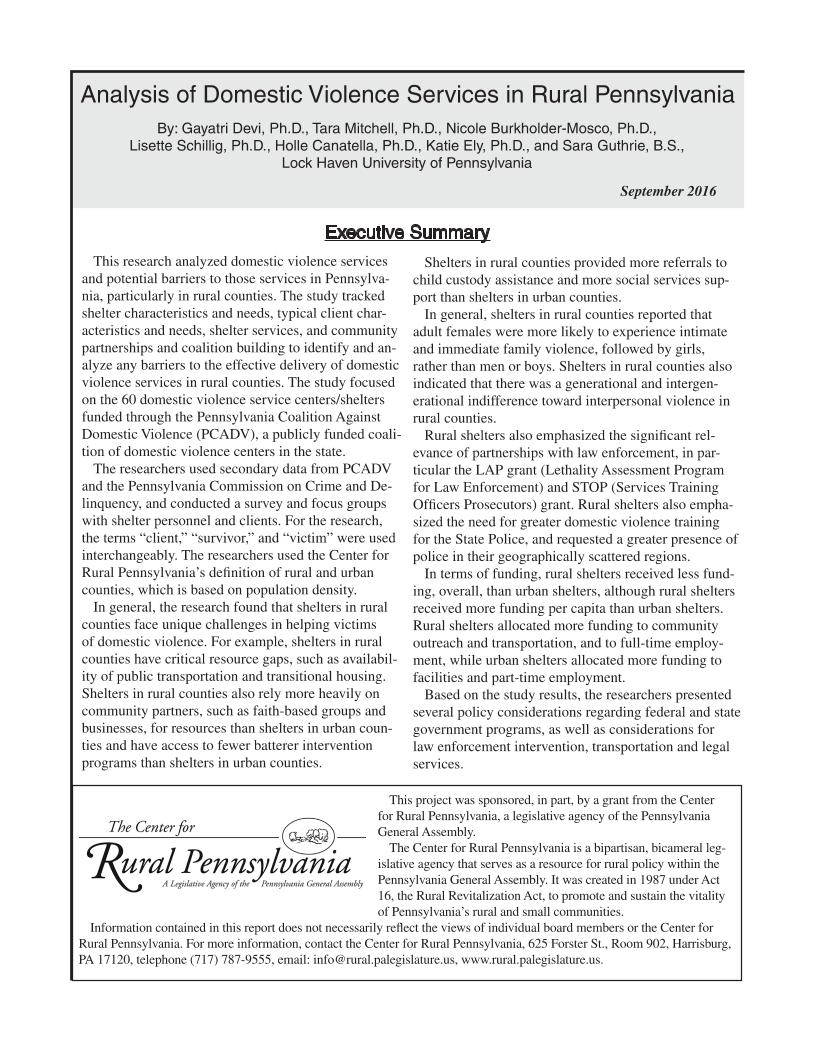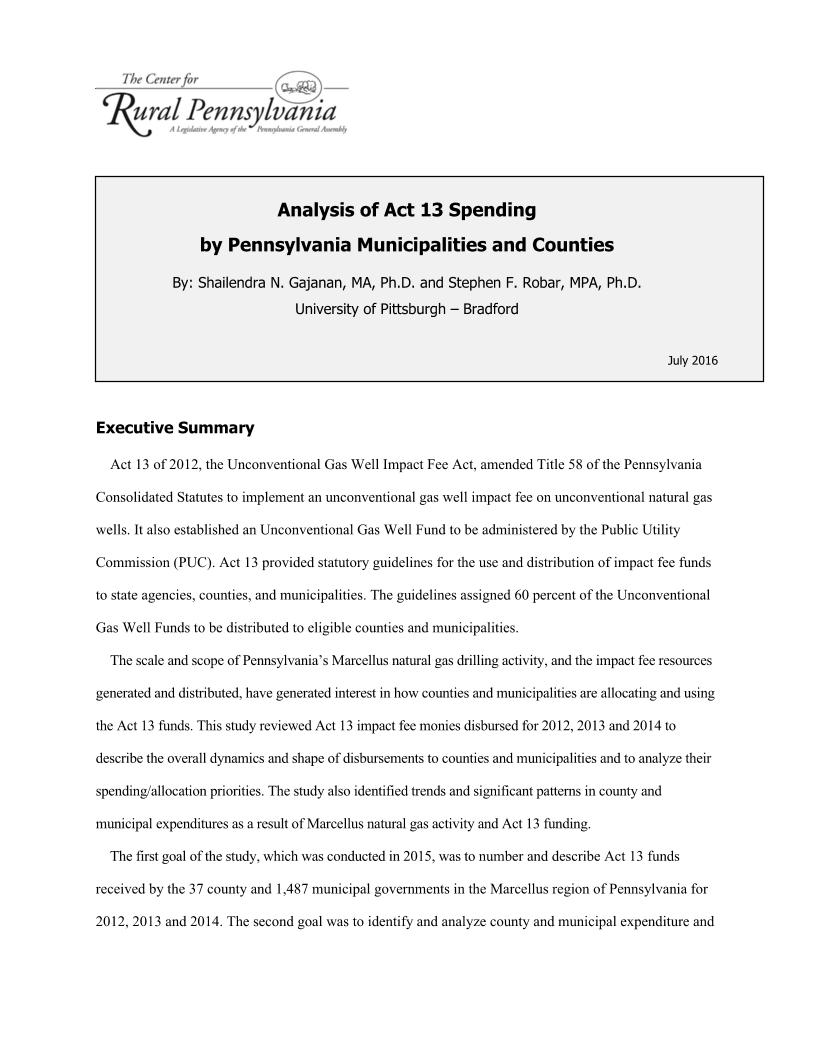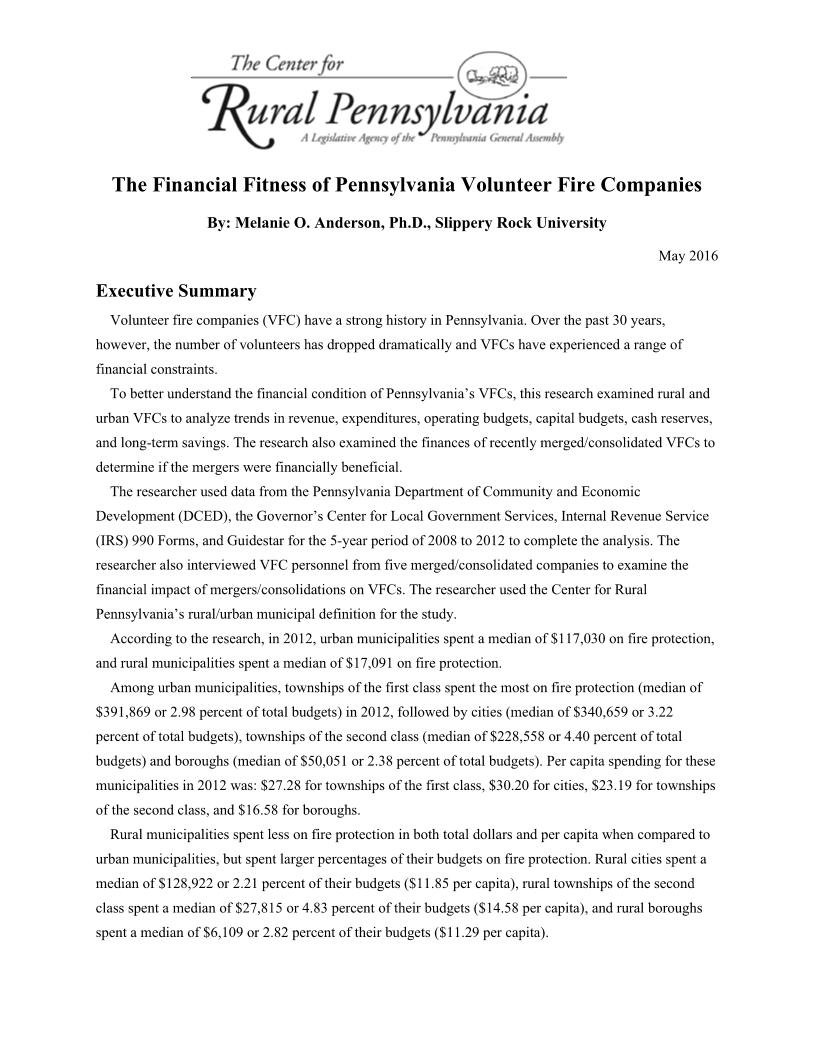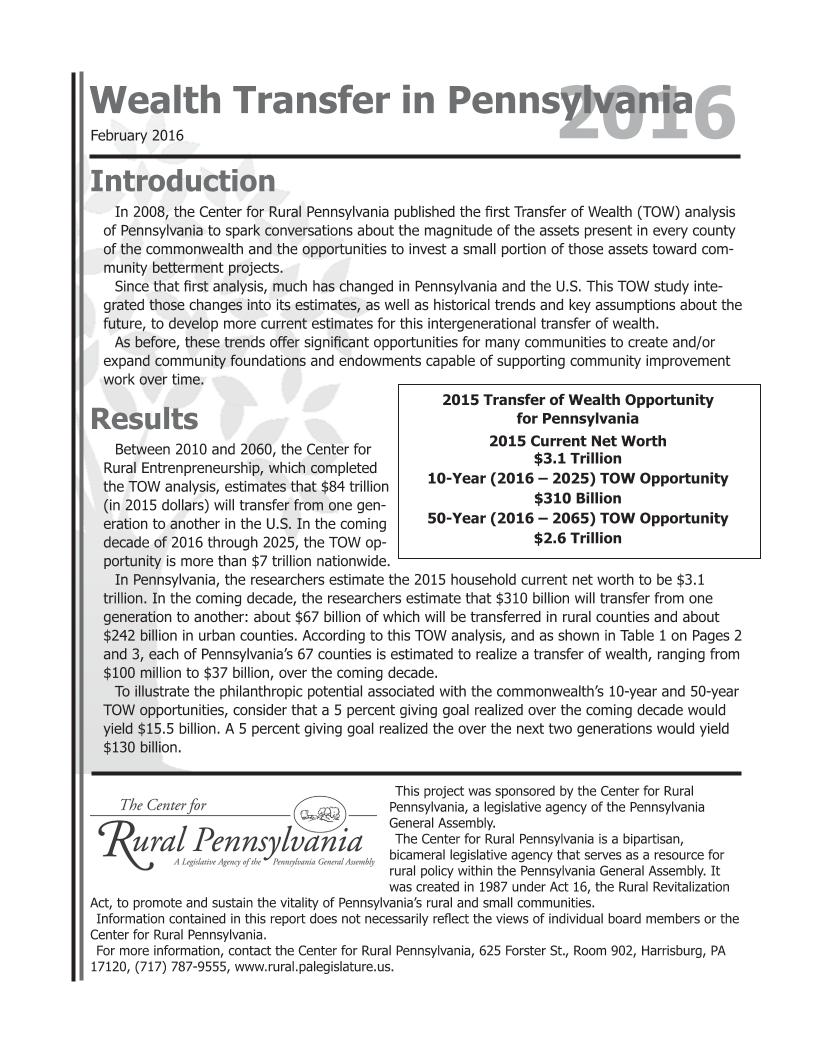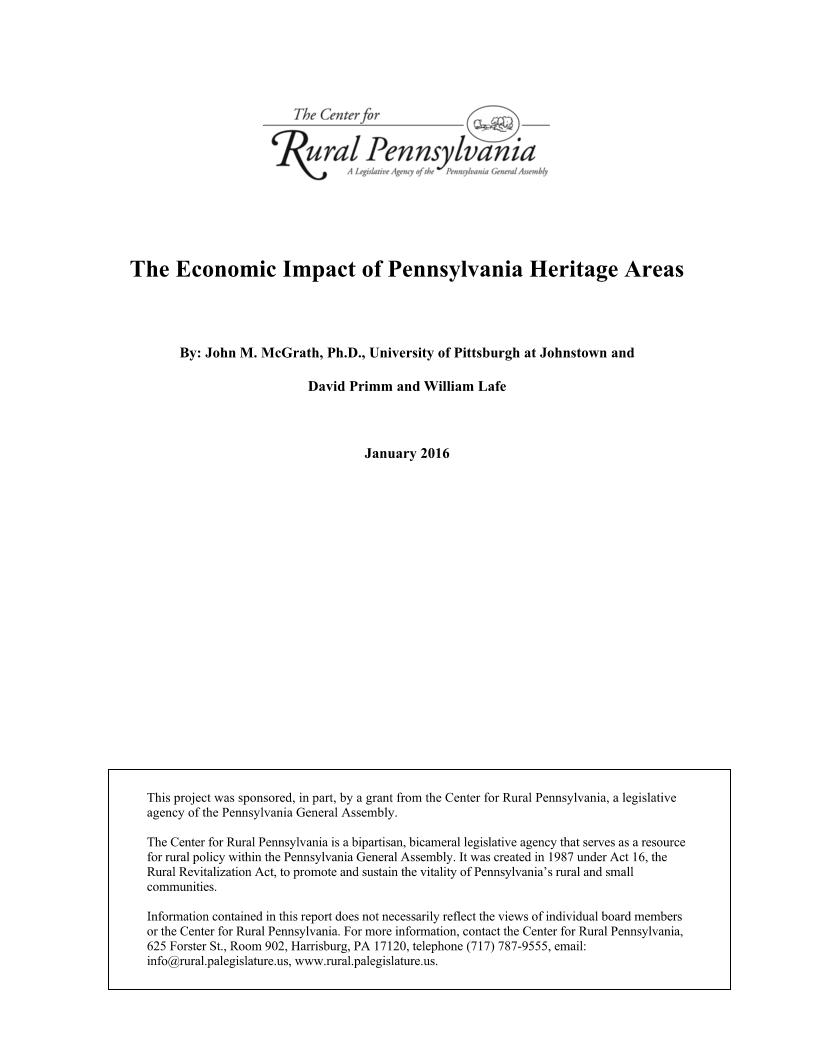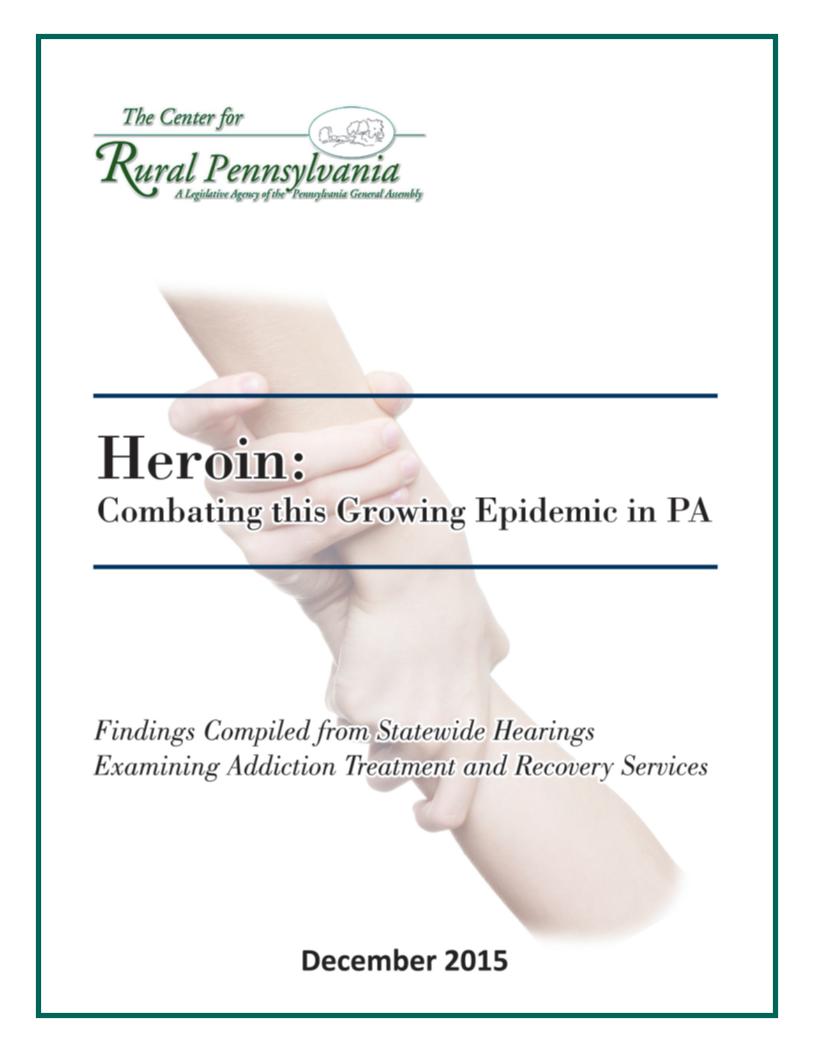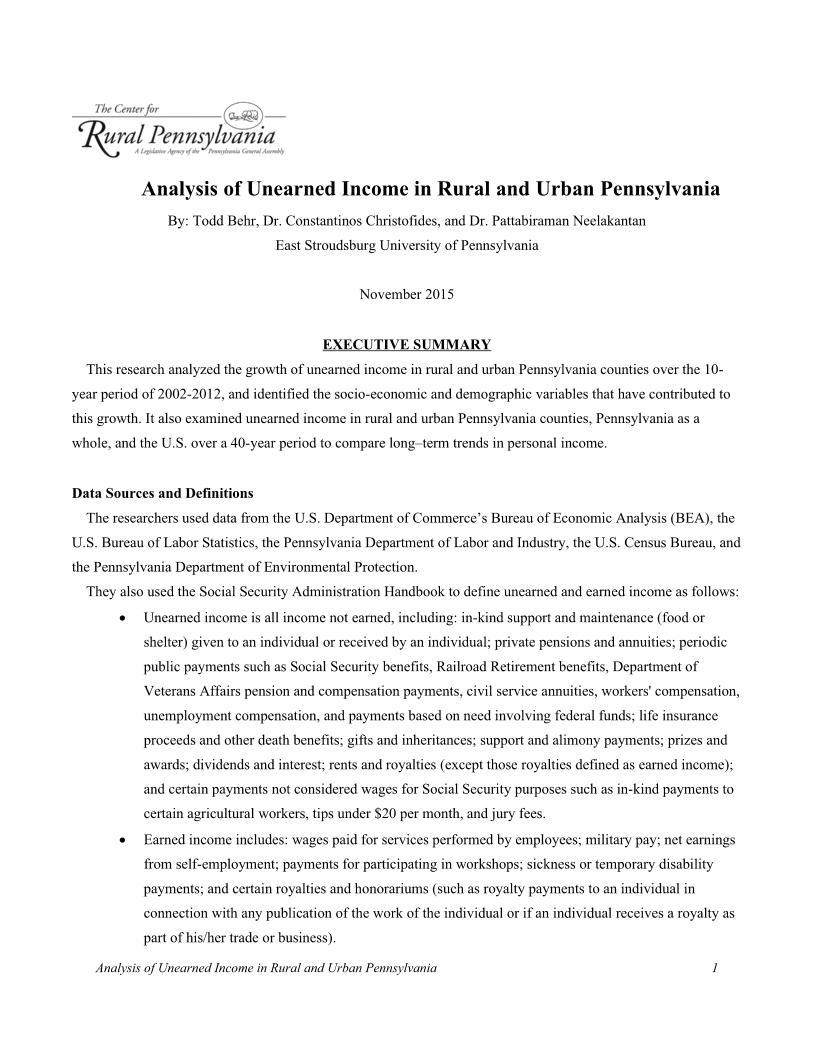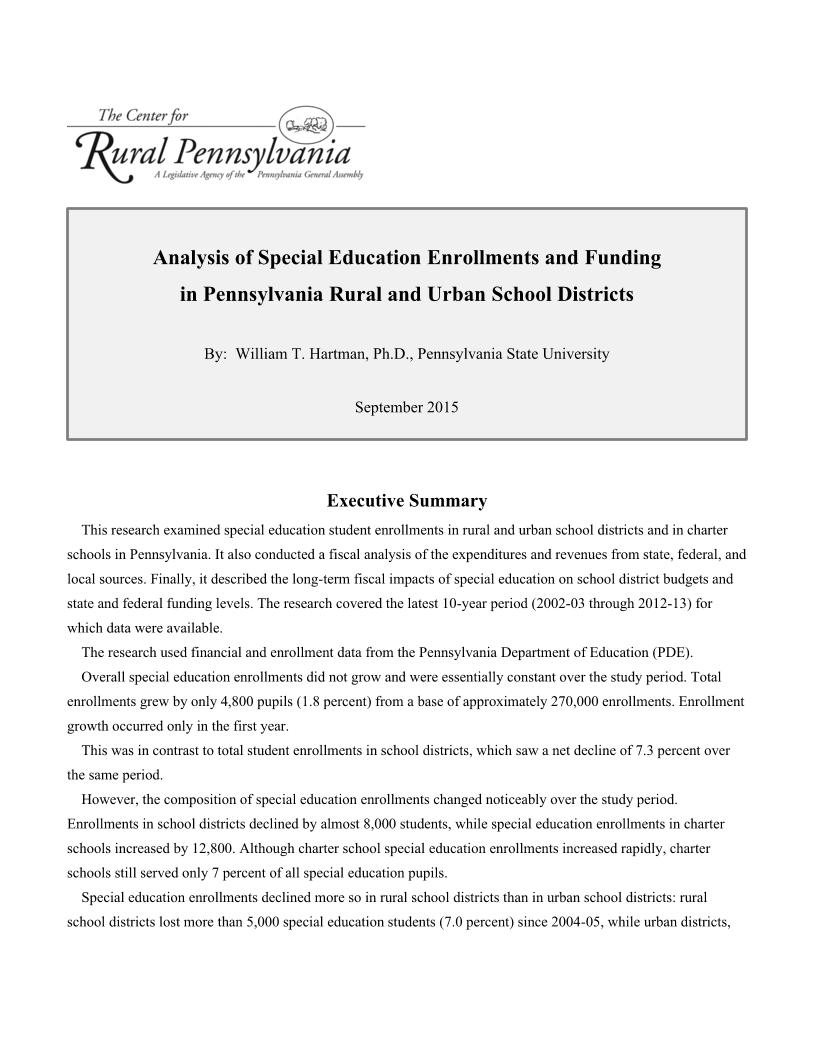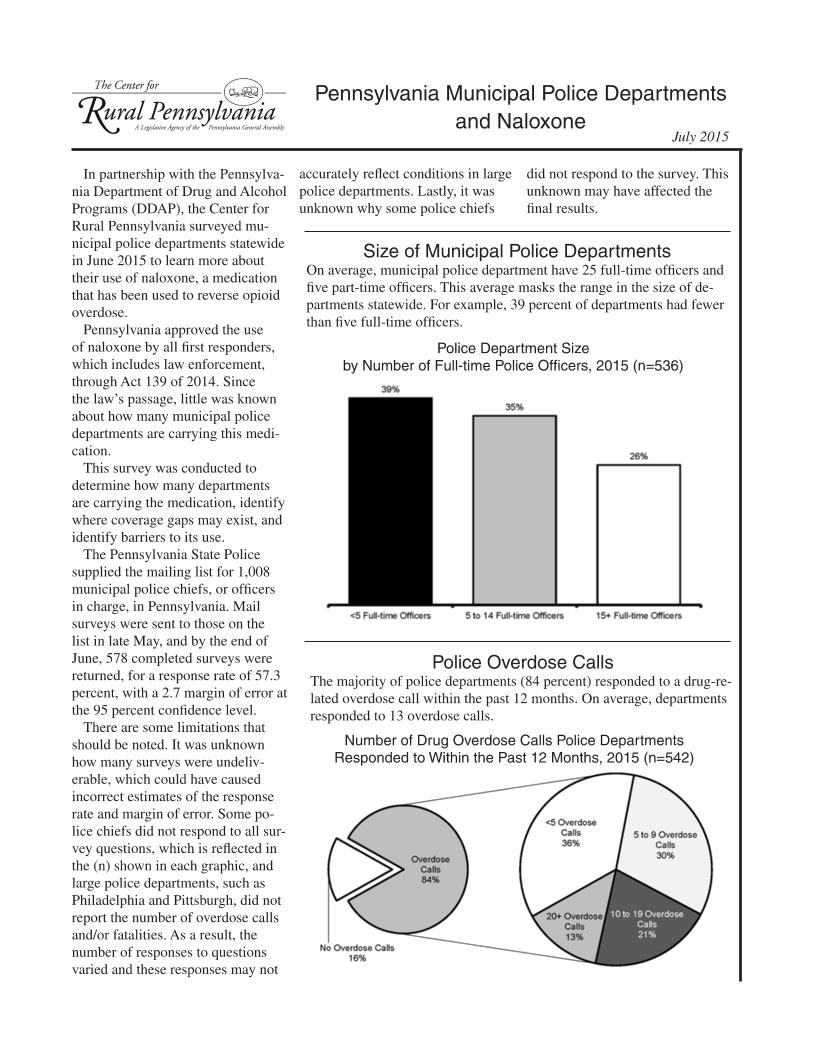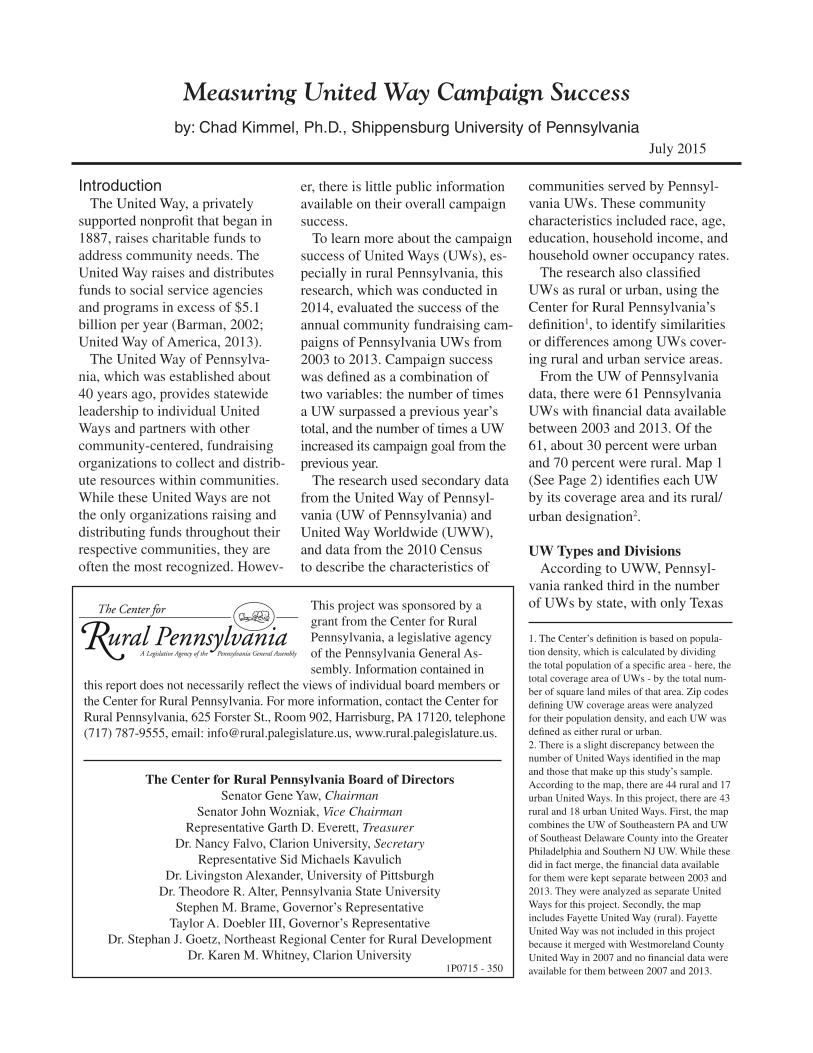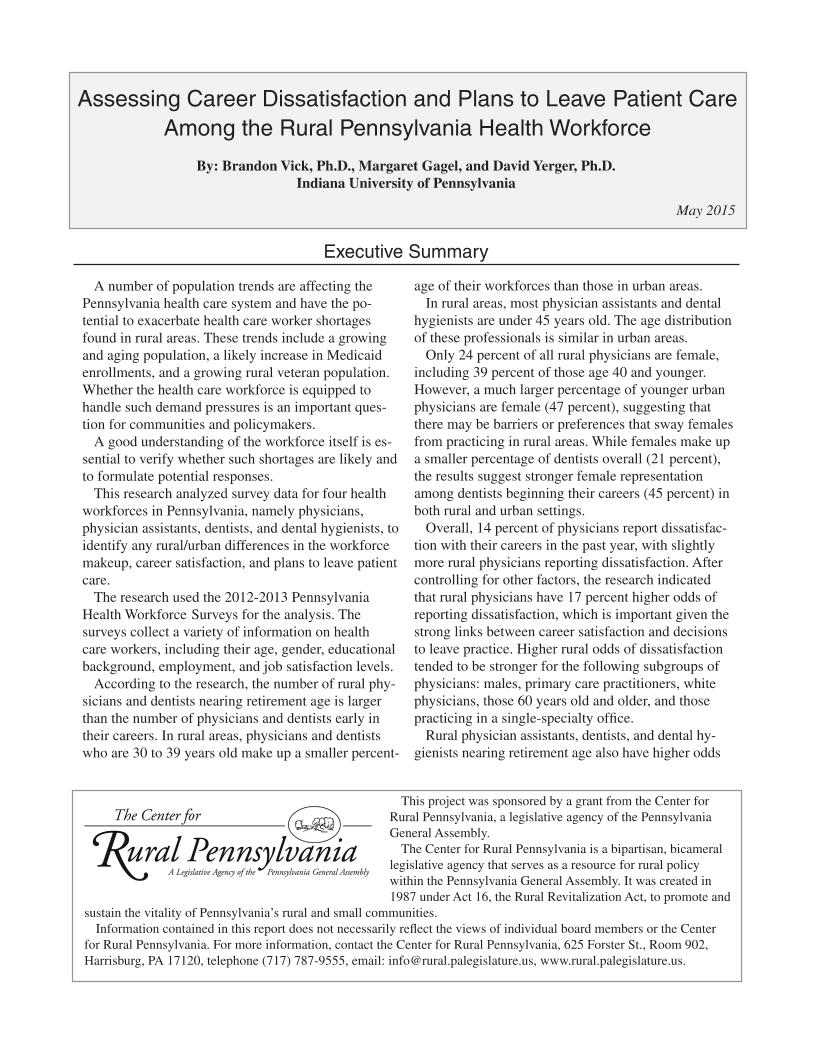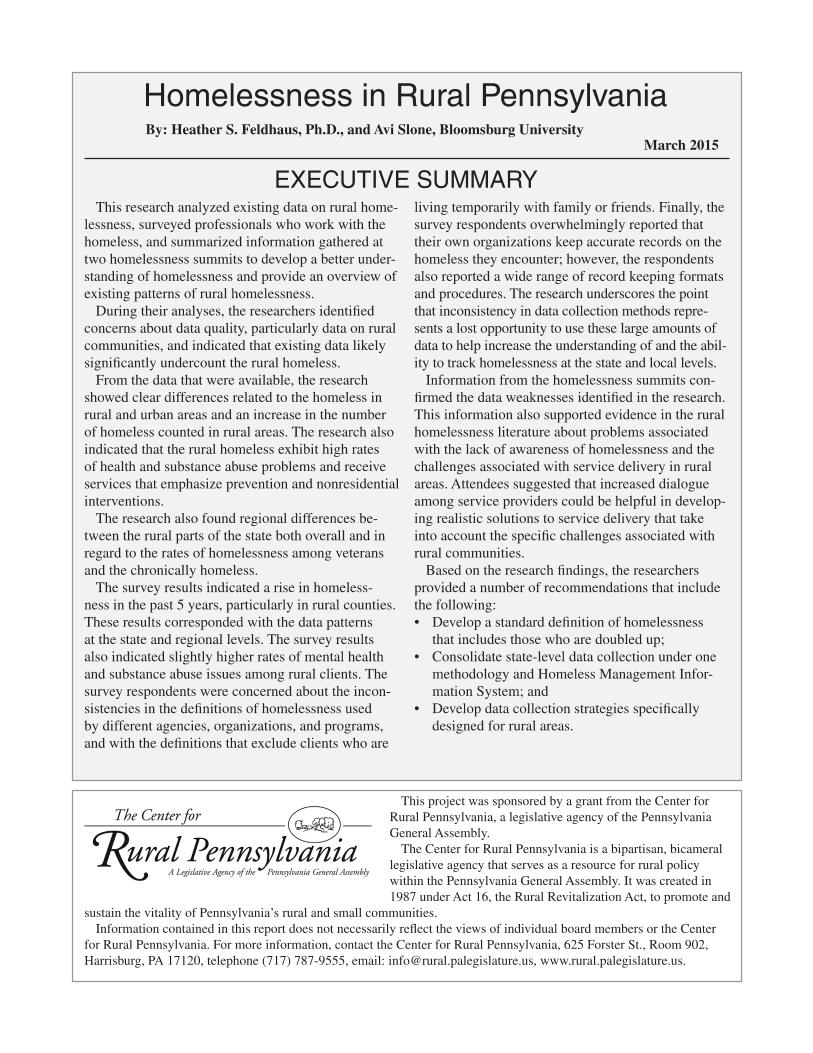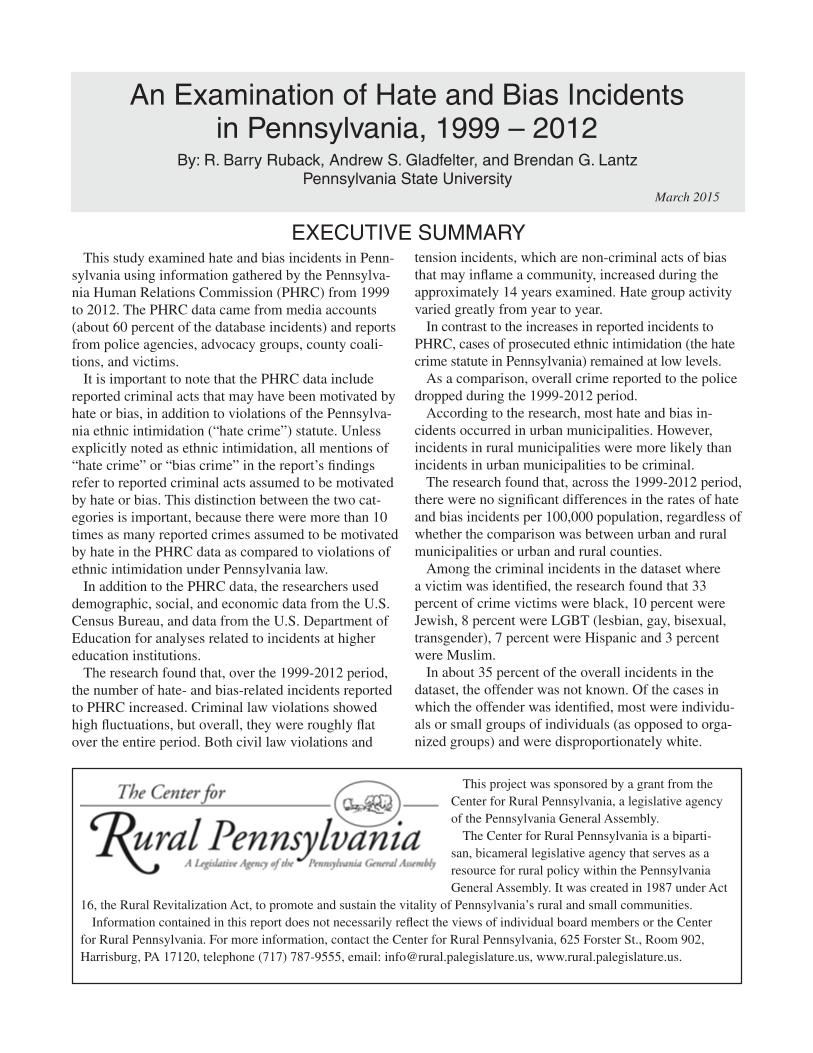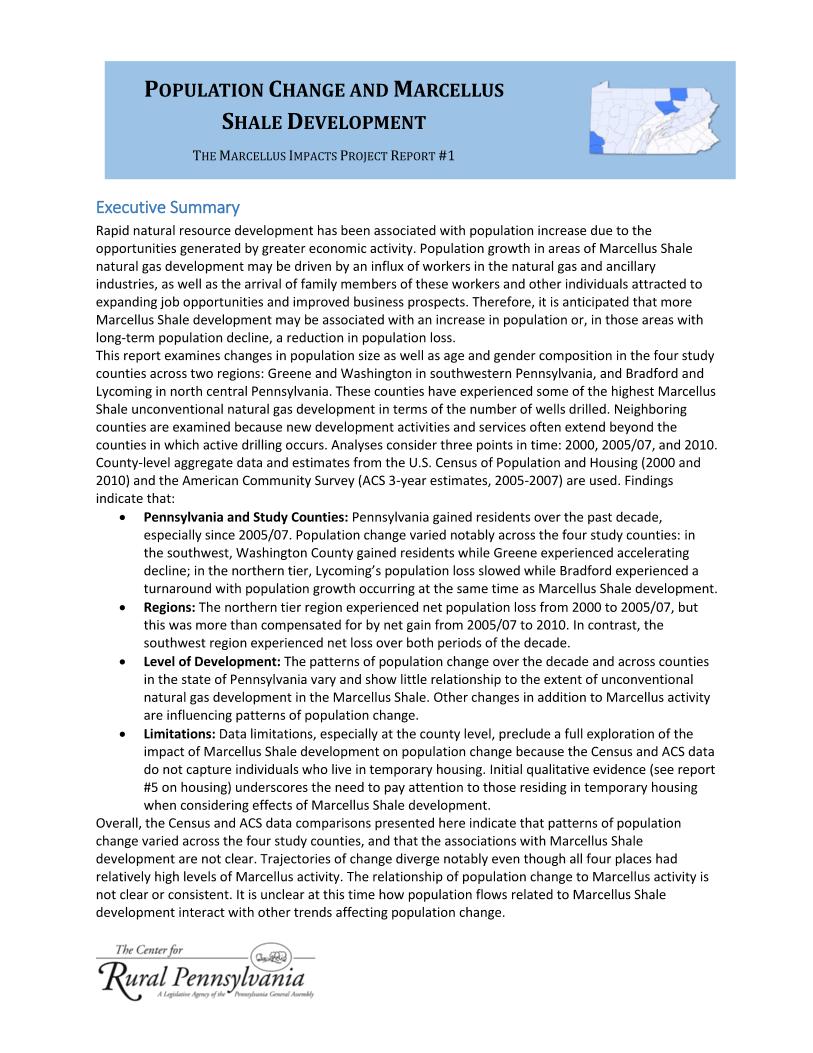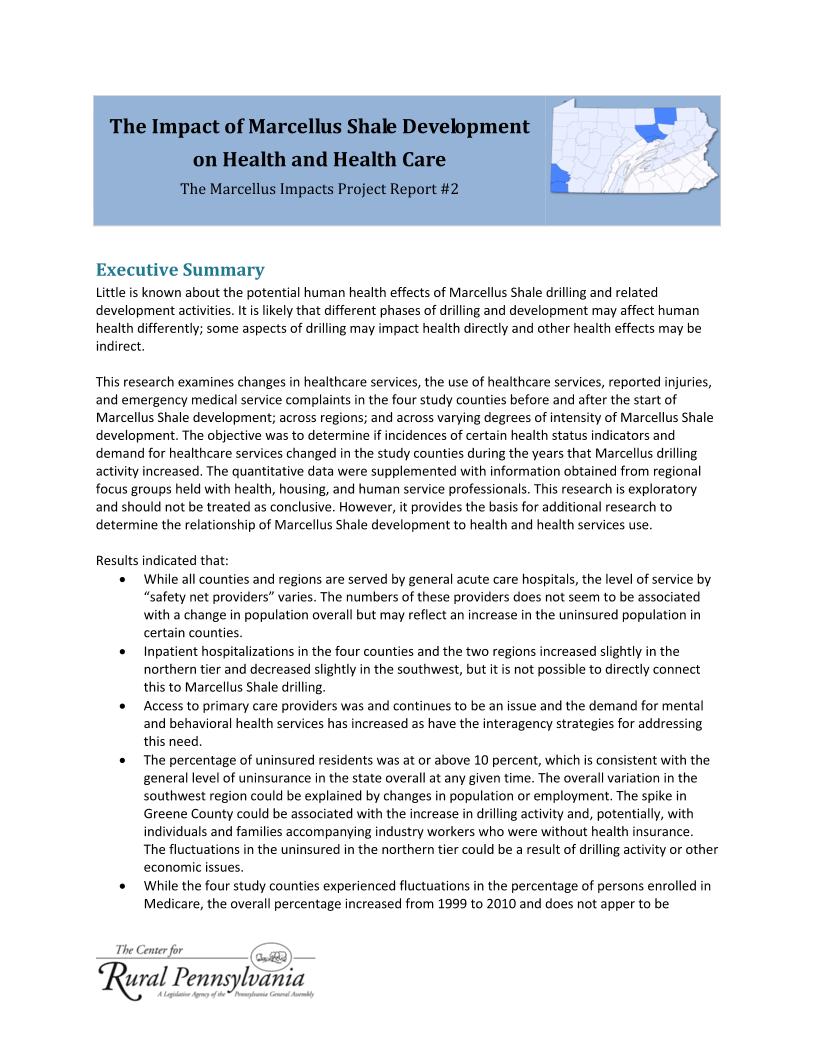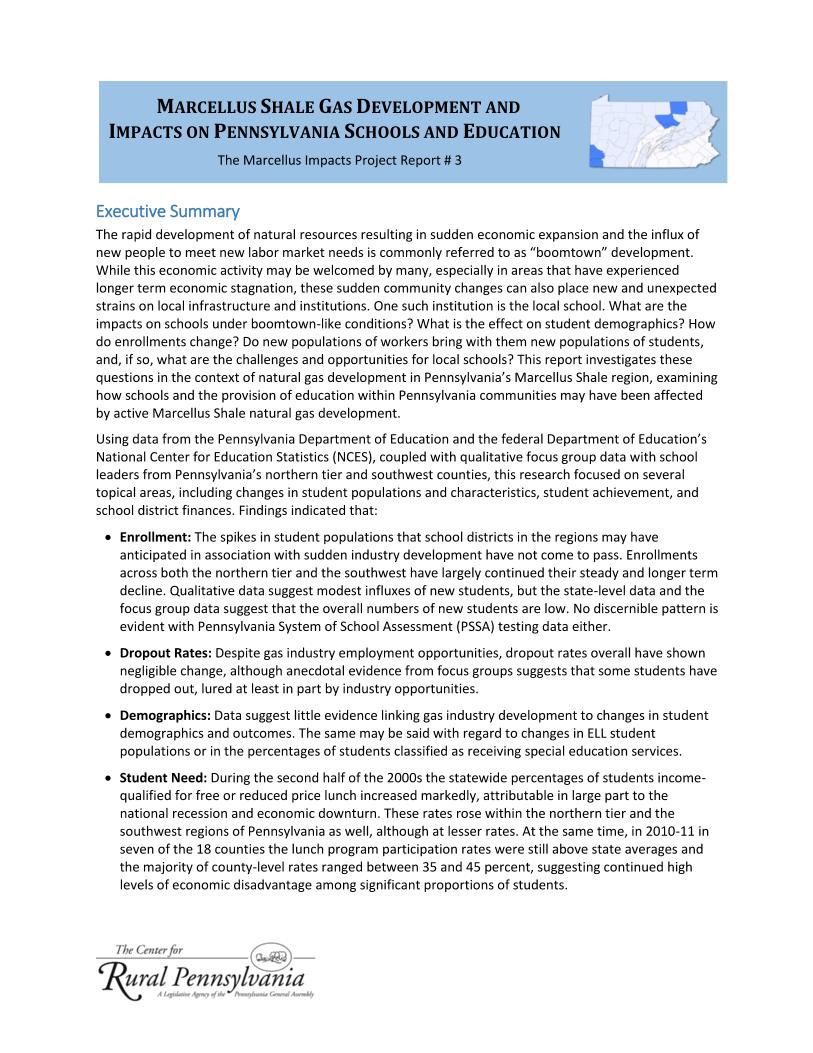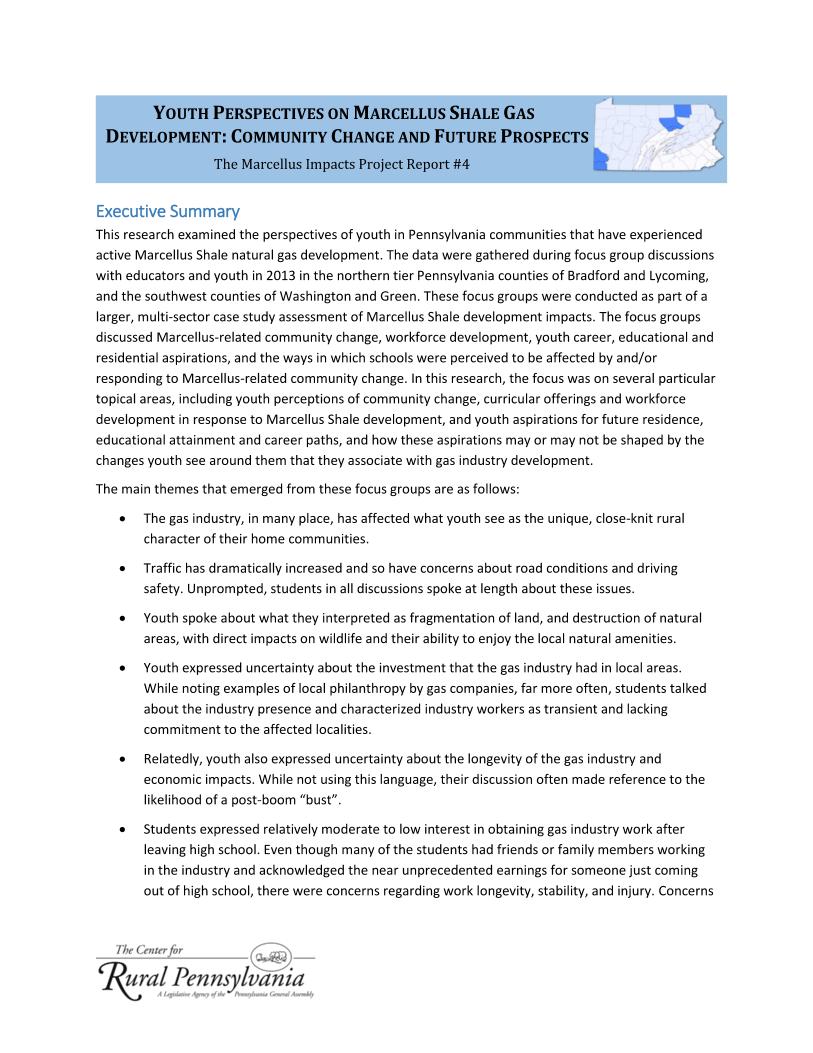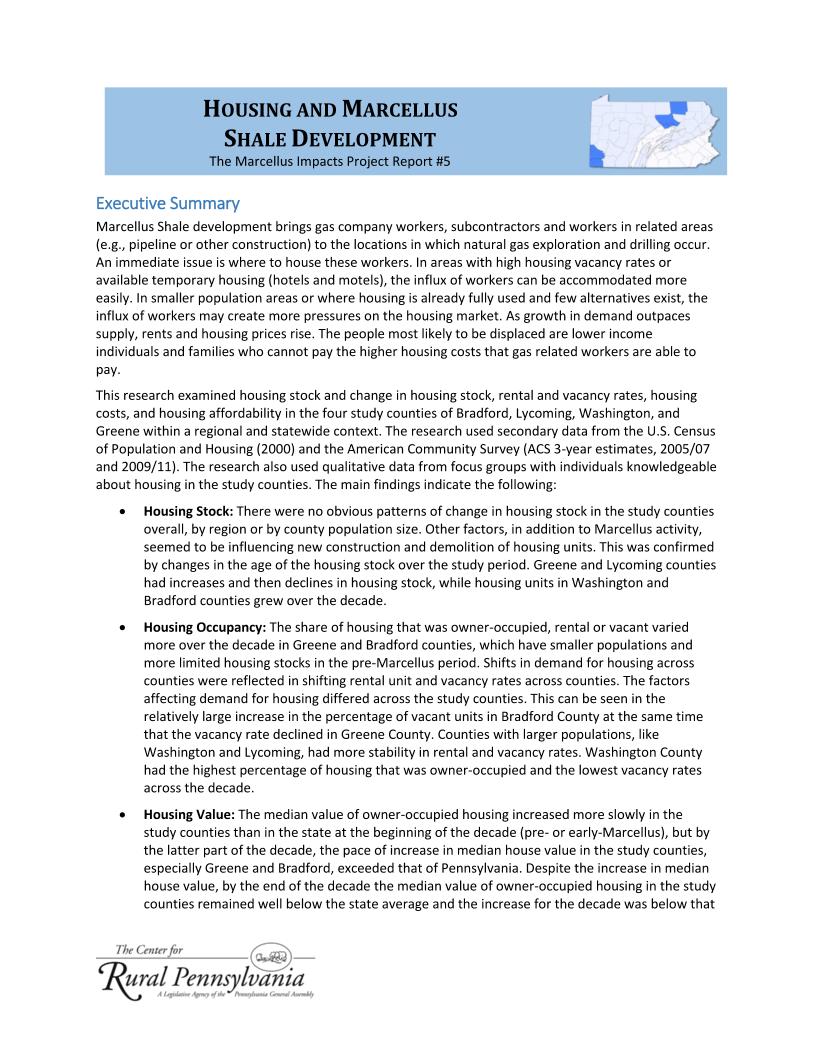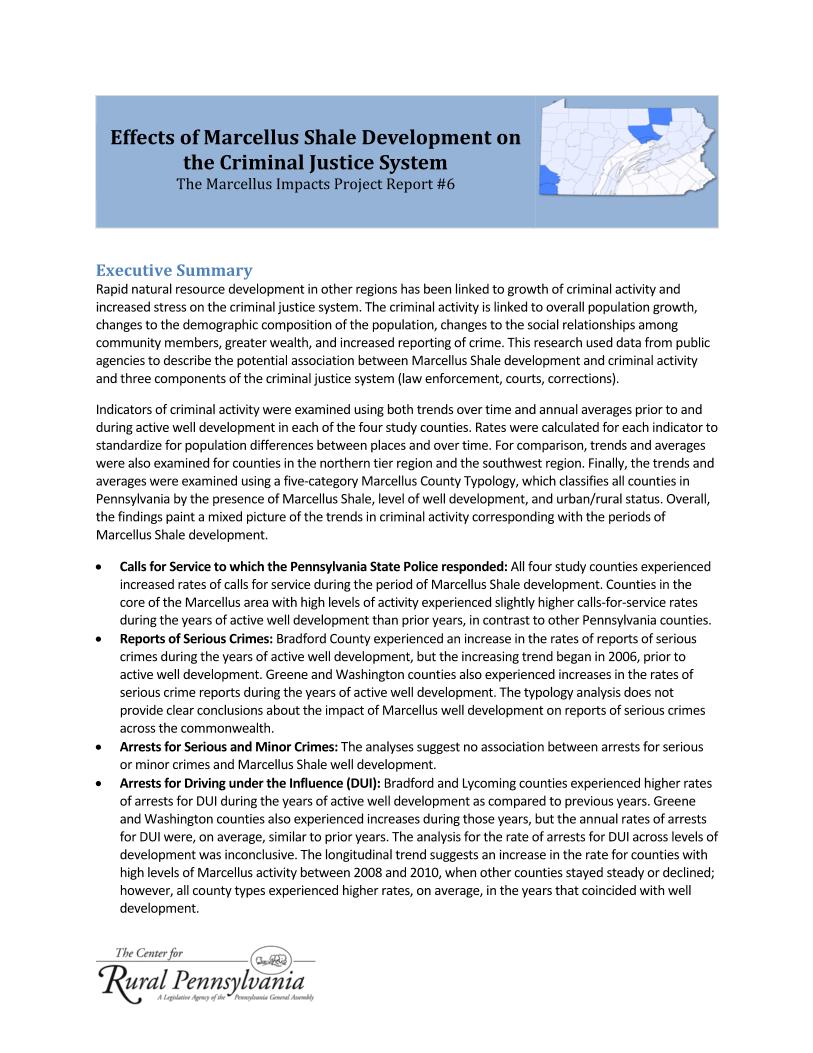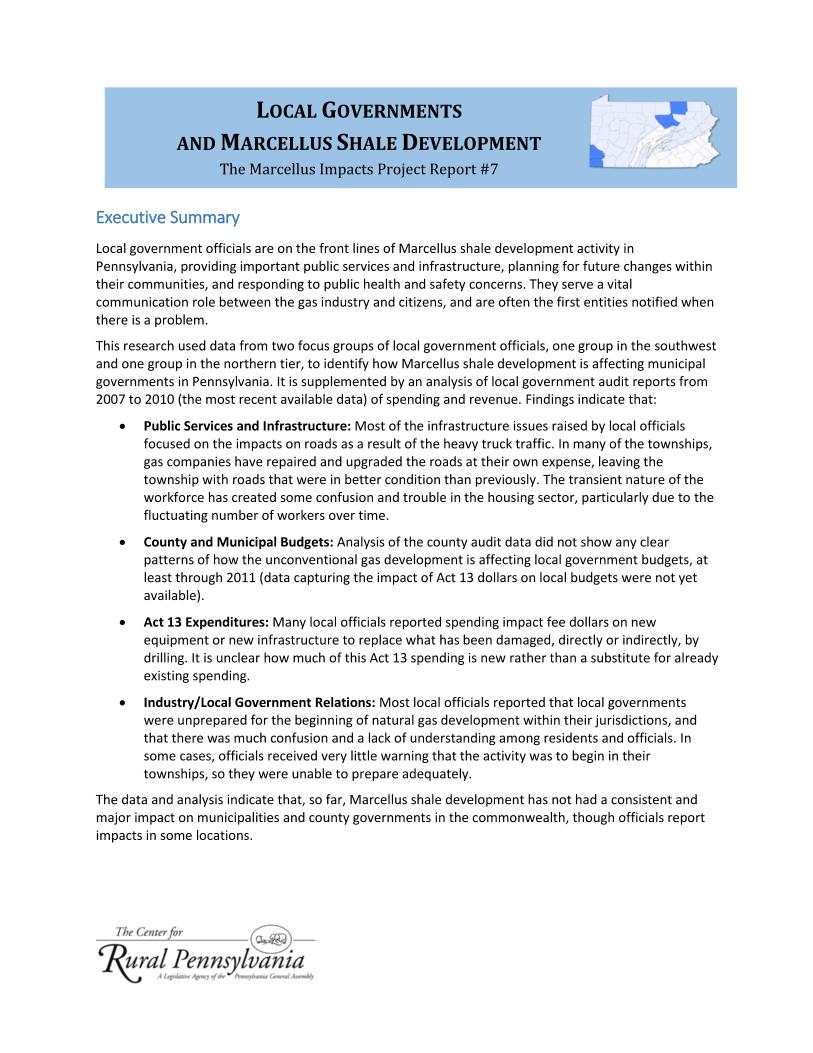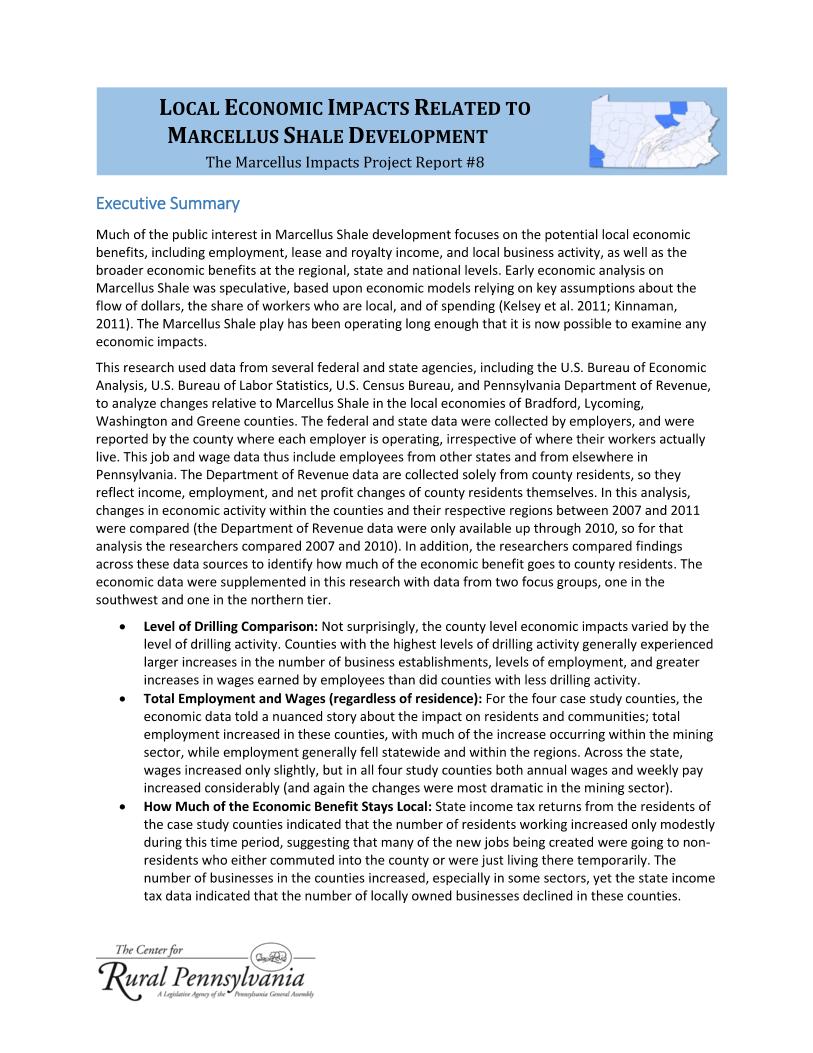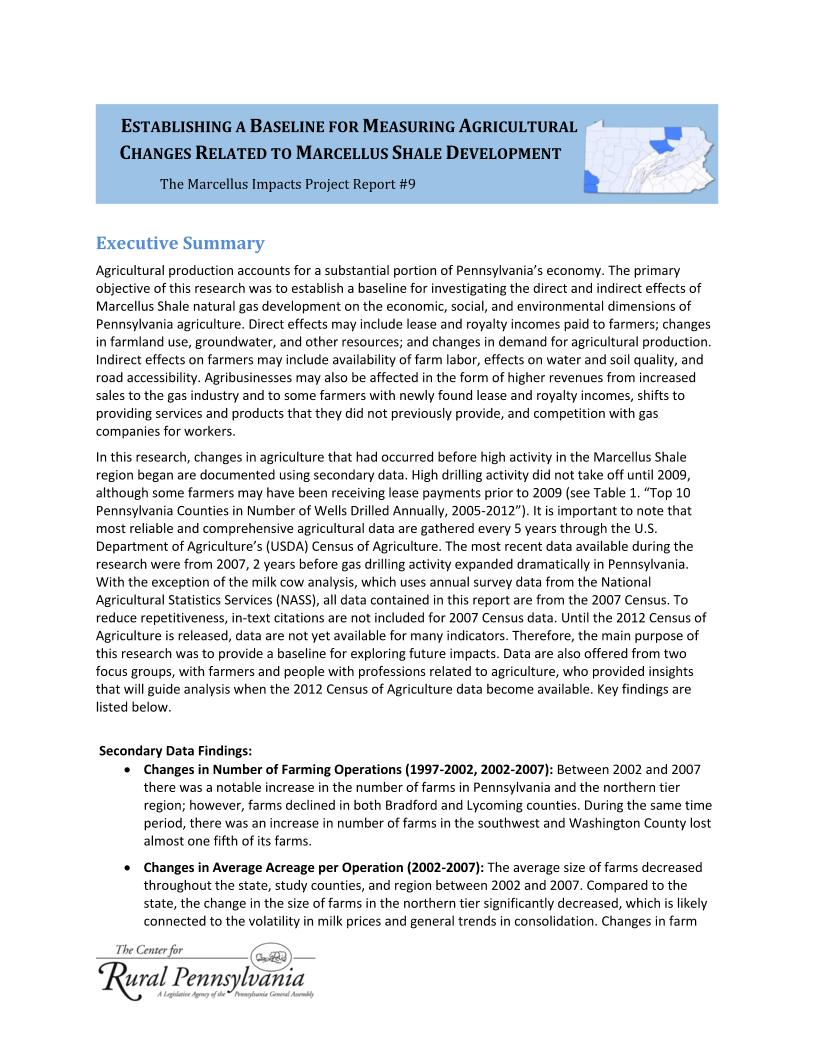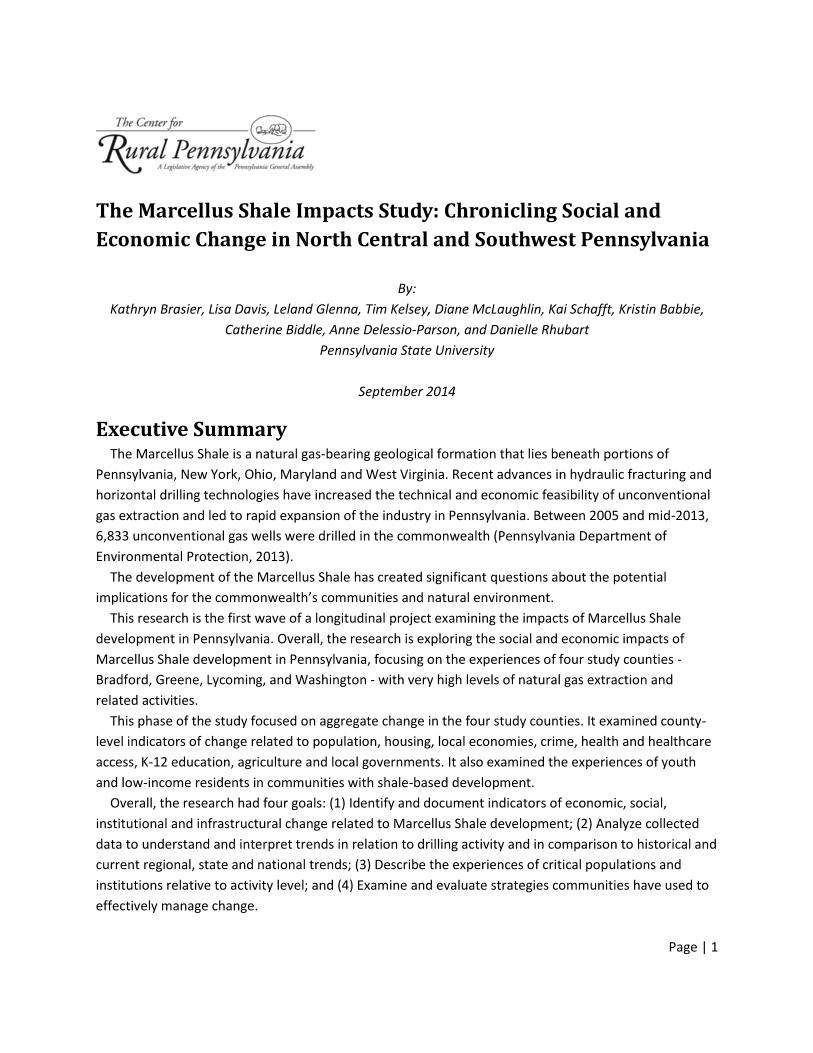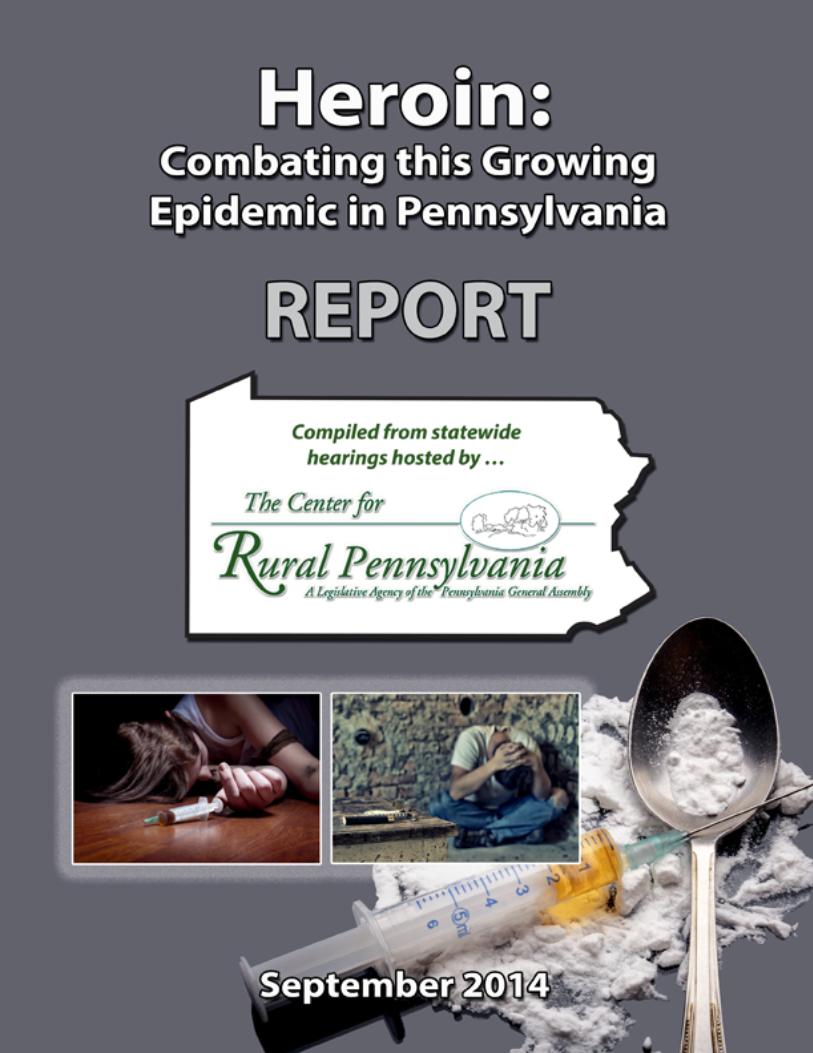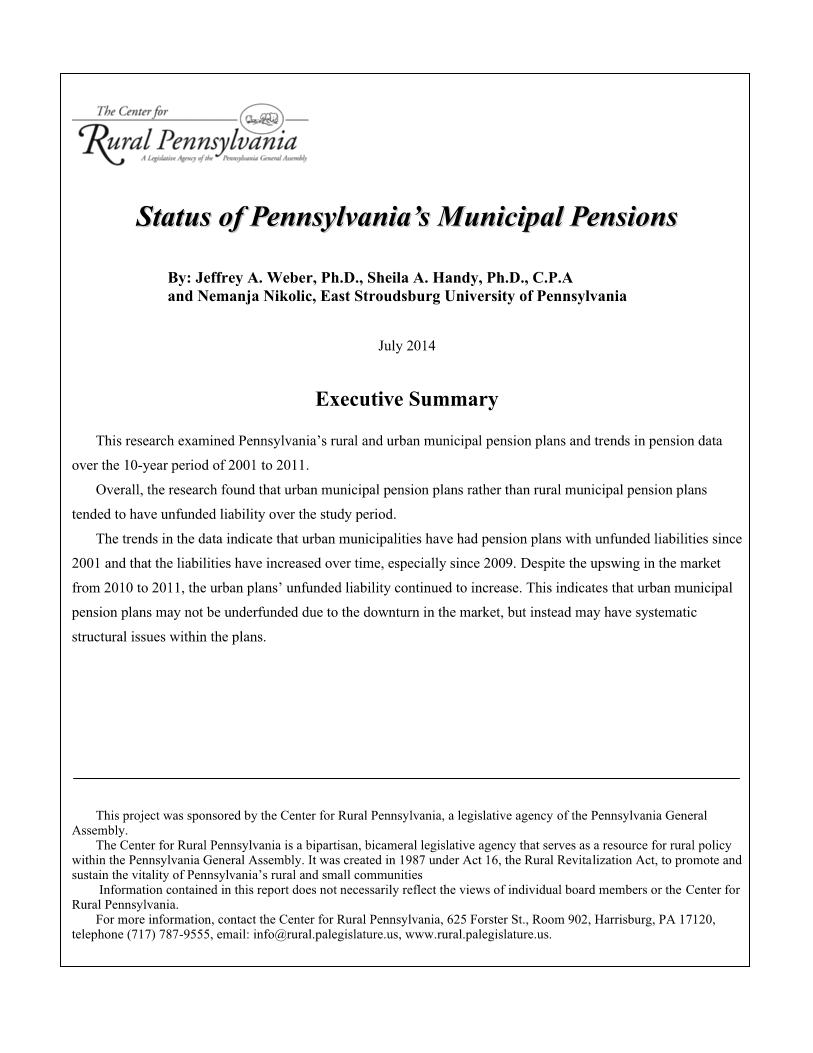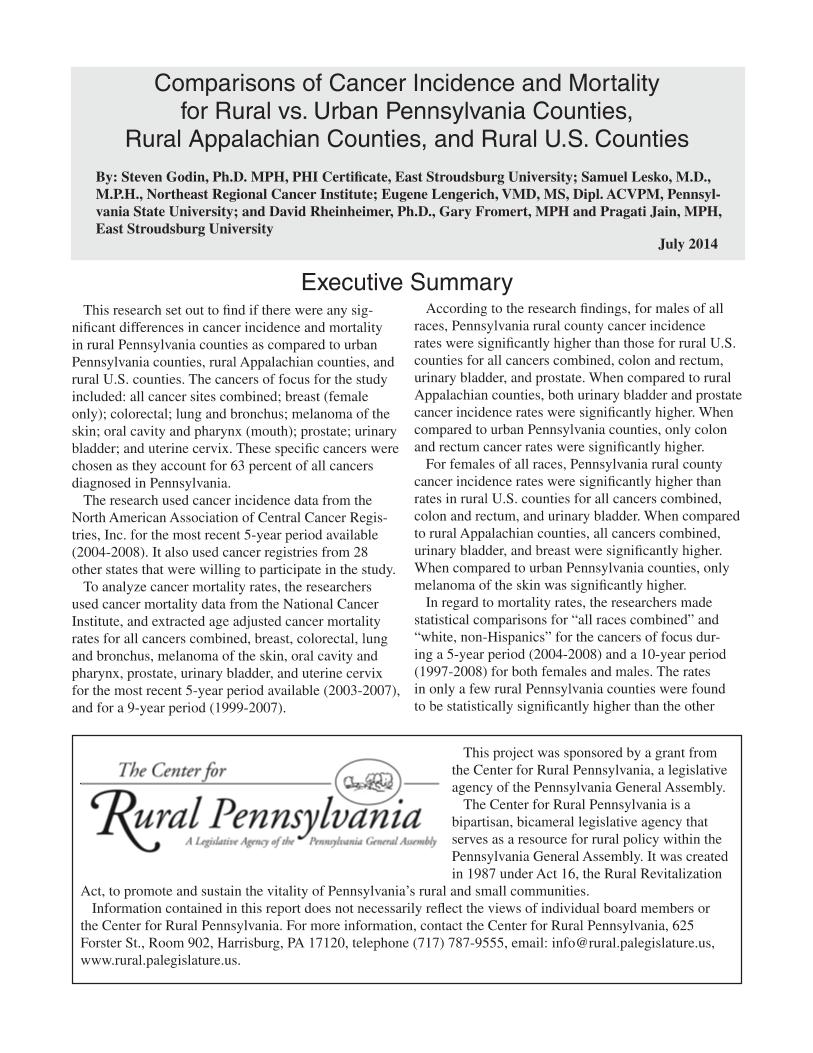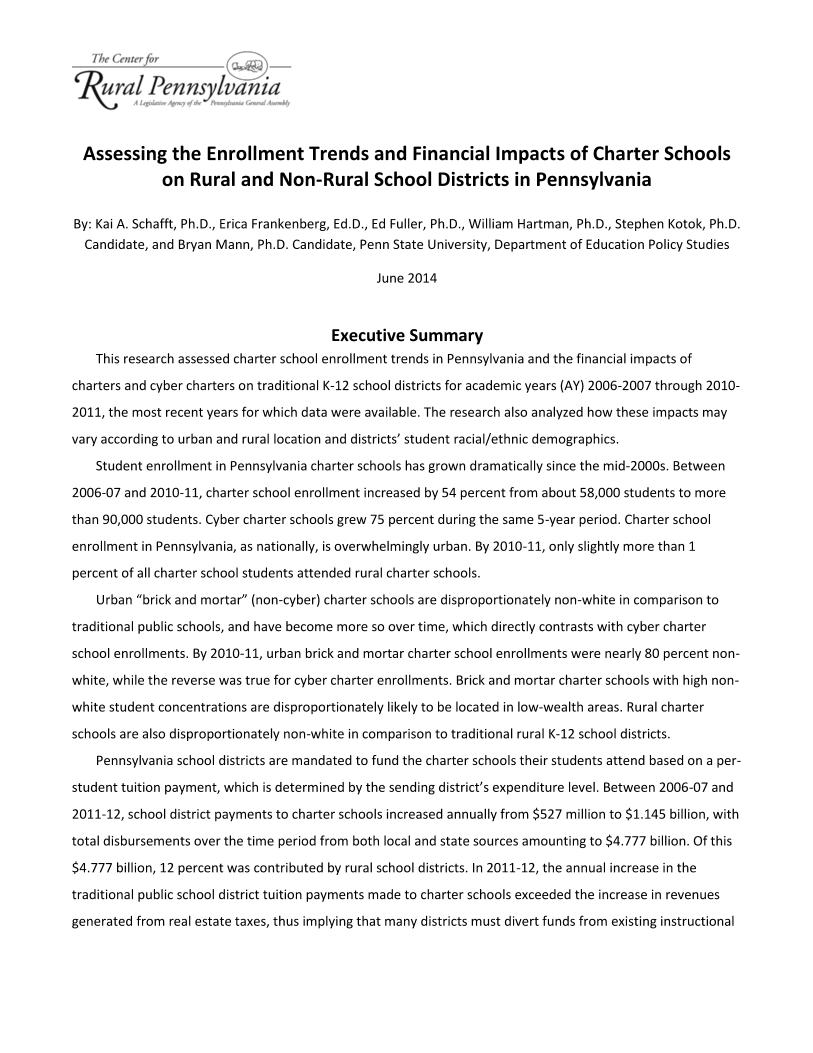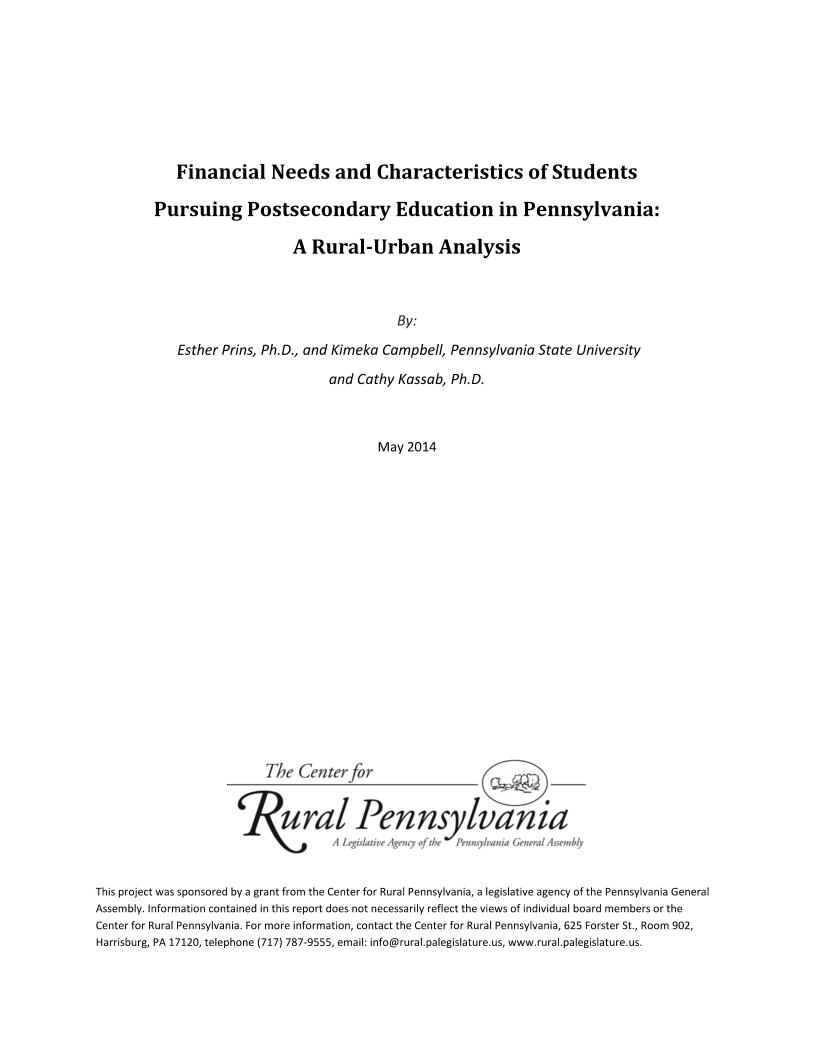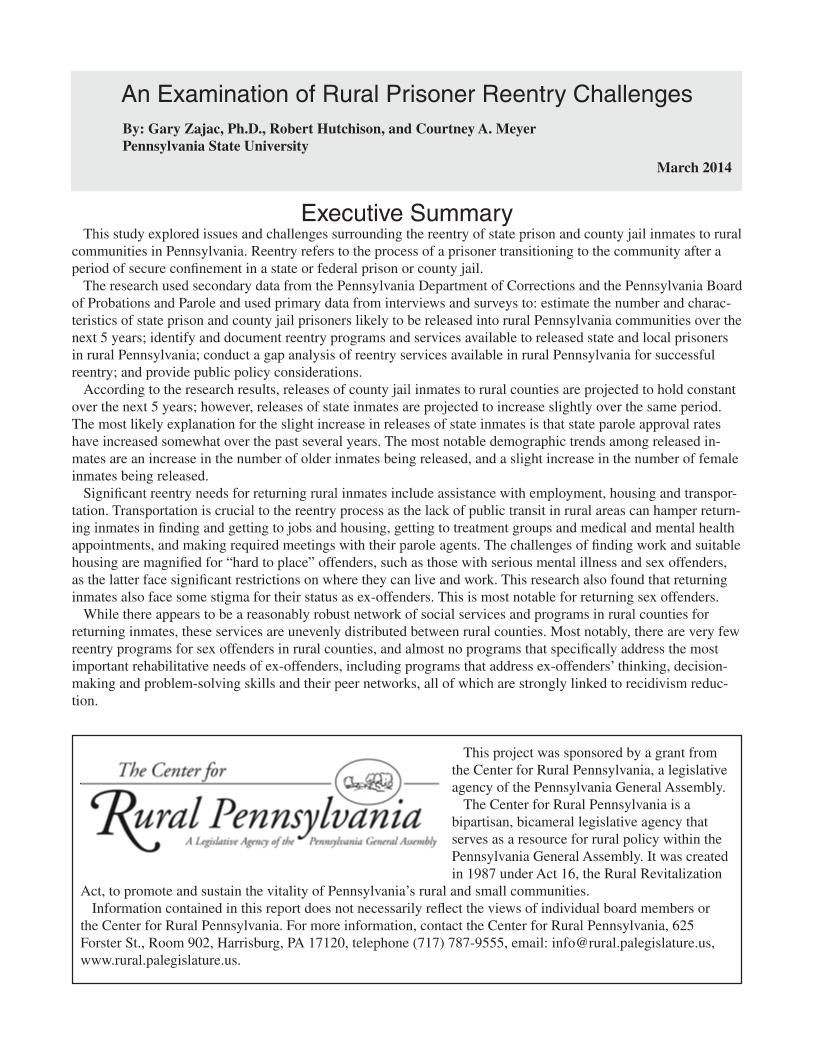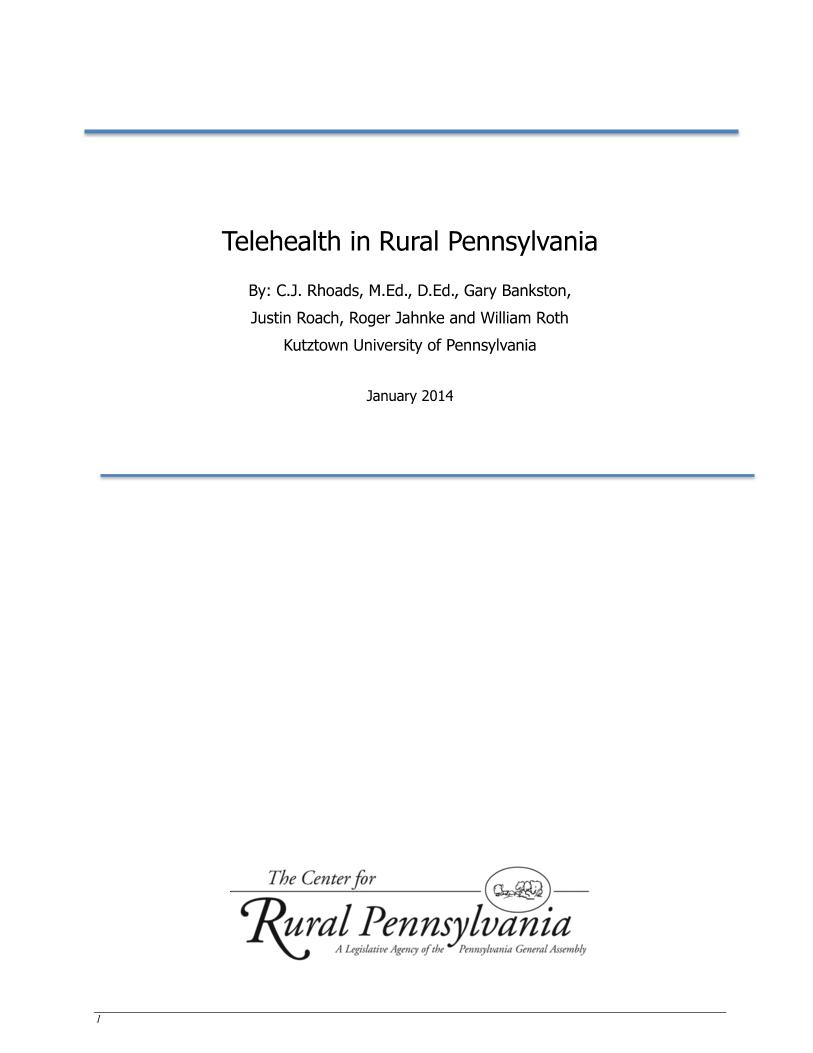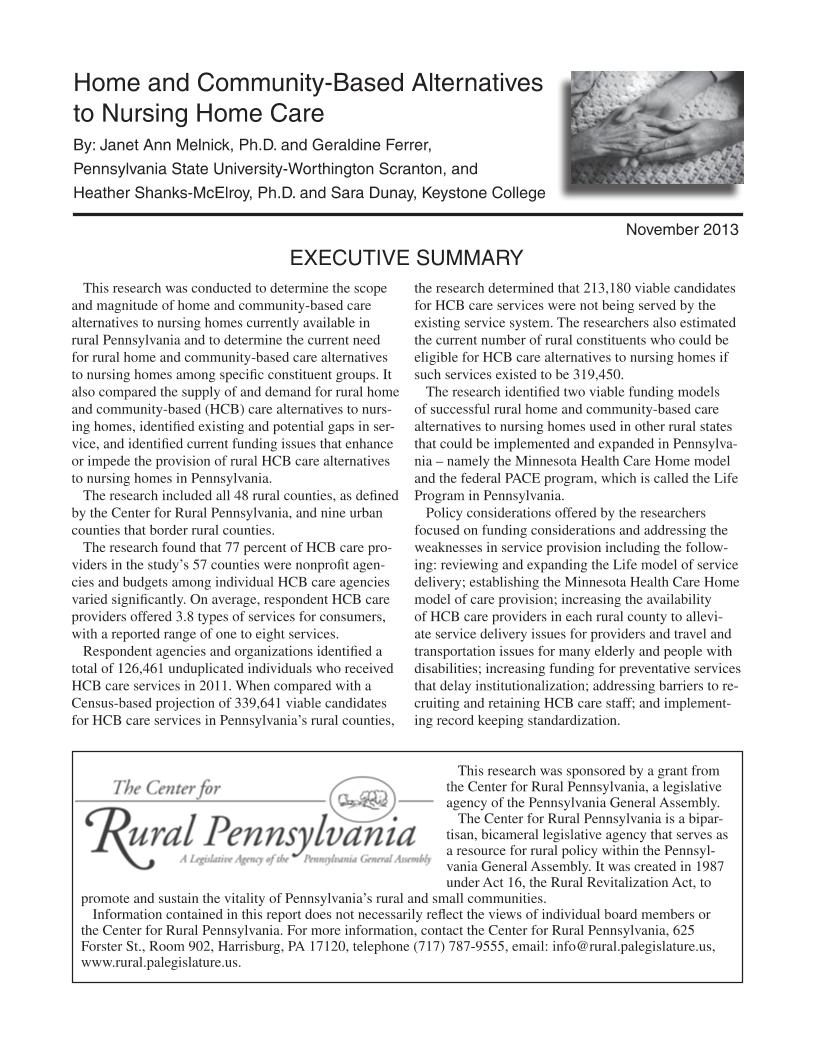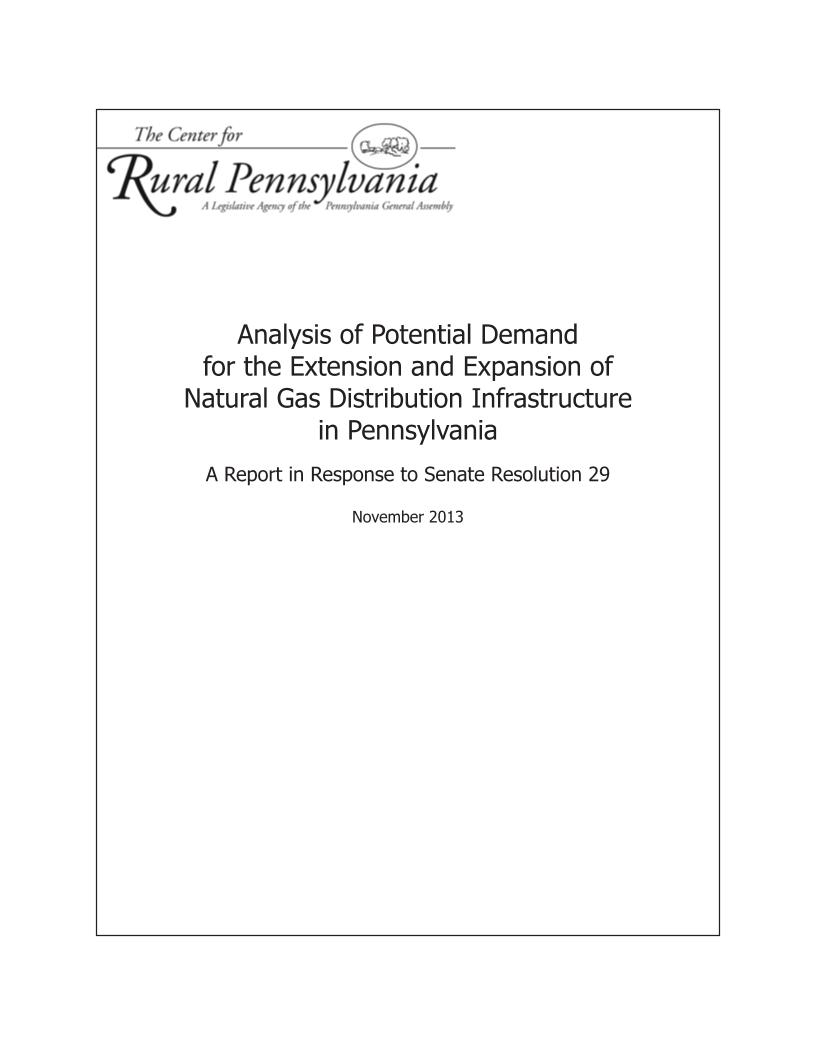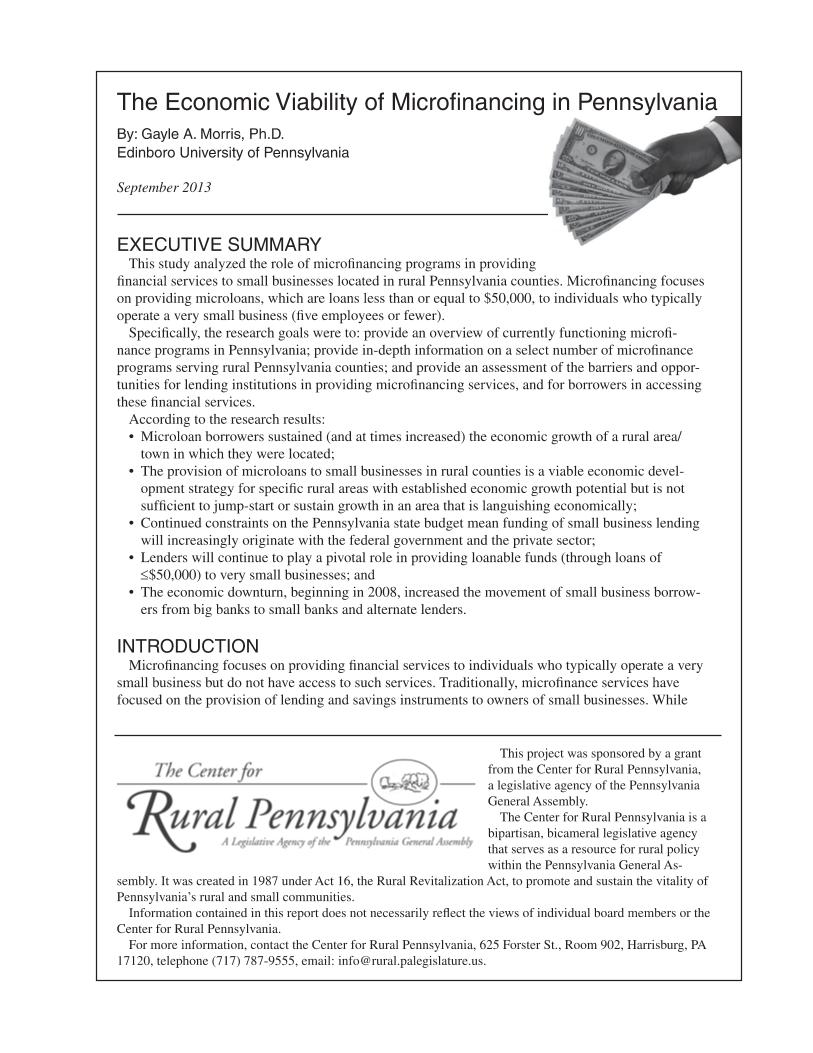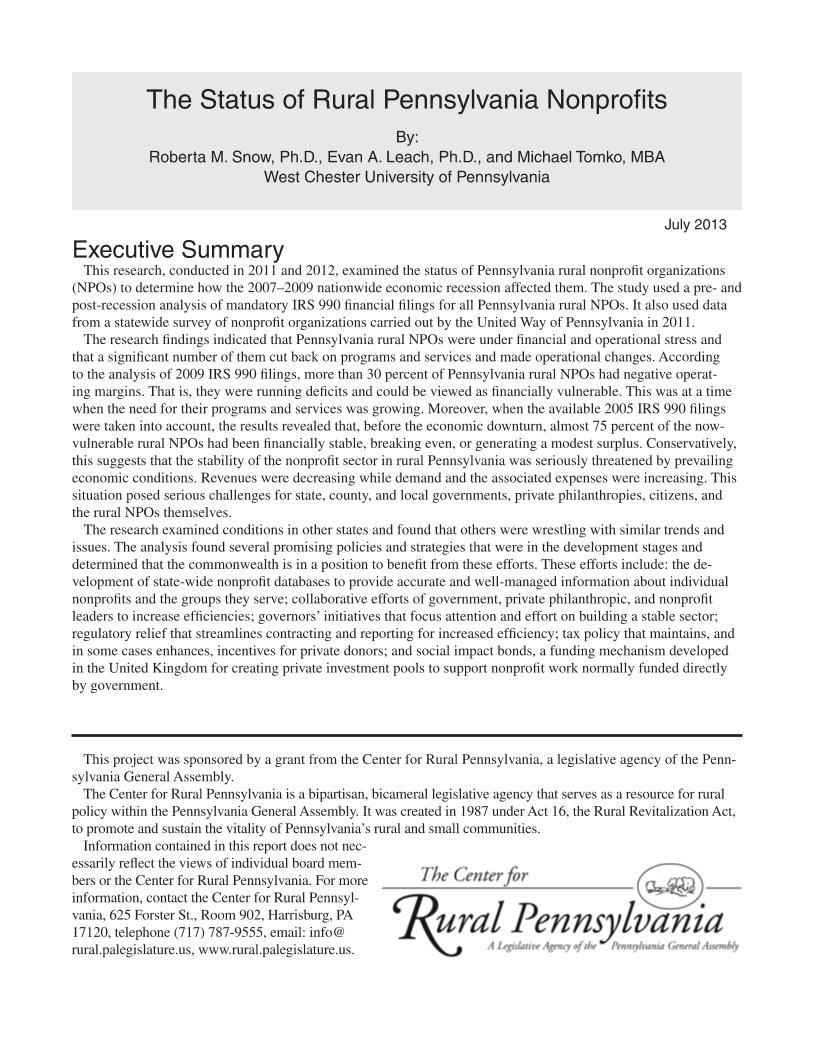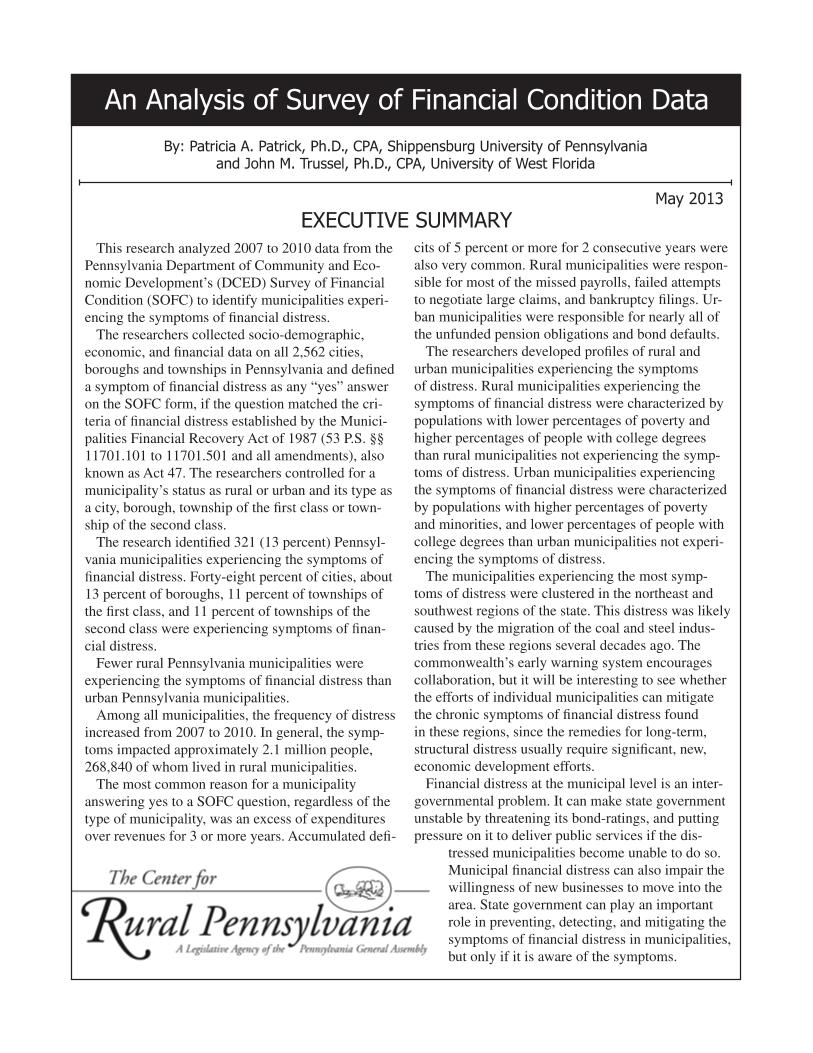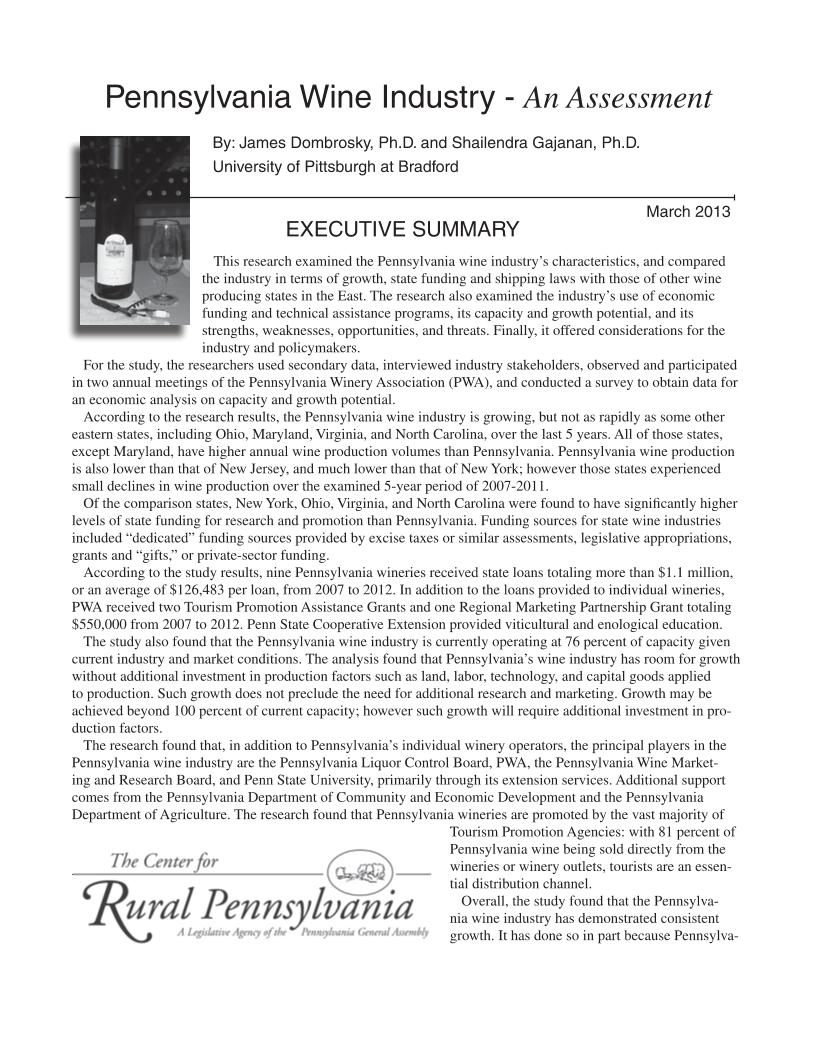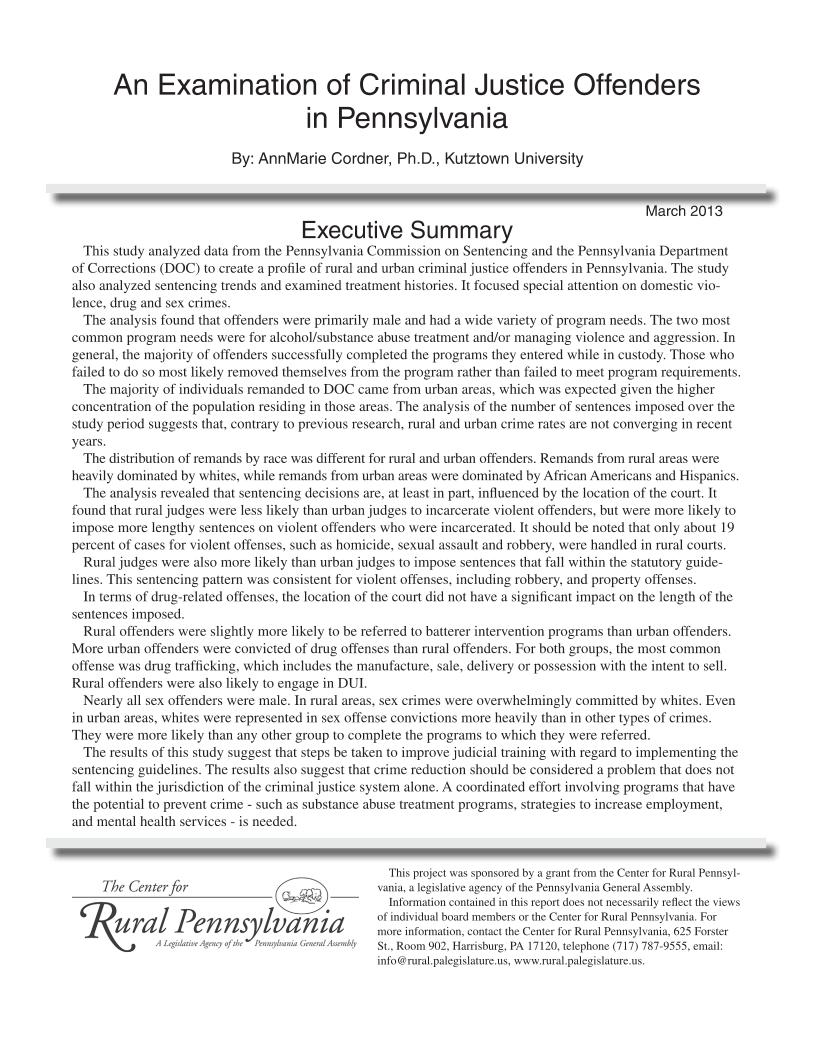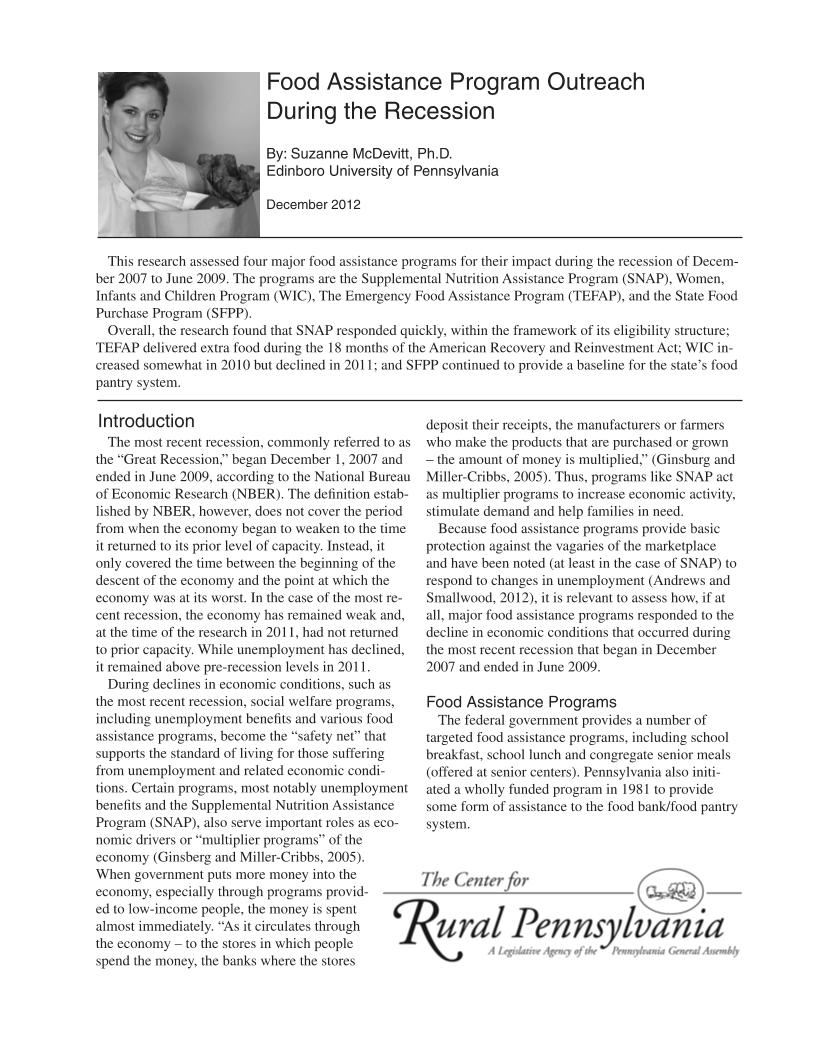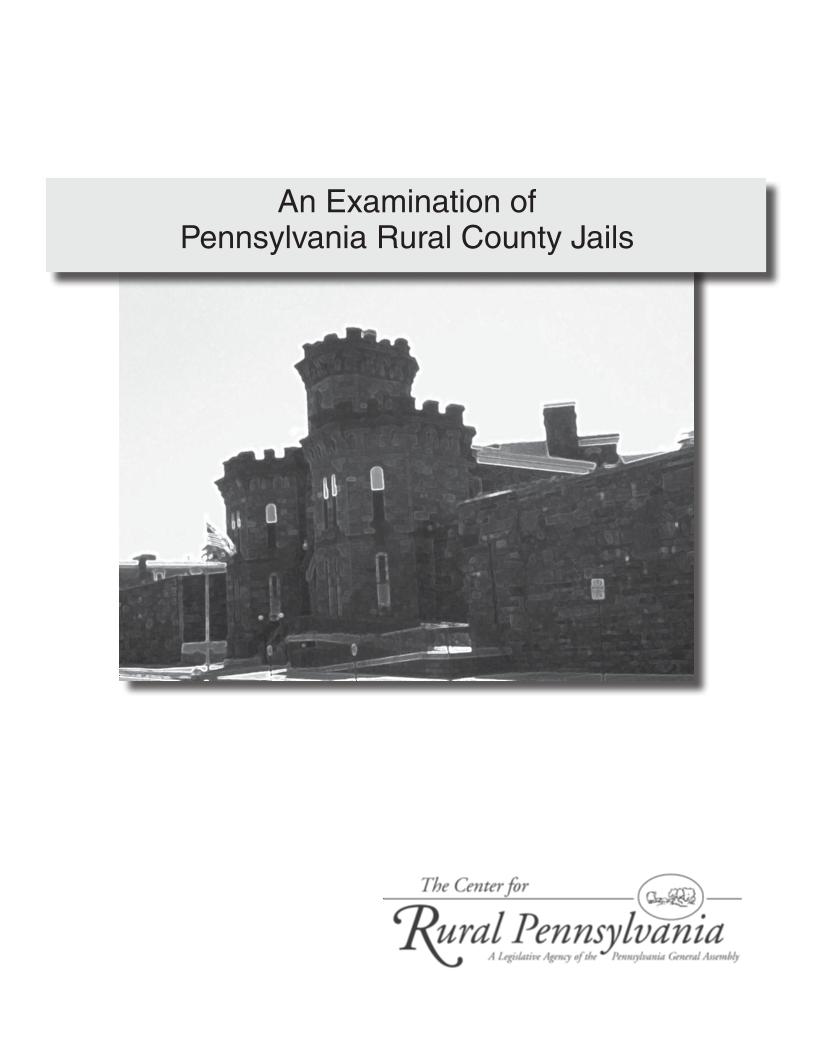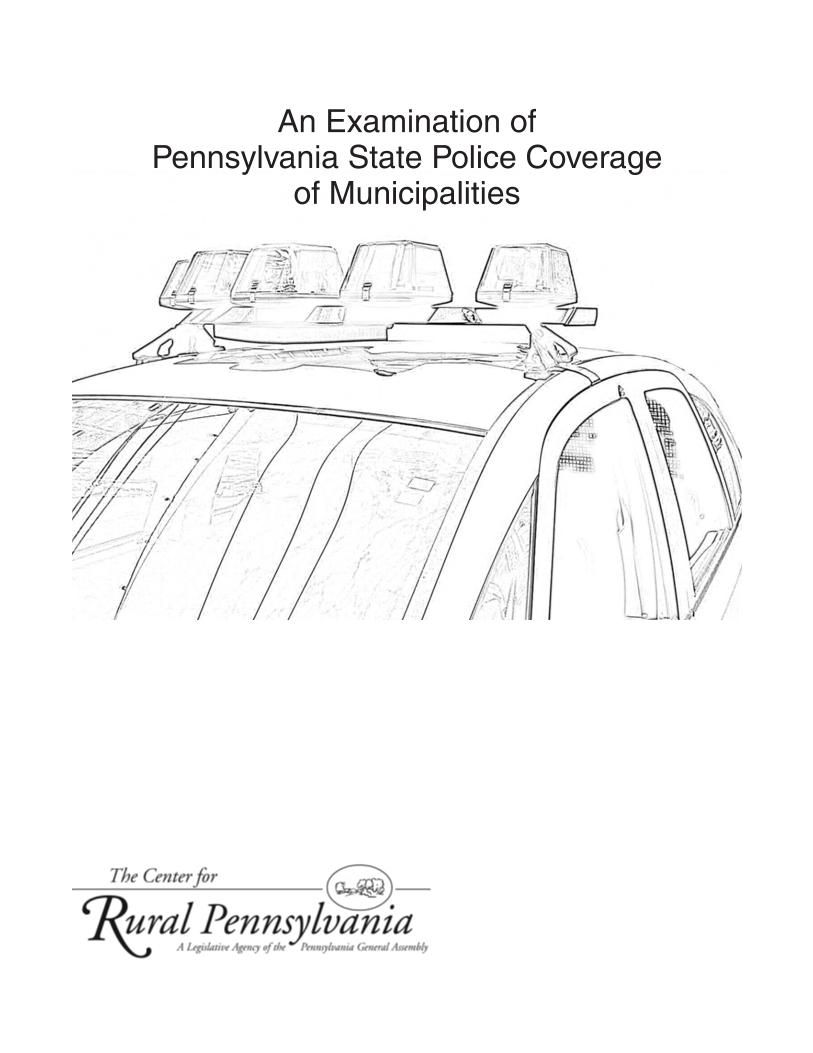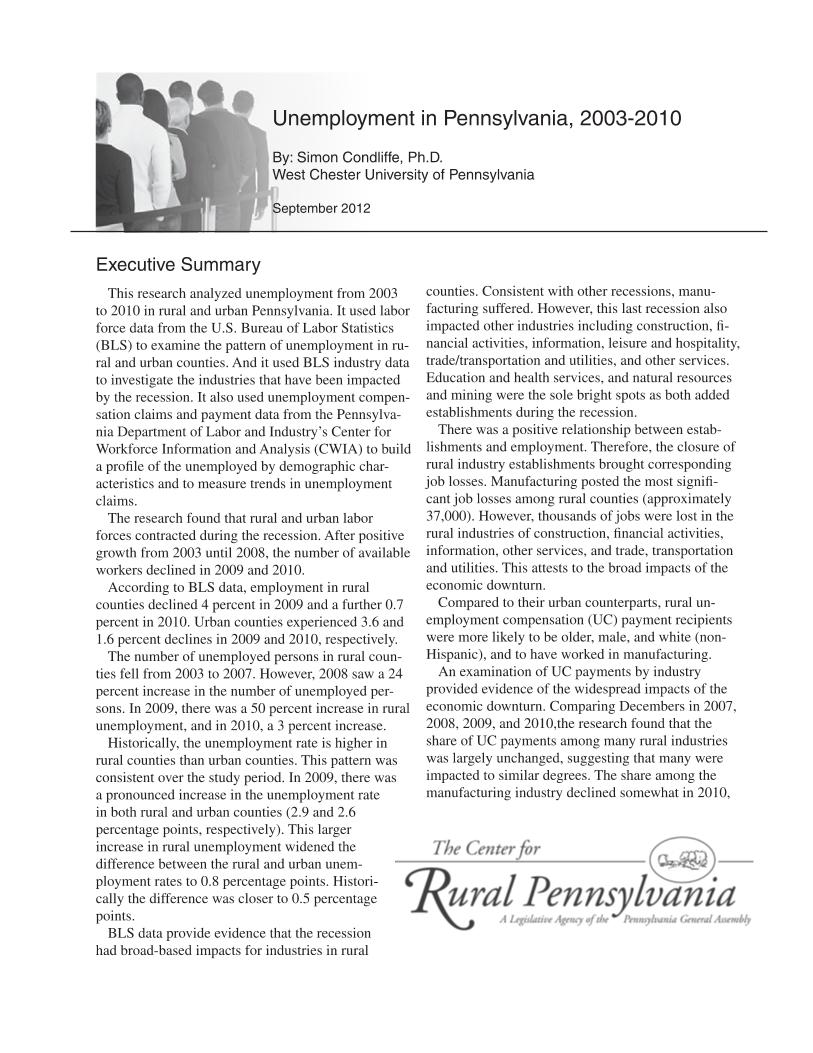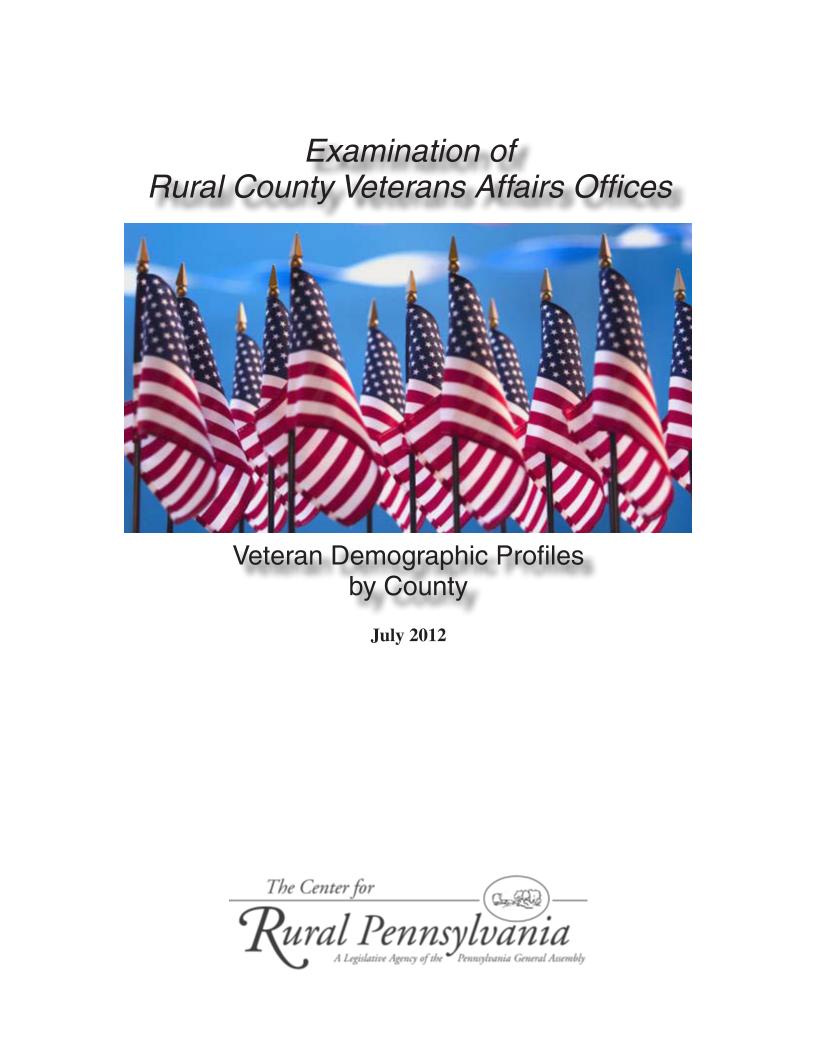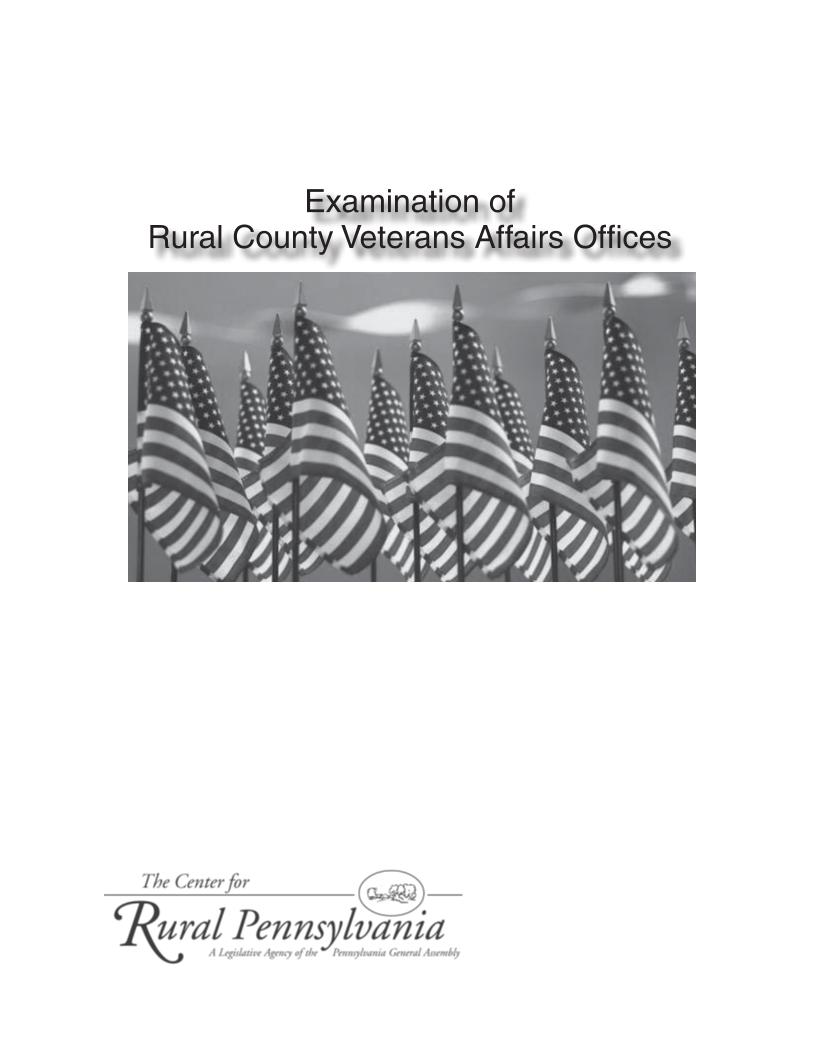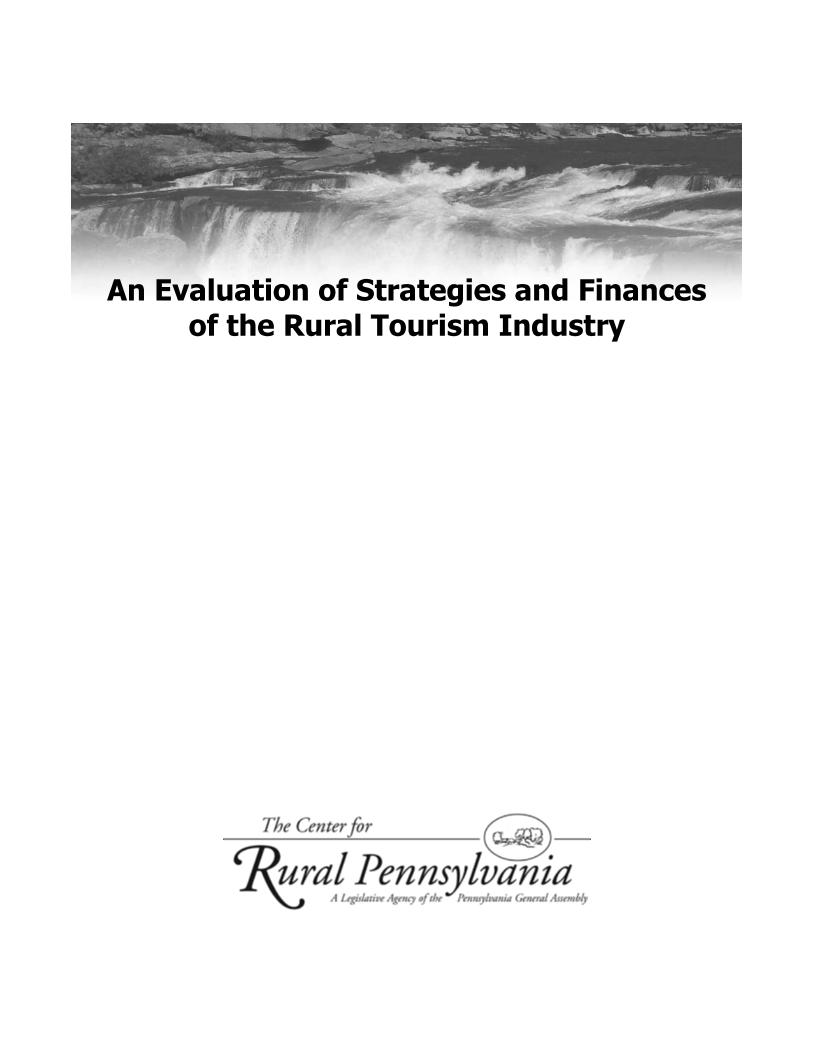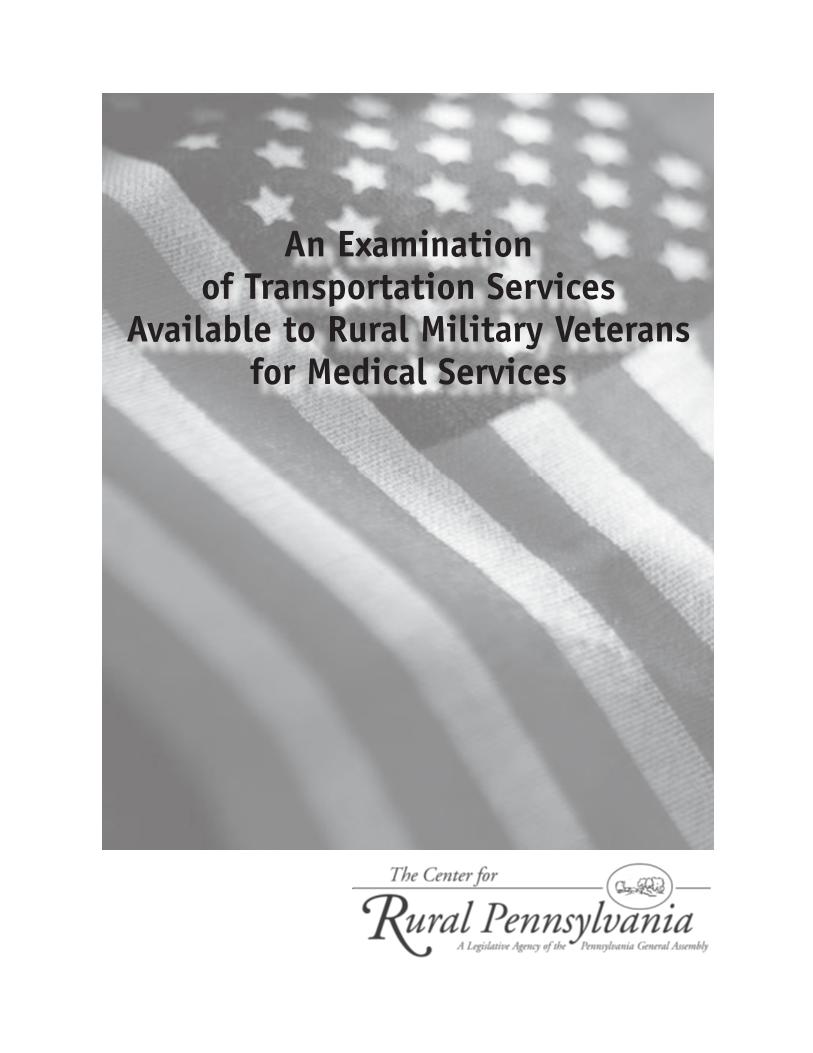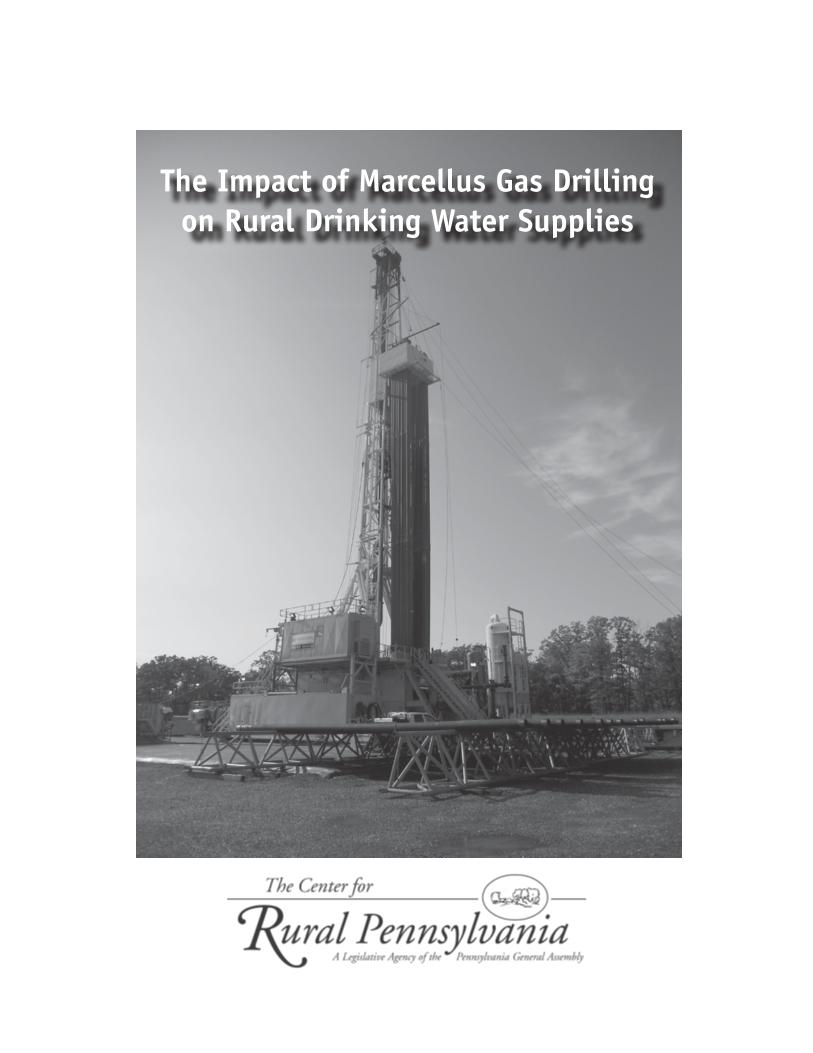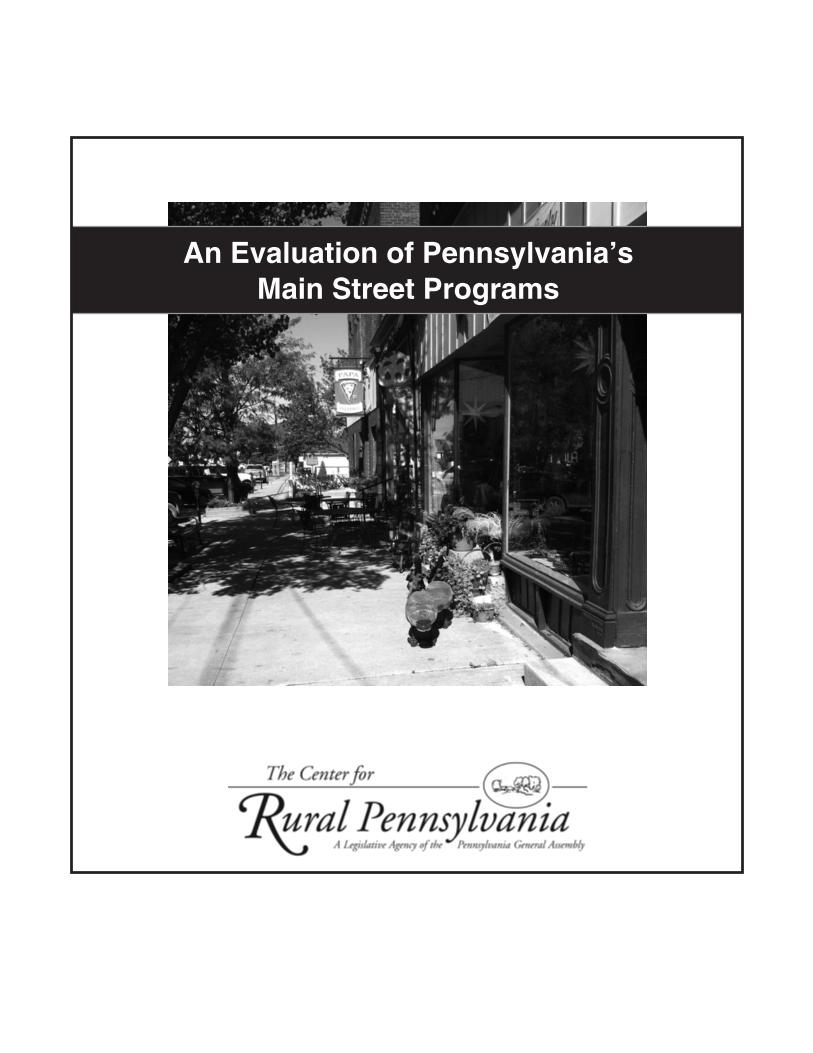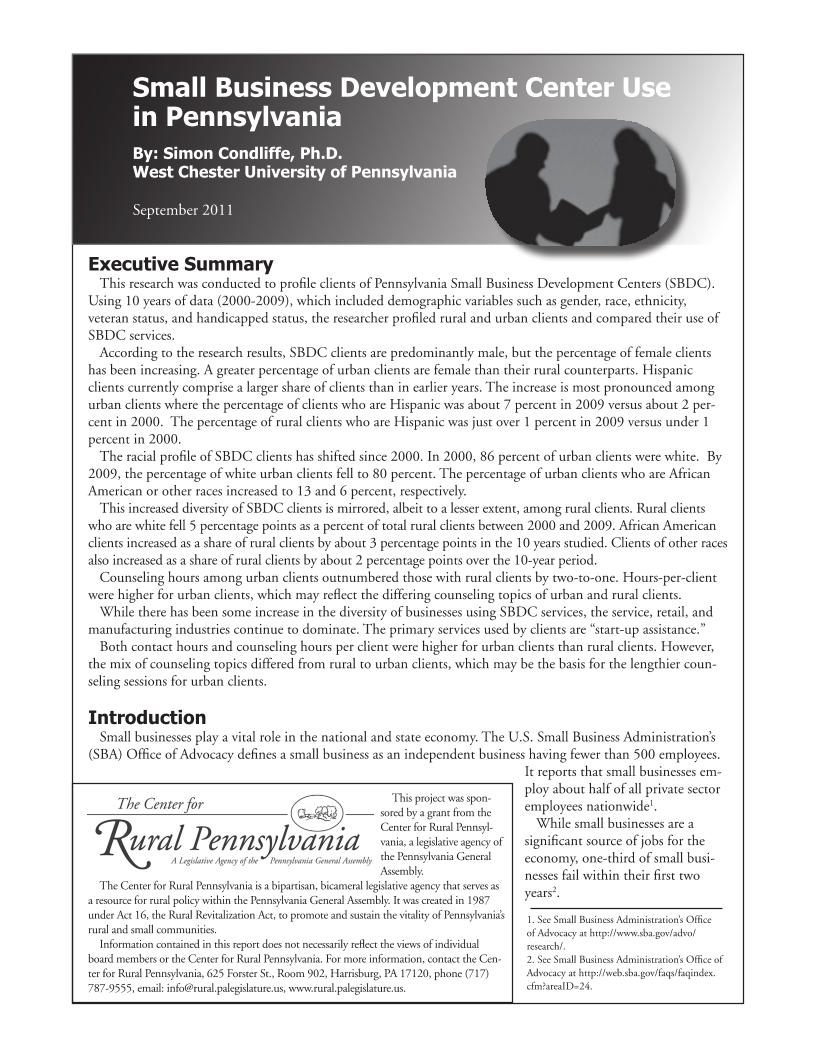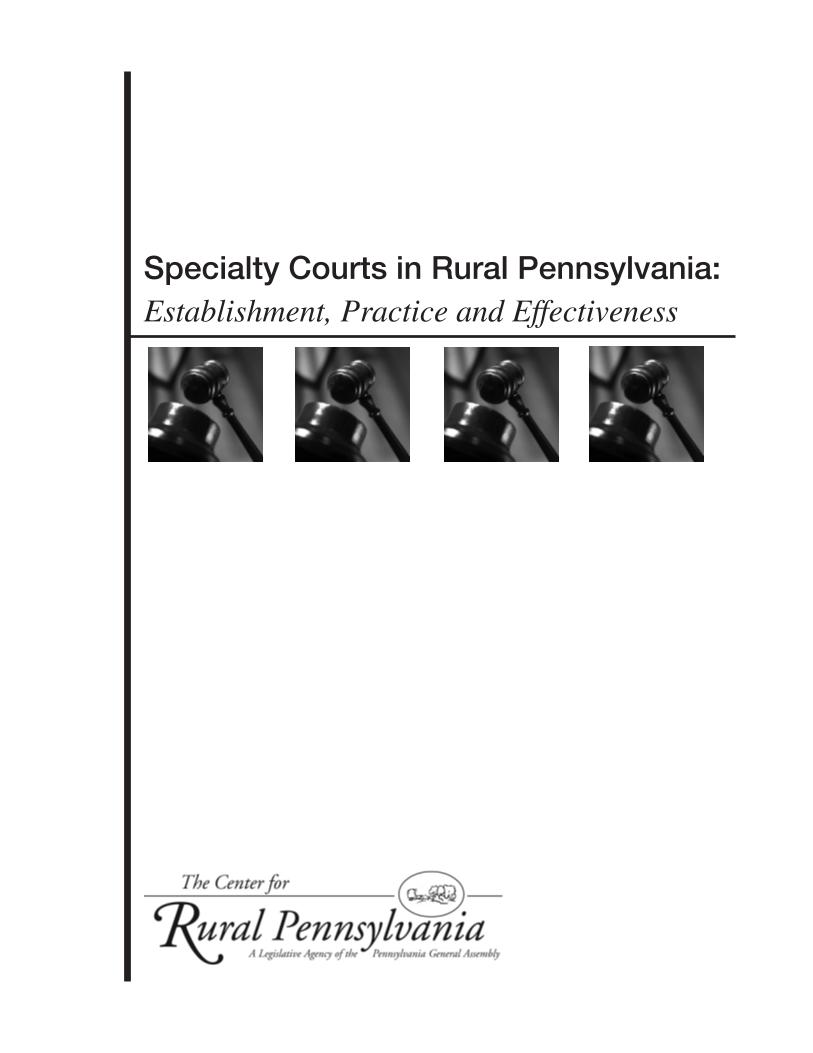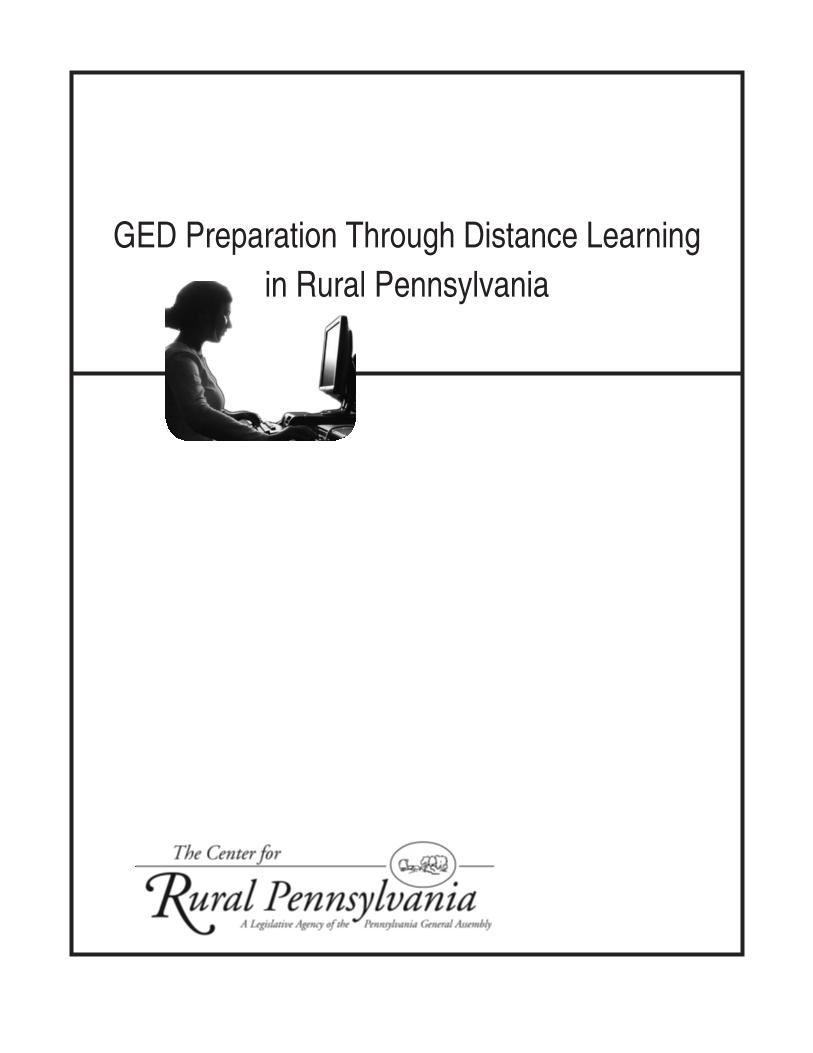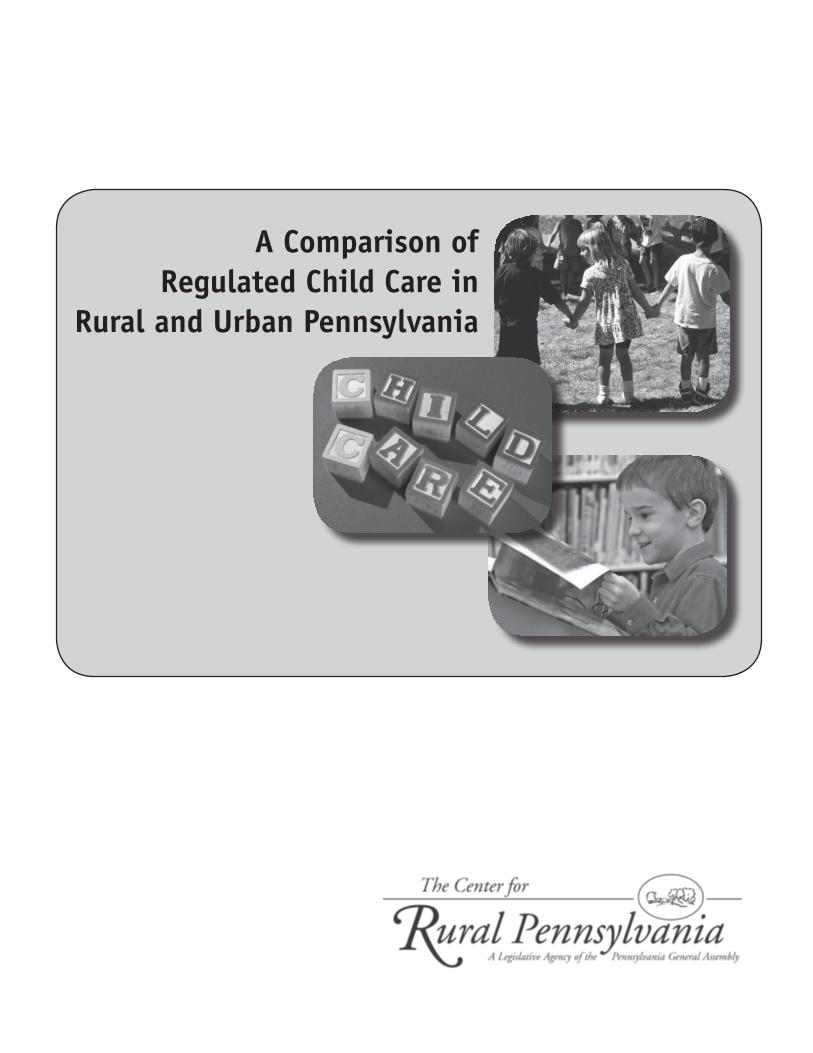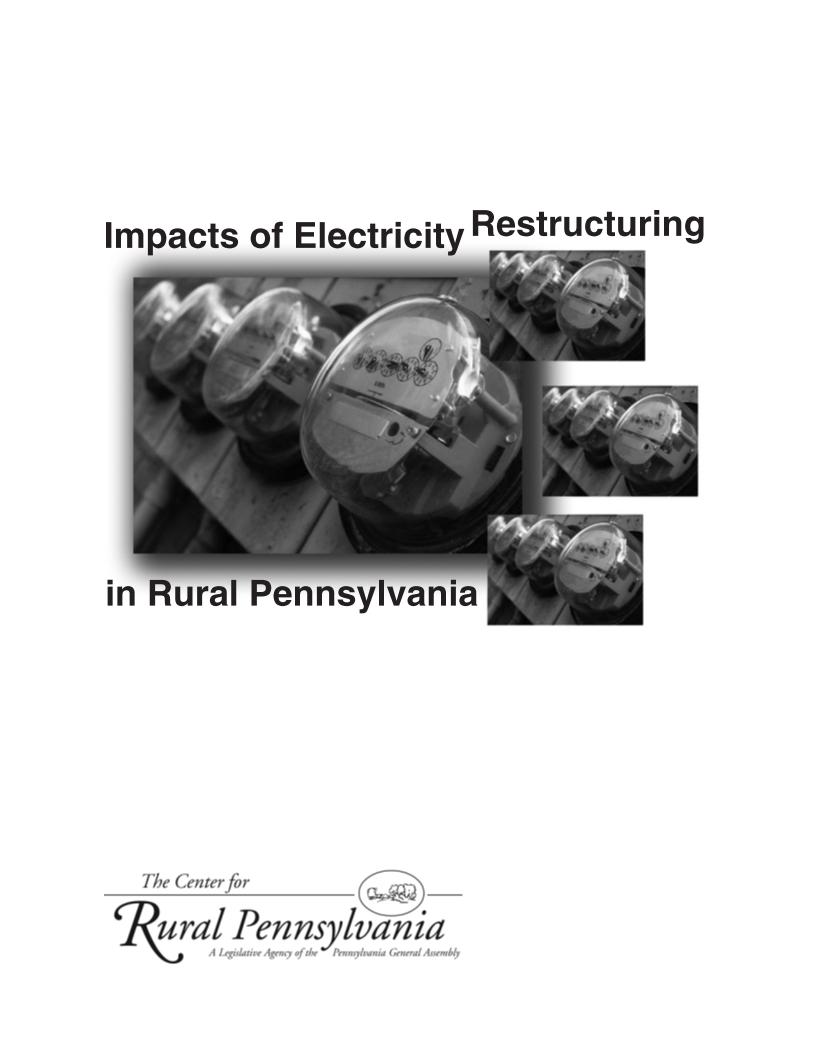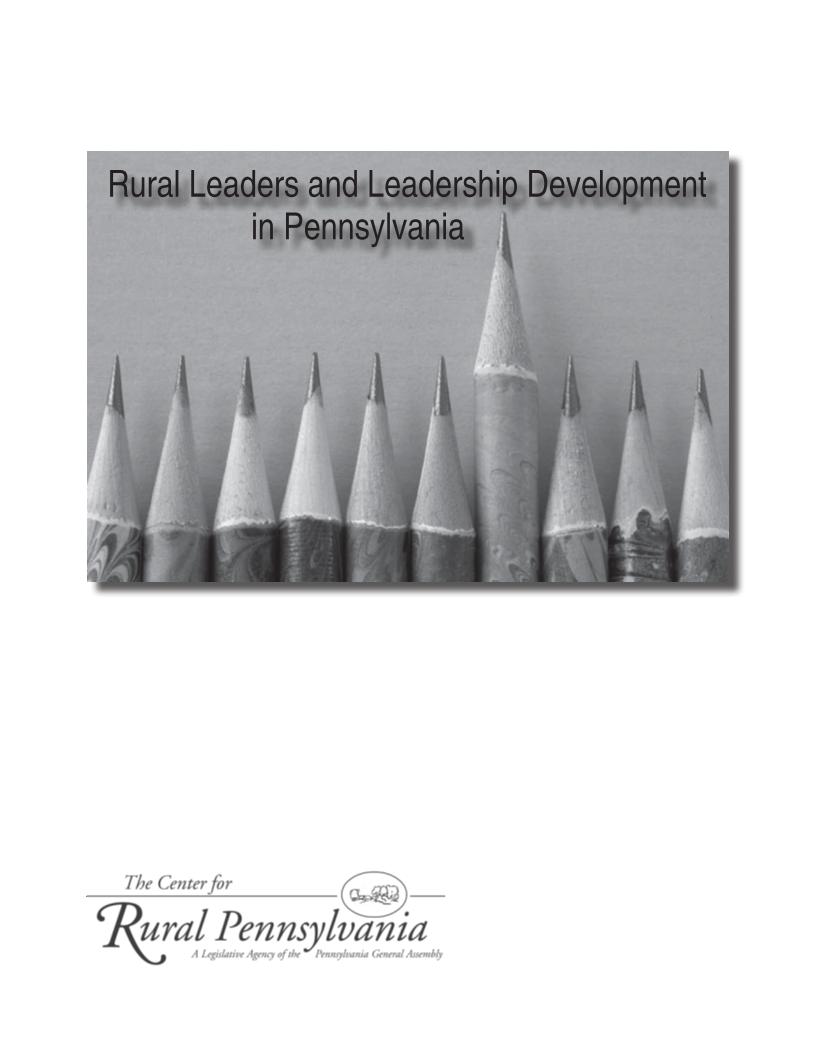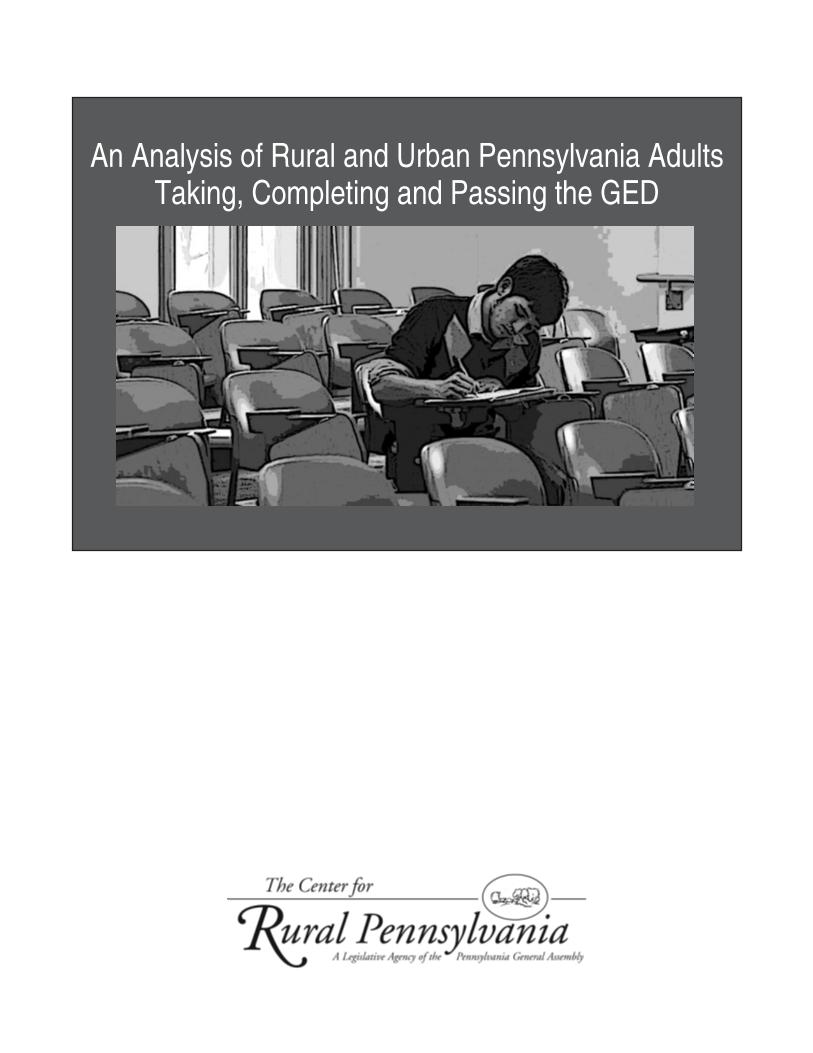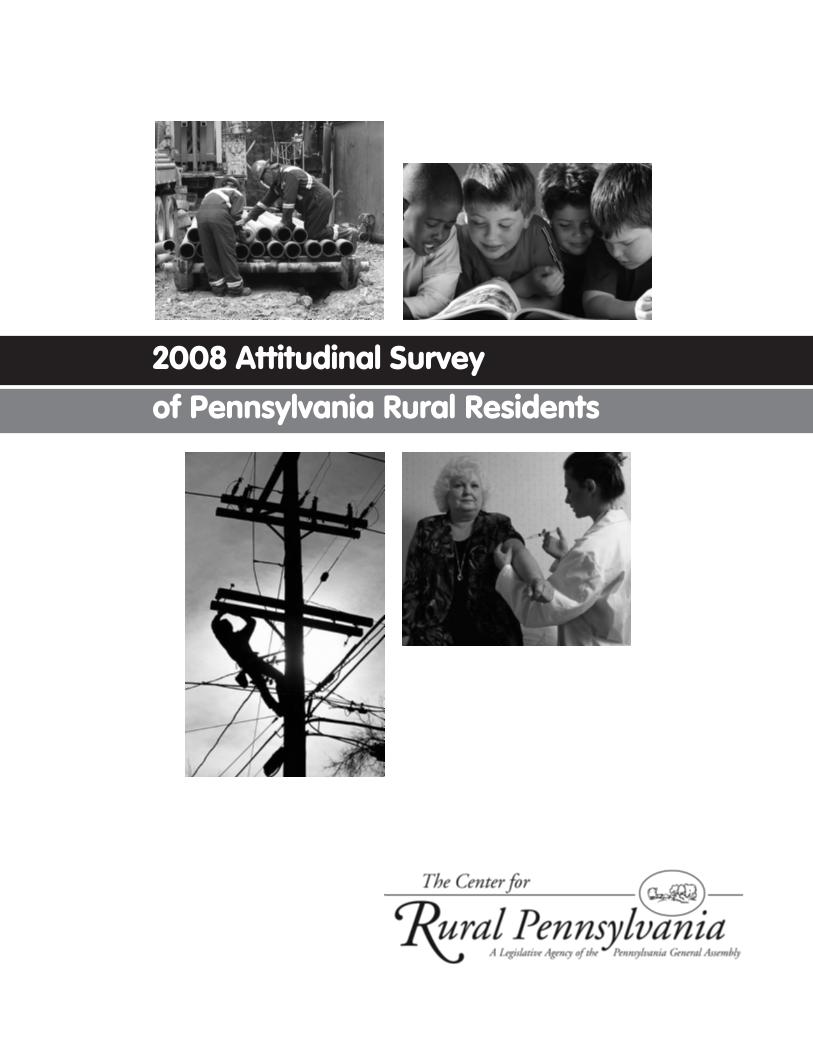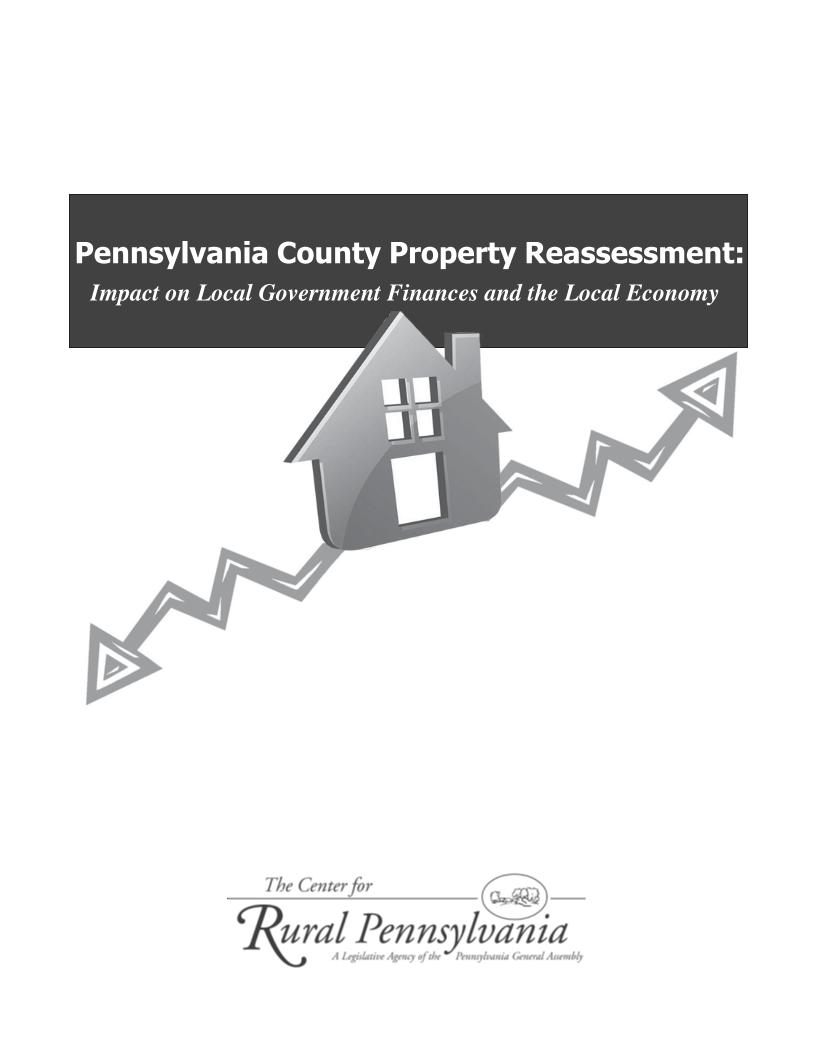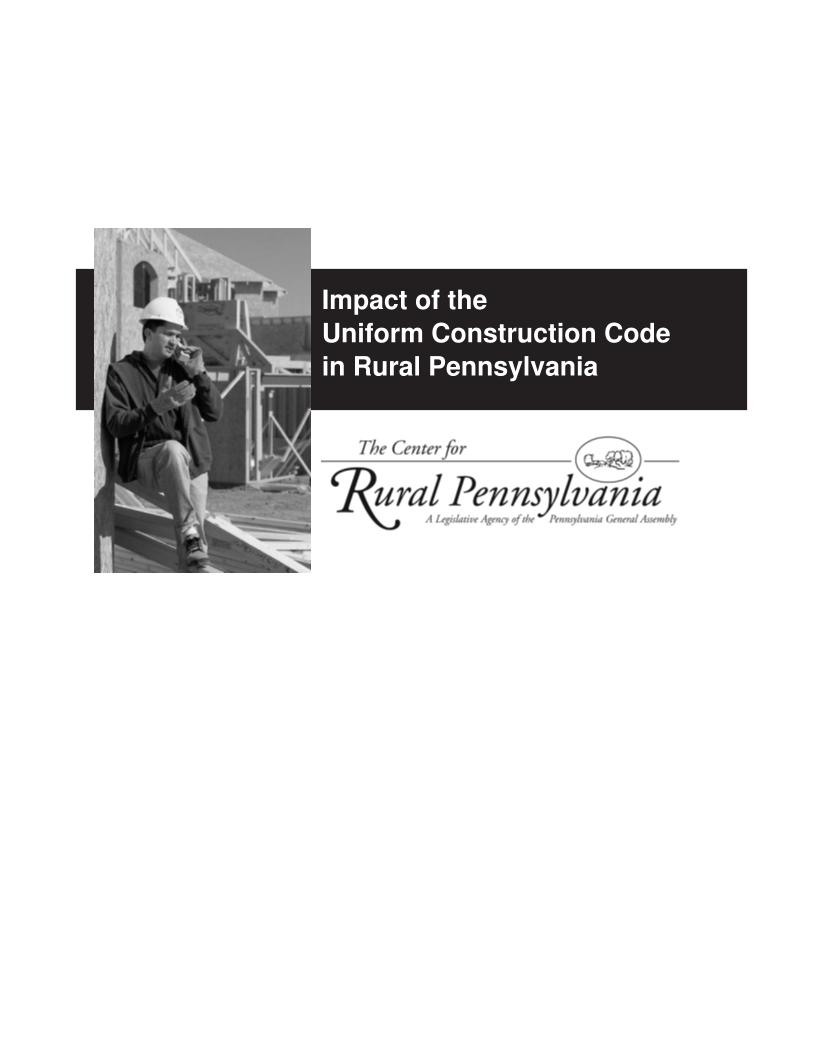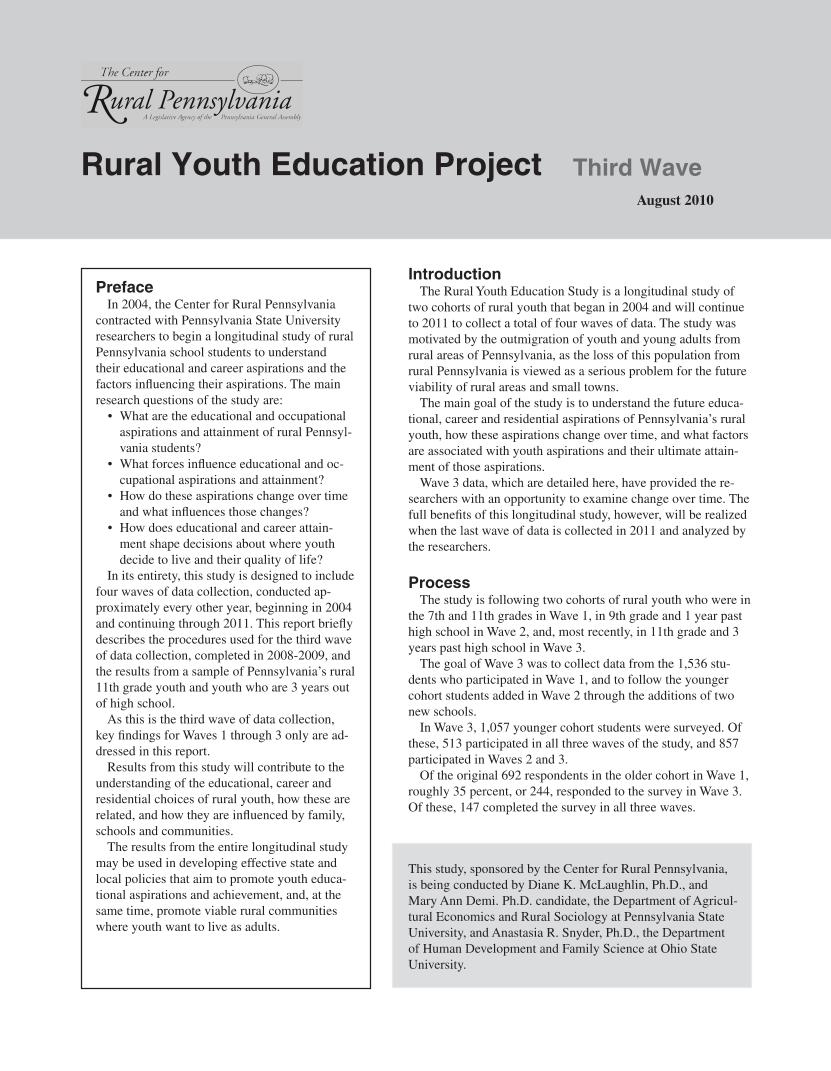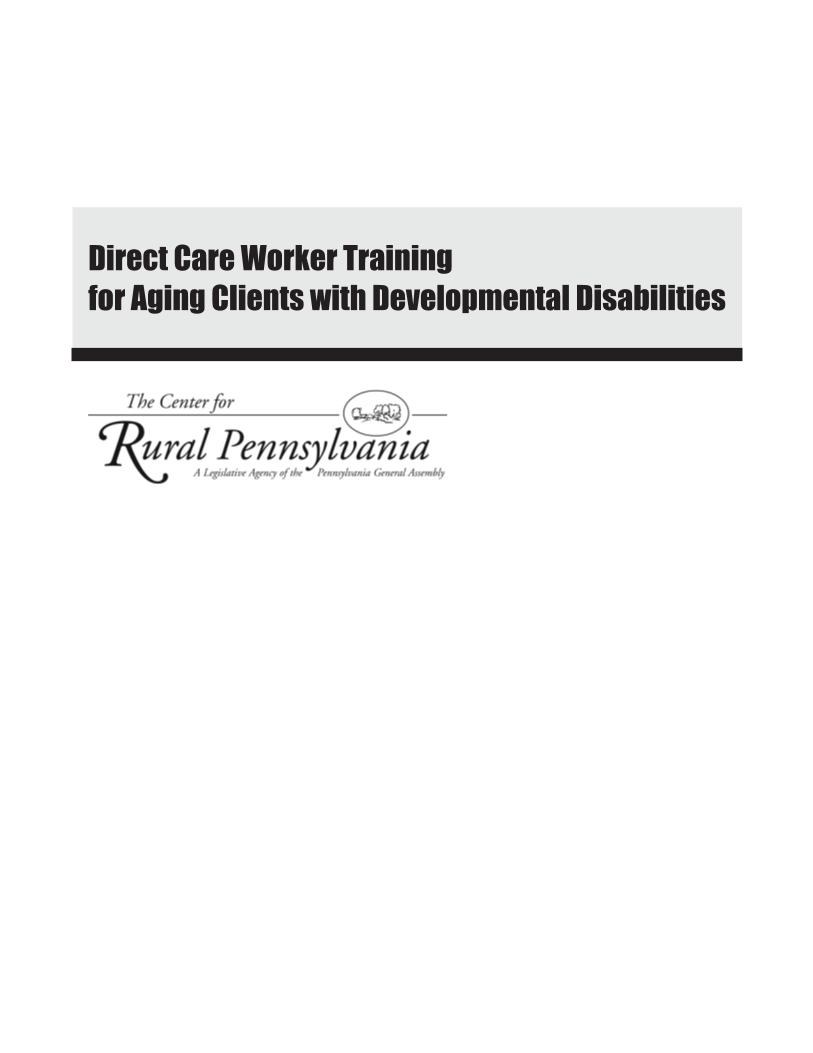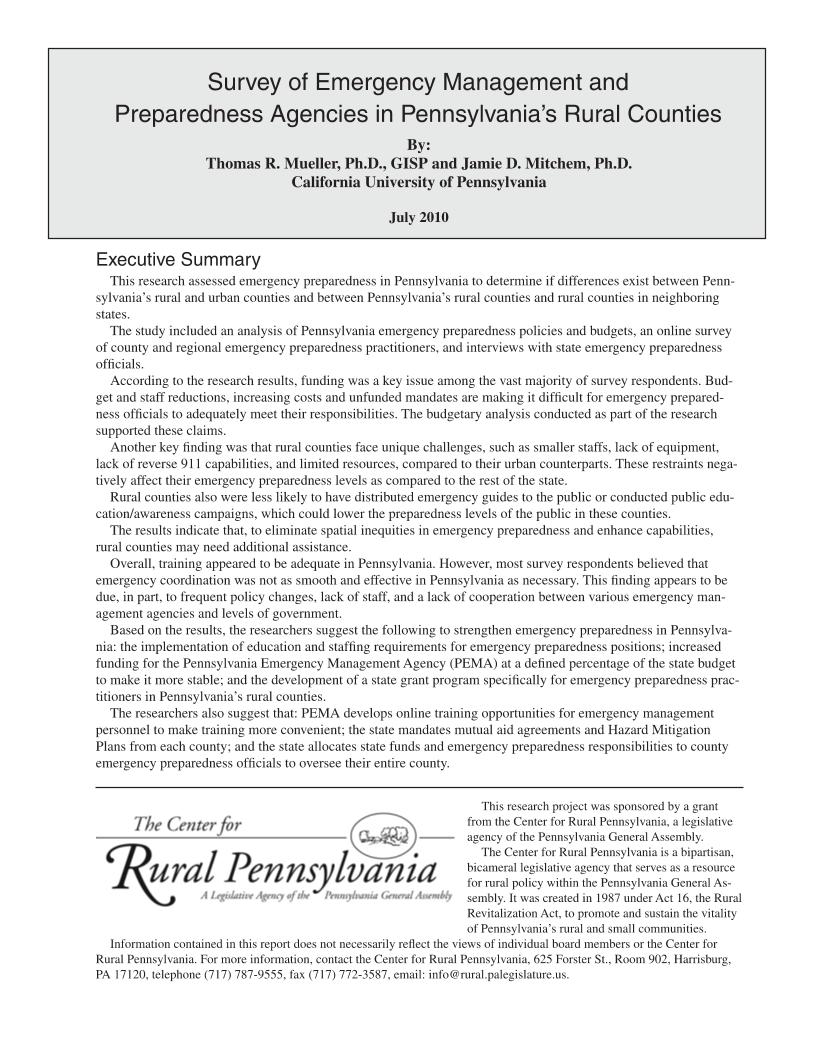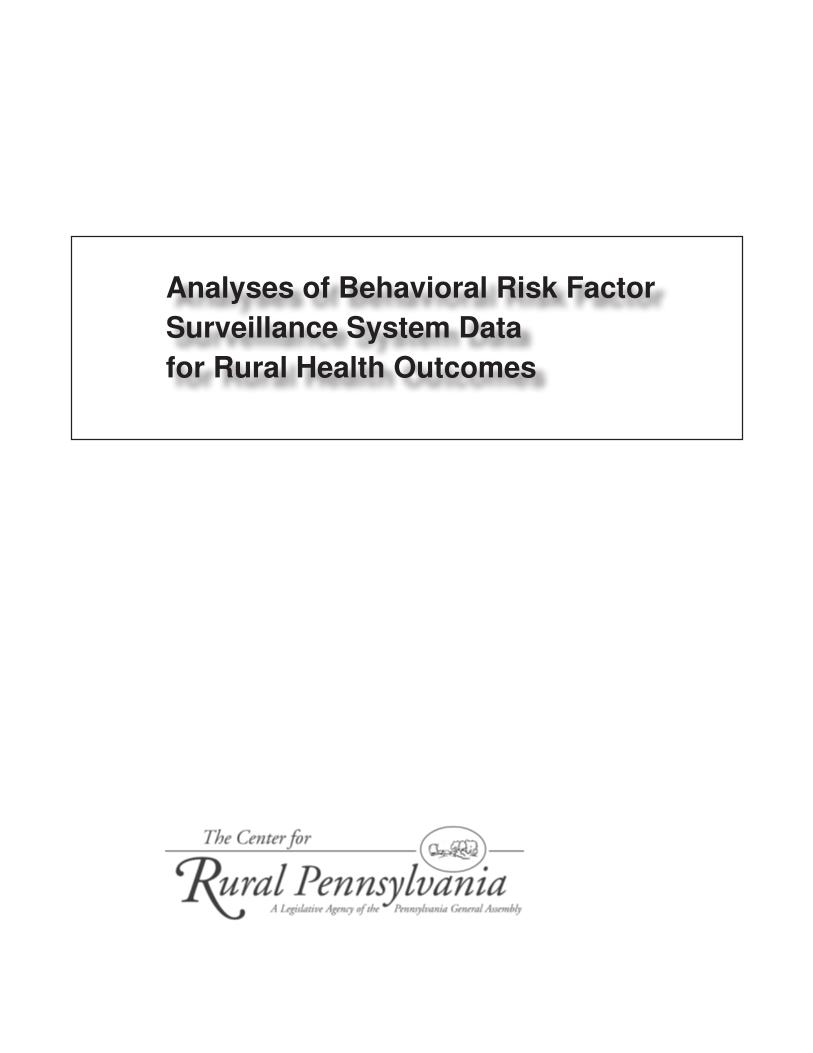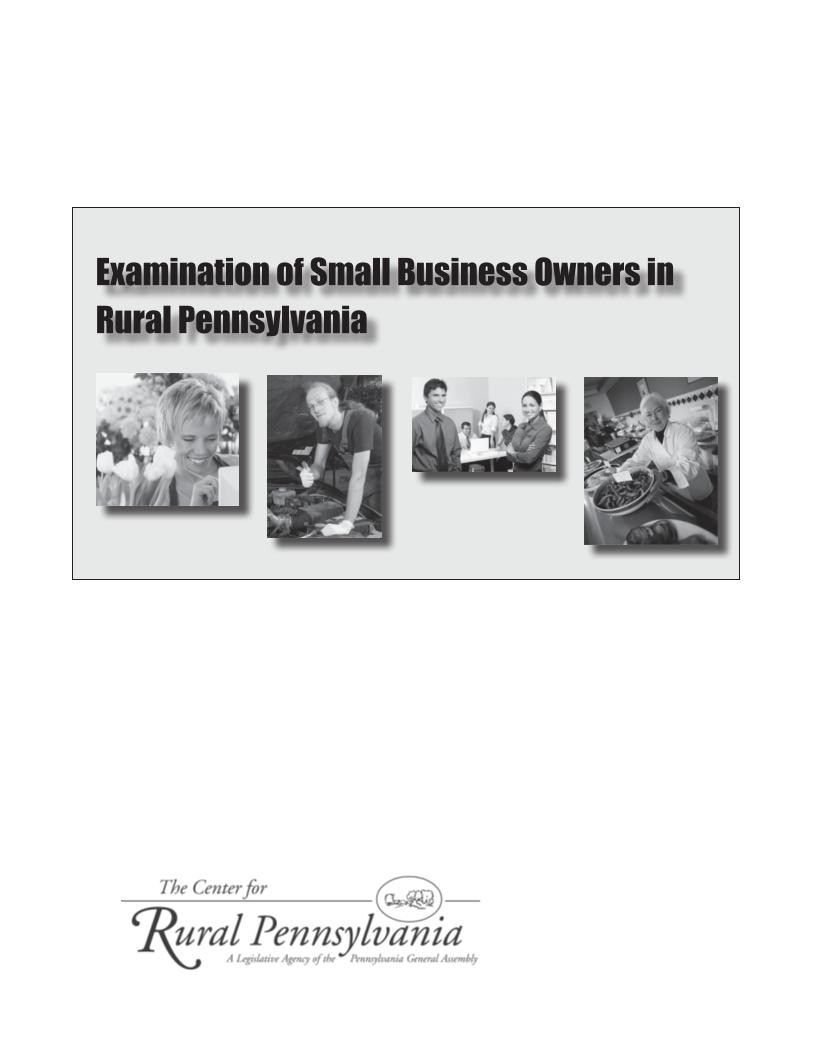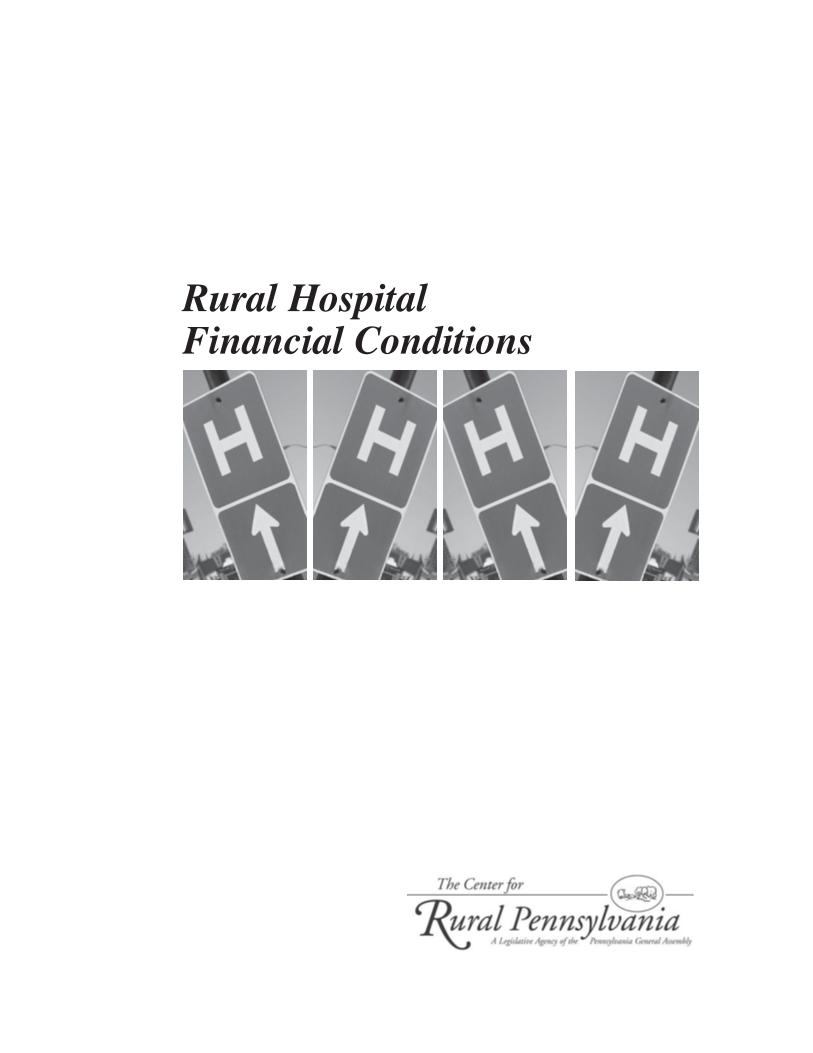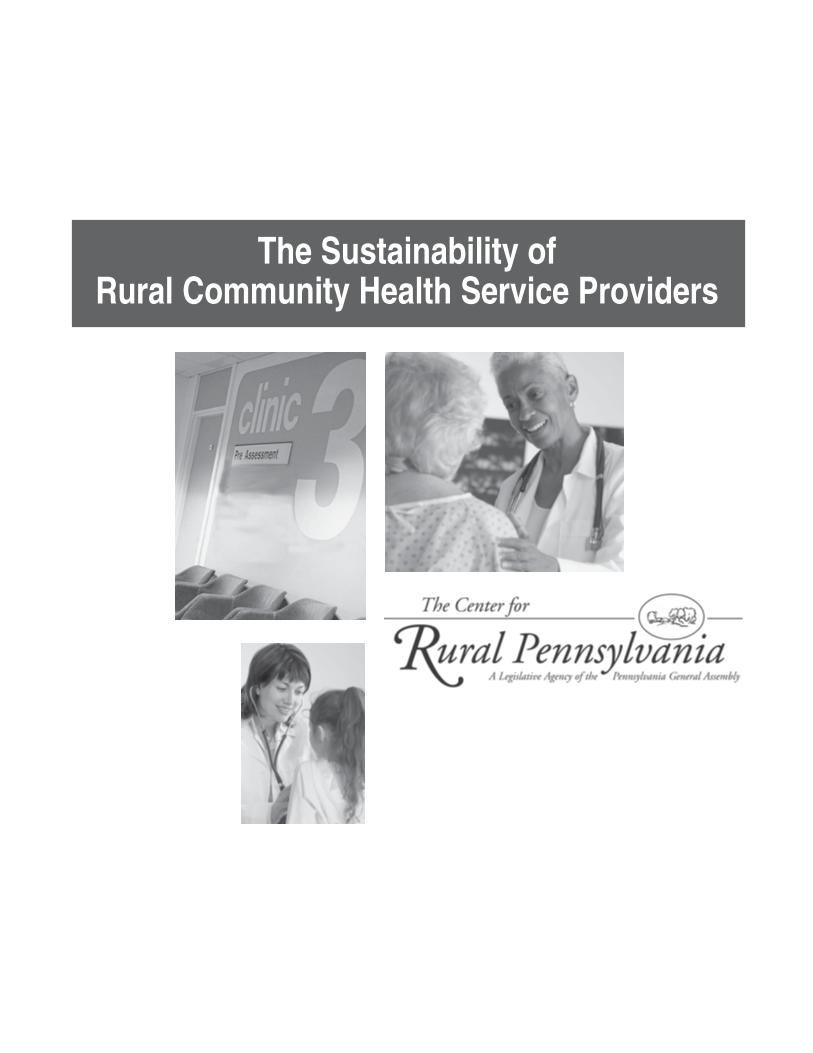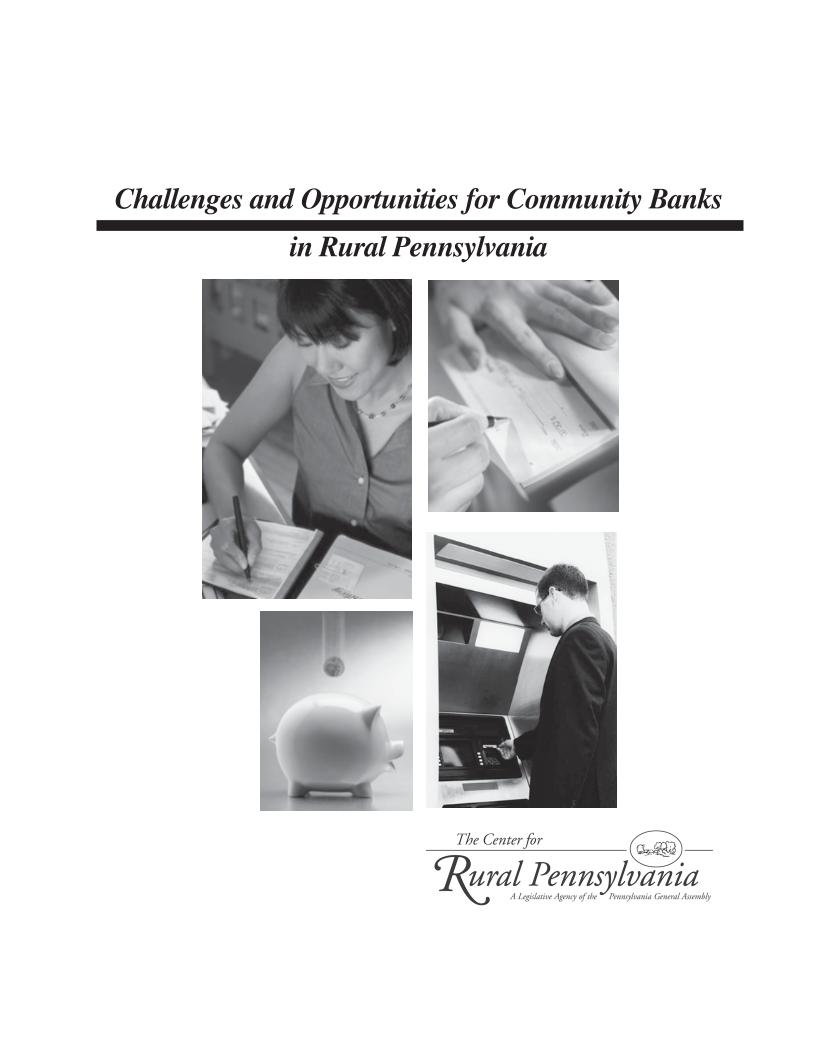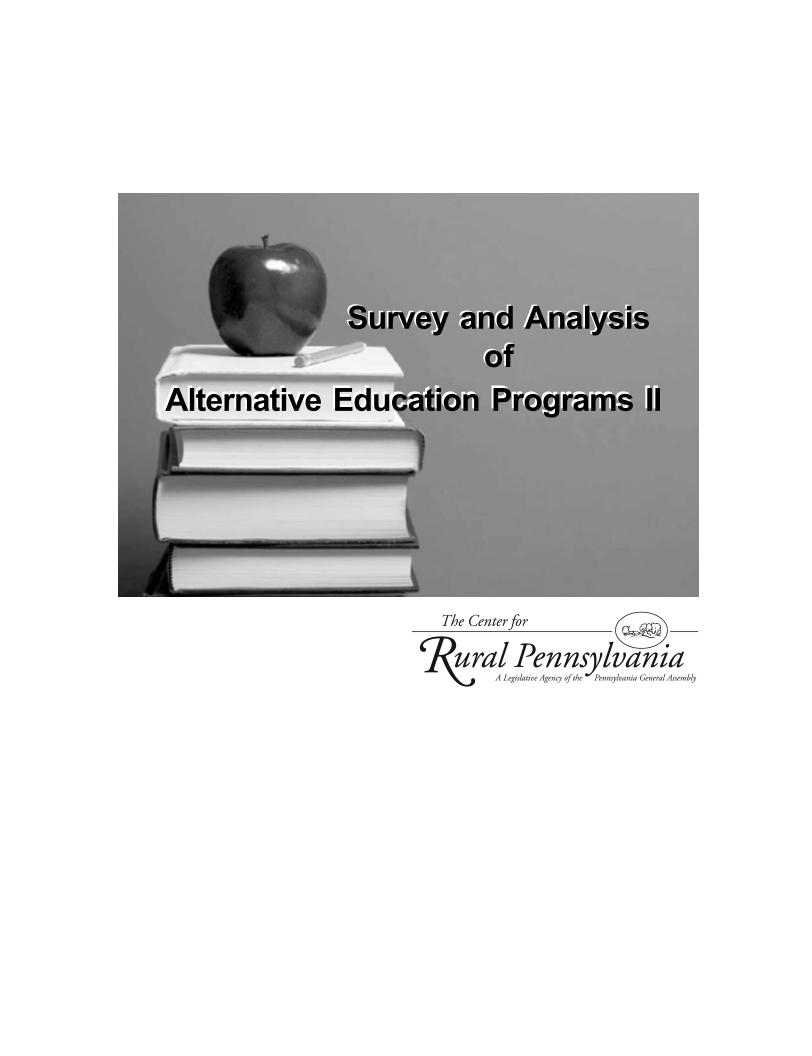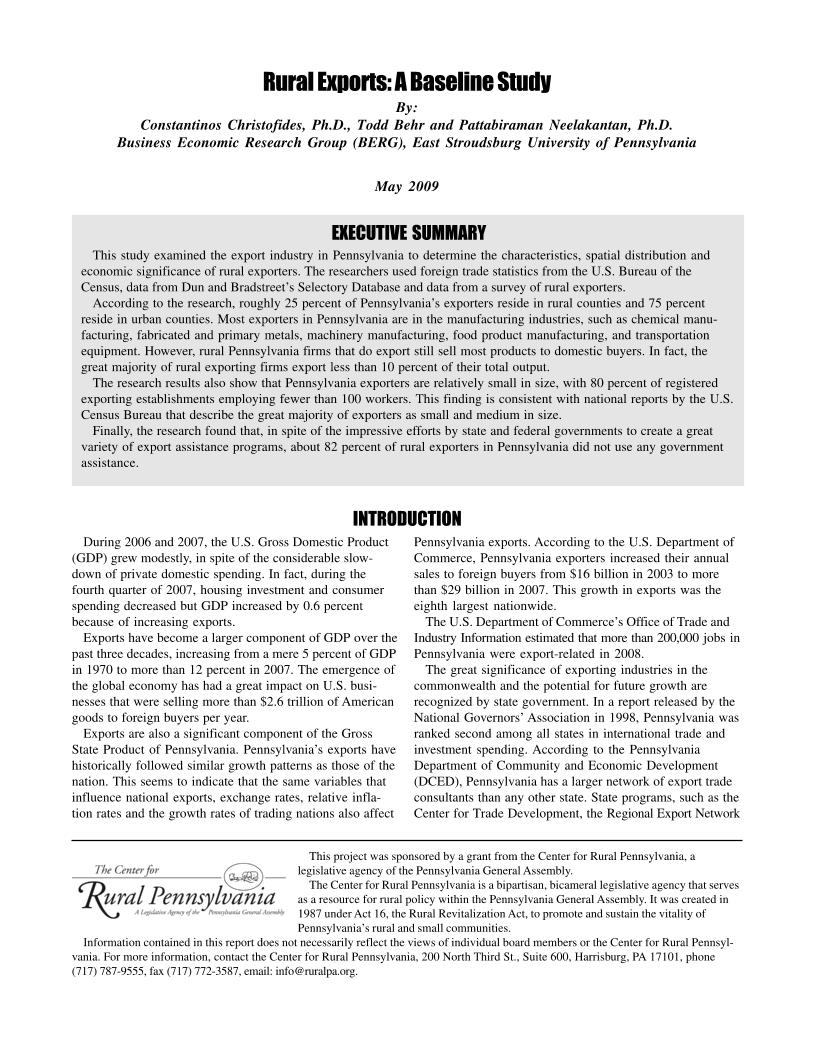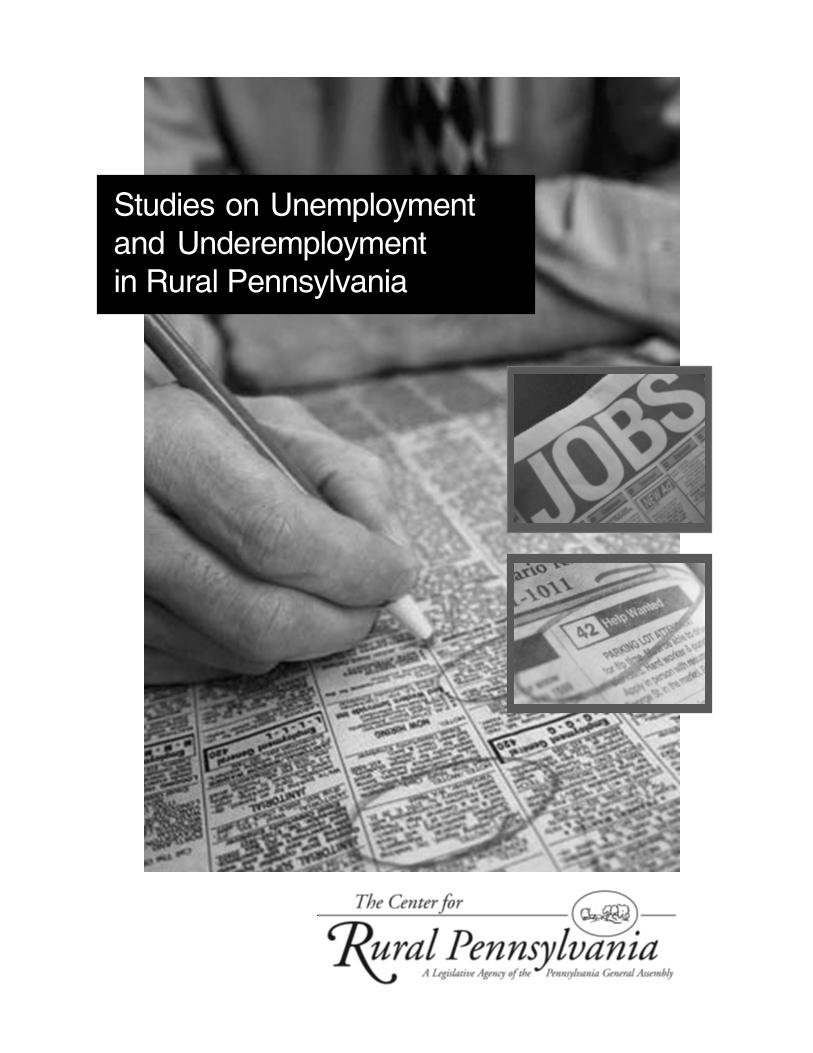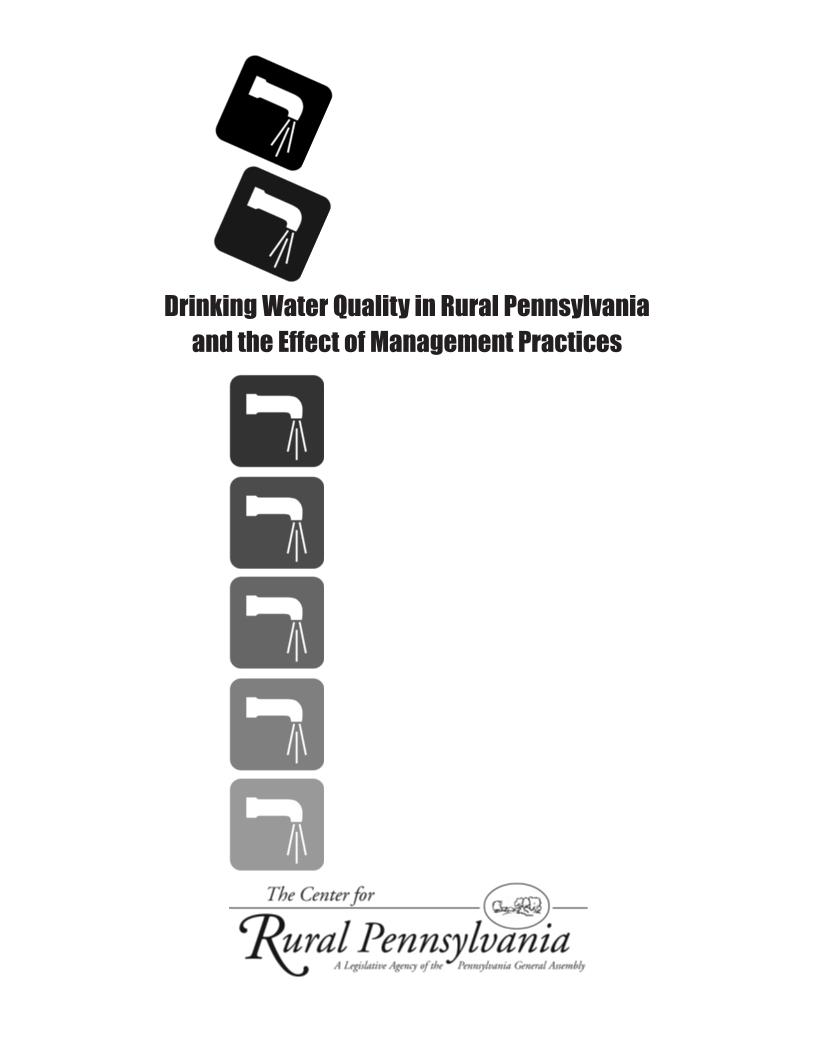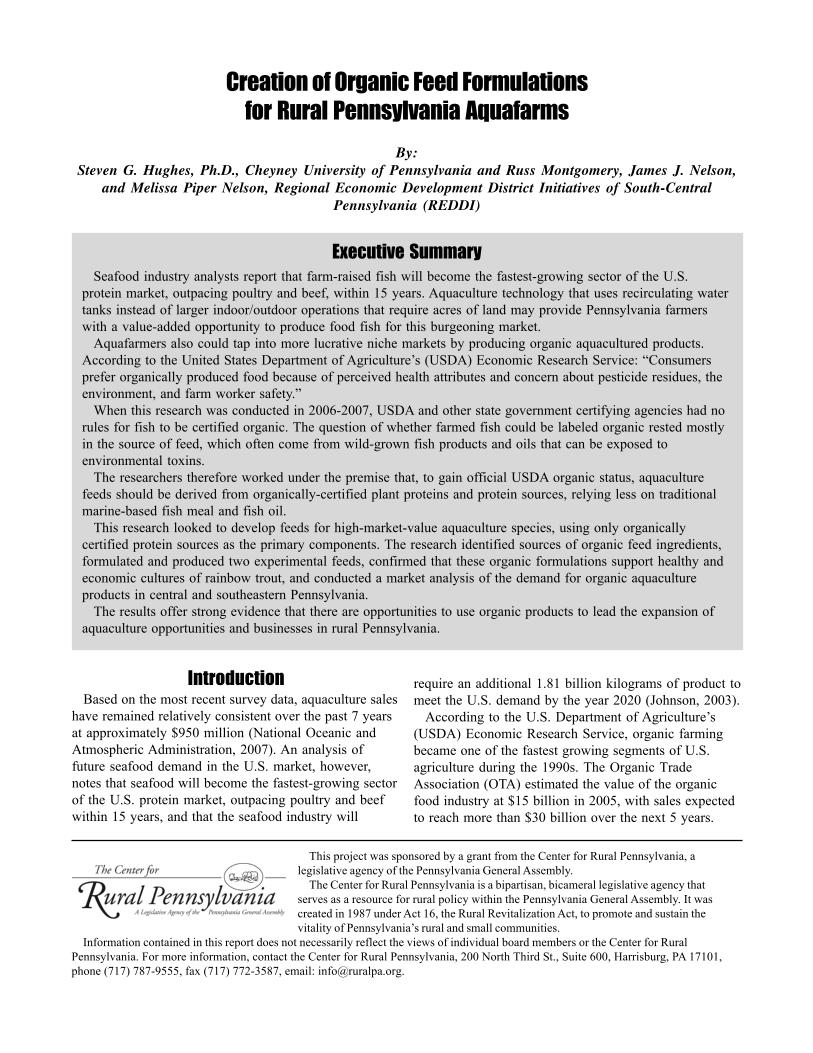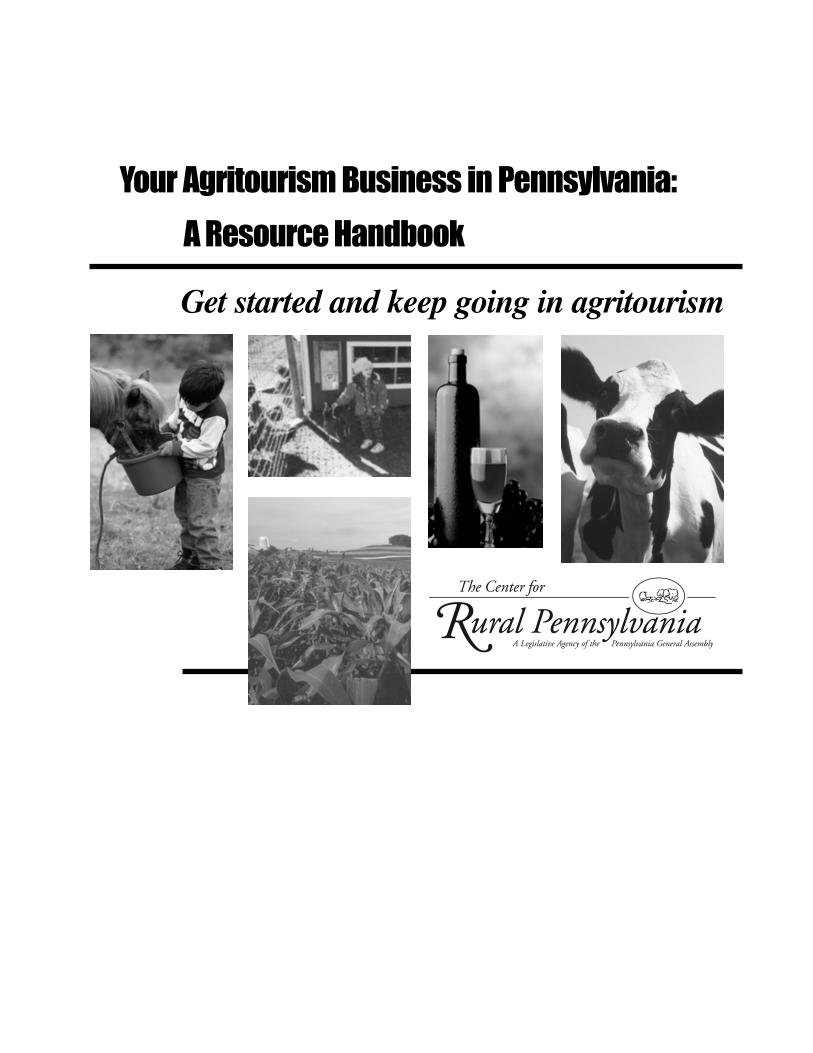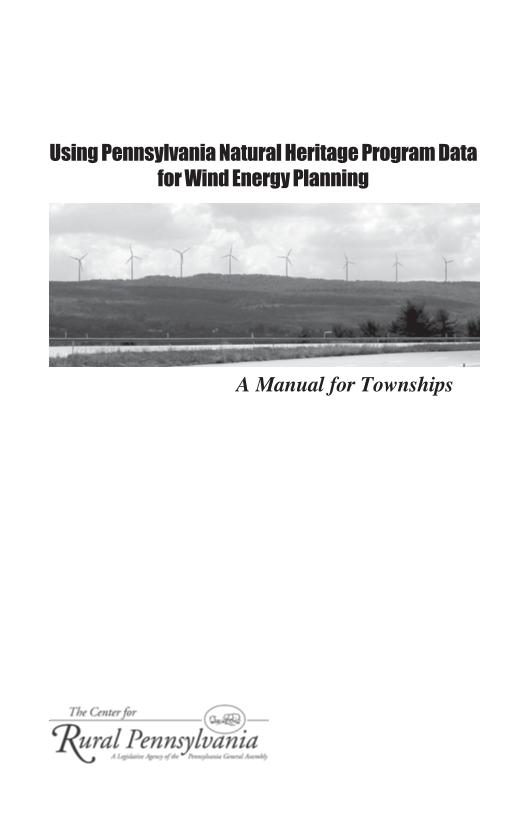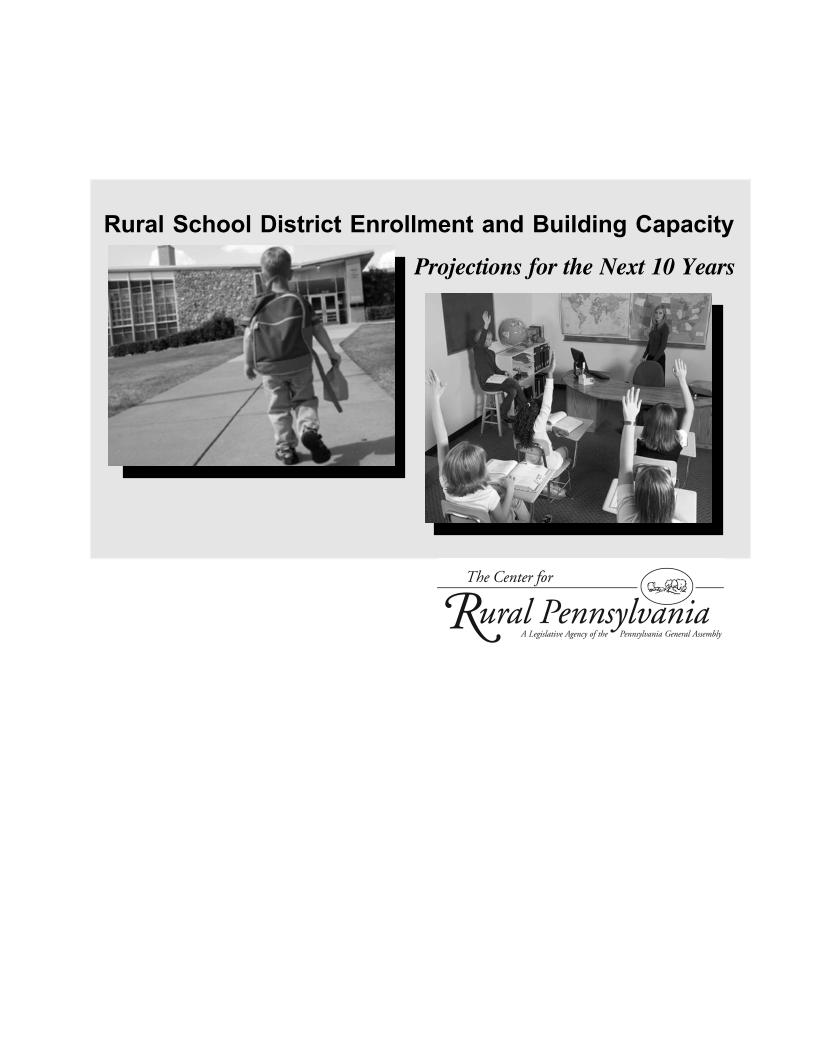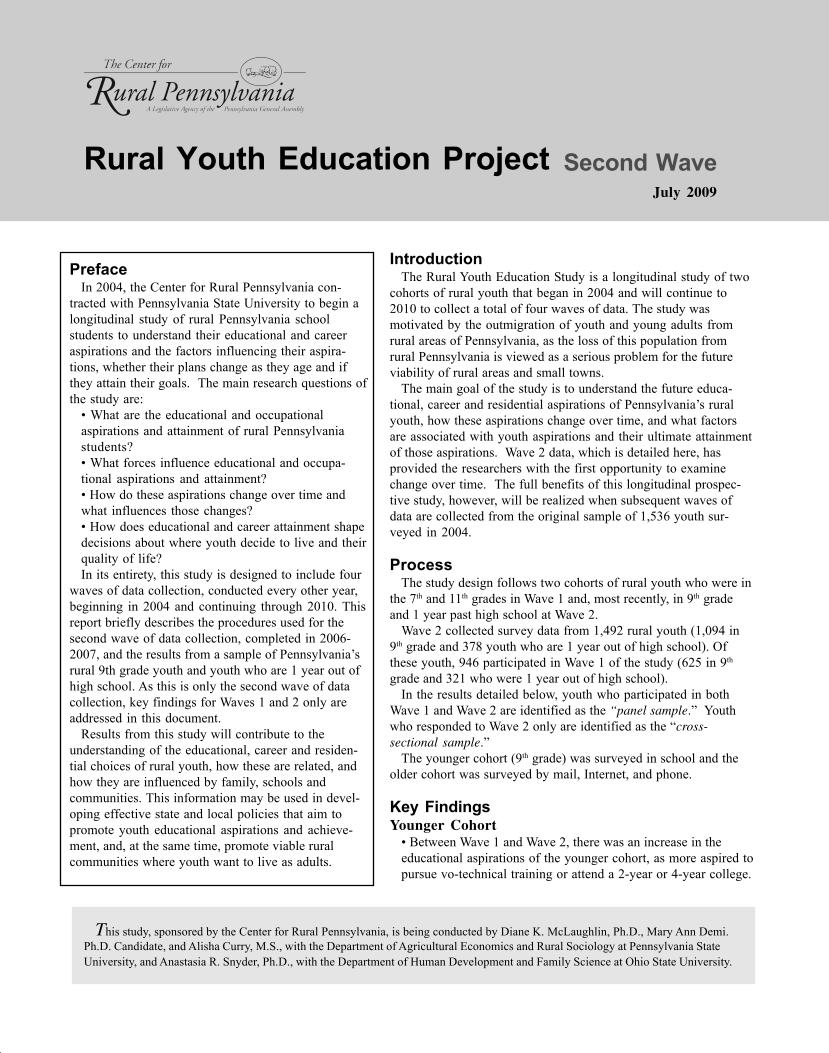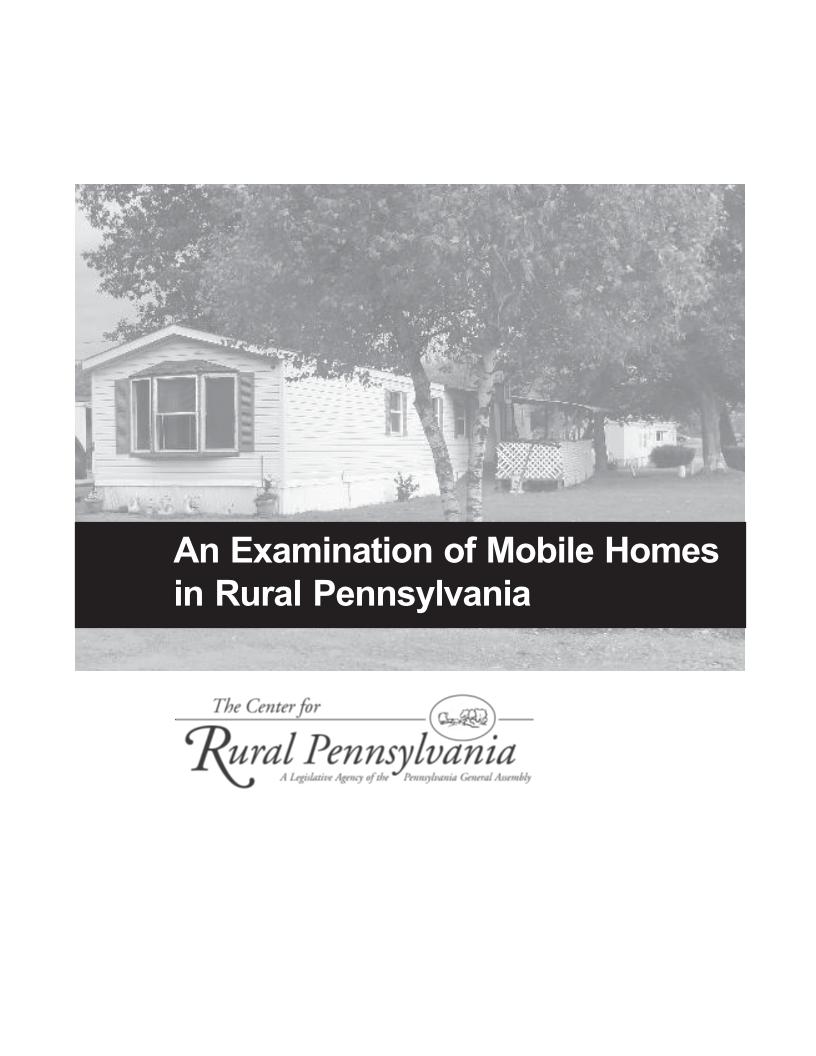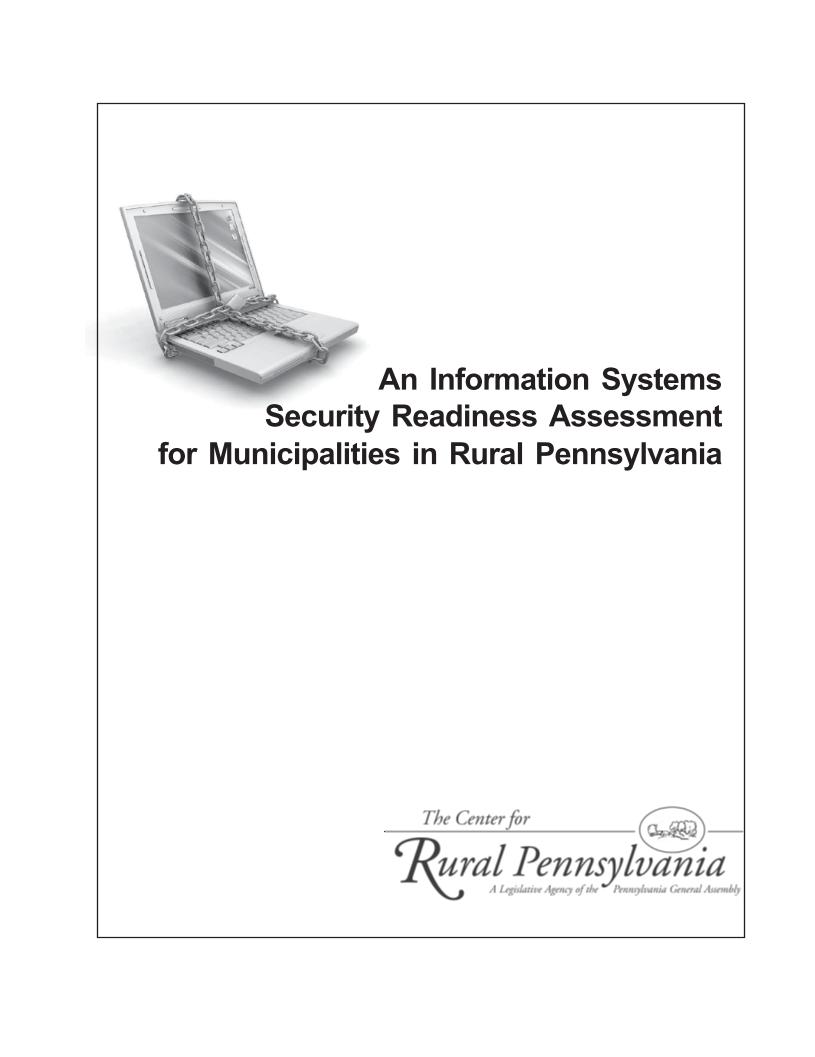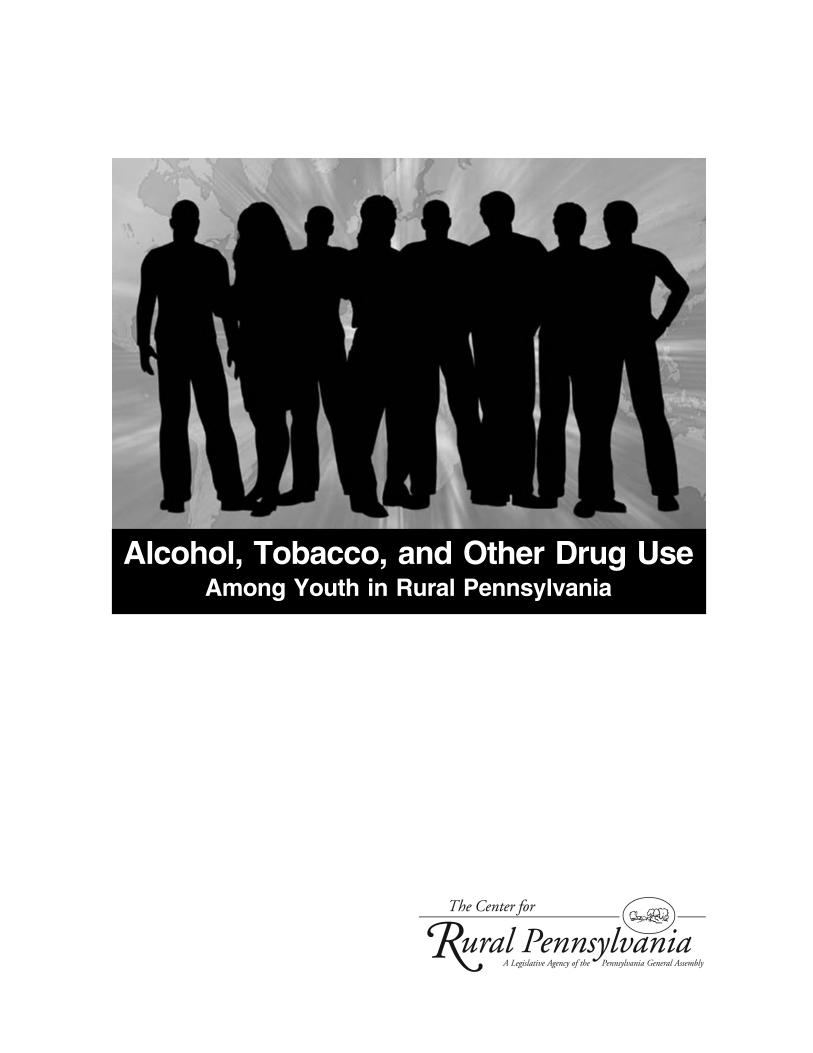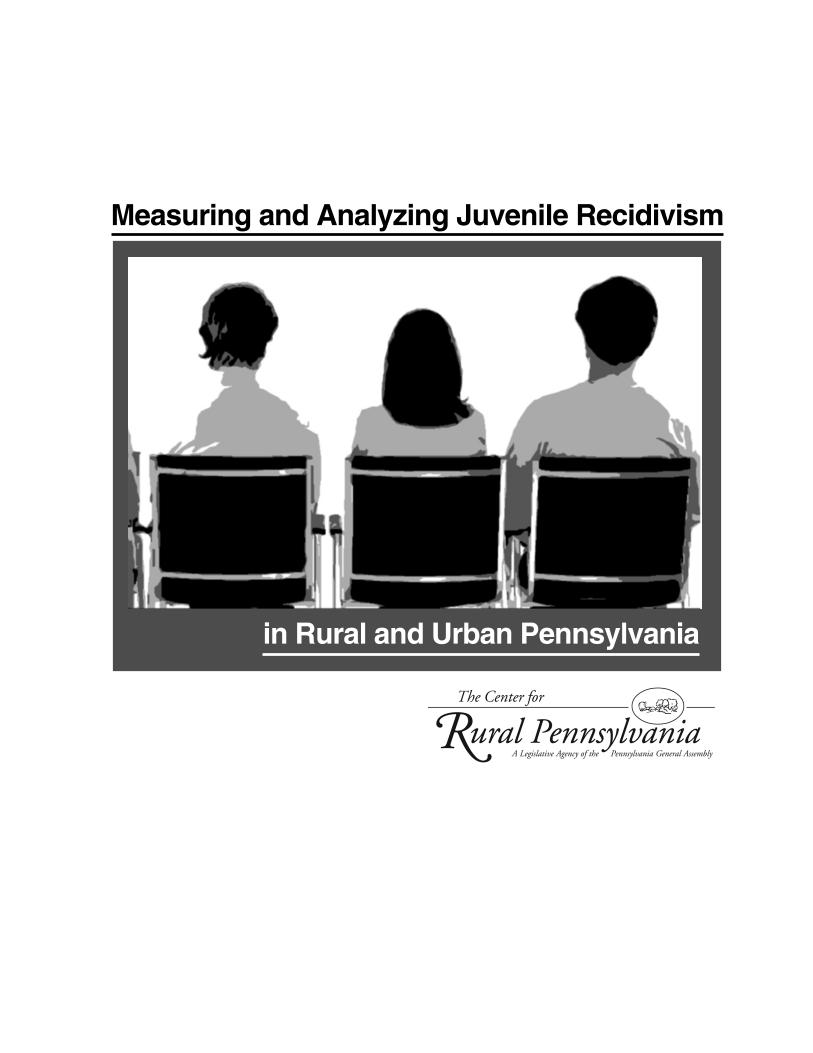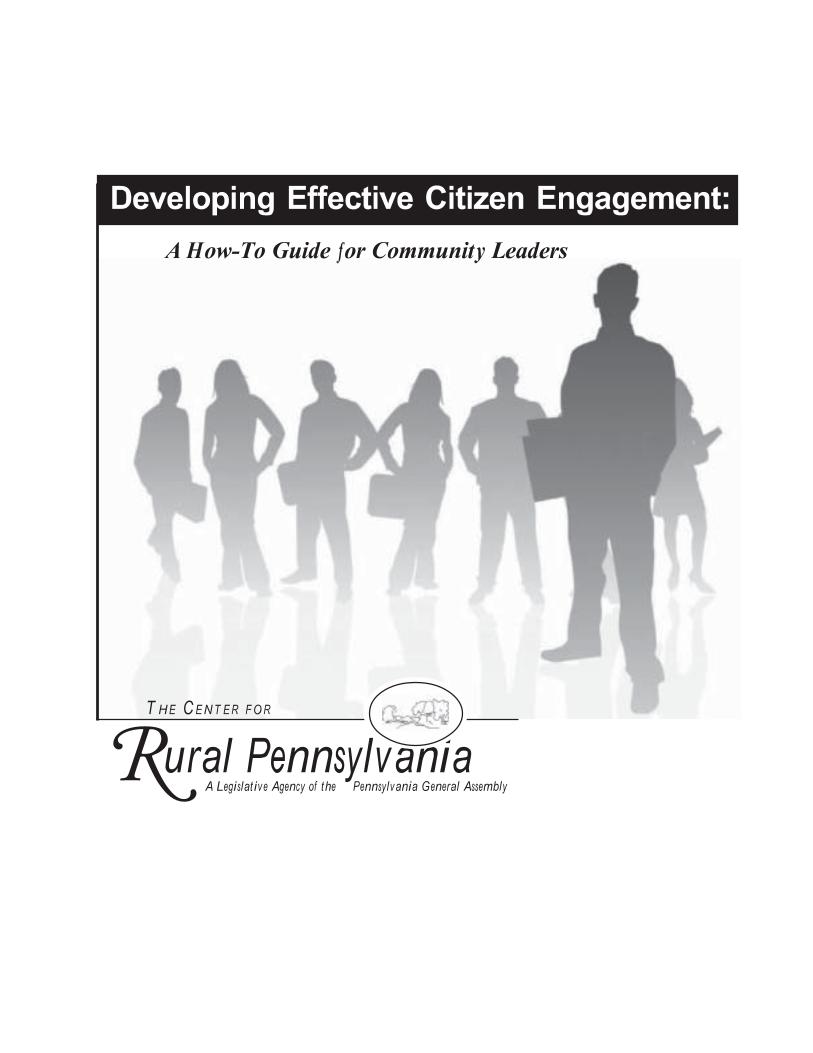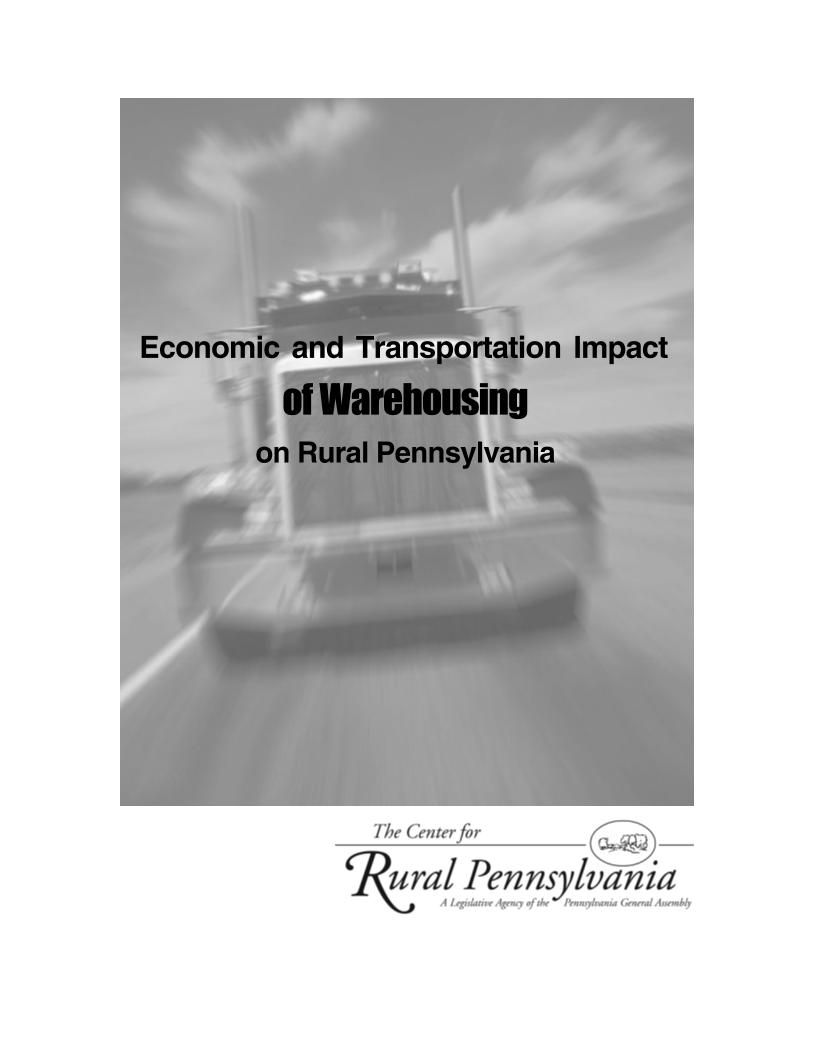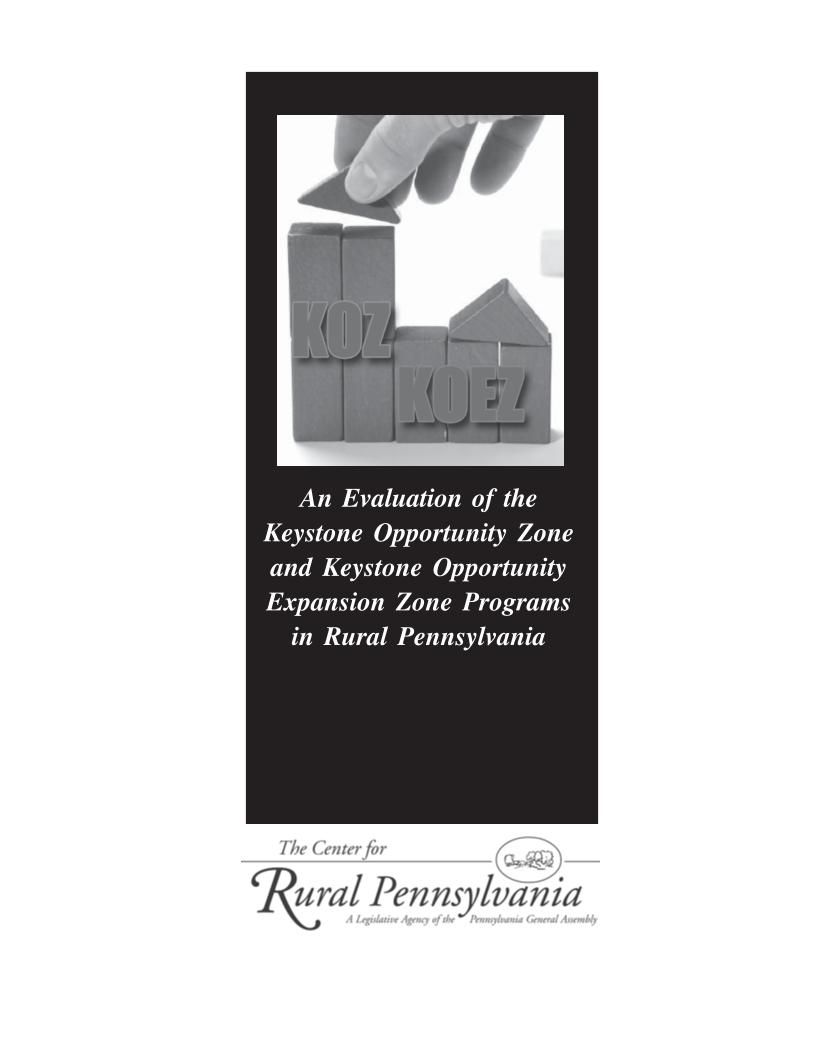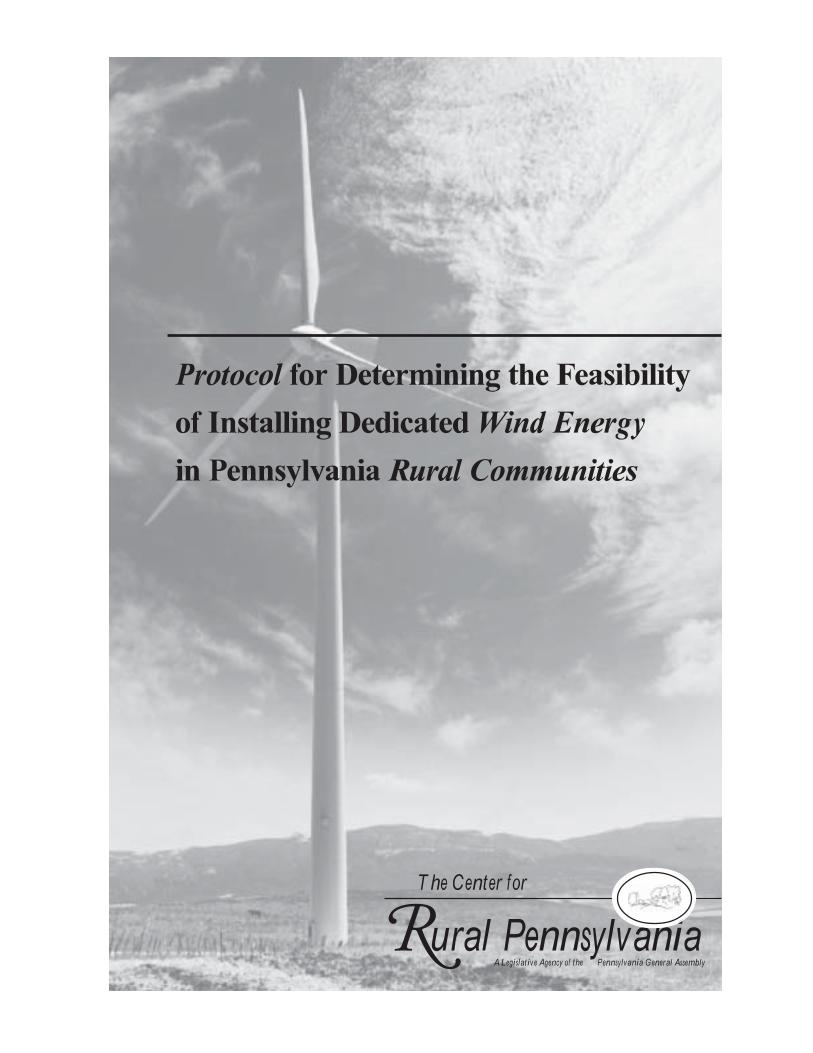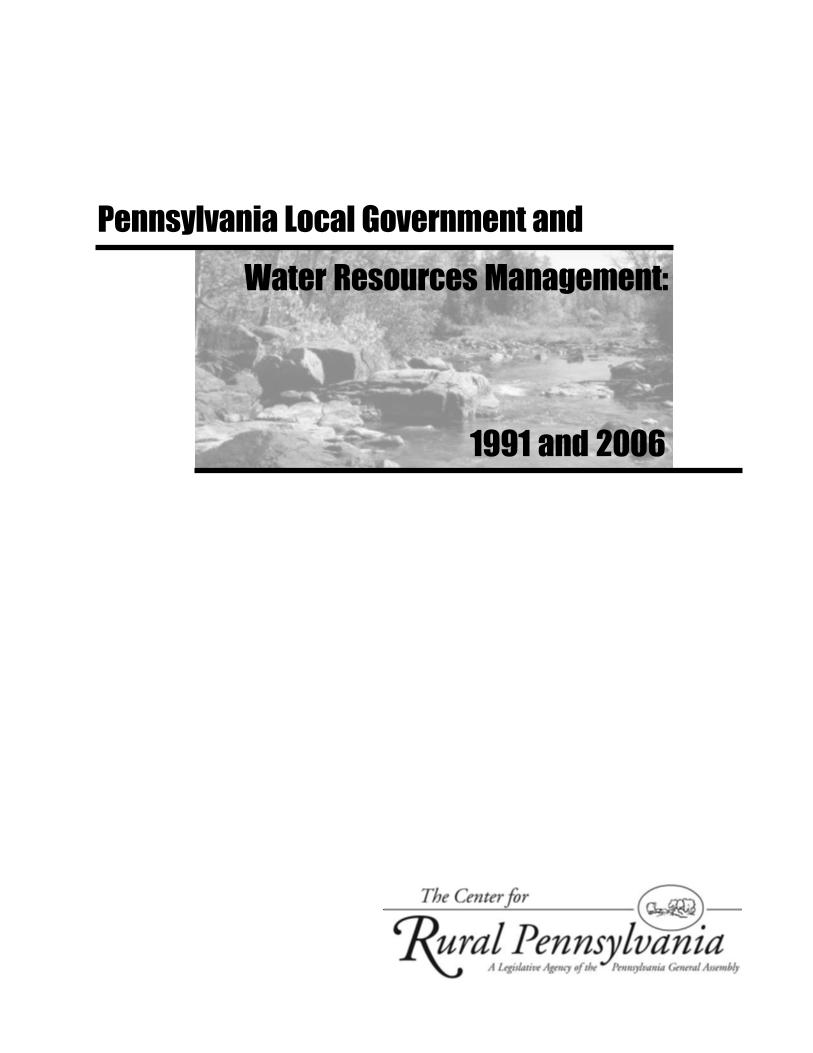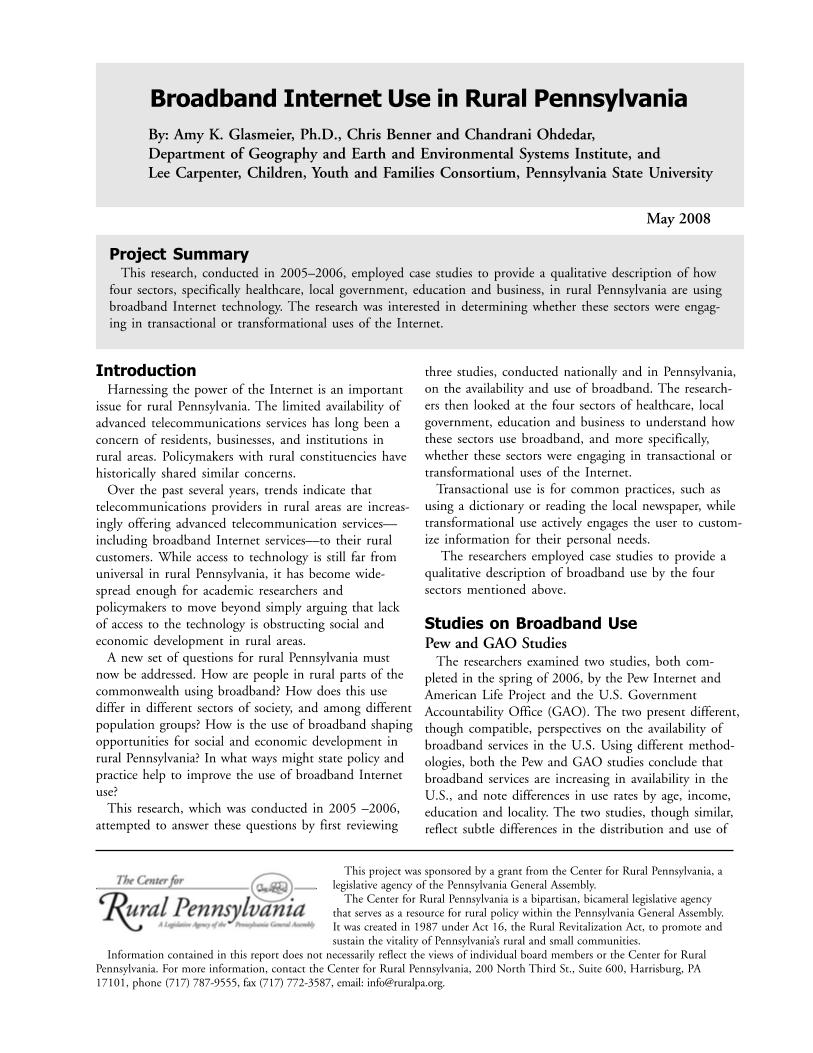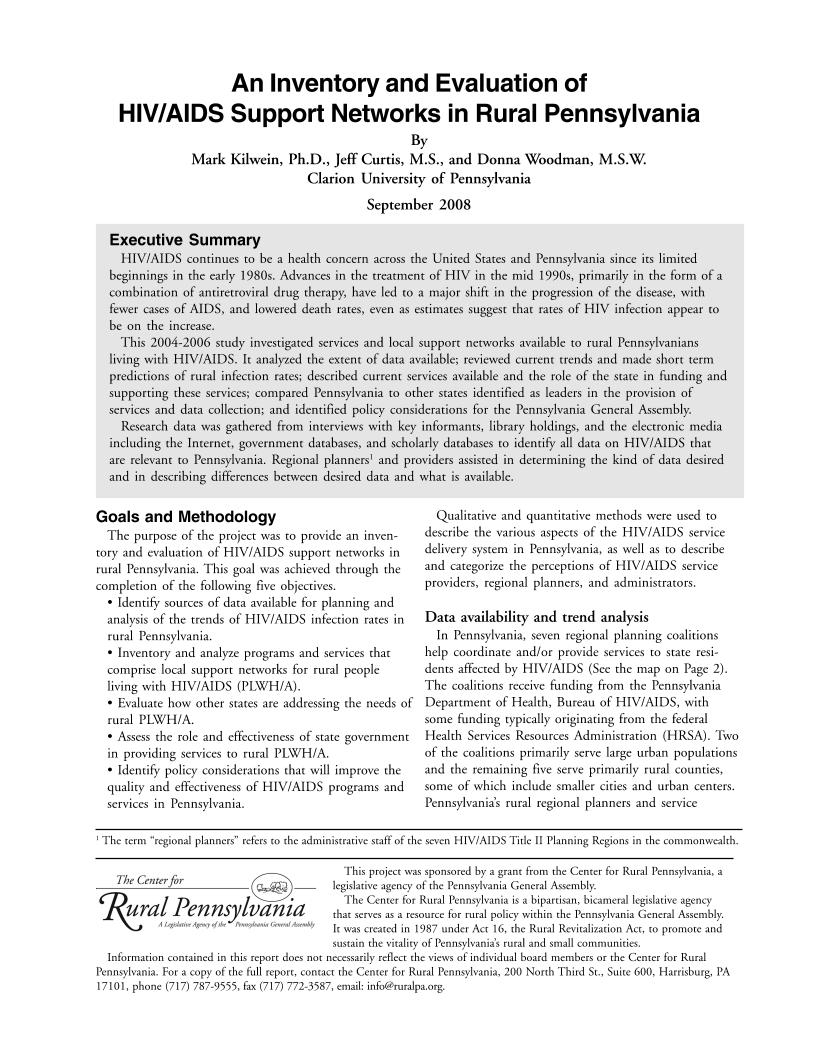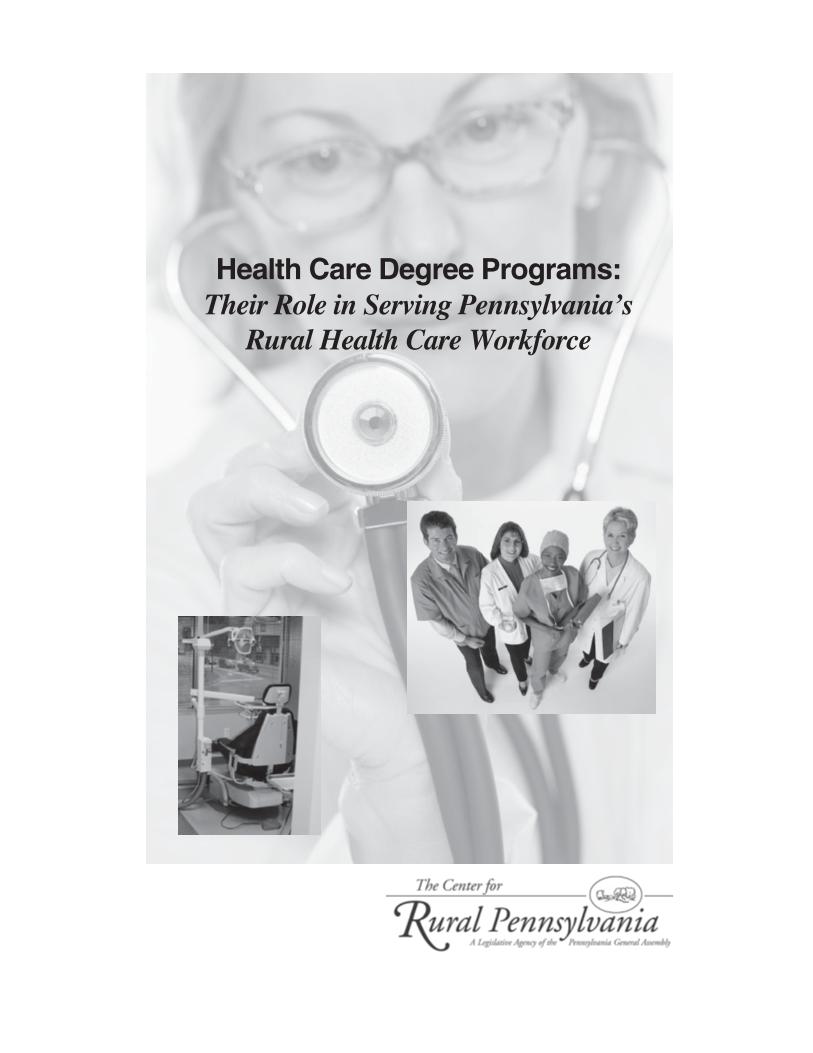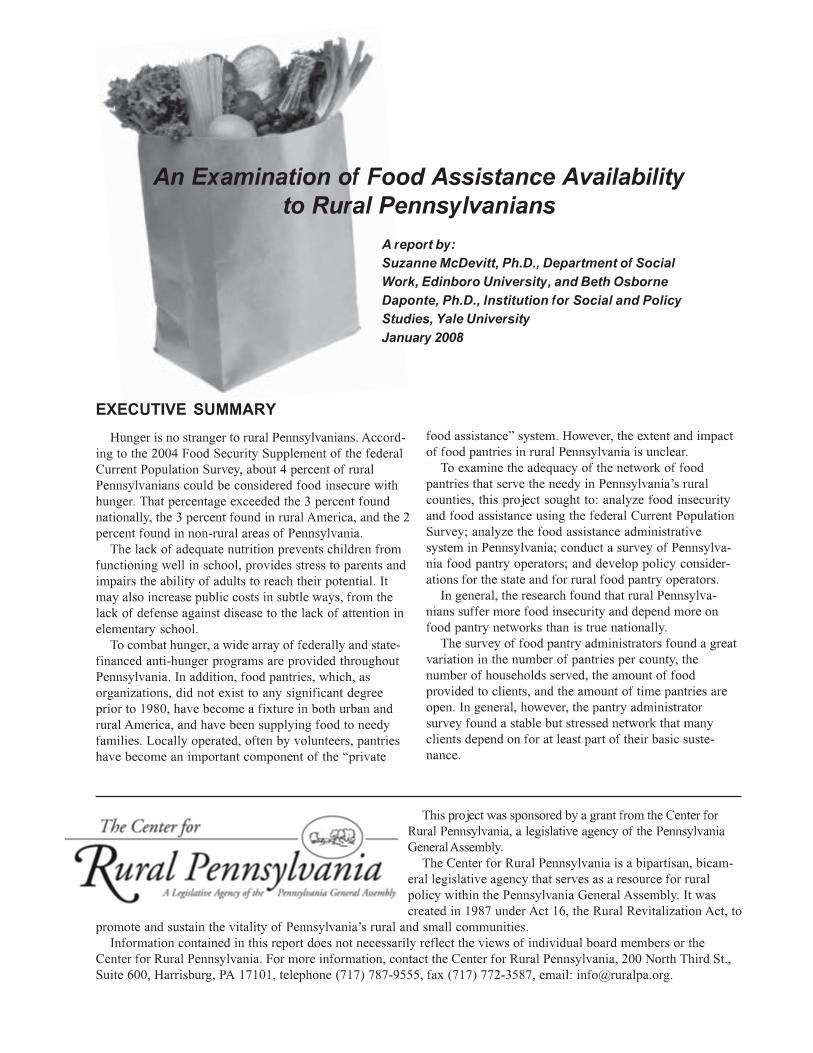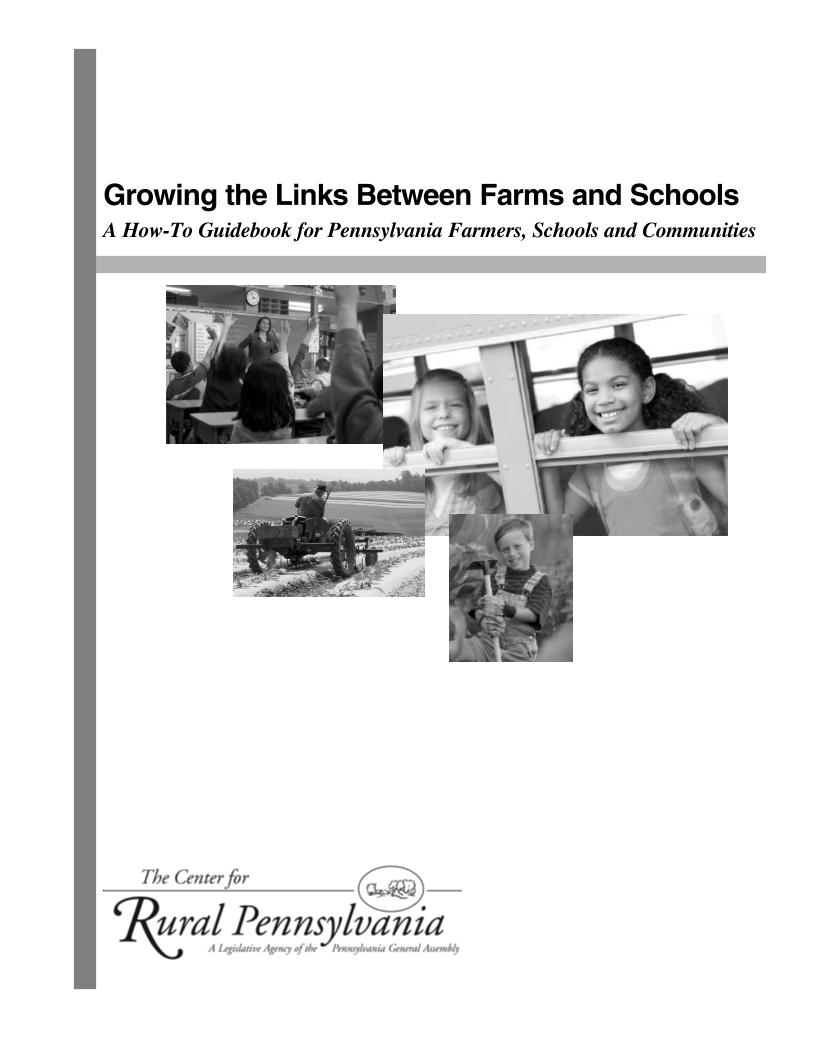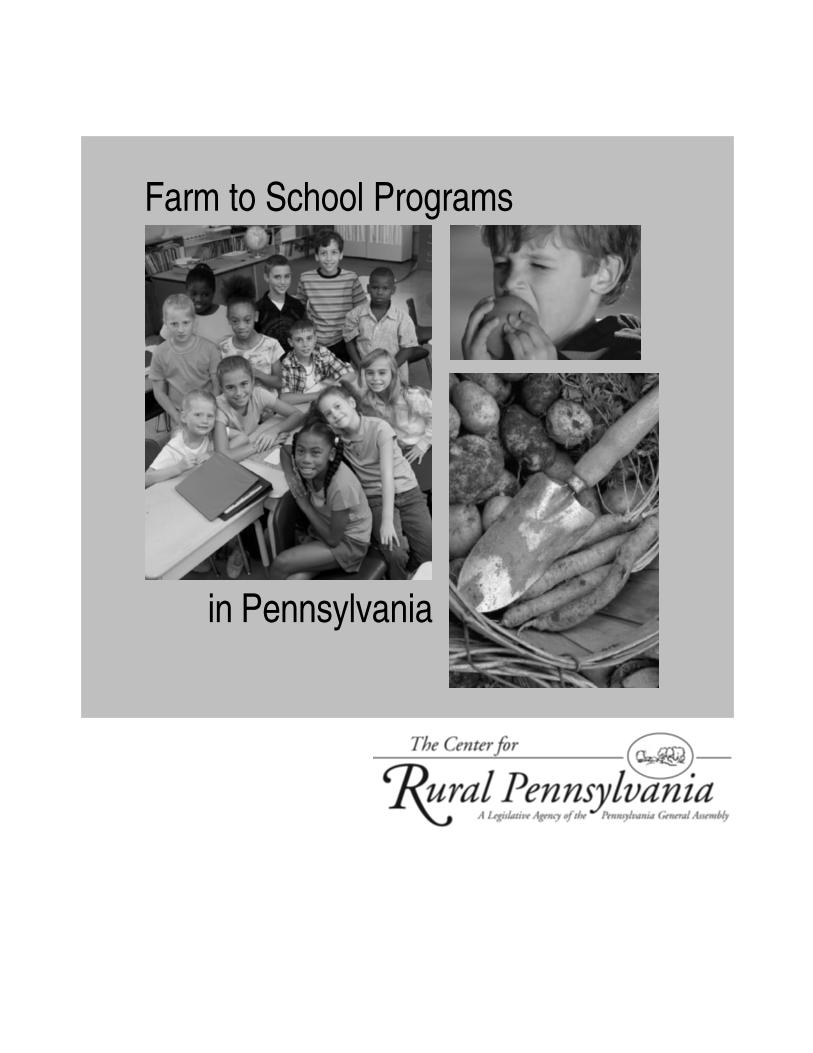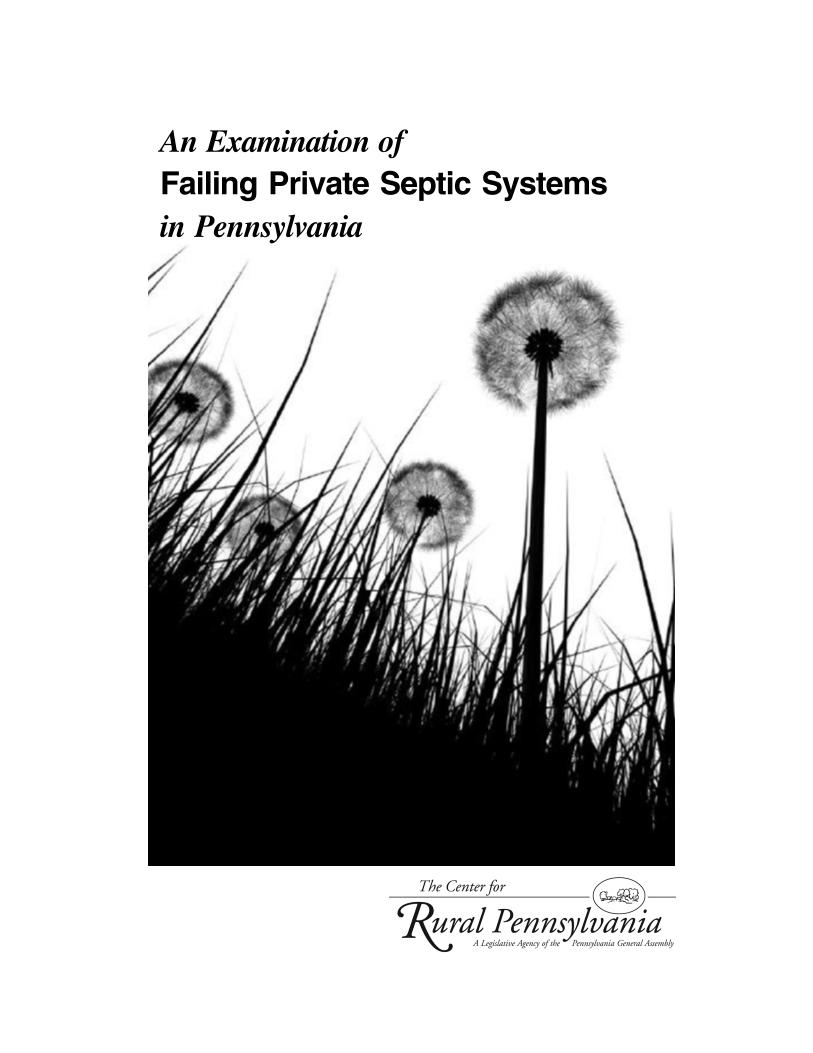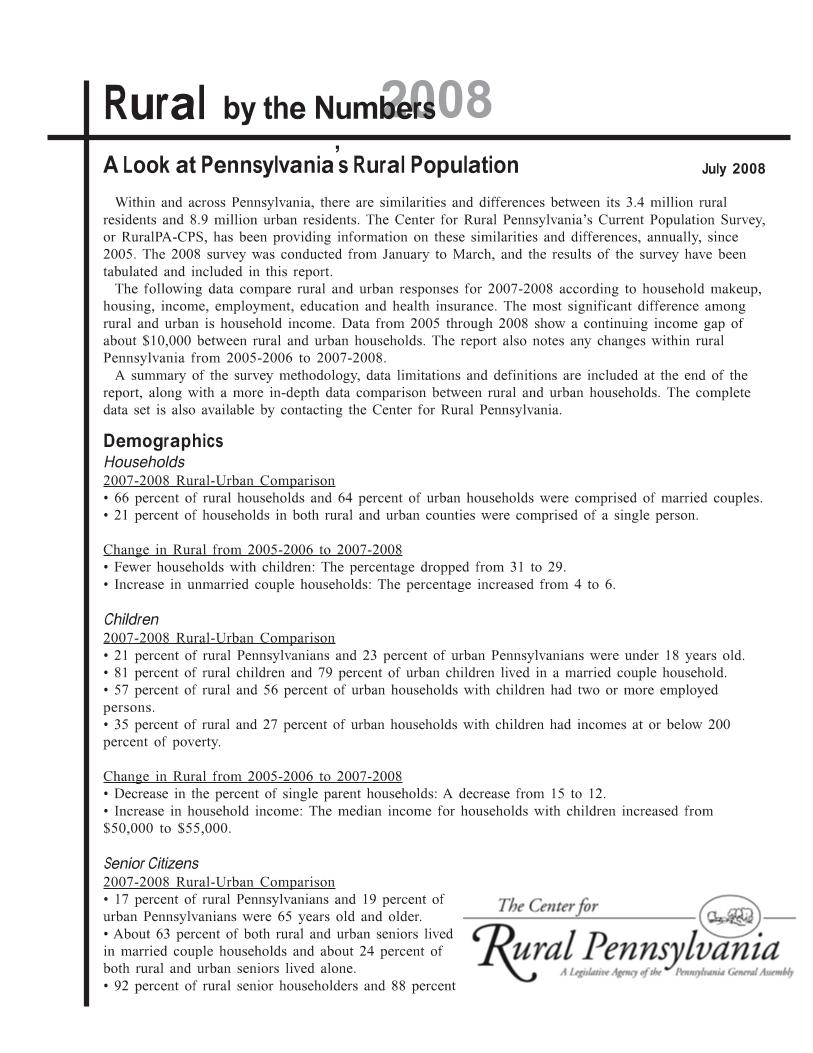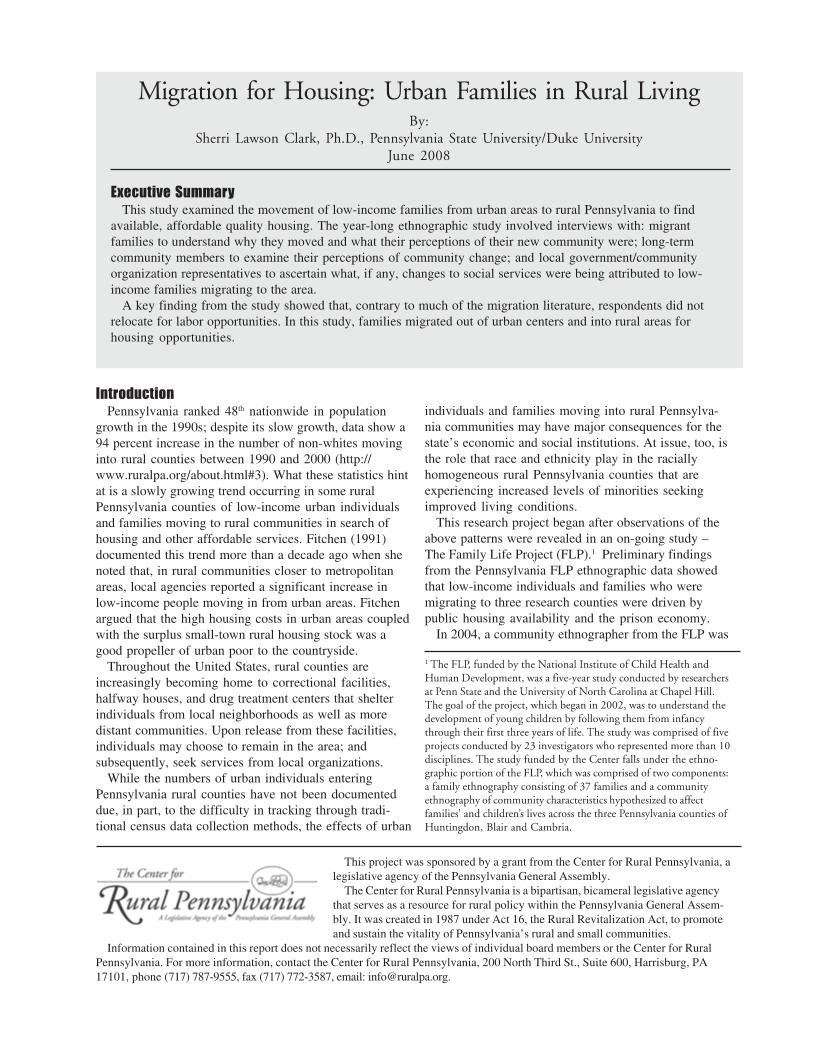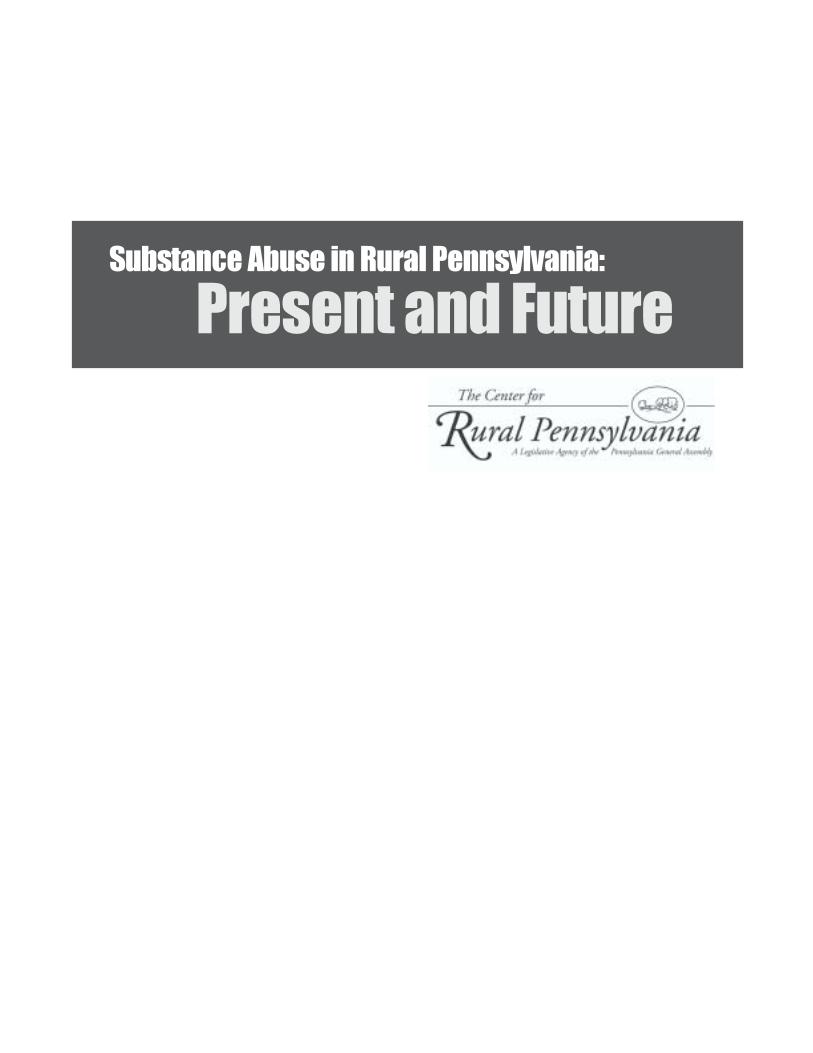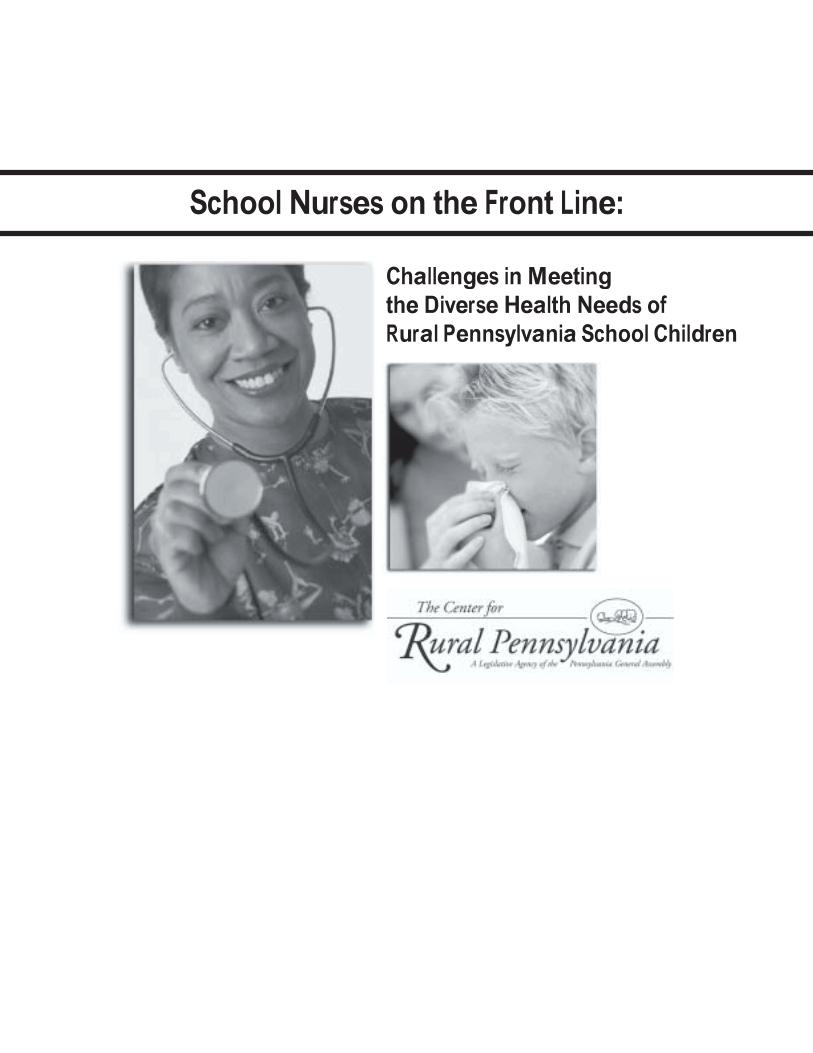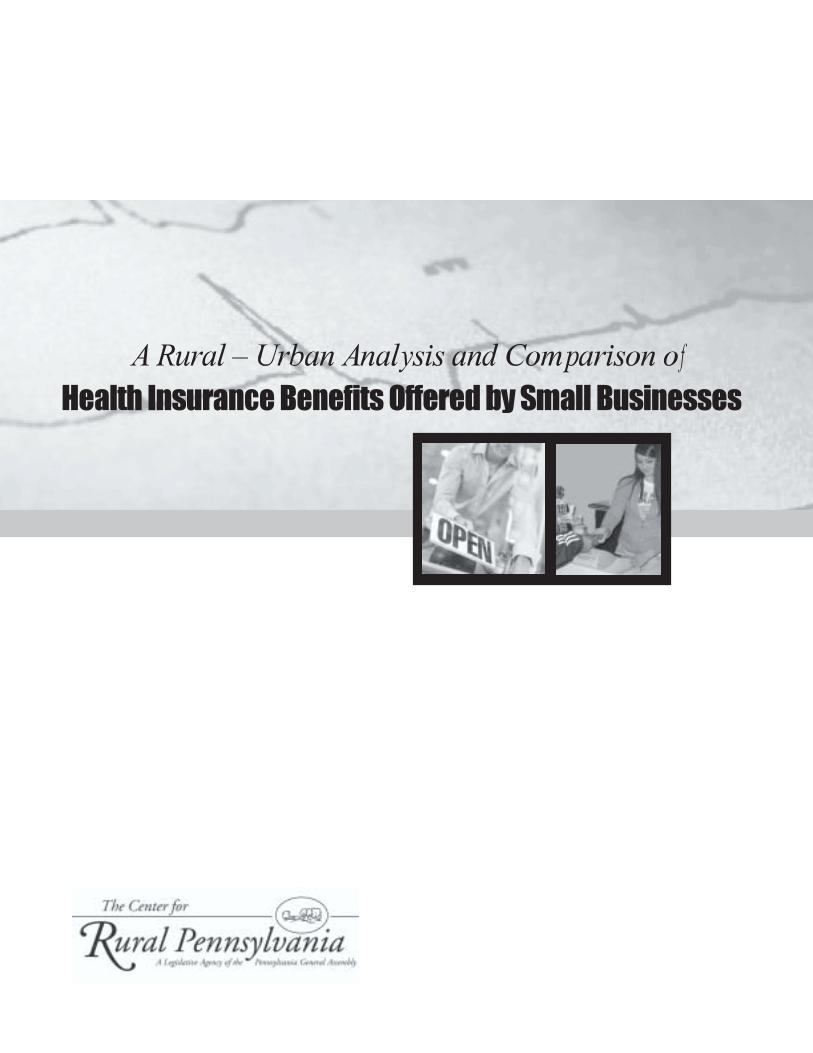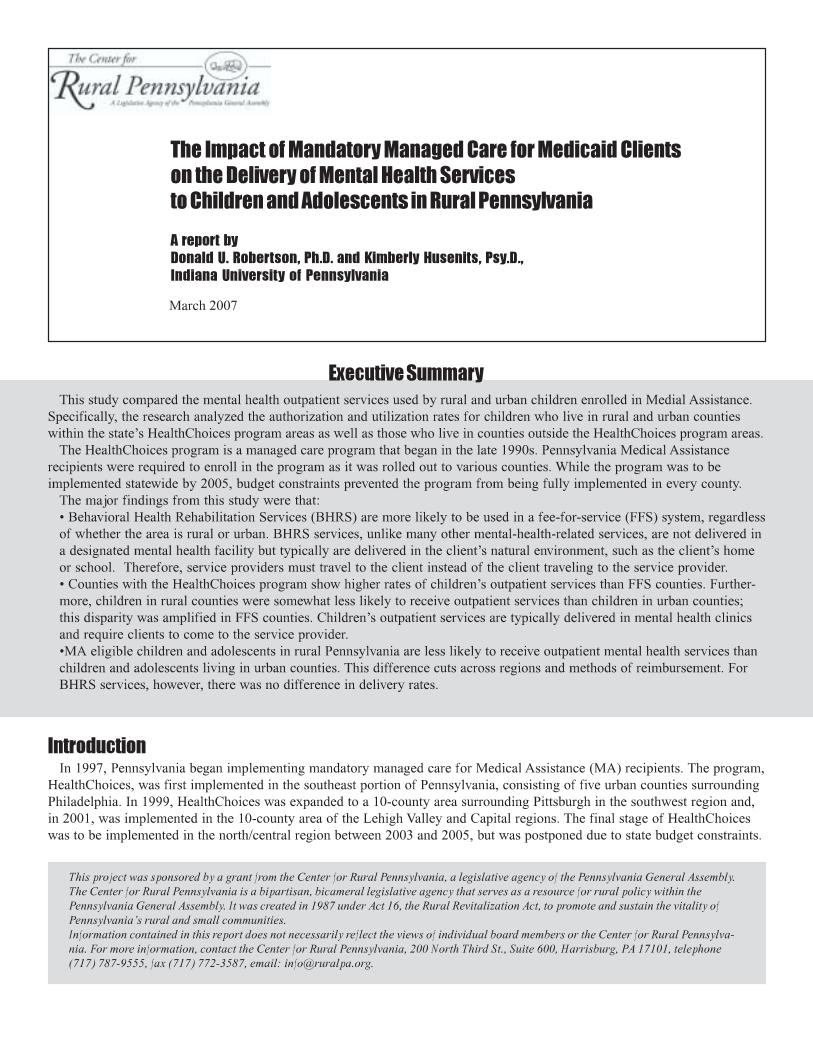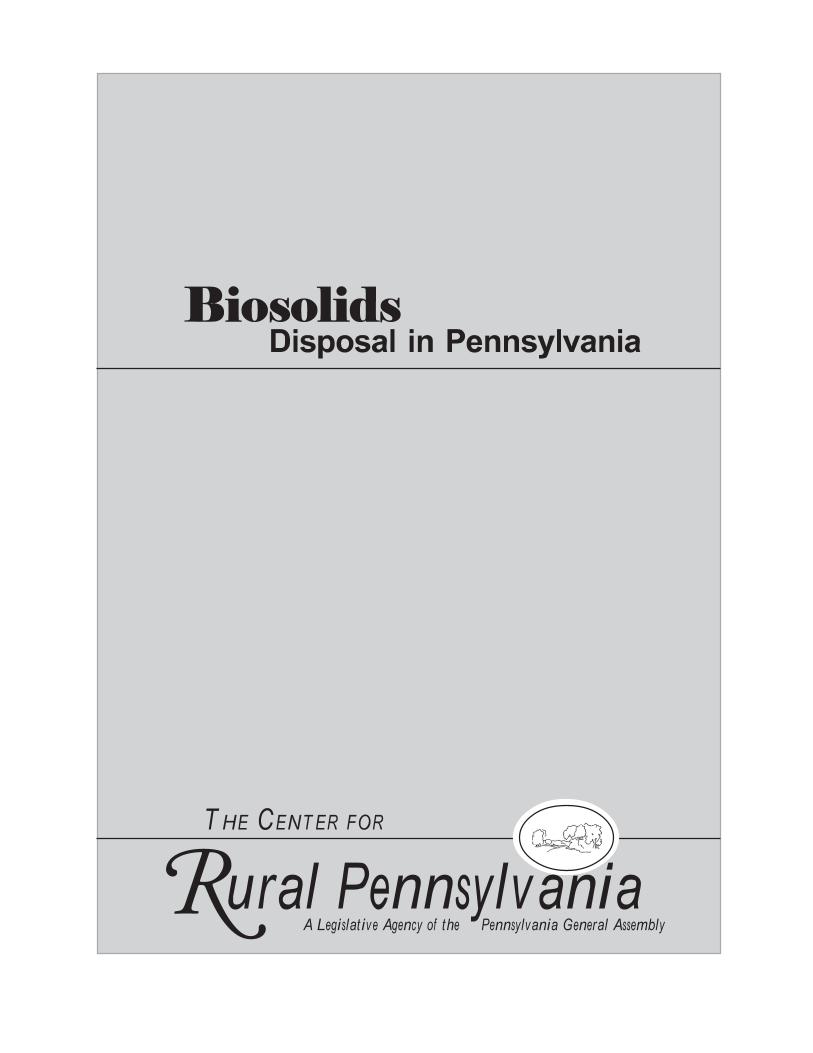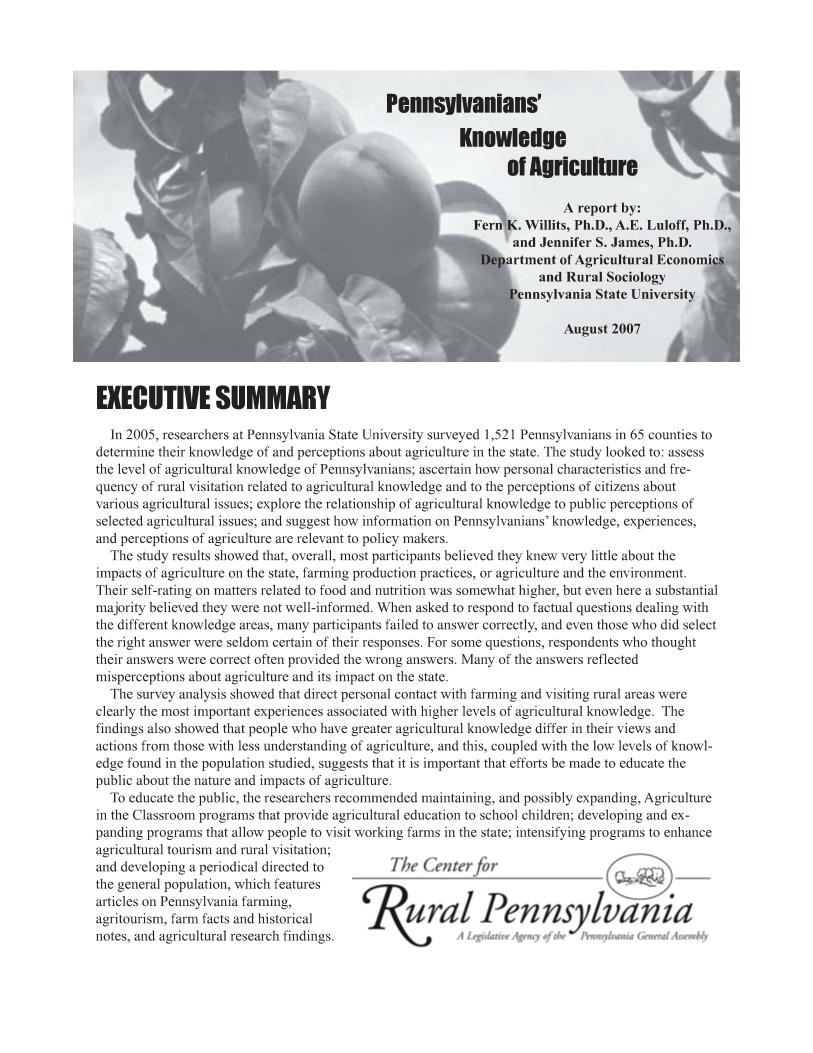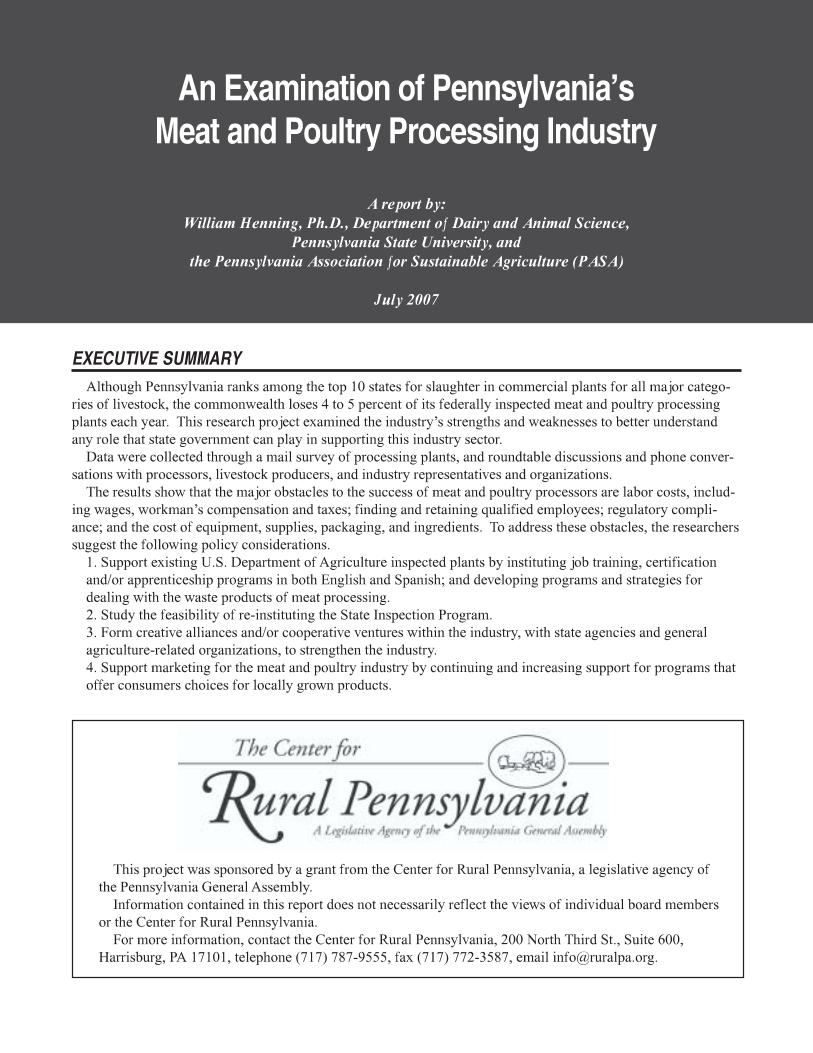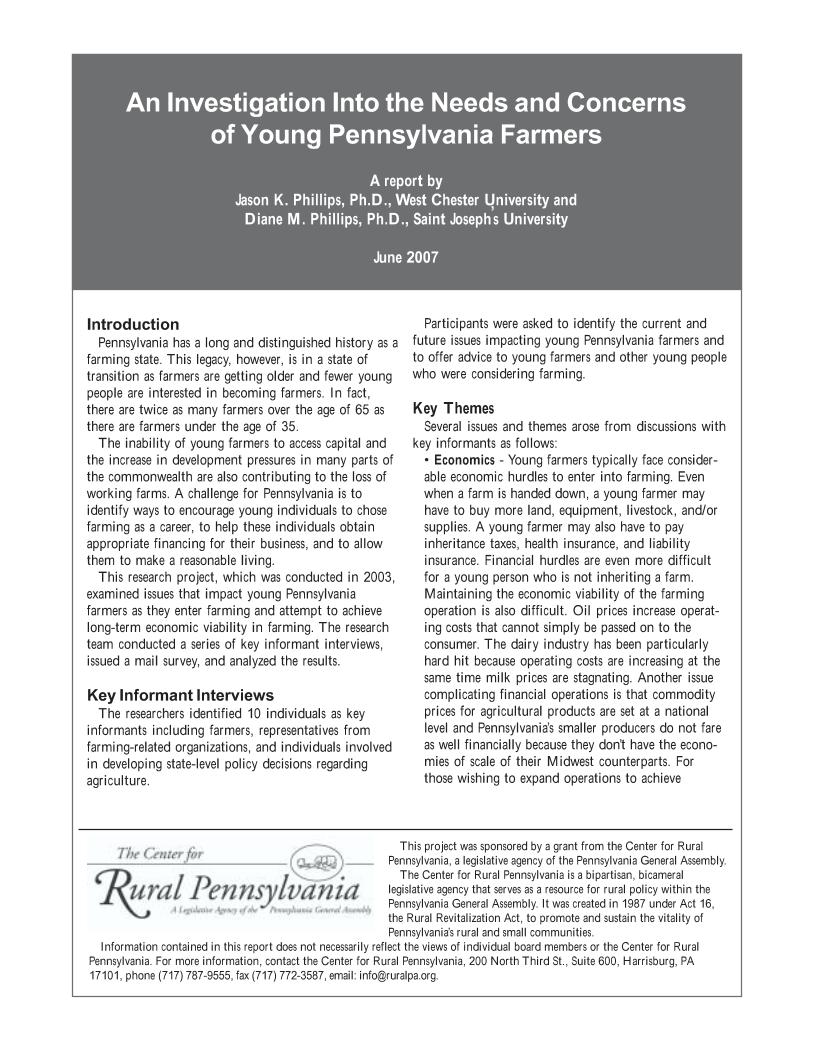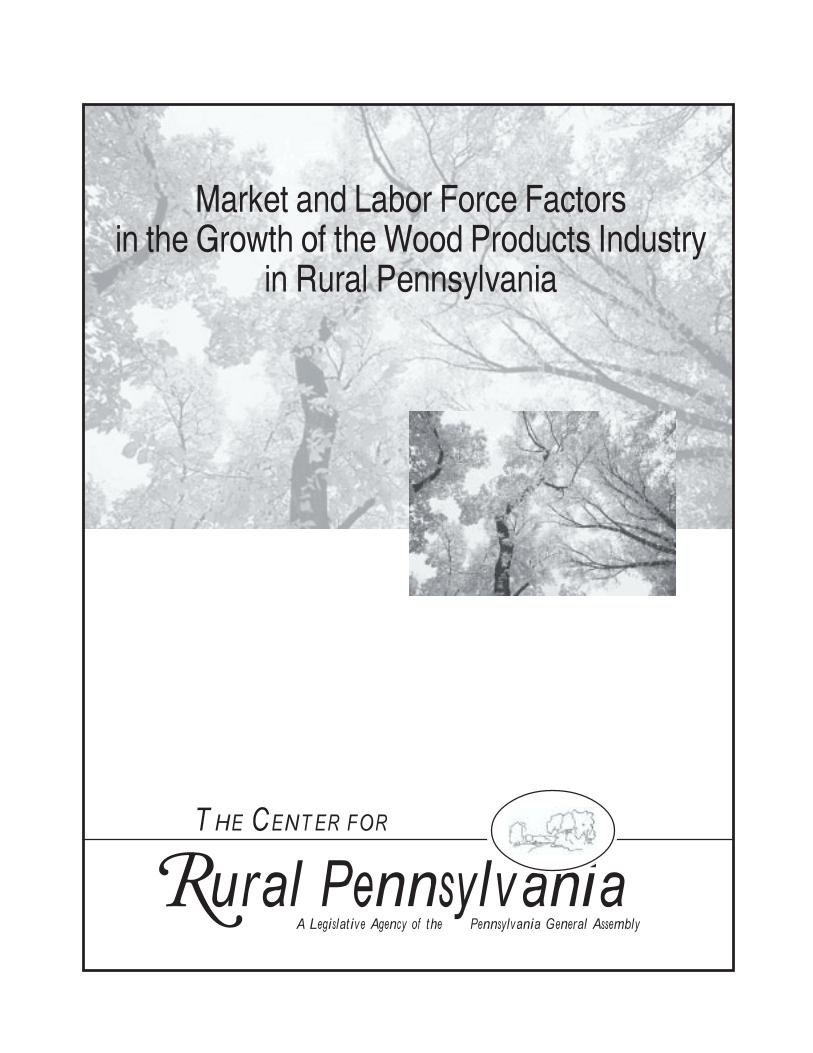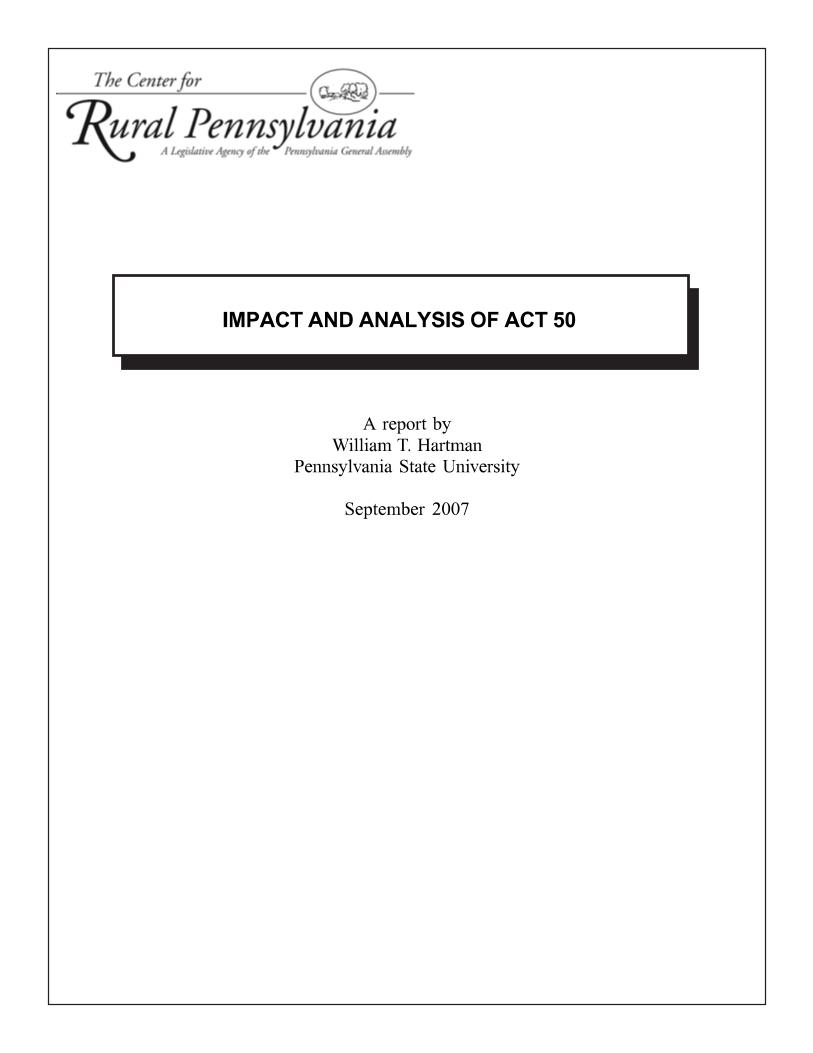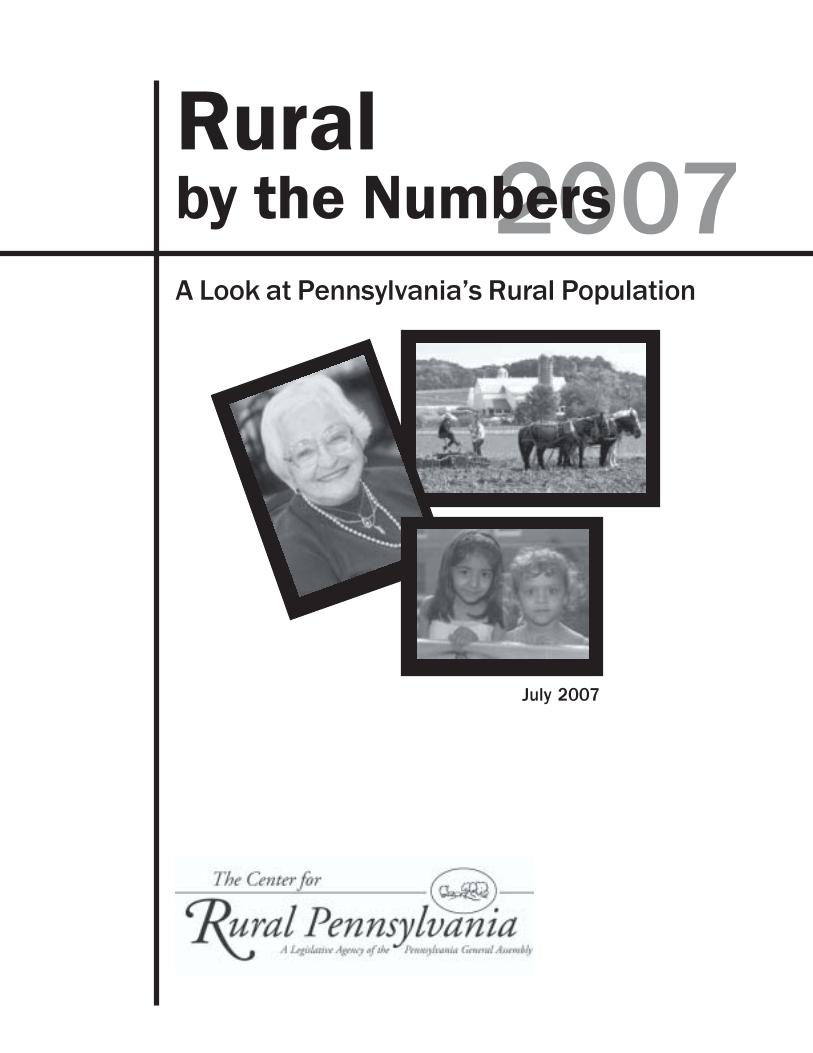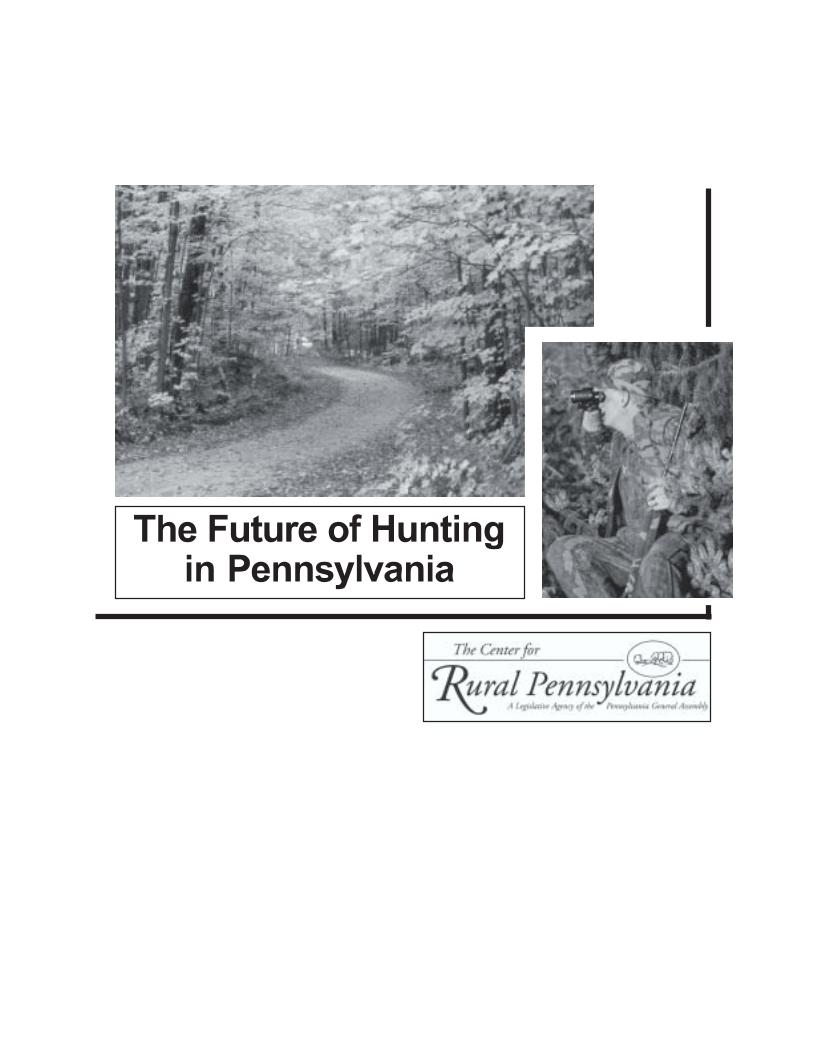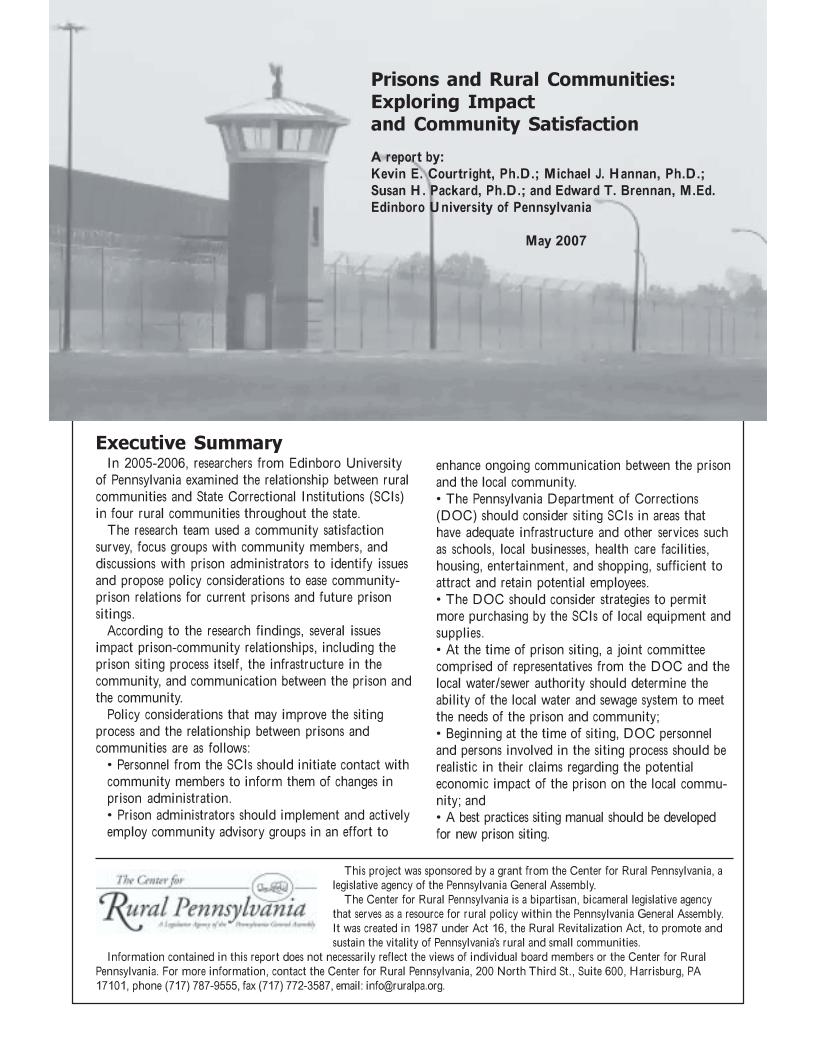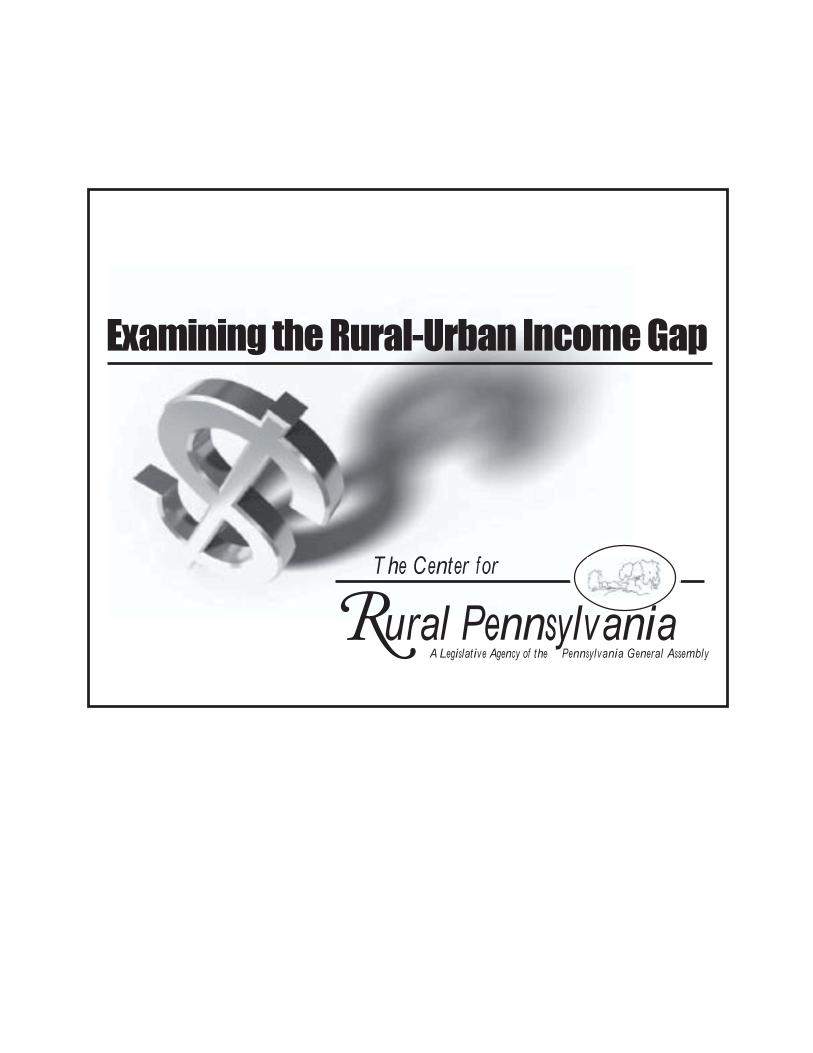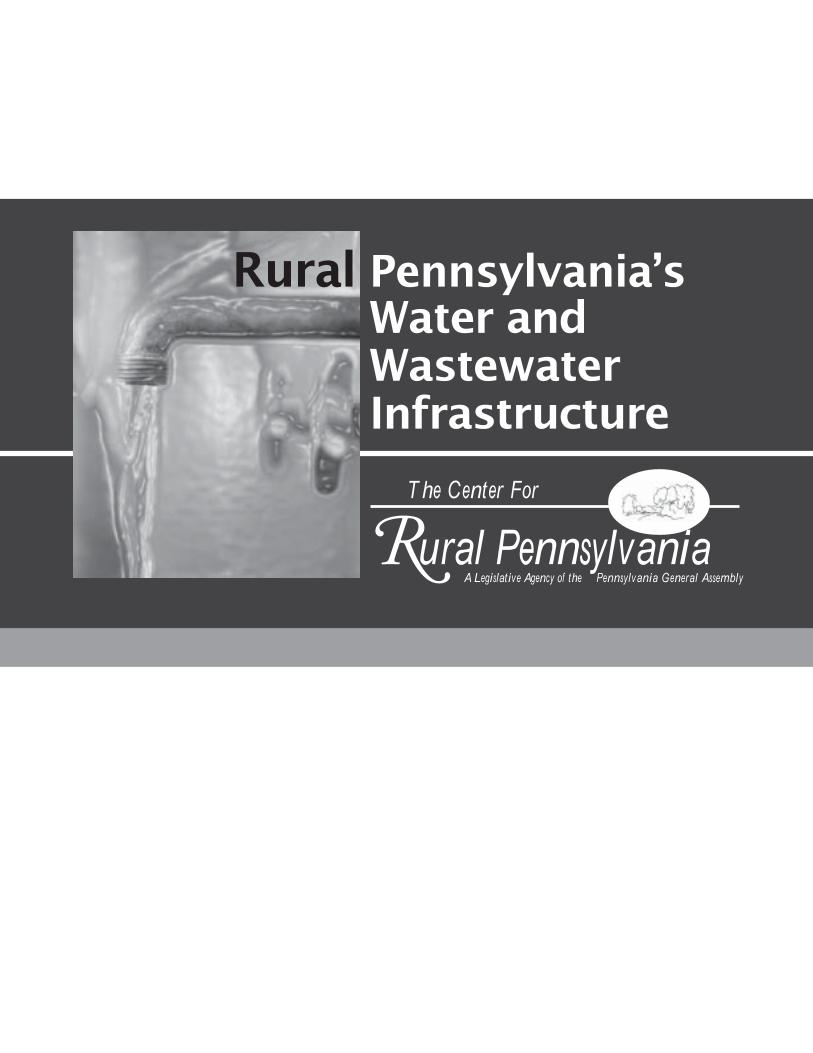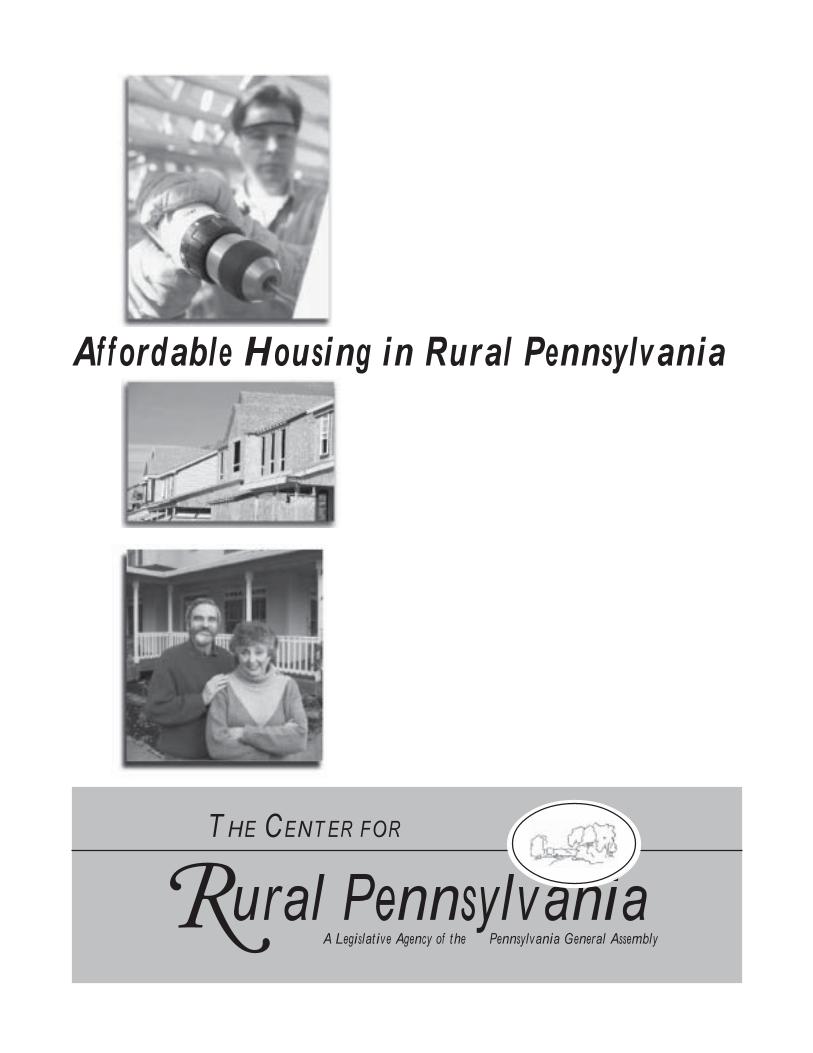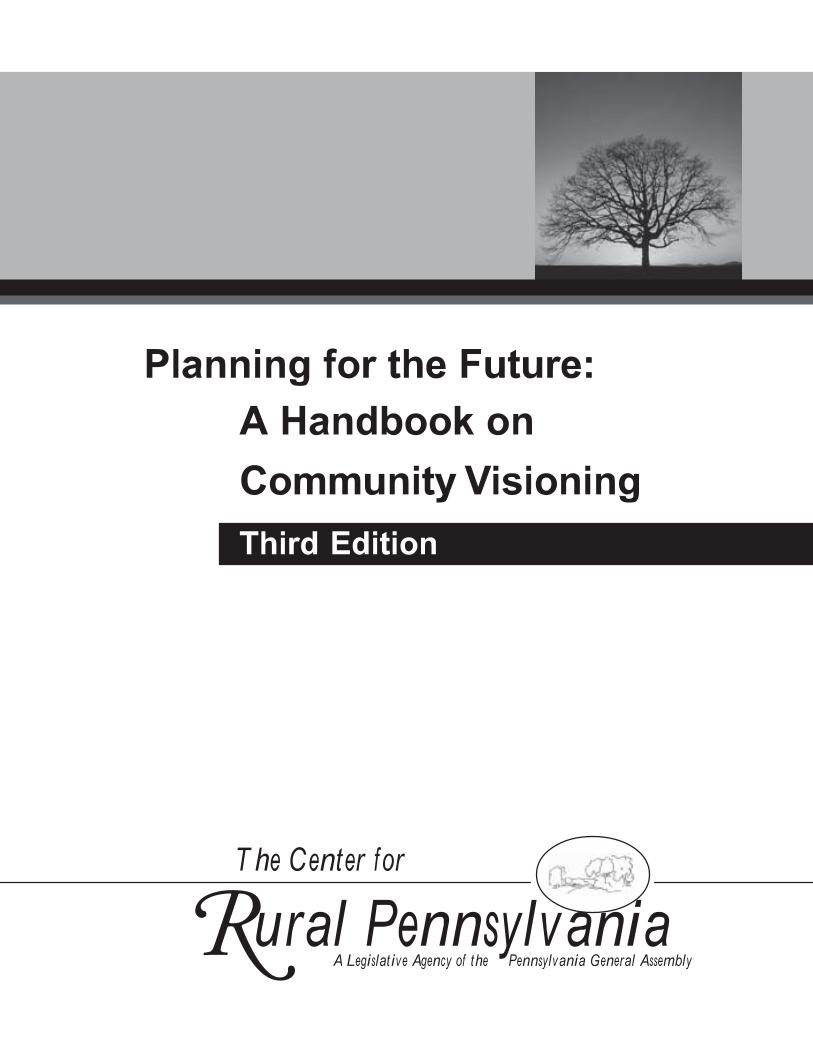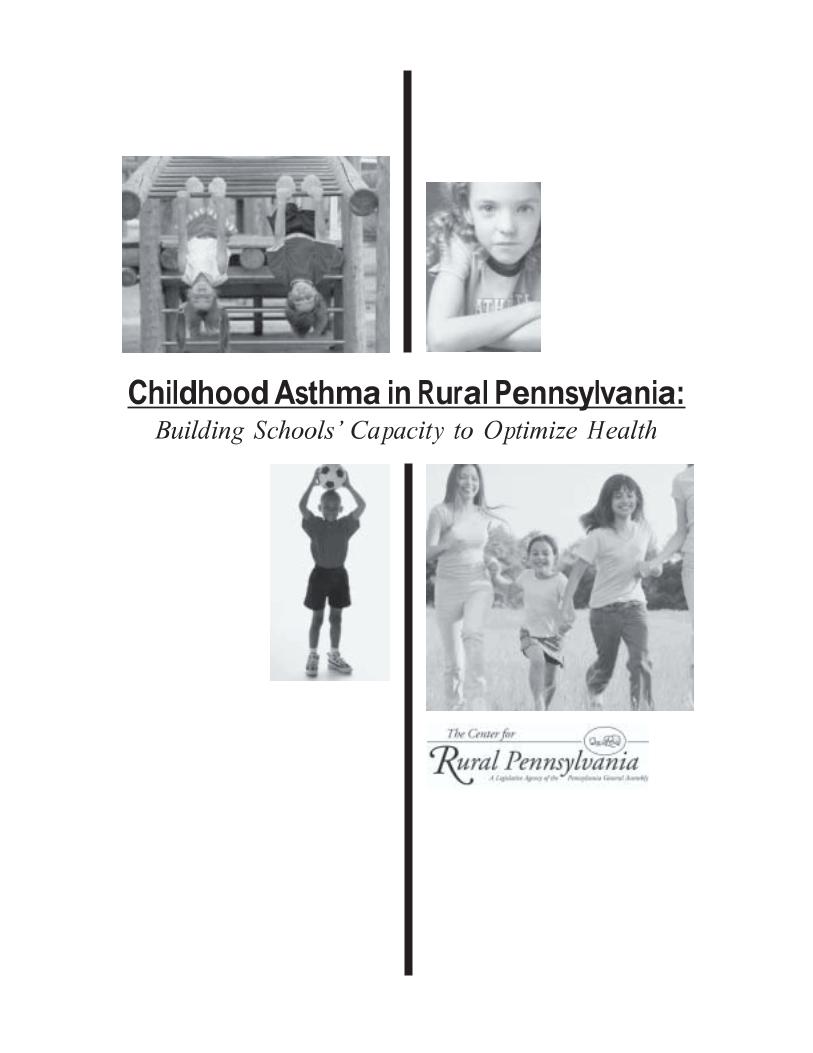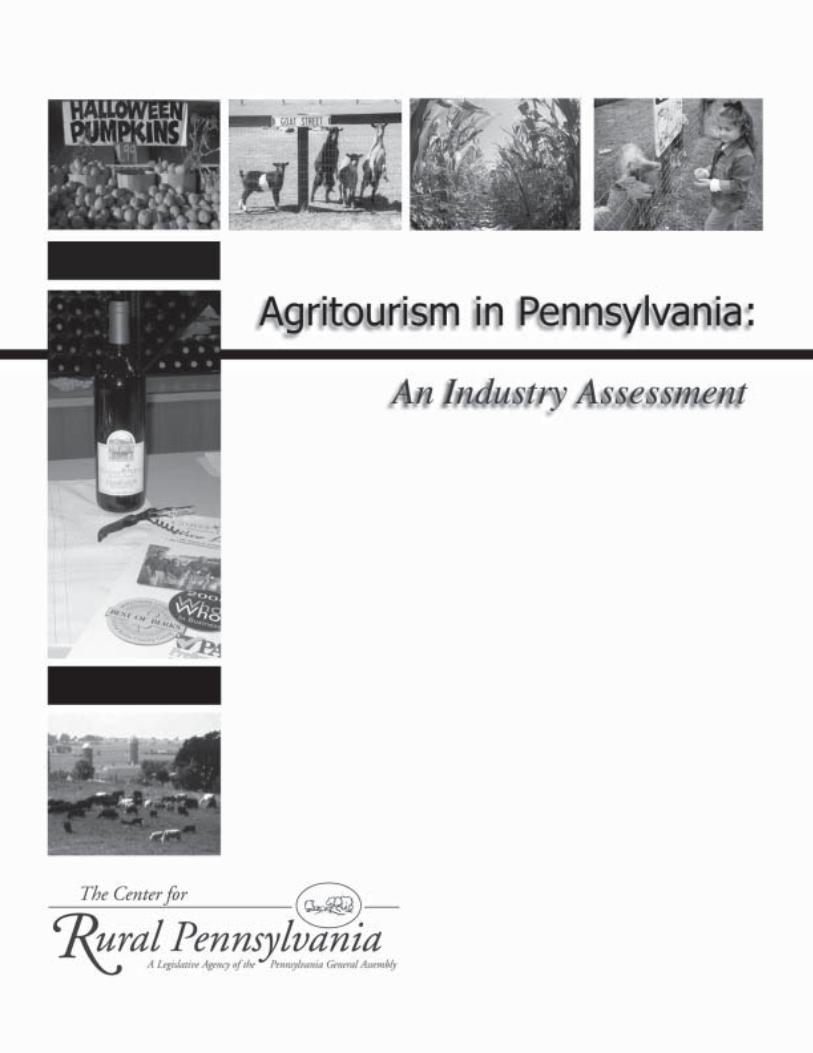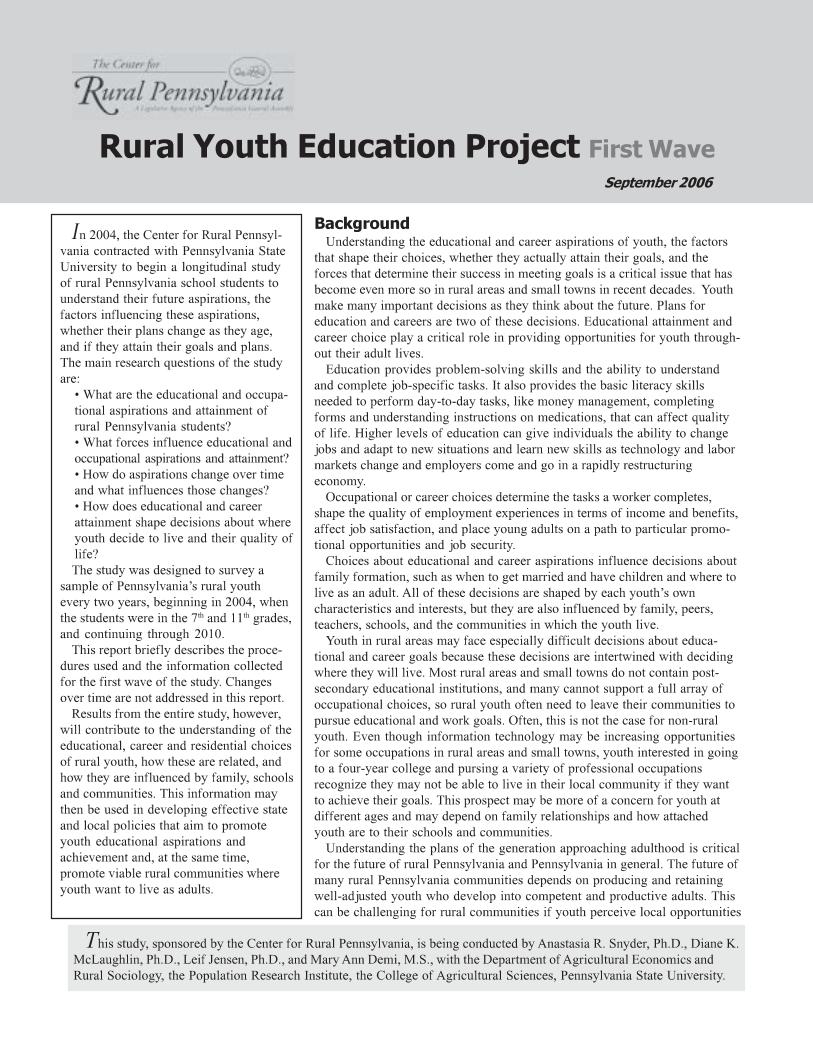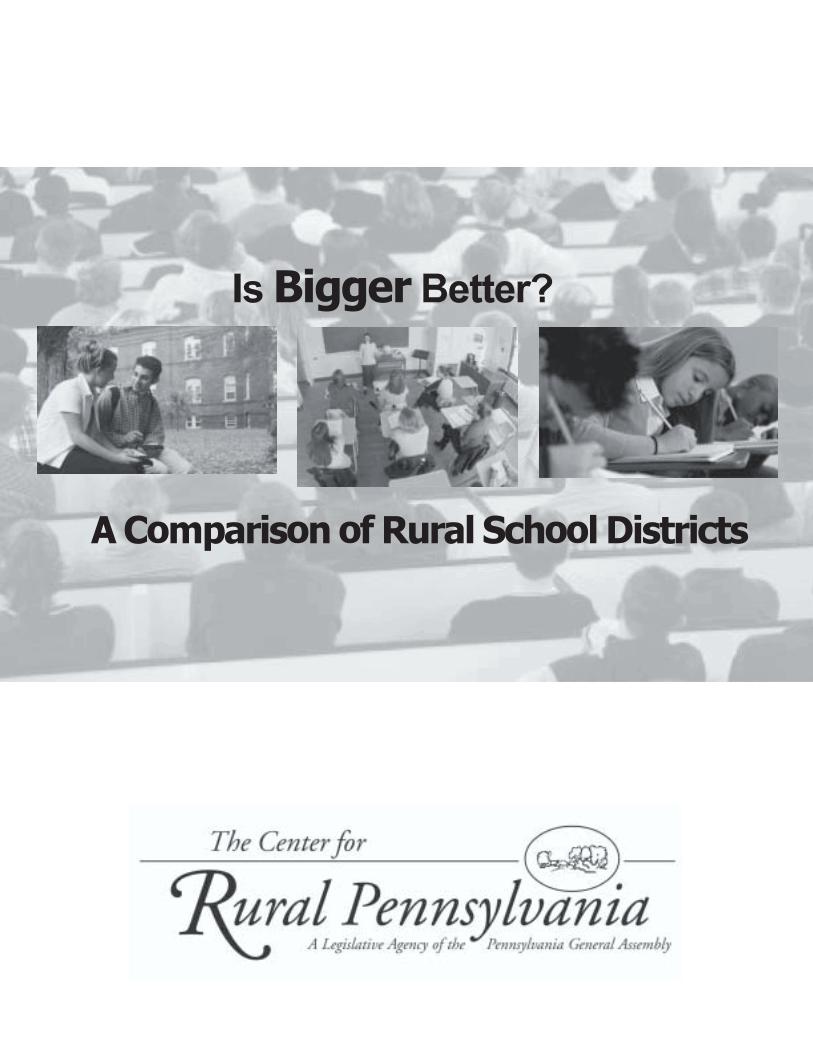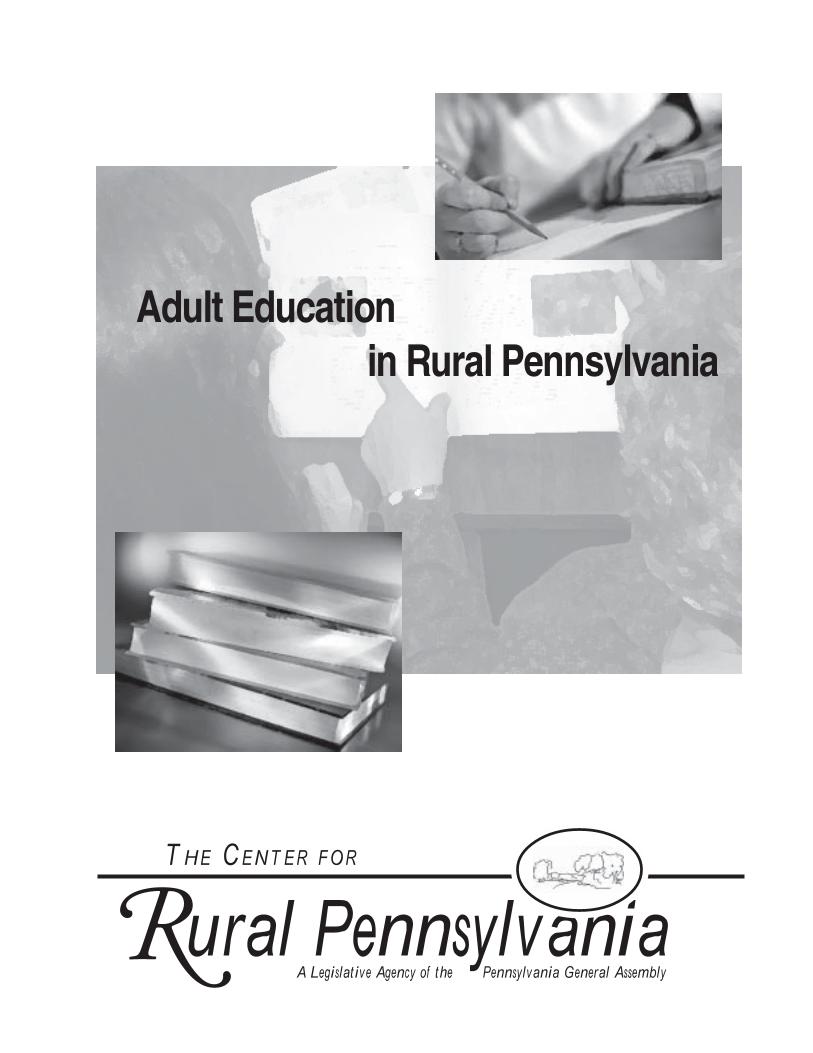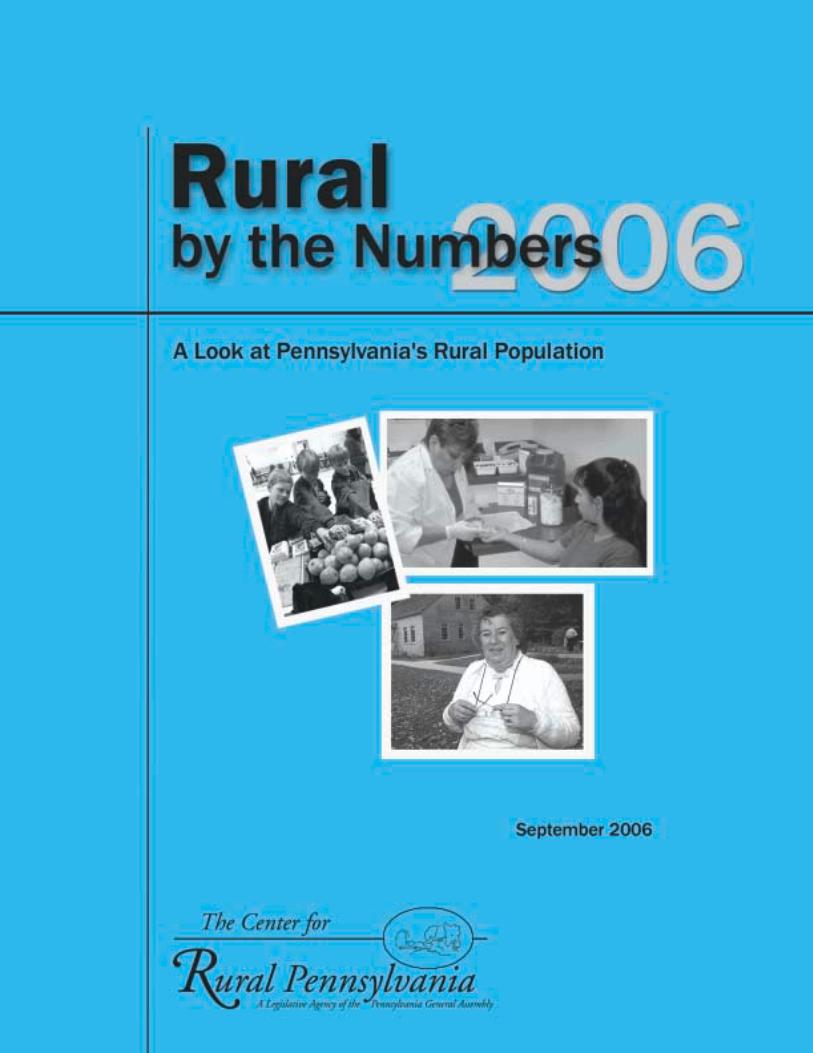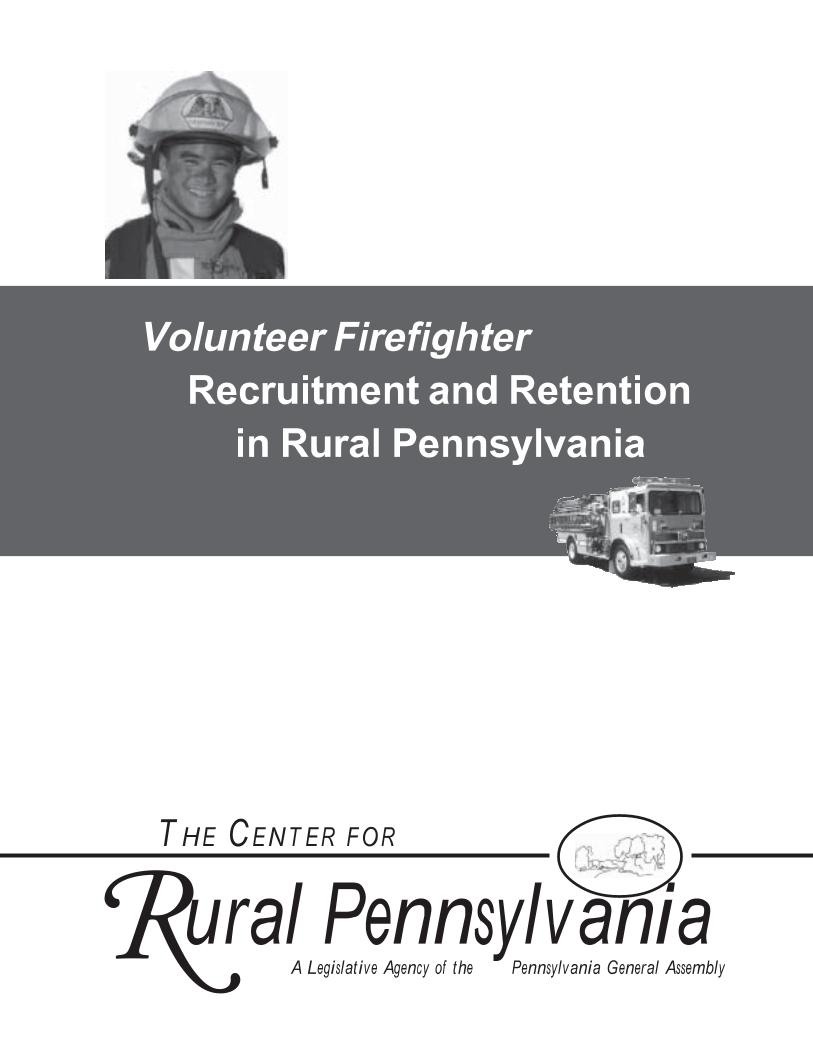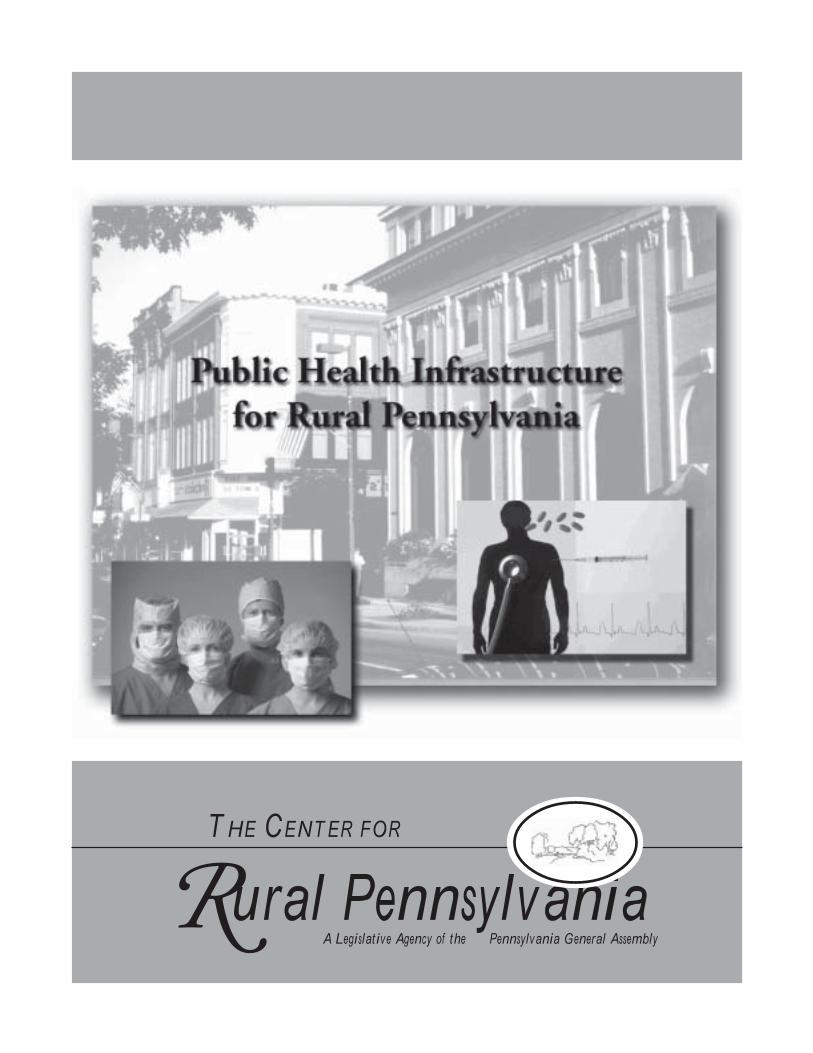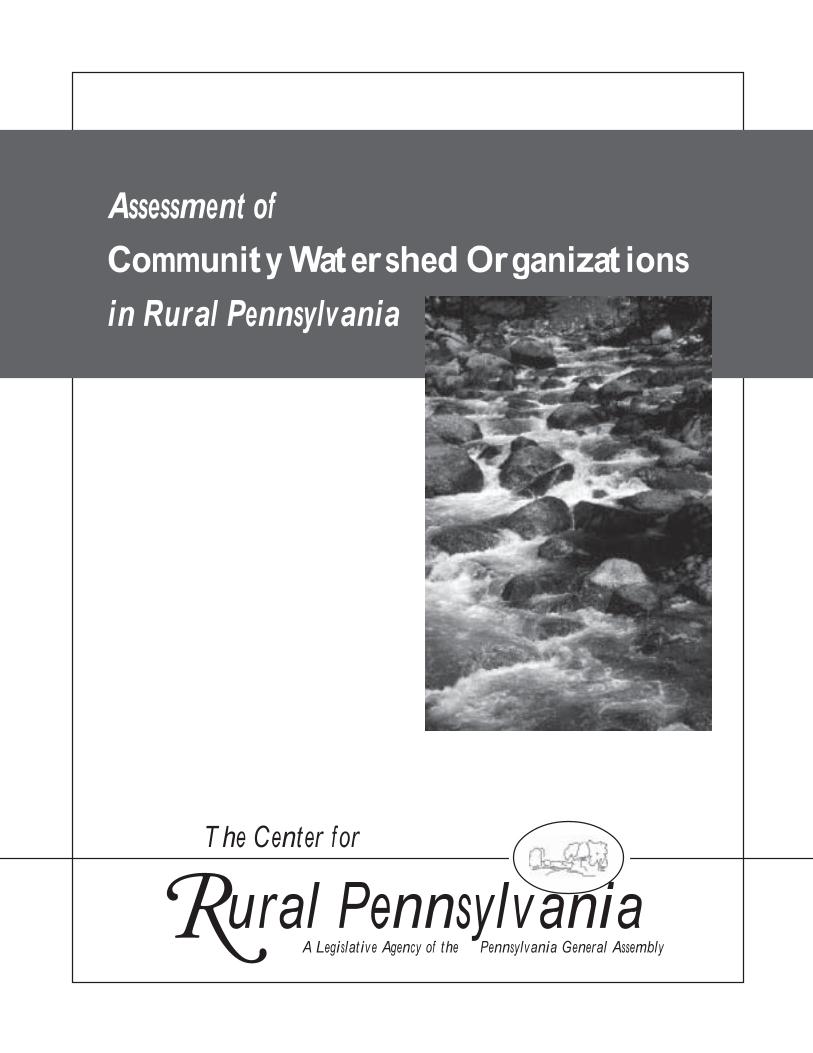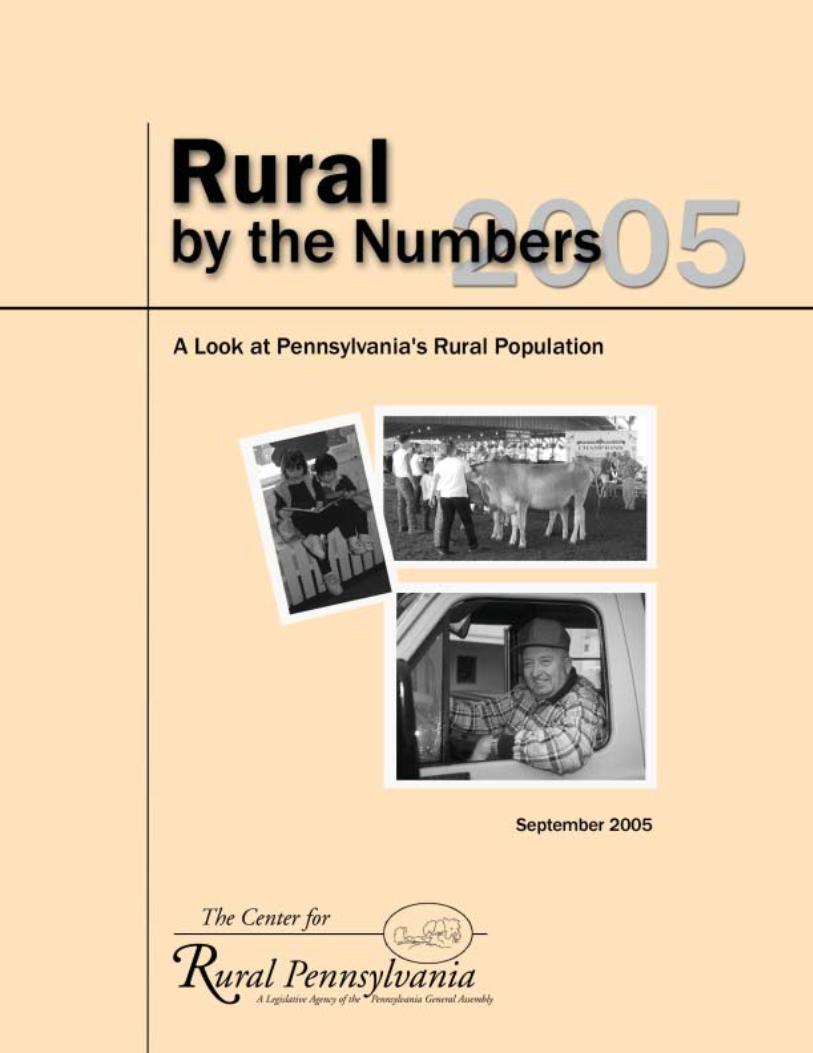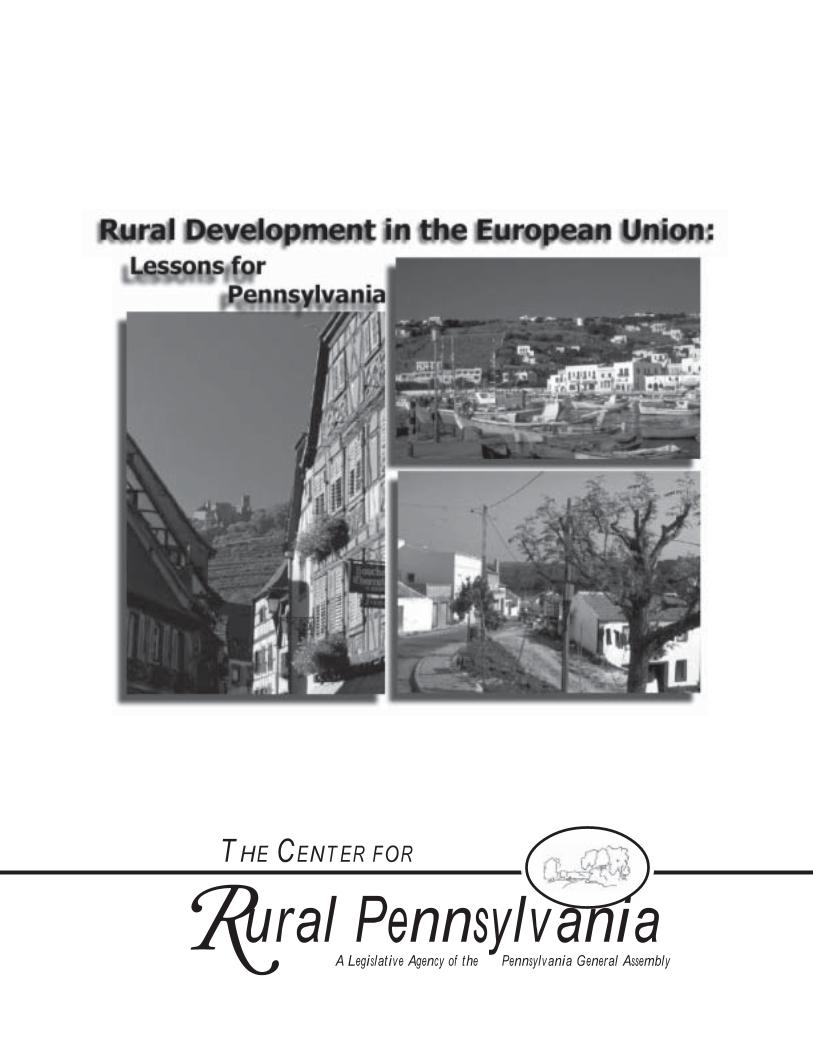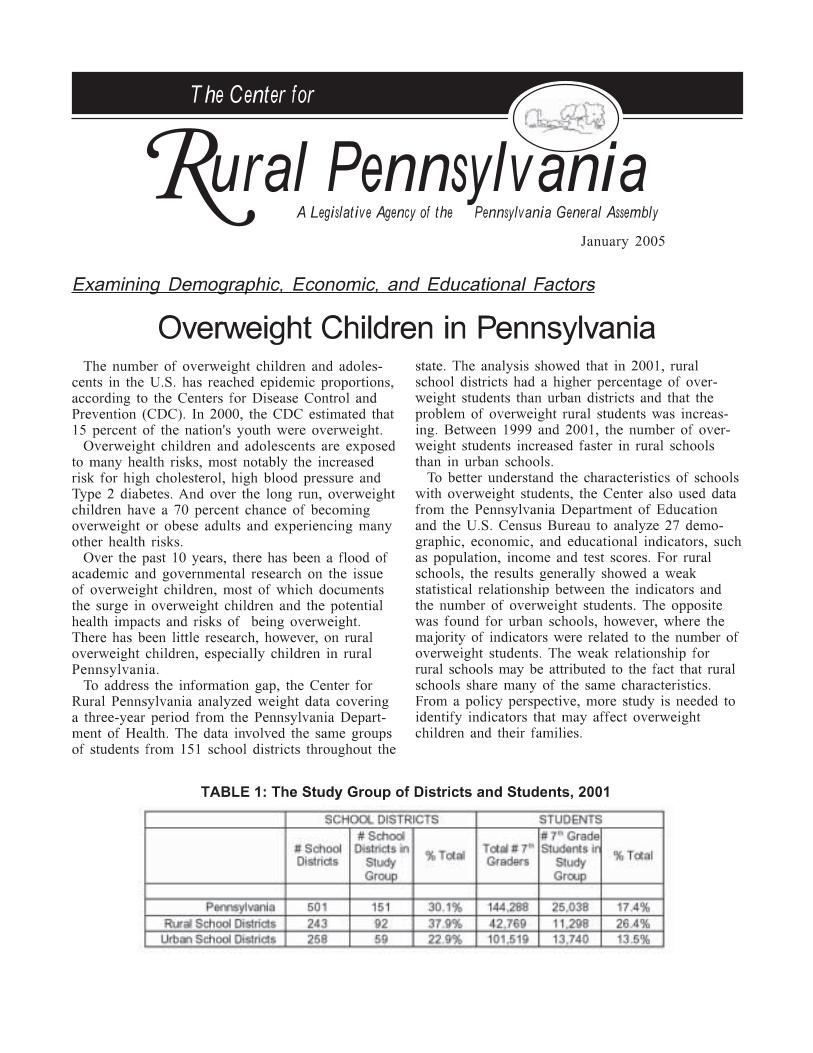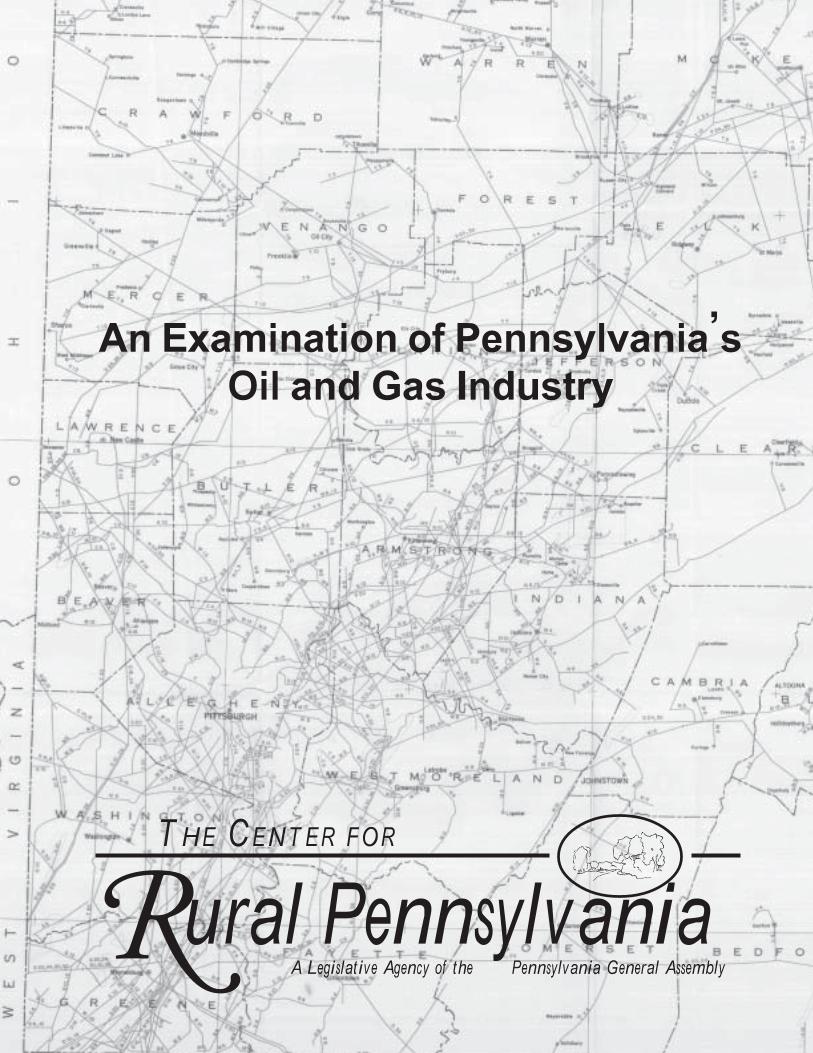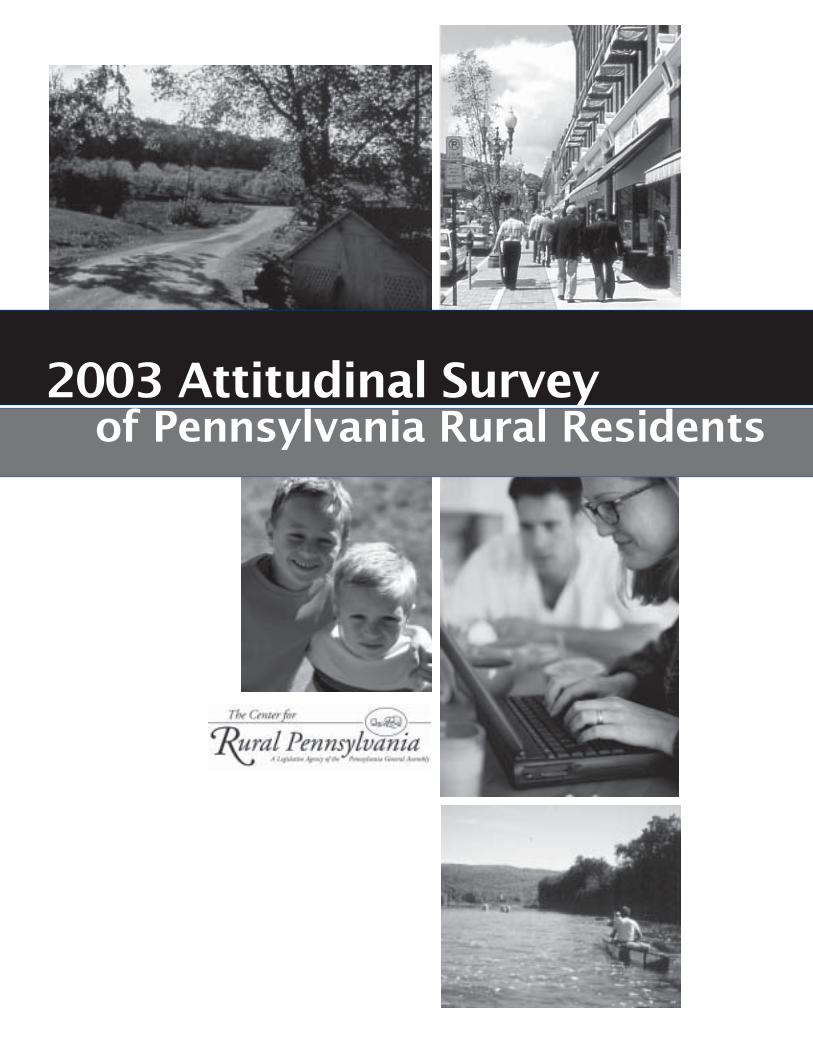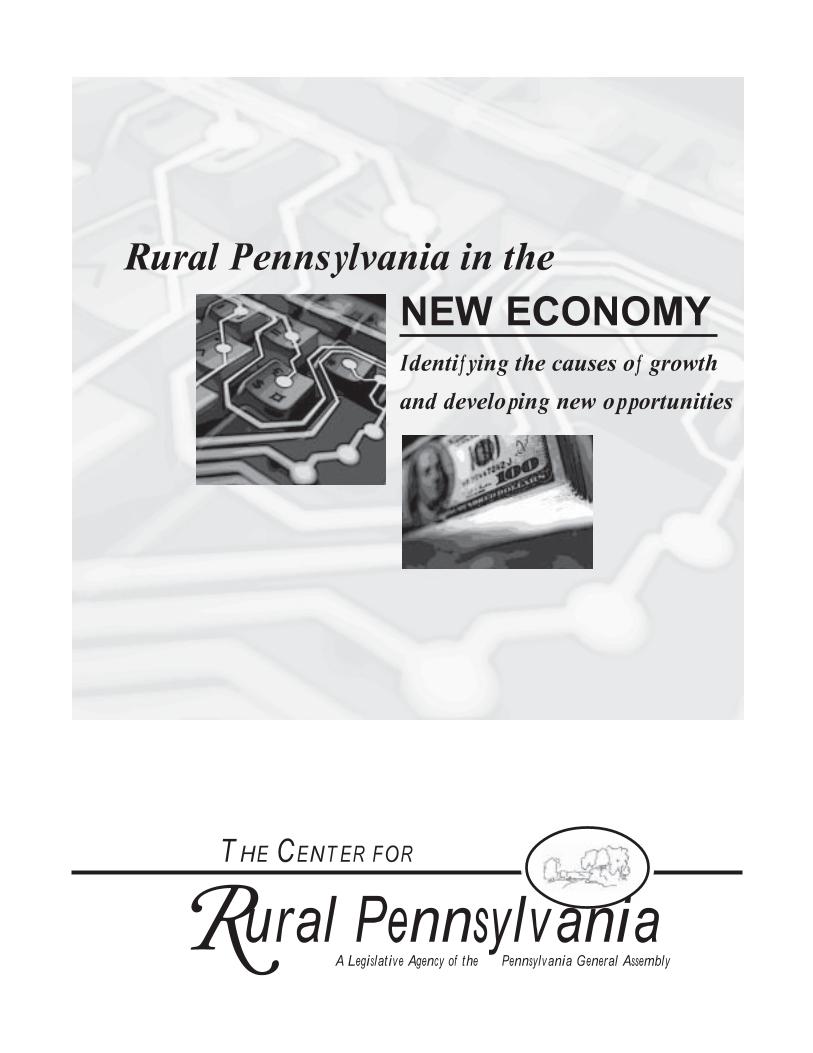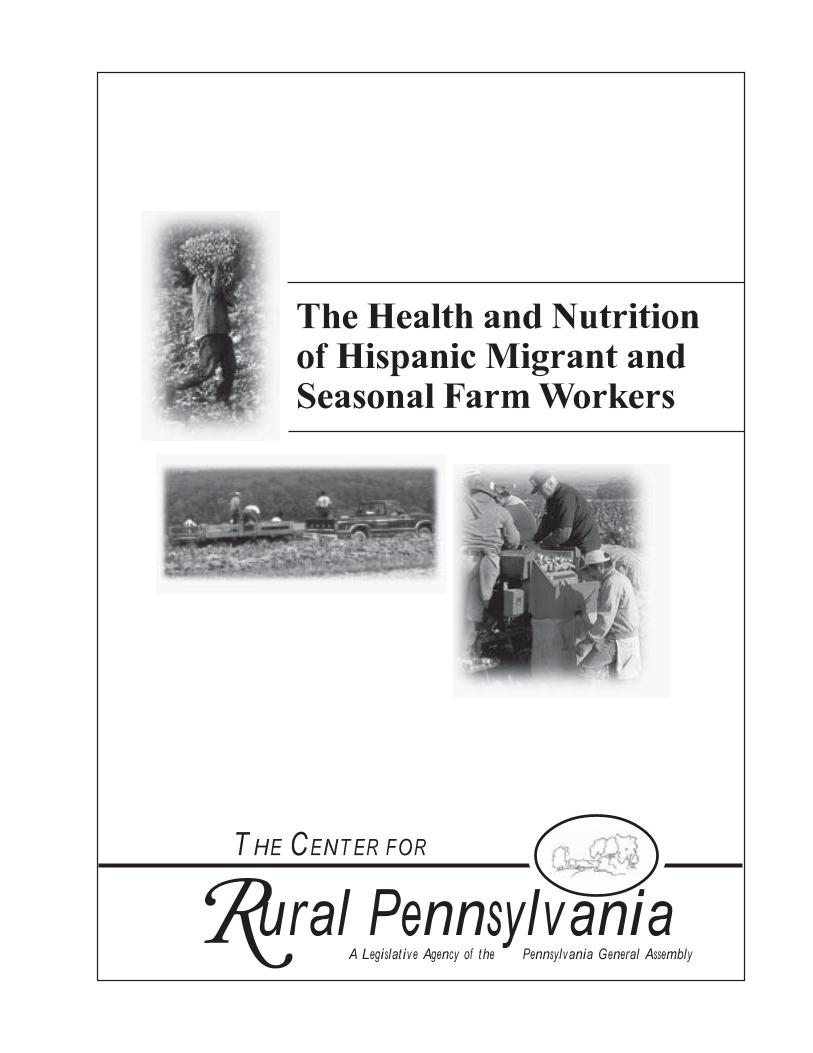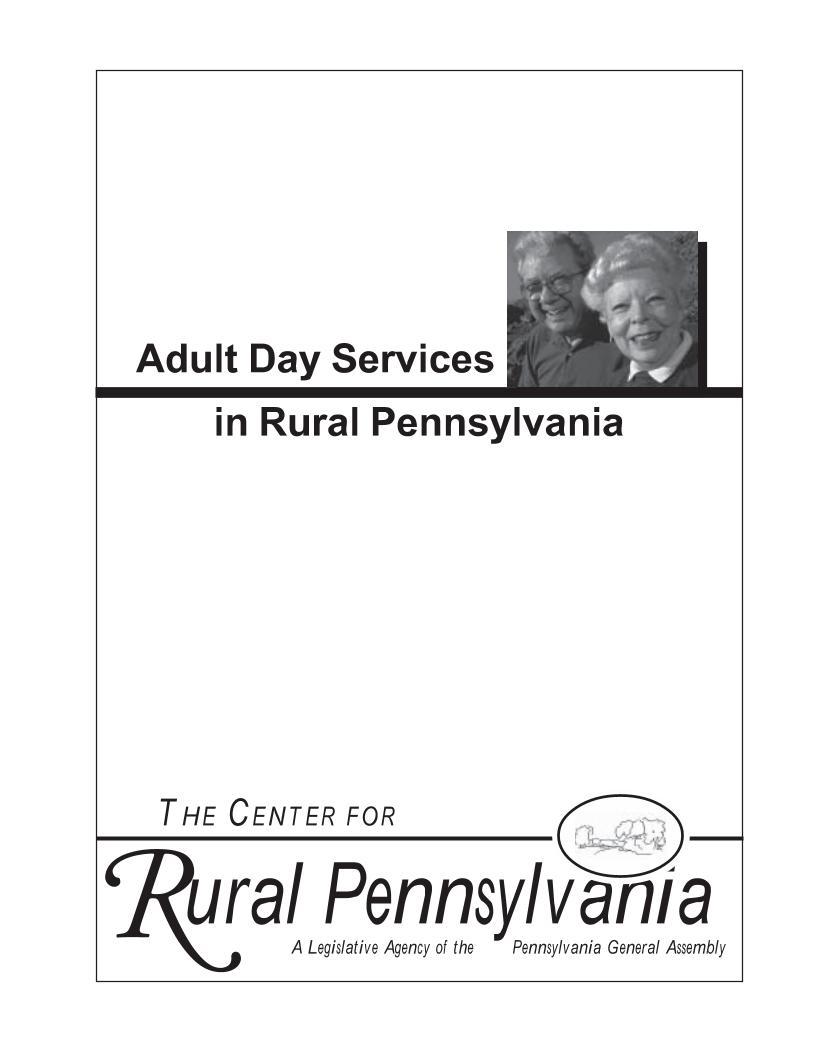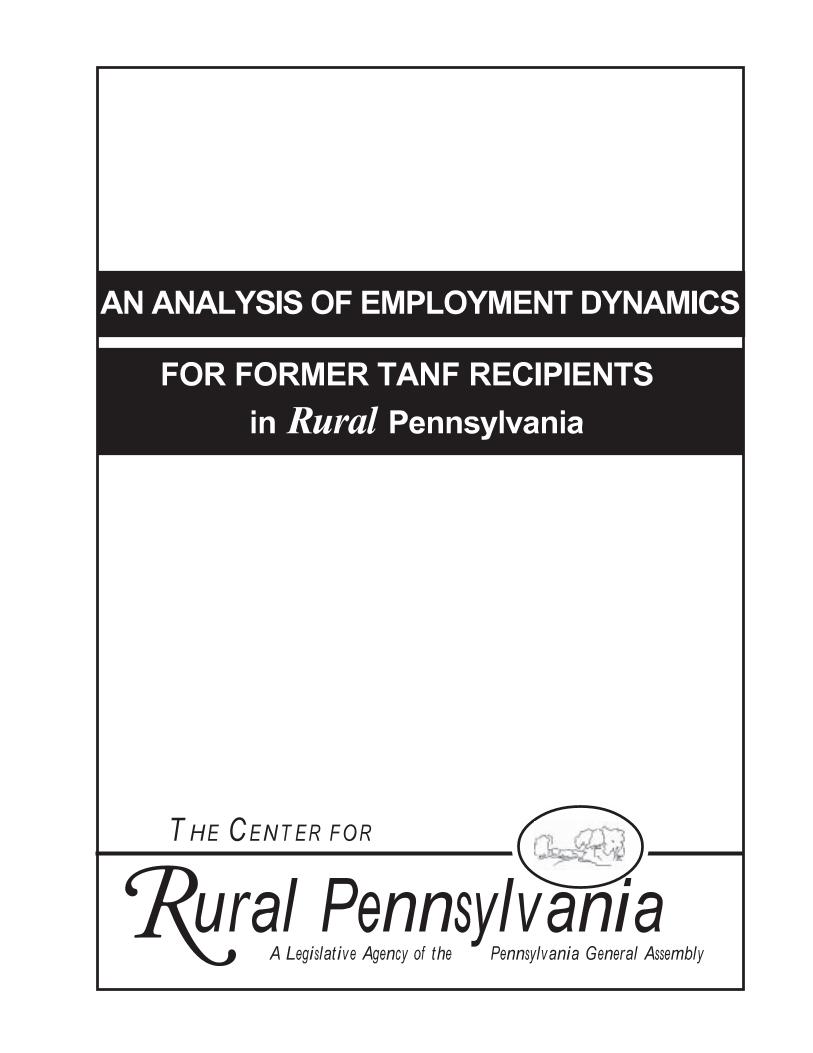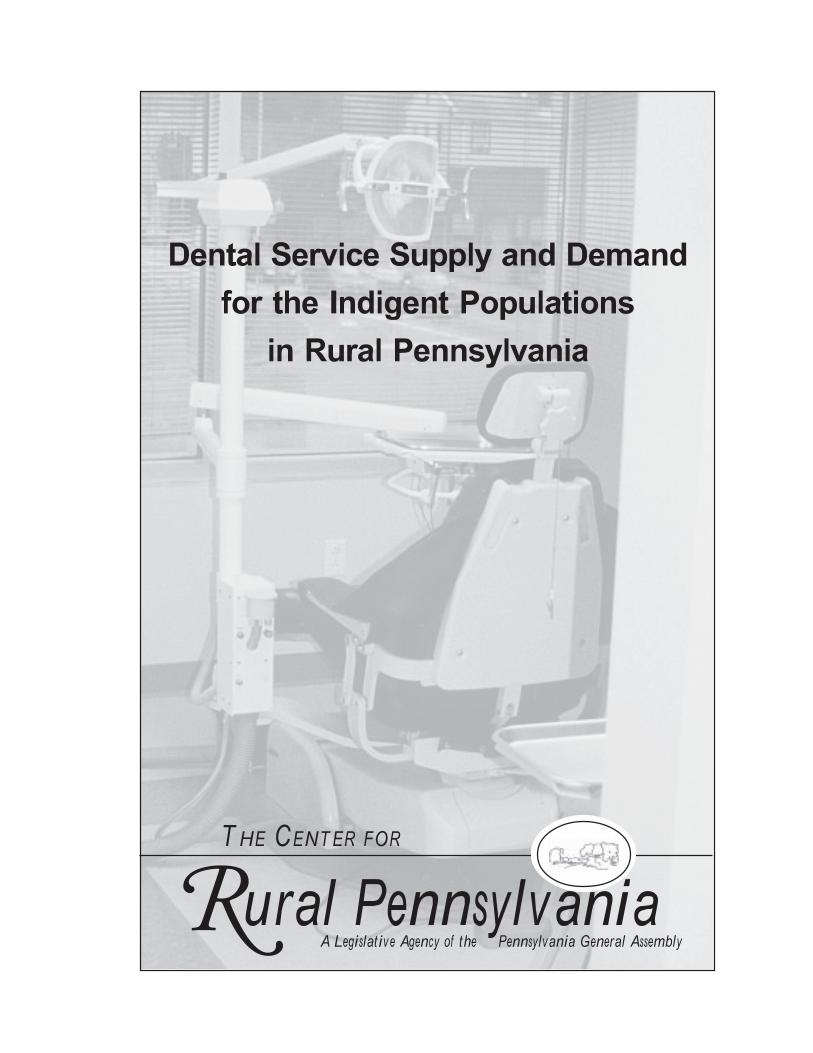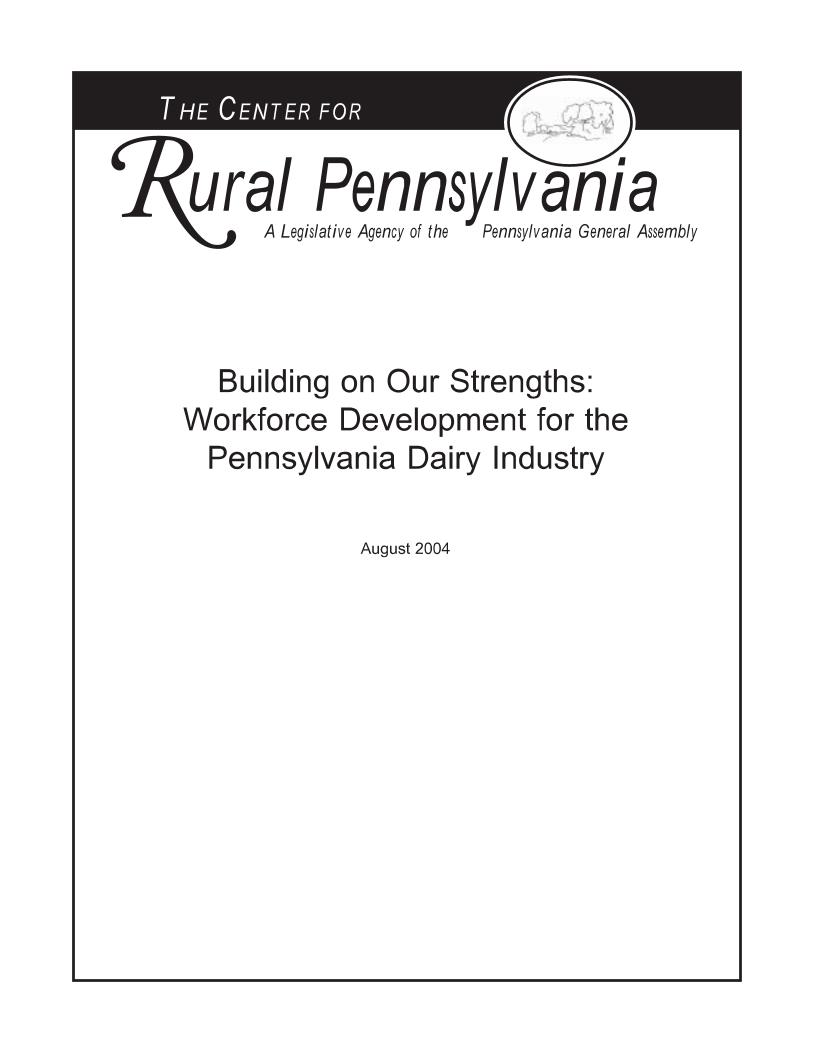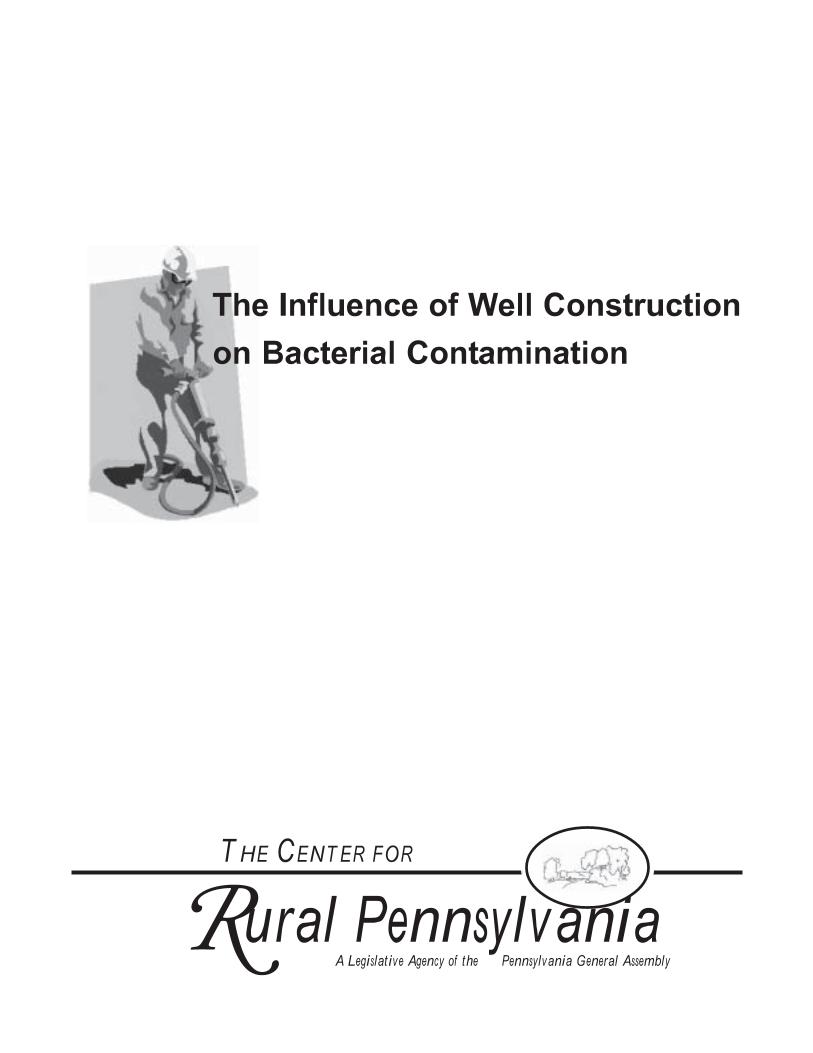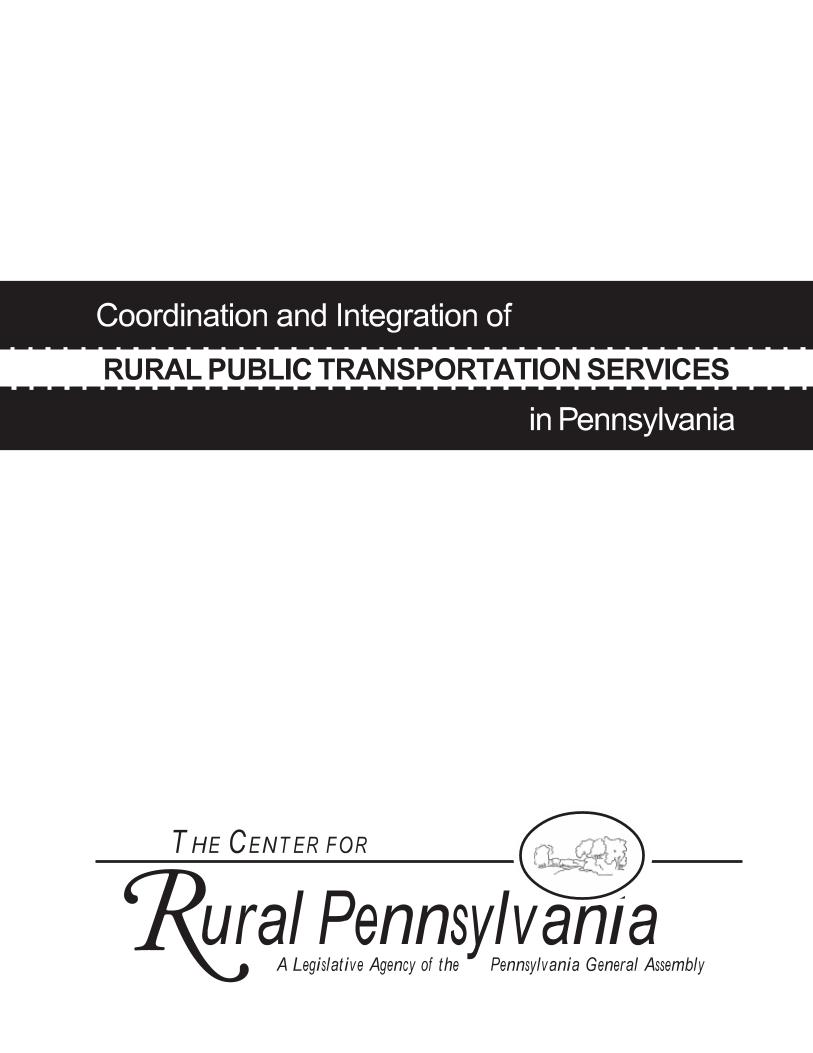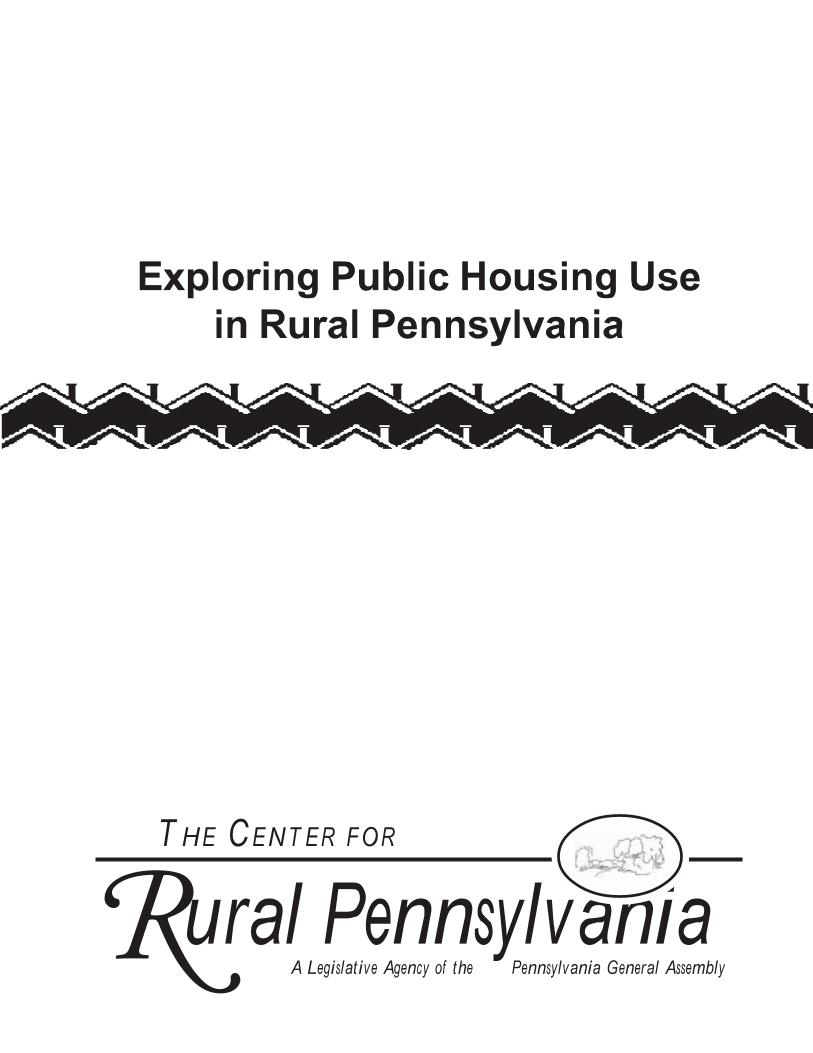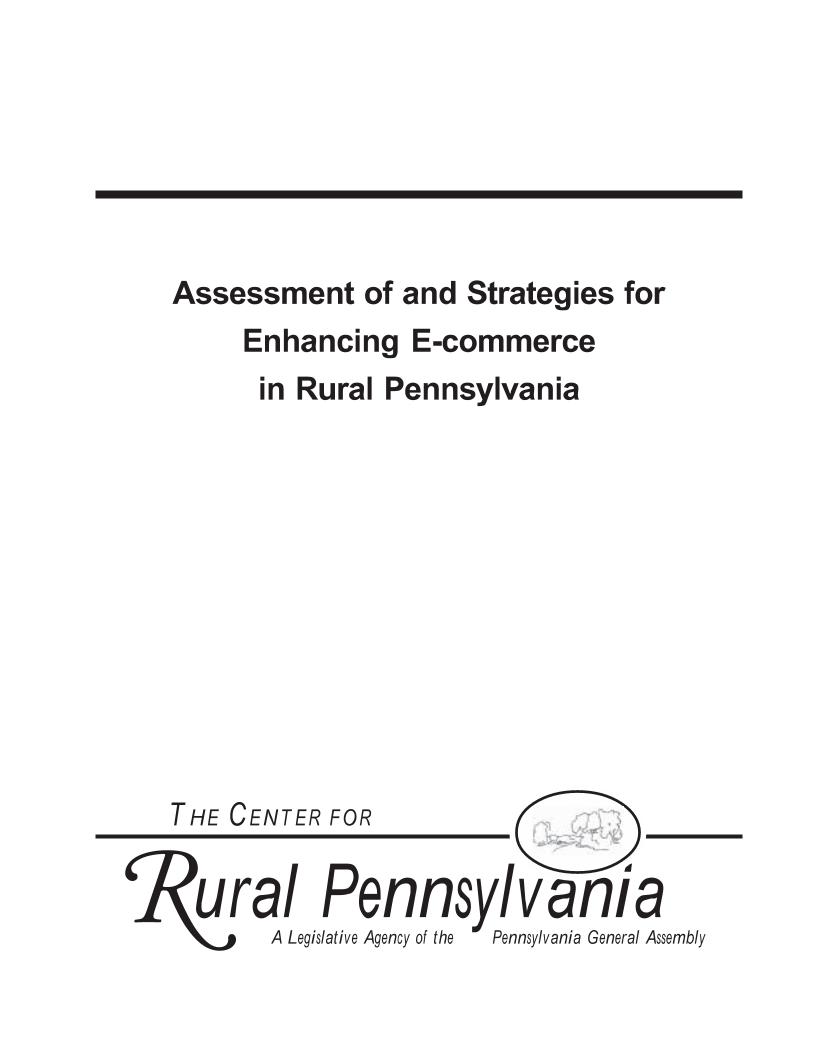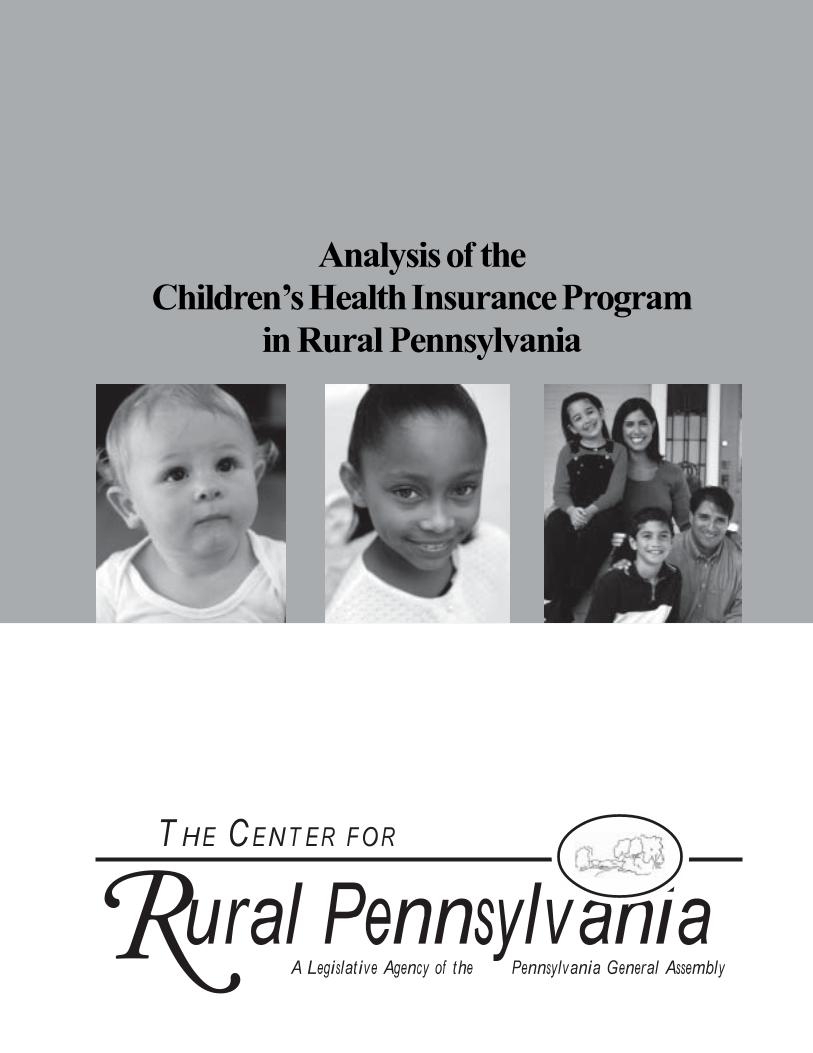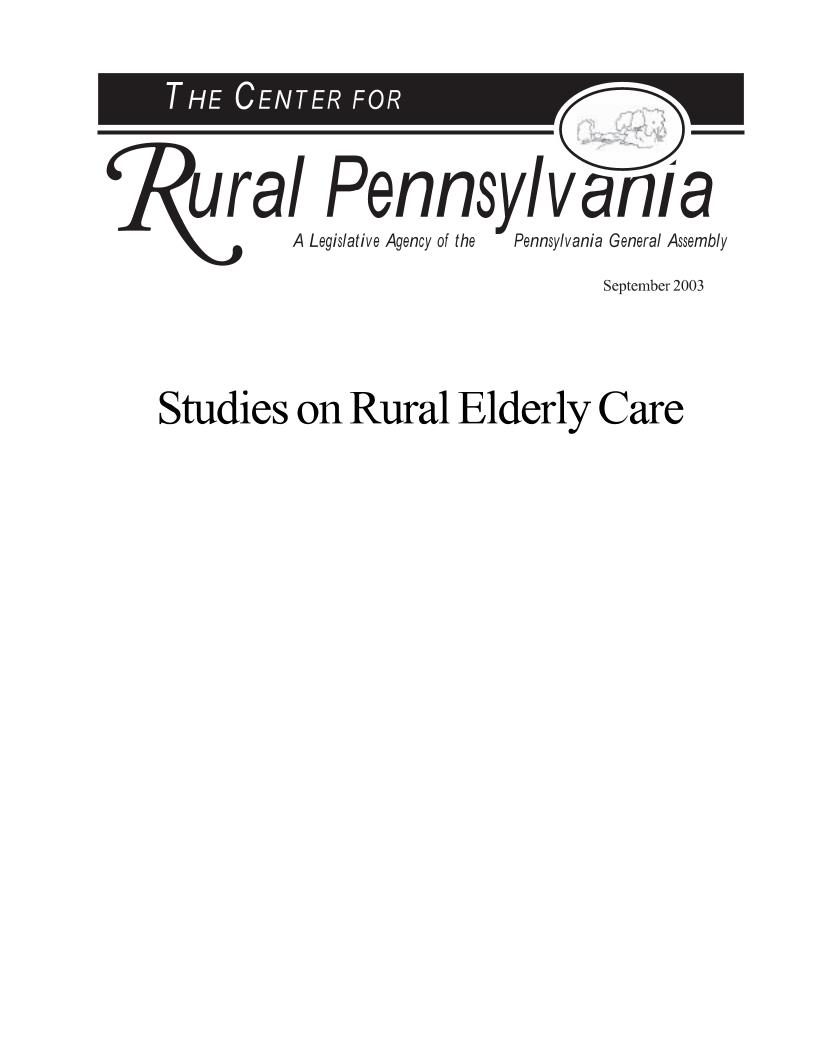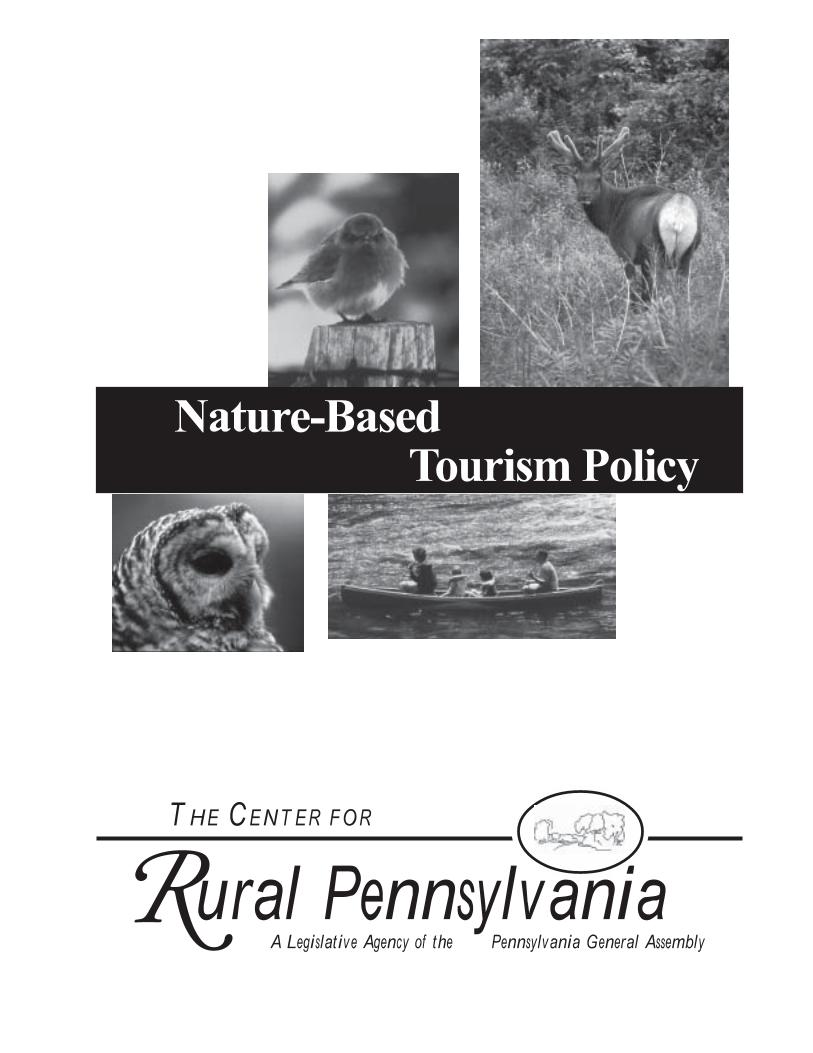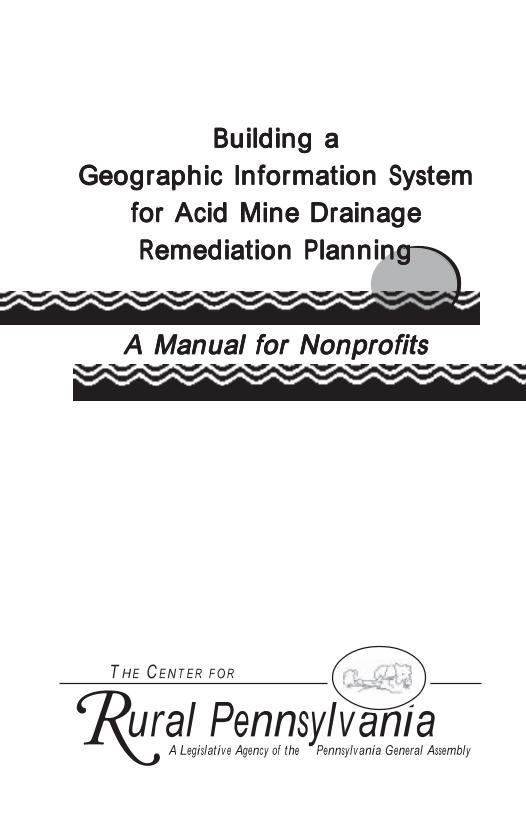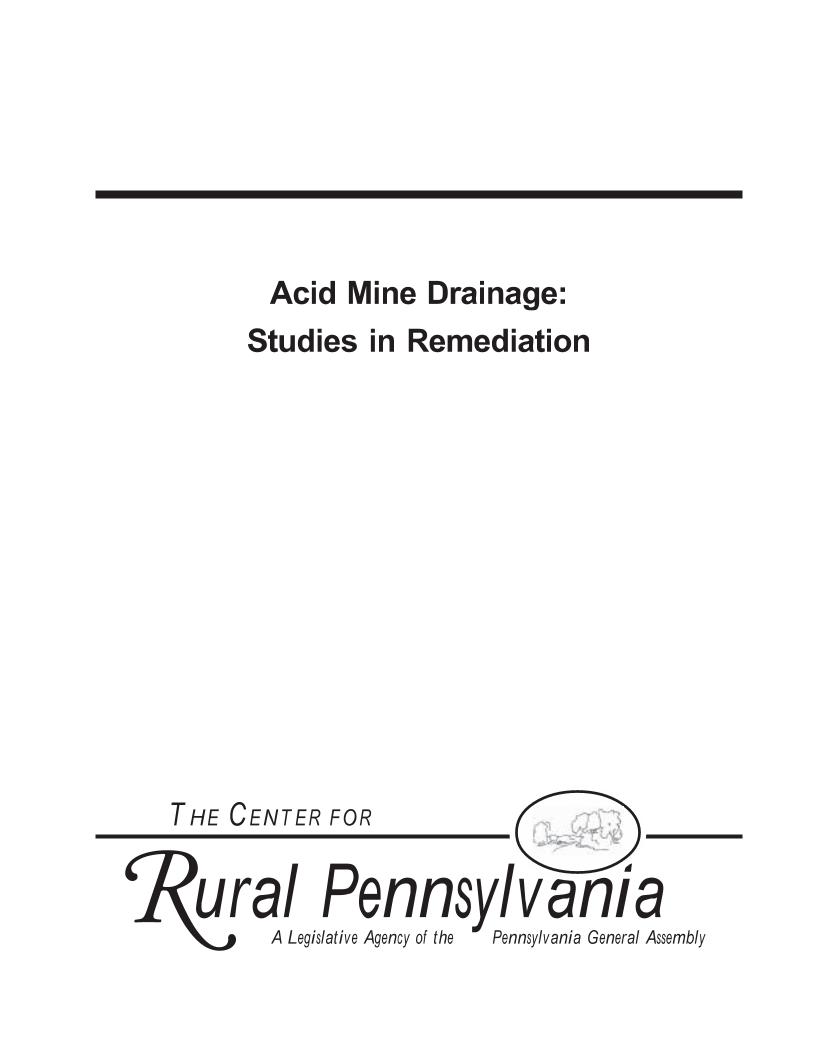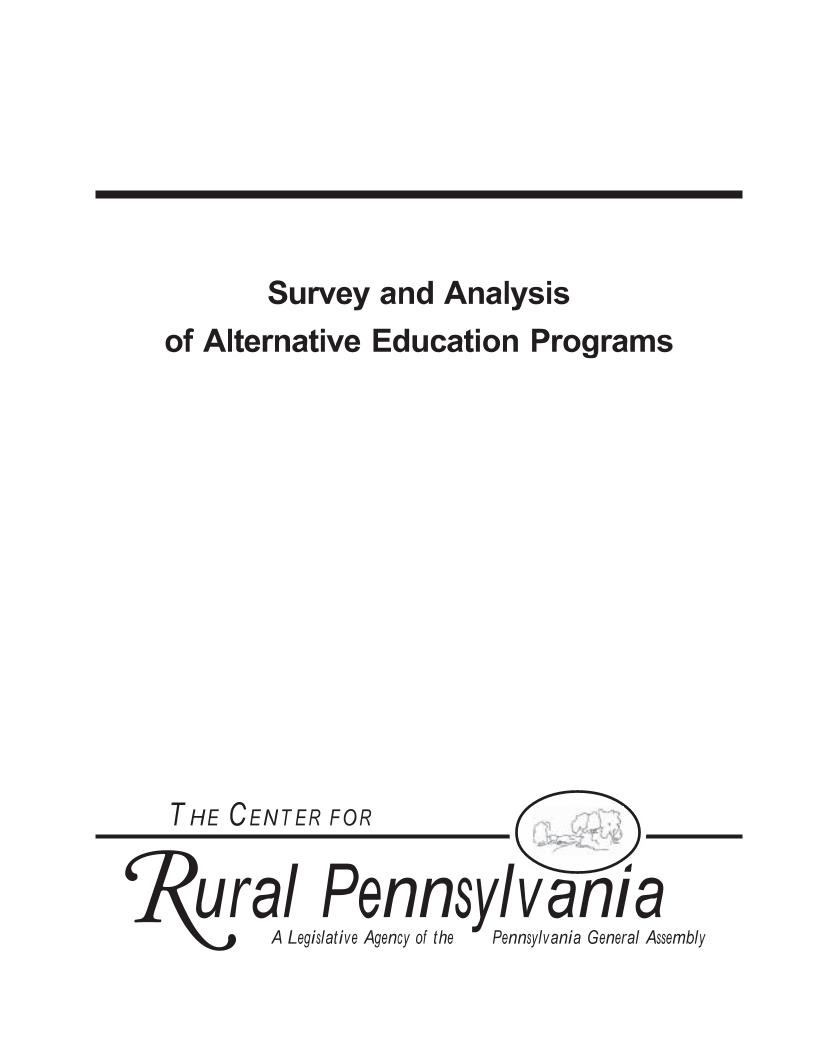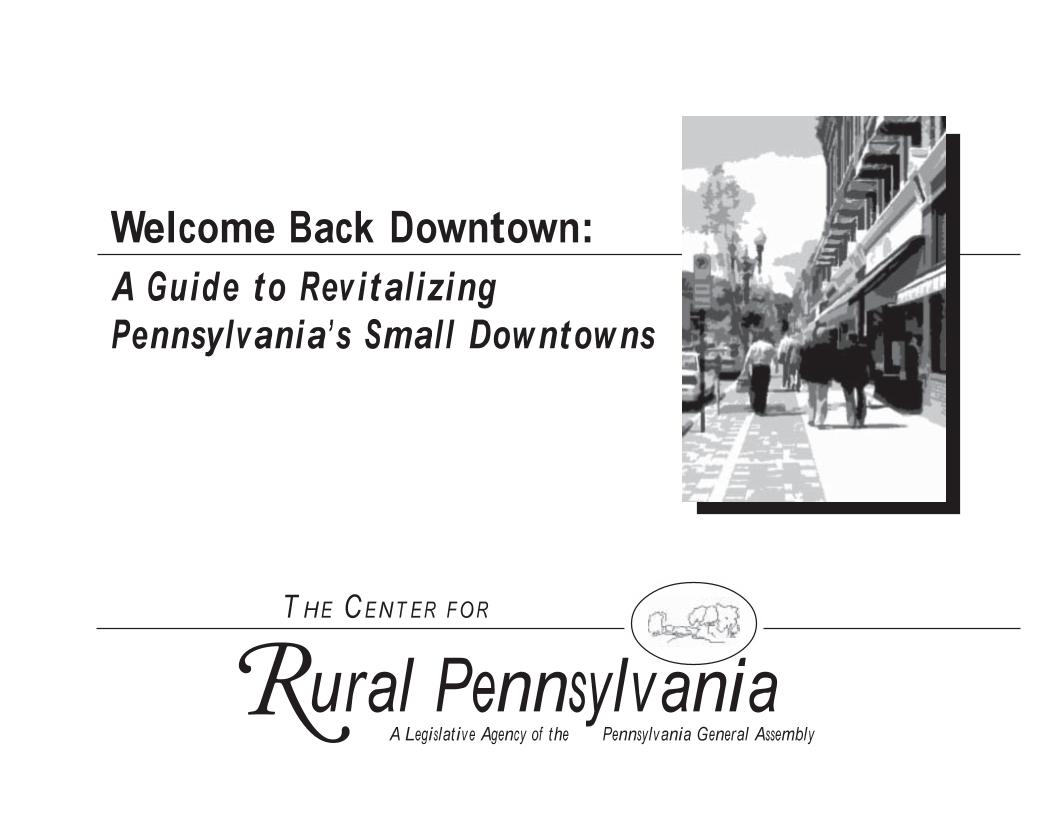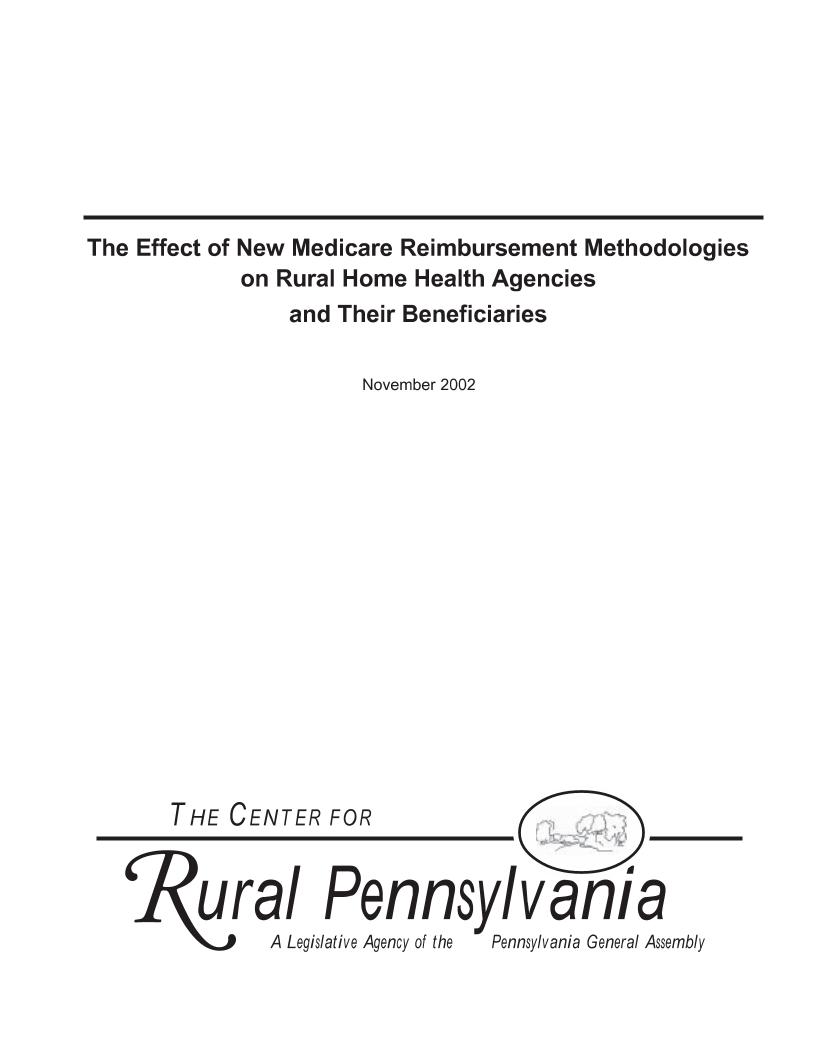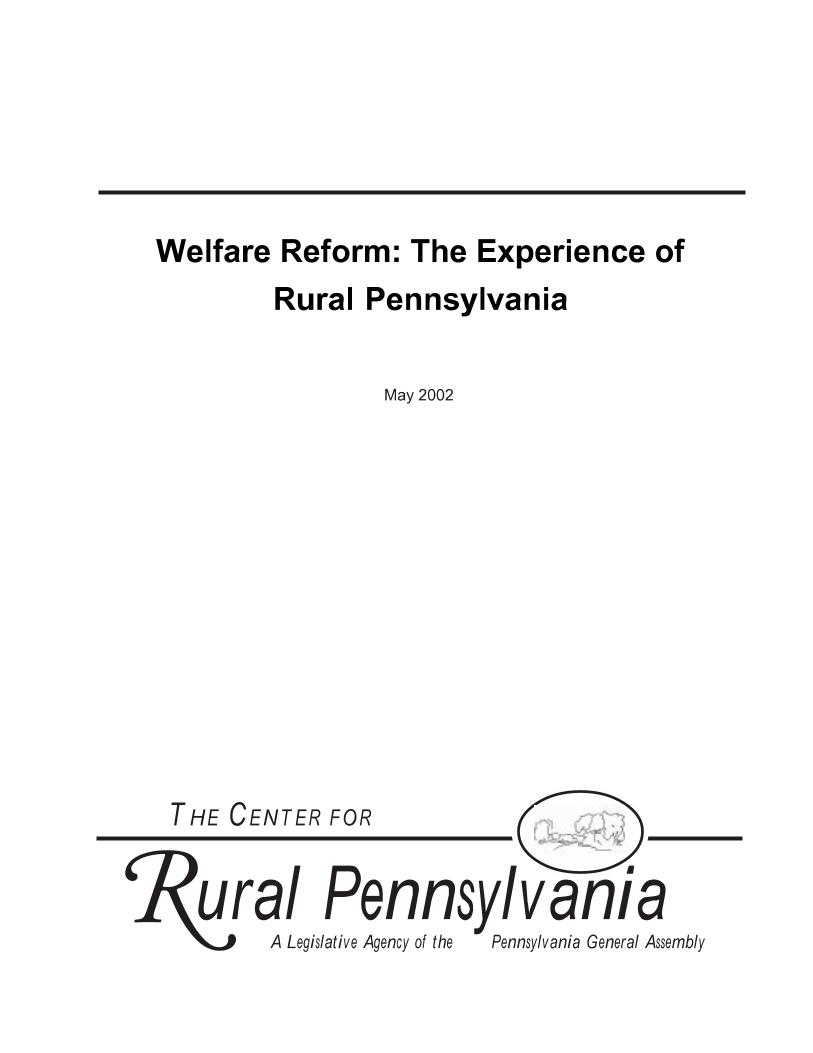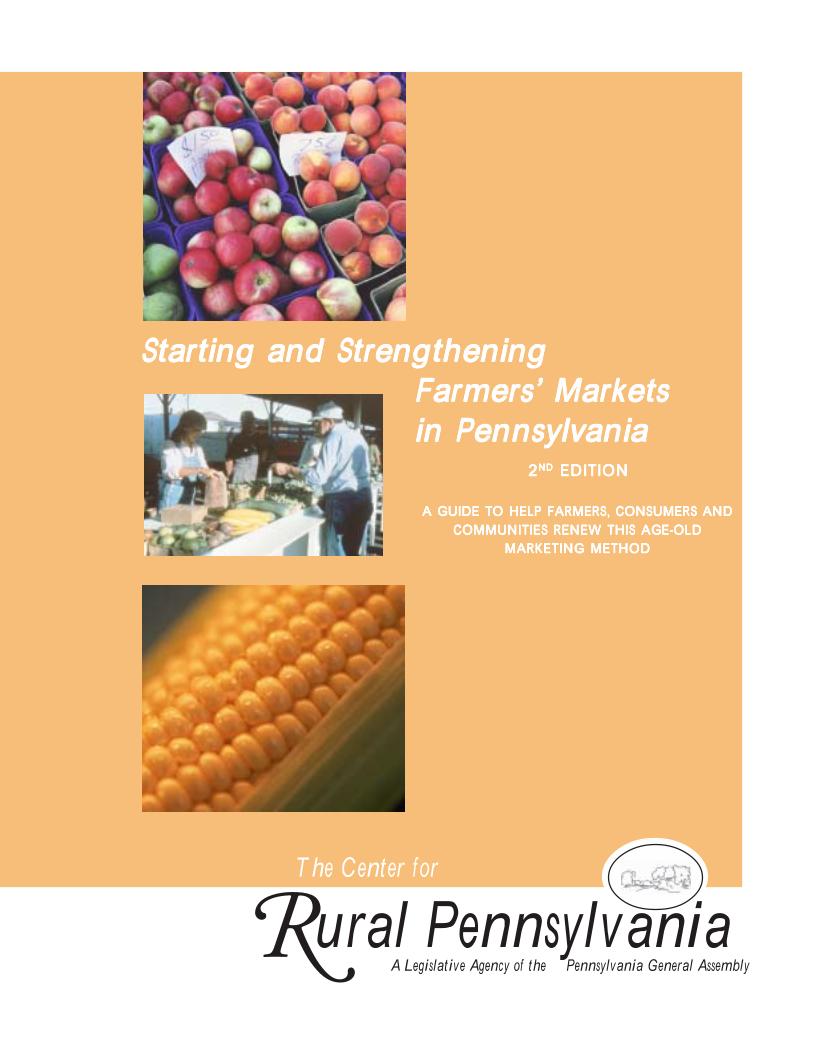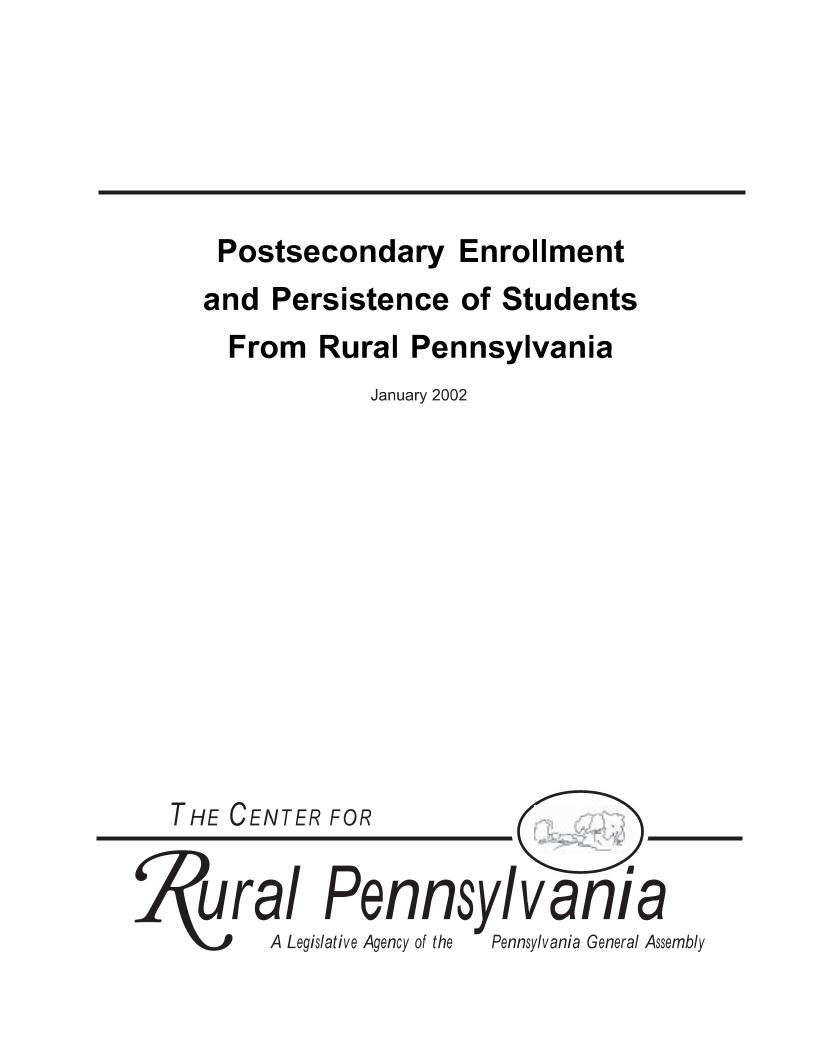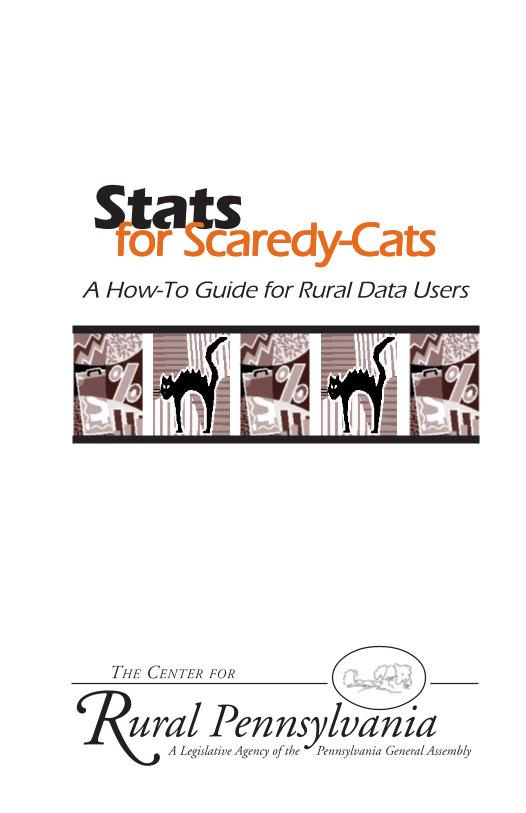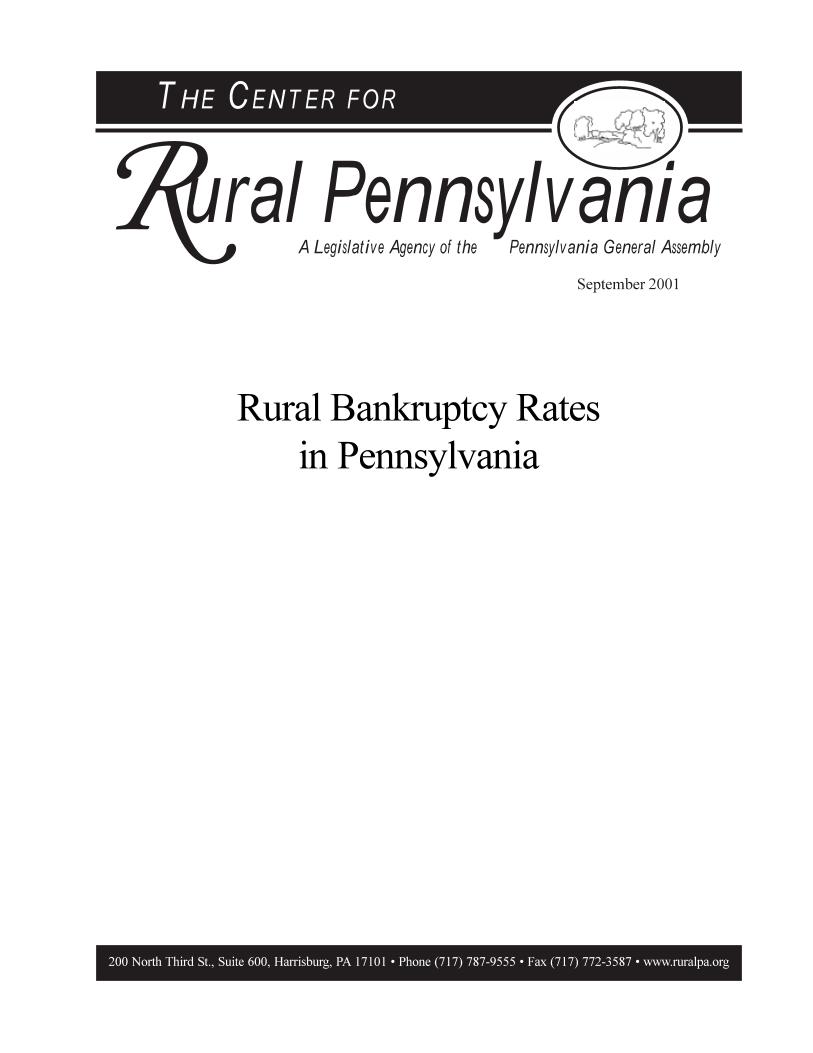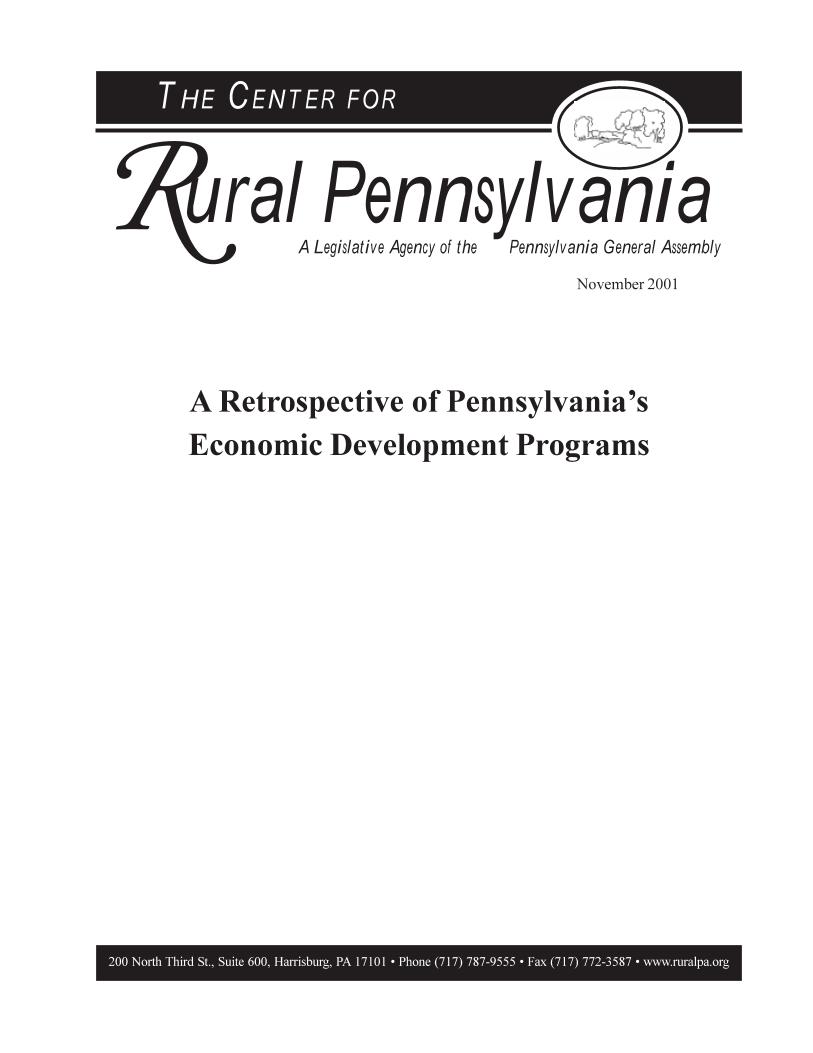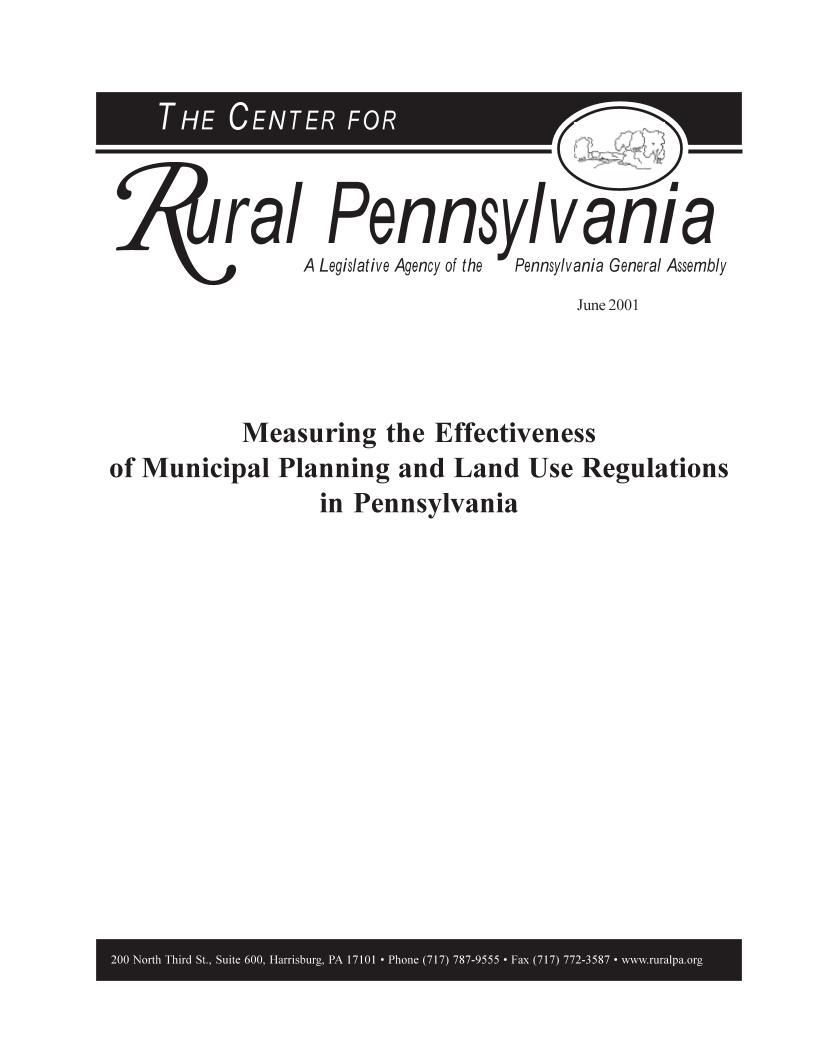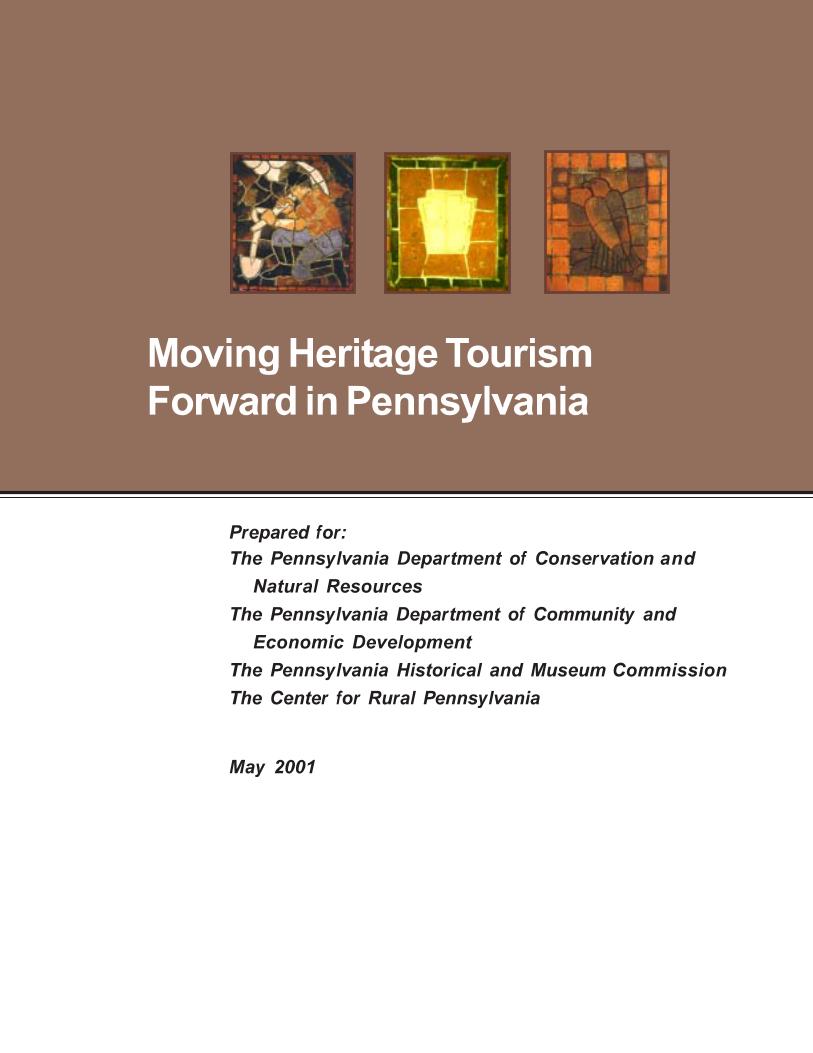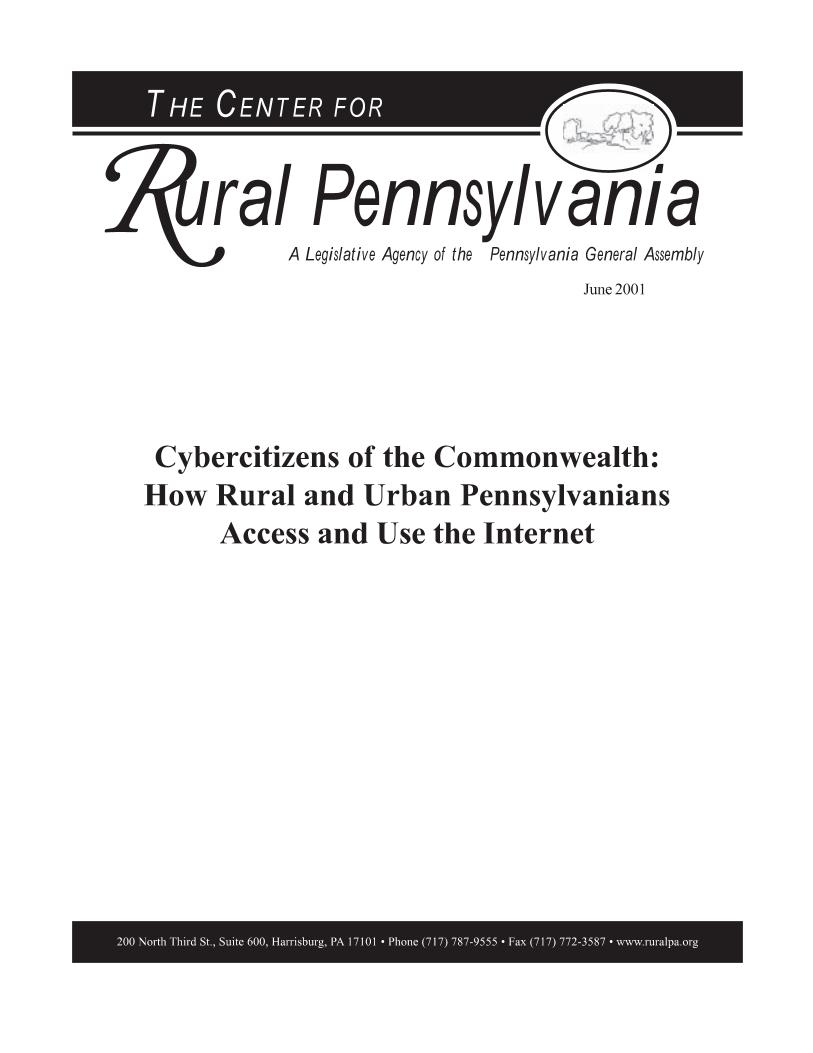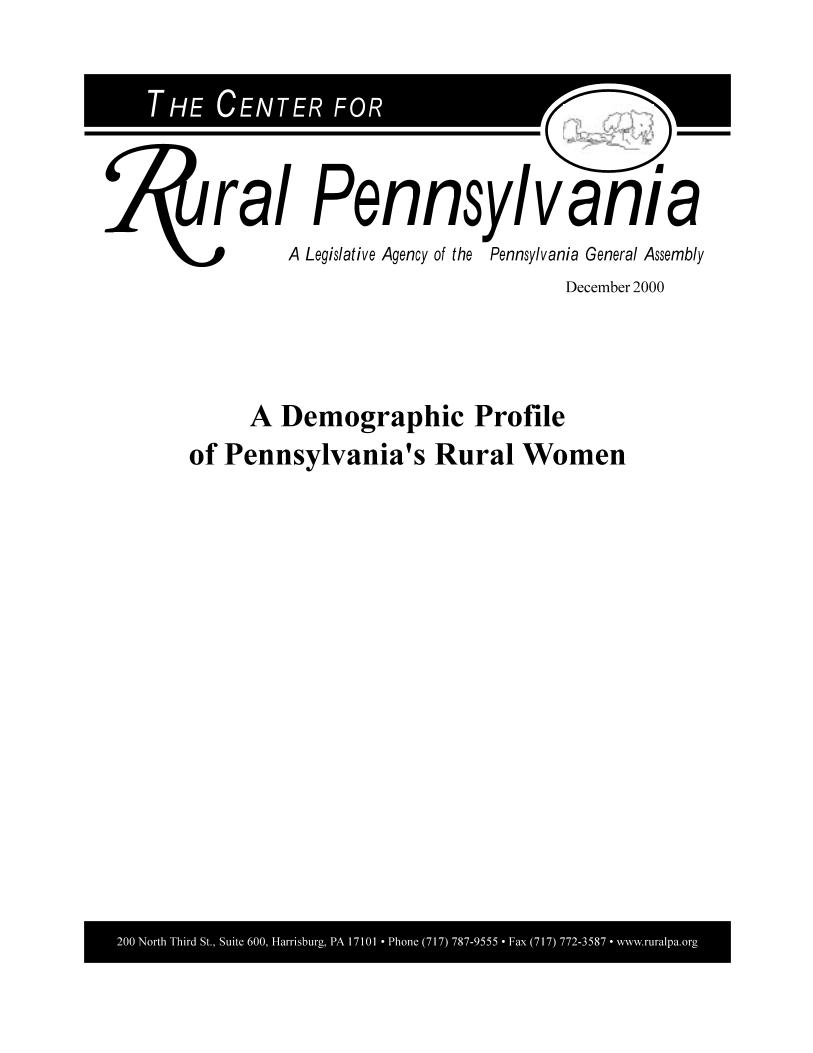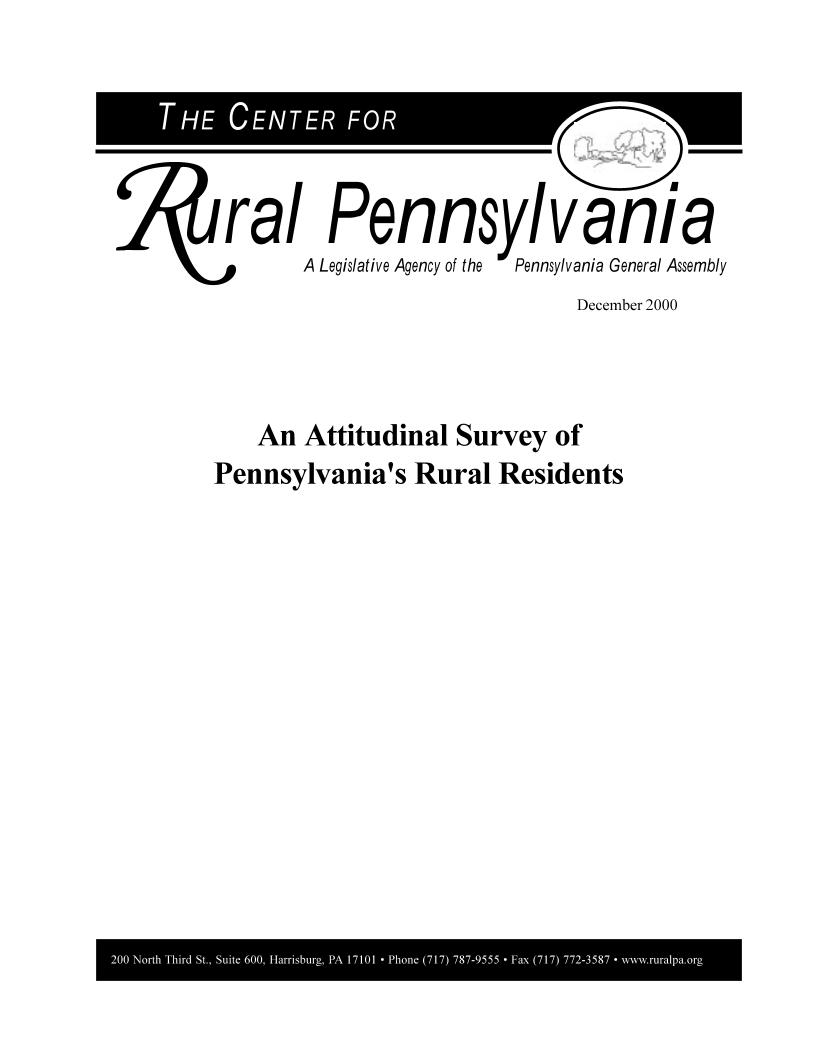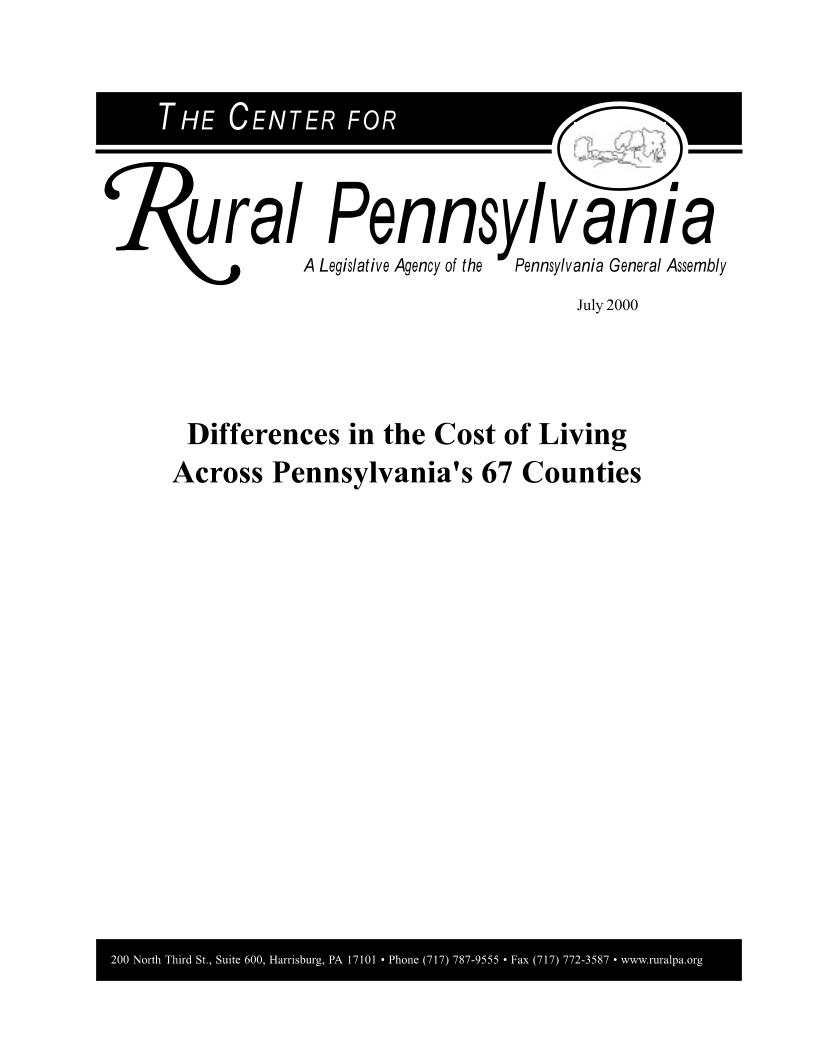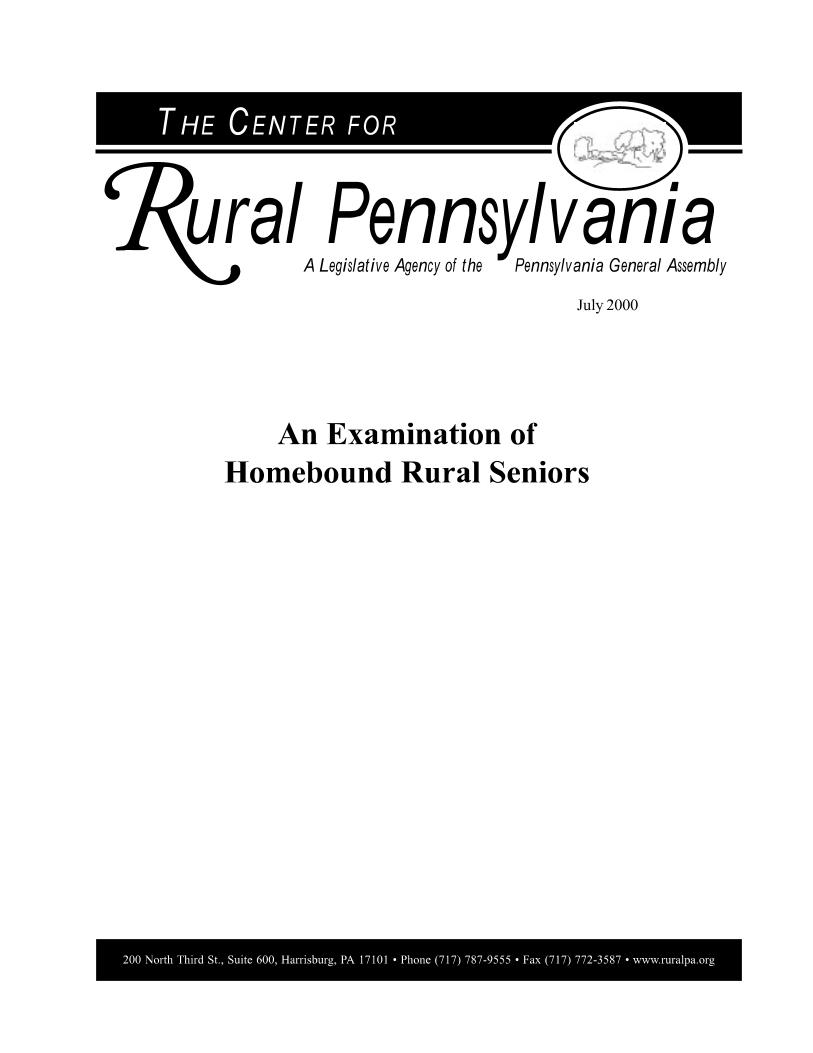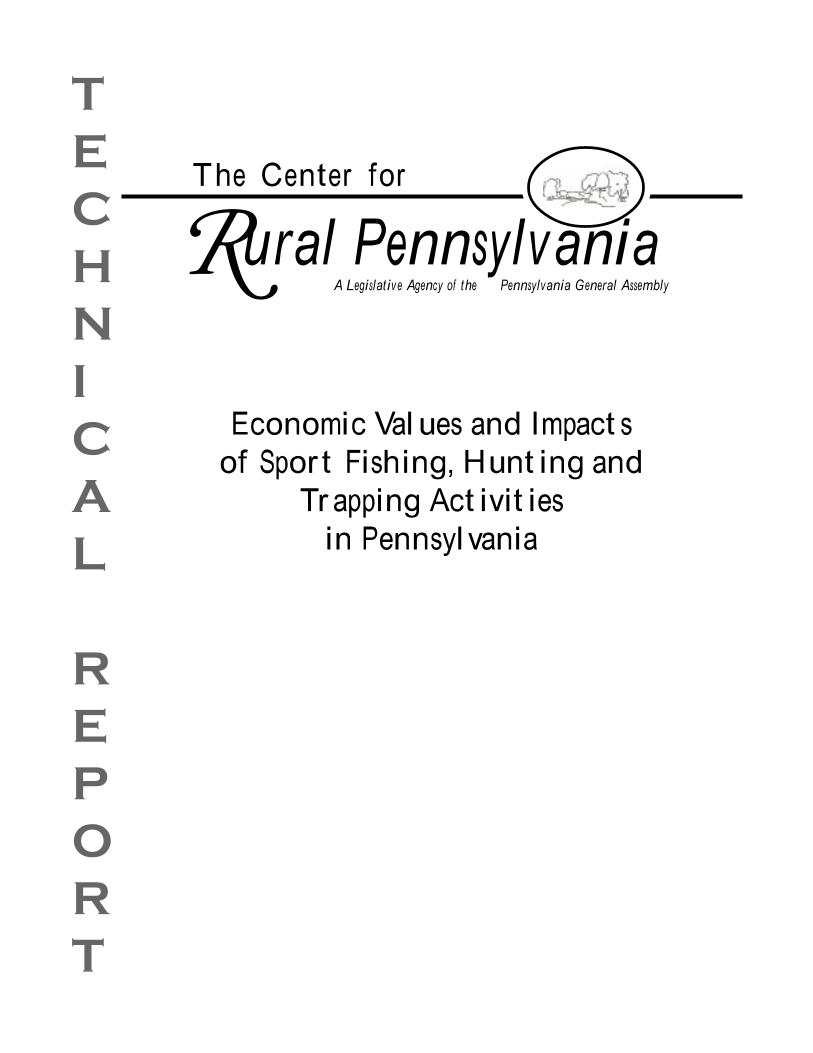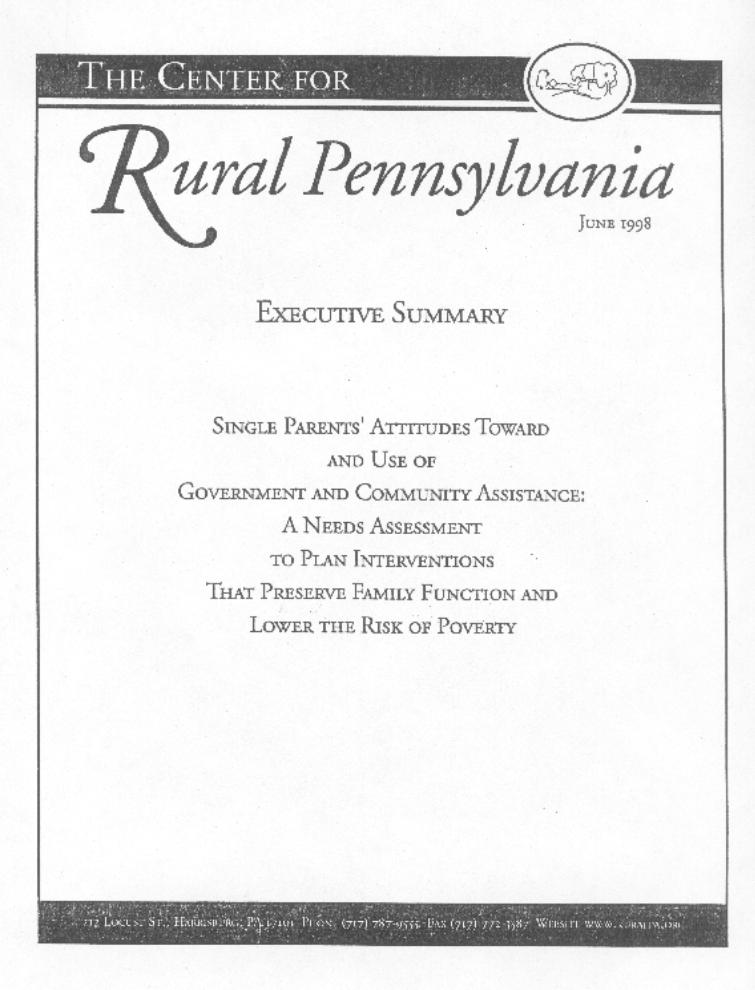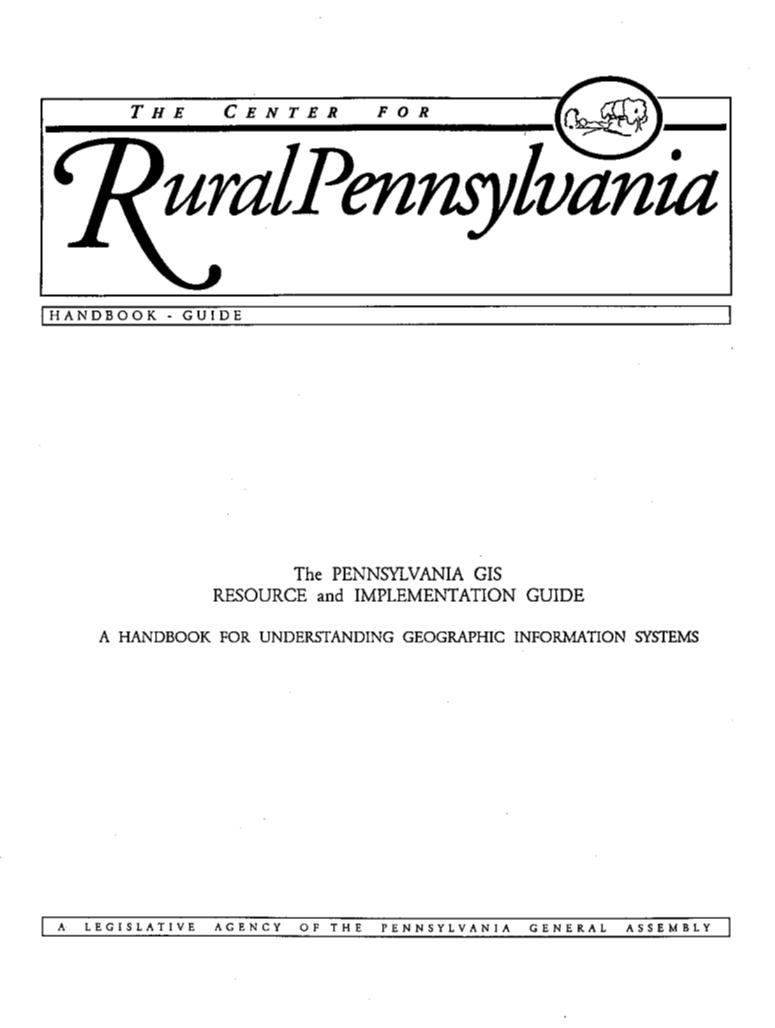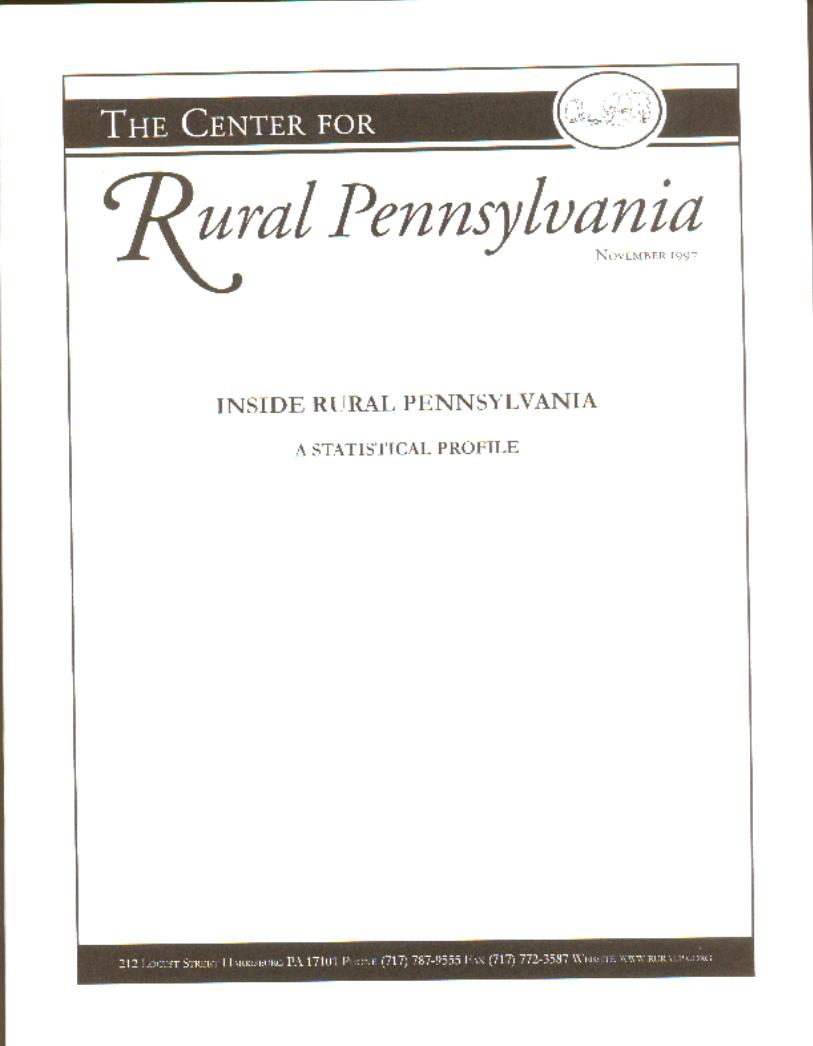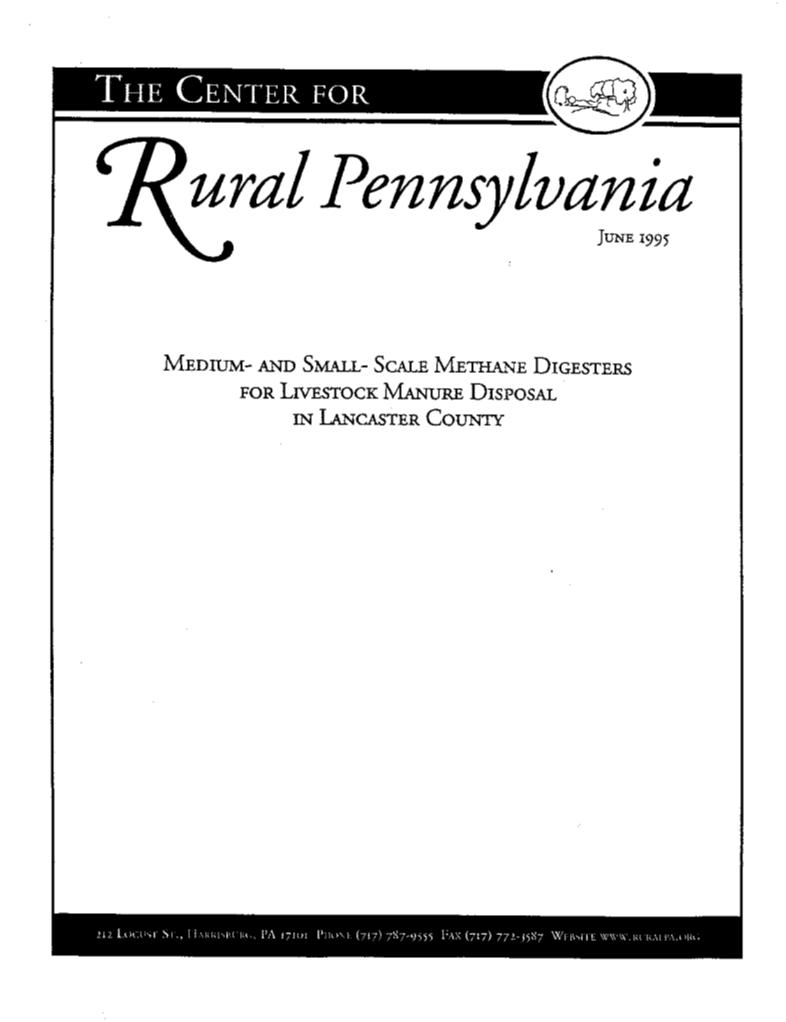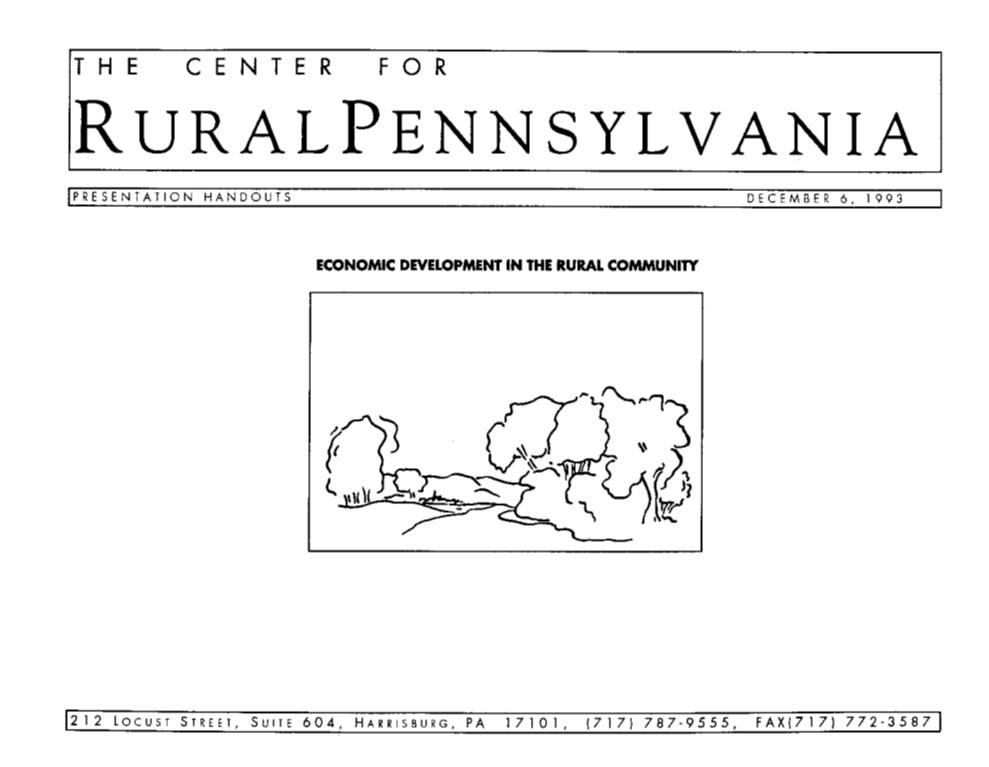Research Reports
2023
Pennsylvania Population Projections for the Next 30 Years
December 12, 2023 | Rural People and Communities
Population projections for Pennsylvania were developed under contract with the Center for Rural Pennsylvania. Population projections were completed for the years 2025, 2030, 2035, 2040, 2045, and 2050, for the Commonwealth and its 67 counties. These projections were developed by five-year age and sex cohorts. Population data are used by public and private agencies and businesses in numerous ways for policy development, project planning, and program evaluation.
Tags: rural population , aging population , population trends , pennsylvania , papopulationprojections
College Promise Programs and Alternative Tuition Strategies in Pennsylvania and Beyond
December 07, 2023 | Education
College “Promise” programs have spread rapidly across the higher education landscape over the past two decades, but there is little consensus about what they are or how they work. This research report introduces these programs, discusses prior research findings about their effects, and conducts empirical analyses using several data sources. At the national level, the study finds a positive effect of Promise programs on enrollment, particularly of first-year students, but not on retention. For one local program this research examines in-depth, Tamaqua’s Morgan Success Scholarship, results suggest strong effects both on “democratization” (increasing overall college-going) and “diversion” (routing students from four-year colleges/degrees to two-year colleges/degrees), though the latter fades over time. For the Community College of Philadelphia’s 50th Anniversary Scholars Program, the study finds no effect on college-going or on community college enrollment.
Executive Summary
Tags: college students , community college , school enrollment , financial aid , promise programs , college access , place-based scholarships , college completion
Burden of COVID-19 Pandemic on Mental Health and Related Behavioral Stressors of Students in Pennsylvania Schools
October 20, 2023 | Education
The study investigated the stress effects of the COVID-19 pandemic on students’ mental health. This research collected primary and secondary data to compute a mental health stress index of youth mental stress levels and to examine the impact of the pandemic on youth behaviors.
Executive Summary
Tags: #education , mental health , covid-19 , students , behavioral stressors , pays data , mental health index
Pandemic-Associated Cyber Charter Enrollments and the Impacts on Rural School Districts in Pennsylvania
September 01, 2023 | Education
This study investigated the financial impact of cyber charters in Pennsylvania, parents’ decision-making about cyber enrollment, and traditional rural school district and cyber leader responses to changing cyber enrollments to inform Commonwealth cyber charter policy. The data suggest that cyber enrollments and costs to rural districts have dramatically increased over time and cyber charter achievement data lag behind both brick-and-mortar charters and traditional public schools.
Executive Summary
Tags: #education , rural school districts , charter schools , covid-19 , cyber charters , school enrollment , remote learning , cyber charter funding , cyber charter policy
Community and Economic Impact of the Pennsylvania Wilds
August 11, 2023 | Community and Economic Development
The Pennsylvania Wilds is a place-based brand and destination region in north central Pennsylvania covering 13 entirely rural counties. It is entering its third decade since its inception as an official tourism region and conservation landscape. This comprehensive mixed-methods research study conducted in 2022 indicates that this region is an effective place-based tourism brand. Stakeholder groups of visitors, businesses, and residents recognize the PA Wilds brand attributes of environmental stewardship and economic development. Resident and business stakeholders indicated pride in belonging to the region. These overall positive impacts of the brand indicate that brand management in the PA Wilds is well executed. With the policy actions outlined in this report, the rural residents of this region can enjoy further positive economic and community dividends from the state's initial investment in this regional strategy.
Executive Summary
Tags: economic development , #community development , rural tourism , outdoor recreation , regional place-based branding
Reversing Population Decline in Rural Pennsylvania
June 30, 2023 | Rural People and Communities
Historical population decline in rural Pennsylvania runs counter to polling data suggesting that many Americans prefer to live in rural areas if they could live anywhere they wished. The purpose of this study was to explore this disconnect guided by two research questions: What are the factors that lure (i.e., pull toward) or block (i.e., push away) people from relocating to, and staying in, rural areas, and how do those factors align with existing population shrinkage strategies, specifically for rural communities? To explore these research questions, the researchers conducted an online survey that incorporated both quantitative and qualitative data collected from residents of Pennsylvania and 10 states adjacent to Pennsylvania. Participants were recruited through Amazon Mechanical Turk. Overall, the results of the study support the argument that there are individuals living in both neighboring states and in non-rural Pennsylvania that are not attached to where they currently live, would prefer to live in a rural area, and may respond positively to relocation incentives that are tailored to their needs and wants.
Executive Summary
Tags: rural population , #community development , population shrinkage , relocation , qulaity of life
2022
Distance Learning and Online Coordination of Service in Pennsylvania’s Rural School Districts
December 14, 2022 | Education
The purpose of this research was to: 1) understand the specific problems that rural school districts encountered during the pandemic; 2) learn how these districts responded to their unique challenges; and 3) identify the policies, practices, and resources that are needed for Pennsylvania rural schools to be better prepared for the next emergency that could close schools for an extended period.
Executive Summary
Tags: distance learning , rural schools , 1:1 computing devices , teacher shor , state and federal regulations , teacher shortages , mental health , broadband
An Analysis of Pennsylvania's Children
November 22, 2022 | Rural People and Communities
This study used secondary data from multiple sources to present a short analysis of Pennsylvania children (ages 0-17) over the 10-year period of 2010-2019. It analyzed trends pertaining to children along seven different dimensions, including location, demographics, economic circumstances, education, health care, health, and behaviors. The results indicate that both rural and urban children have seen some improvements in economic circumstances, healthcare, and health from 2010 to 2019. However, there are opportunities to improve outcomes for children overall.
Tags: education , health care , children , economic
Social Determinants of Health in the Age of COVID: Effects of Social Isolation Among Adults 62+ in Rural Pennsylvania
November 03, 2022 | Rural People and Communities
This study analyzed the extent of social isolation among rural Pennsylvanians aged 62 or older, evaluated the determinants of social isolation among older residents, identified evidence-based programs and services that minimize social isolation, and assessed potential replicability in Pennsylvania.
Executive Summary
Tags: older adults , social isolation , me , rural communities , mental health
Assessment and Analysis of Housing Quality and Policies in Rural Pennsylvania
September 29, 2022 | Health Care and Human Services
The purpose of this study was to assess housing quality and related policies and programs in rural Pennsylvania. The research goals and objectives focused on four areas: gaining a quantitative understanding of housing quality for rural Pennsylvania communities; understanding barriers faced by rural residents in securing loans to address home improvement; understanding municipal policy and implementation regarding housing maintenance codes; and developing policy considerations that address the key issues regarding housing quality in rural Pennsylvania.
Executive Summary
Tags: housing quality index , sub-quality housing , rural housing , property maintenance codes , housing finance programs
Analyzing the Effects of COVID-19 on Educational Equity in Rural Pennsylvania School Districts
August 25, 2022 | Education
Using a mixed methods approach that combined state-level institutional data, local interviews with school administrators, and school district data, this research examined how COVID-19 has (re)shaped rural school districts’ ongoing efforts to identify and address equity concerns along geographic, fiscal, instructional, and racial/ethnic lines across Pennsylvania.
Executive Summary
Tags: education , education equity , rural education , covid-19
Coroner/Medical Examiner Services in Pennsylvania
August 02, 2022 | Health Care and Human Services
This research provides information about Pennsylvania coroner/medical examiners (C/MEs) and their offices. It examined office caseloads, funding, facilities, forensic capacity, vehicles and equipment, and staffing and training resources. It also assessed how the opioid epidemic and the COVID-19 pandemic affected county C/ME offices.
Executive Summary
Tags: coroner , medical examiner , opiods , covid-19
COVID-19 Effects on Pennsylvania Crime Trends: A Rural/Urban Comparison
June 30, 2022 | Rural People and Communities
The goals of the research were to investigate whether the COVID-19 pandemic triggered or heightened the crimes of murder and abuse in Pennsylvania, and to identify rural-urban differences in these outcomes both before and during the pandemic.
Executive Summary
Tags: covid , murder , crime
Rural Youth Survey: Trends and Developments in the Attitudes and Aspirations of Rural Pennsylvania Youth
May 18, 2022 | Rural People and Communities
The goals of this project were to document the educational, career, and residential aspirations of rural youth today, to examine the community, family, and peer factors that might shape these aspirations, and to detail the opportunities and barriers that youth experience.
Executive Summary
Tags: education , residential aspirations , career aspirations , youth
Access to Maternity and Obstetric Care in Rural Pennsylvania
April 22, 2022 | Health Care and Human Services
This study examined access to maternity care in rural Pennsylvania. Maternity care (also known as obstetric care) can be defined as health care services delivered to women during pregnancy, childbirth, and the postpartum. Access to maternity care is defined as the availability of birthing facilities (hospitals or birth centers) and practitioners (physicians and midwives) providing these health services.
Executive Summary
Tags: maternity care , maternal care , children
Planning in Rural Pennsylvania in 2020: Analysis of the Use and Effectiveness of Municipal Land Use Tools
April 04, 2022 | Local Government Finance and Administration
Executive Summary
Tags: land use , comprehensive plans , zoning , local government
Profile of Rural PA Women 2022
March 21, 2022 | Rural People and Communities
This research provides a profile of the social and economic well-being of rural Pennsylvania women through a detailed understanding of their lives, livelihoods, and families. It used data from the 2005-2009 and 2014-2018 American Community Survey (ACS).
Executive Summary
Tags: women , families
Analysis of 2017 Census of Agriculture Data
February 21, 2022 | Agriculture
This study examined the agricultural industry in Pennsylvania and provides descriptive profiles of farm operations and farmers, as well as trends in Pennsylvania agriculture.
Executive Summary
Tags: farming , farmers , trends , agriculture
Pennsylvania Broadband Access: A Speed Test Analysis
February 11, 2022 | Infrastructure
Access to affordable broadband technology has been a long-standing challenge for many rural Pennsylvanians. In November 2021, the federal Infrastructure Investment and Jobs Act set aside $65 billion to improve access to high-speed internet across the nation. Part of that act requires states to prioritize projects for those with the most limited access to broadband connections. The Pennsylvania General Assembly passed Act 96 of 2021 shortly after the federal law. Act 96 established the Pennsylvania Broadband Development Authority to improve internet access across the Commonwealth.
Appendix
Tags: broadband , internet
Access to Mental Health Services in Rural Pennsylvania
January 24, 2022 | Health Care and Human Services
This research assessed the demand for mental health services in rural Pennsylvania with a focus on youth and the elderly. It identified challenges these populations face in accessing mental health care to provide options for improving and expanding mental health care services for underserved rural Pennsylvanians.
Executive Summary
Tags: mental health , youth , elderly
2021
Your Agritourism Business in Pennsylvania: A Resource Handbook
December 21, 2021 | Agriculture
Agritourism is the combination of two of Pennsylvania’s largest industries: agriculture and tourism. Agritourism represents an increasing opportunity for the tourism and agricultural industries. Agribusiness and tourism and two of the six key industries identified by the Department of Community and Economic Development for growth in Pennsylvania, which means there are many available resources for those looking to get into or wanting to grow their business.
Flyer
Tags: how-to guide , business development , tourism , agriculture
Welcome to Rural Pennsylvania: COVID-19 and Residential Property Sales
October 31, 2021 | Community and Economic Development
The COVID-19 pandemic and extended period of business closures made many Americans re-examine their living and working conditions. Such re-examinations may affect housing markets in Pennsylvania, which have seen an increase in rural home purchases and a decrease in urban home purchases in 2020.
Handout
Tags: real estate , home buyers , housing markets , covid-19
Recruitment and Retention Issues for Counselors in Rural Pennsylvania Substance Use Disorder Treatment Programs
October 11, 2021 | Health Care and Human Services
Recruiting high-quality counselors is a major problem for rural substance use disorder (SUD) treatment programs. Treatment program directors linked recruitment problems to low salaries, the rural location of the treatment facility, and the lack of adequate training in the SUD field. Emotional exhaustion was the strongest predictor of intent to quit. Low job satisfaction, poor management communication, and a high percentage of clients on medication-assisted treatment were also related to the intent to quit.
Executive Summary
Tags: counseling services , treatment , substance use disorder , mental health
An Examination of Recycling Programs in Rural Pennsylvania, 2010-2019
August 16, 2021 | Community and Economic Development
Local recycling programs are impacted by global markets and constraints, and contamination of recyclable materials has decreased the value of materials collected. Over the last several years increasing costs associated with the collection, and decreasing revenues associated with the decreased value of materials has led to a number of non-mandated Pennsylvania municipalities to cancel and/or strongly consider suspending their recycling programs. The research looked to fully capture the economic and environmental benefits of the recycling industry, particularly in rural Pennsylvania, to develop a better understanding of the challenges posed by recent changes and associated impacts on the residential programs in rural counties.
Executive Summary
Tags: recycling
Police Chiefs Serving Small and Rural Municipalities: Profiles and Concerns
August 02, 2021 | Emergency Services
In a study on Rural police departments, police chiefs were mostly non-Hispanic white men about 52 years old, with 28 years of policing experience, and about 9 years of experience as police chief. The average annual salary is between $50,000 and $99,000. Rural police departments had smaller budgets, on average than urban departments. Small and rural police departments tended to lack adequate human resources to meet the demand for services. Rural departments were also less likely to offer mental health services to their officers. Chiefs reported that the most pressing crime problems in their area were illicit drugs, domestic violence, and traffic violations. Substance abuse was reported as the top socioeconomic (noncriminal) concern facing their communities, followed by aging infrastructure, lack of youth services, and meeting the needs of older residents.
Executive Summary
Tags: emergency services
Suicide Trends and Prevention in Rural Pennsylvania Counties and Schools
June 19, 2021 | Health Care and Human Services
This study examined the overall trends in suicide across Pennsylvania from 1990 to 2018, the suicide prevention programs currently used by counties, and the programs that are used in K - 12 school districts. Suicide rates have been increasing over the last decade. In 2018, the suicide rate in rural counties was 25 percent higher than in urban counties. Higher numbers of handgun sales, lower levels of education, lower incomes, larger populations over age 65, and higher unemployment correlate with higher rural suicide rates.
Executive Summary
Tags: mental health , suicide
An Overview of Pennsylvania Public School Transportation (2021)
April 01, 2021 | Transportation
This study analyzed PA Department of Education data from 2013-14 to 2017-18 to examine changes in school enrollment, transportation, ridership, and transportation finances at the state, rural and urban levels. Declines in school enrollment were relatively gradual in urban school districts but more severe in rural school districts. On average, 95.8% of rural public school students relied on public school transportation. Transporting fewer students over large areas or longer distances drives up the cost per student transported in rural school districts. More school districts were seeking independent contractors for all or some of their transportation services during the study period. The continued decline in the number of transportation service providers in the "contracted service with the contractor" category may lead to an increased market share for some larger contractors.
Executive Summary
Tags: public school , transportation
Assessment of Legislation Applied to Historic and Archaeological Human Remains and Burial Sites in Pennsylvania (2021)
March 01, 2021 | Environment and Natural Resources
This report provides an assessment of Pennsylvania laws and regulations related to the discovery of historic and archaeological human remains and burial sites. It reviewed state legislation on human remains, burial grounds, earthmoving activities, and historic resources to determine the authority and responsibilities of various public entities involved in mitigation efforts. It also provides several policy considerations for Pennsylvania, which are based on legislation established in other states.
Executive Summary
Tags: burial grounds , archaeological sites
2020
Broadband Demand: The Cost and Price Elasticity of Broadband Internet Service in Rural Pennsylvania
November 30, 2020 | Infrastructure
This year-long research project surveyed rural and urban Pennsylvanians about their willingness to pay for high-speed broadband service. It provides a unique first look into factors that continue to create substantial barriers to closing the digital divide. The researchers surveyed 1,446 Pennsylvania residents in May and June 2020. They used a hybrid telephone/SMS (short message service, or “text messaging”) survey that asked respondents about the type of internet technology available to them, broadband pricing, and willingness to pay for 25 Megabits per second (Mbps) broadband.
Executive Summary
Tags: willingness to pay , broadband pricing , broadband , internet
Analysis of Expenditures and Participation in Public School Sports (2020)
November 29, 2020 | Education
This research analyzed interscholastic athletic participation and expenditure data for Pennsylvania school districts. Using data from 2014-2017, the researchers examined the relationship between interscholastic athletic participation, school athletic expenditures, socioeconomic indicators, and Pennsylvania school district-level indictors.
Executive Summary
Tags: sports , expenditures
Exploring Disparities in School Sports Participation in Rural Pennsylvania (2020)
November 09, 2020 | Rural People and Communities
This research examined trends in rural and urban Pennsylvania public school sports participation, alongside sociodemographic aspects of schools and communities that contribute to these trends.
Executive Summary
Tags: extracurricular activities , sports participation
Information Systems Security Readiness Assessment for Municipalities in Pennsylvania (2020)
September 23, 2020 | Infrastructure
This research was modeled after similar research conducted in 2009 to investigate the level of security readiness of Pennsylvania townships and boroughs through an online survey. The survey focused on three major information systems security elements: (1) infrastructure, (2) literacy, and (3)
actual use.
Executive Summary
Tags: internet security , municipal computers , information systems
The Role of Rural Public Libraries in Providing Access to Online Government Services (2020)
September 03, 2020 | Community and Economic Development
This research, conducted in 2019 and 2020, used a mixed-methods approach to examine rural public library services, identify barriers and opportunities to providing assistance with government services, identify innovative practices used by rural libraries that emphasize access to government services, and develop policy considerations related to service provision.
Executive Summary
Tags: library services , community centers , government services , libraries
The Economic Impact of Rural Pennsylvania Community Colleges (2020)
July 17, 2020 | Education
This research examined the role and economic impact of community colleges in rural Pennsylvania to help inform state policy considerations. The research team gathered publicly available data, and conducted telephone interviews with 16 community college employees across six community colleges and 10 locations as well as with five local industry leaders with active relationships with rural community college locations.
Executive Summary
Tags: college students , community college
K-12 Teacher Supply, Demand, and Shortages in Pennsylvania (2020)
July 03, 2020 | Education
The number of students enrolled in early education (EE) through 12th grade in Pennsylvania public schools influences the demand for teachers. There has been - and will continue to be a decline in the number of EE-12 students across the state. The declines will be greatest for rural districts, thus rural districts will experience a greater decrease in the demand for teachers than elsewhere in the state. In addition, there has been a slight decline in the student-teacher ratio over the past 6 years. Policymakers should focus on additional and improving data collection regarding educator supply, demand, and shortages. The final policy suggestion is for state leaders to highlight the benefits of entering the teaching profession.
Executive Summary
Tags: teacher shortages , teacher supply and demand , teacher , k-12
Availability of Hospice in Rural Pennsylvania (2020)
May 12, 2020 | Health Care and Human Services
Hospice represents a specific form of palliative care that is typically delivered within the last six months of life. There is a strong evidence base that demonstrates the benefits that hospice has on quality of life and cost of care at the patients' end of life. Despite the reported benefits, hospice remains underused, with substantial geographic variation in hospice availability and use rates. Assuming similar patterns of hospice use, the research found that there will be significant increases in future hospice demand, based on projections of an aging population in rural Pennsylvania counties. Interviews with stakeholders - namely hospice care providers in rural Pennsylvania - validated hospice availability and use concerns related to travel time, and lack of choice for patients and families. They also highlighted issues related to using electronic health records in areas with poor internet or cell service.
Executive Summary
Tags: palliative care , aging population , hospice
Attitudinal Survey of Pennsylvanians, 2019 (2020)
May 09, 2020 | Rural People and Communities
To best serve their communities, policymakers must know the current attitudes of the people who live in their communities. The Center for Rural Pennsylvania sponsored attitudinal surveys of rural and urban Pennsylvanians to learn more about their attitudes on a variety of long-standing and timely issues. The results indicate several areas of consensus in rural and urban attitudes, but also identify a few rural and urban differences. Most respondents in both rural and urban communities had similar attitudes about issues in their local communities, communities across Pennsylvania, and the performance of the government. The one key difference was that rural respondents identified the availability of jobs as the most important issue while urban respondents identified maintenance of roads and bridges as the most important issue. The importance of expanding broadband internet access was a higher priority for both rural and urban respondents than in previous surveys.
Executive Summary
Tags: community , government , jobs , broadband , attitudes
Evaluation of Senior Community Centers in Rural and Urban Pennsylvania (2020)
March 05, 2020 | Health Care and Human Services
With the growing senior population in Pennsylvania, the research examined challenges and opportunities that senior community centers face. Specifically, the research created an inventory of Pennsylvania's rural and urban senior community center (SCC) locations, including the type of services provided and activities available. Attendance and program participation were analyzed as well as accessibility issues, means of transportation to/from the center, and relevant demographic characteristics. Participants accessed a wide variety of programs, including congregate meals, health, and wellness programs, group recreational programs, and at a few centers, personal care services. The research identified important policy considerations for the Pennsylvania Department of Aging that could help enhance and further support senior community centers across the entire state.
Executive Summary
Tags: senior centers
Pennsylvania's Emerging Cider Industry and Its Contribution to Artisan Beverages and Sustainable Agriculture (2020)
February 05, 2020 | Agriculture
Cider was an essential commodity to the New World settlers and the most prominent alcoholic beverage in Pennsylvania's early years. Recently, a shift in the food and drink industry has occurred with consumers searching for alternative beverage options with new flavors and locally sourced ingredients. Craft breweries are at the forefront of this movement. Craft beverages contribute to positive place-based tourism. This creates the potential to offer sustainable economic development to rural areas. Many areas in the Mid-Atlantic are taking advantage of the growth in artisan beverages, and Pennsylvania has the potential to become a cider tourism hub. With some adjustments to legislation, regulations and marketing, and better coordination among tourism promotion agencies and cider producers, Pennsylvania's cider industry could have significant impacts on the state's agritourism industry.
Executive Summary
Tags: artisan beverages , tourism , cider , agriculture
Child Sexual Abuse and Exploitation in Pennsylvania (2020)
January 08, 2020 | Health Care and Human Services
Research was conducted to understand the characteristics of Commercial Sexual Exploitation of Children (CSEC), and how it is identified and investigated by CYS caseworkers. The research identified challenges in multiple steps of the CYS process, from the initial screening of child abuse reports to the actions of the State Commonwealth Court. Recommendations were made and are intended to improve the quality of the child welfare system in Pennsylvania. The recommendations focus on strategies that can support and enhance child protection work statewide. Pennsylvania's statutory requirement for expungement of CYS cases dispositioned as "unfounded", "invalid," or "screened-out" without an investigation, can create numerous barriers to CYS's ability to keep children safe. The researchers identified high variability in the rate at which reports were screened out across counties, potentially resulting in disparate access to protective services depending on one's address.
Executive Summary
Tags: child sexual abuse , child exploitation
2019
Potential Economic Impact of the Spotted Lanternfly on Agriculture and Forestry in Pennsylvania (2019)
December 01, 2019 | Environment and Natural Resources
The spotted lanternfly (SLF) is an invasive insect species that is currently having a destructive impact on vulnerable agricultural crops and tree species within Pennsylvania. The analysis considers several scenarios, which vary based on geographic scope and the estimated potential severity of damages. To calculate the direct impacts of SLF on Pennsylvania agriculture, the researchers used data from the 2017 census of Agriculture and a survey of crop production experts. Best management practices (BMPs) developed by the Pennsylvania Department of Agriculture for SLF seek to slow the spread of SLF populations. Implementation of certain (BMPs) represent one-time costs like those for training and permitting, and others like ailanthus eradication, will have costs that will likely decline over time. Others, like inspection and phytosanitation, will continue for a long time. The use of these types of practices is necessary to provide the time needed to develop effective SLF management practices.
Executive Summary
Tags: spotted laternfly
Oral Health Status of Low-Income Children in Pennsylvania: A Rural-Urban Comparison (2019)
November 20, 2019 | Health Care and Human Services
The overall goal of the research study was to develop recommendations for public policy to improve the oral health status of low-income children residing in rural Pennsylvania. Specifically, the research, conducted in 2018-2019, analyzed: (1) the oral health component of the Medical Assistance (MA) program for children in Pennsylvania, (2) the Children's Health Insurance Program (CHIP), (3) a variety of additional oral health programs and services, (4) the school oral health program, (5) the supply and geographic distribution of dentists in Pennsylvania, and (6) the overall oral health care delivery system for low-income children in rural Pennslyvania.
Executive Summary
Tags: low-income , children , oral health
Economic Implications of Pennsylvania's Foreign-Born Population (2019)
November 04, 2019 | Rural People and Communities
Individuals born outside of the United States represent a significant and growing share of the U.S. population. This is also true of Pennsylvania. The researchers analyzed records from the U.S. Census Bureau and Bureau of Labor Statistics to develop a descriptive profile of the socioeconomic characteristics of the foreign-born workforce in rural Pennsylvania, draw comparisons with the native-born and urban Pennsylvania workforce, and identify trends in these population characteristics that have occurred since the 2000 Census. The empirical results point to a number of potential focus areas for policymakers. These include renewed efforts to improve and make accessible English language training and adult learning/training opportunities, as well as attention to programs that will reduce poverty. The diverse socioeconomic circumstances among the rural foreign-born also underscore the challenges to developing widely-applicable policies related to the immigrant population.
Executive Summary
Tags: population , foreign-born , populati , workforce
Fact Sheet 2: The Socioeconomic Characteristics of Rural Pennsylvania's Foreign-Born Workforce
November 04, 2019 | Rural People and Communities
Educational attainment among the rural foreign-born workforce is bifurcated. Relative to the native-born population in rural areas, the foreign-born workforce has disproportionate shares of individuals with both (a) less than a high school degree, and (b) a bachelor's degree or higher.
Tags: foreign-born , workforce
Fact Sheet 3: Earnings and Income Among Rural Pennsylvania's Foreign-Born Workforce
November 04, 2019 | Rural People and Communities
On average, foreign-born members of the workforce in rural Pennsylvania earned $34,784 per year in wage and salary income across the 2012-2016 period, which was more than $10,0000 greater than the average among native-born members of the rural workforce. However, the poverty rate was nearly 9 percentage points higher than the rate among the native-born rural workforce.
Tags: foreign-born , workforce
Fact Sheet 1: The Foreign-Born Share of the Workforce in Rural Pennsylvania
November 03, 2019 | Rural People and Communities
This profile is from the study, Economic Implications of Pennsylvania's Foreign-Born Population, which analyzed individual-level data from the 2016 American Community Survey (ACS) 1-year sample, U.S. Census Bureau. The workforce includes all individuals aged 16-64 who are working or potentially available to work.
Tags: labor force , foreign-born , workfor , workforce
Legislative and Regulatory Efforts to Control Invasive Species (2019)
July 03, 2019 | Agriculture
To gain an understanding of government approaches to dealing with threats from invasive species, this research examined how governments address these threats through the enactment of statutes and the implementation of regulations. After the evaluation of the broad array of programs, the researchers contacted states with invasive species programs that related to threats in Pennsylvania. Government efforts to control invasive species can be characterized as slow and reactionary. Pennsylvania's efforts fit into this pattern. Based on the evaluation of existing state statutes and regulations the researchers identified the following policy considerations. (1) Provide institutional support and dedicated funding, including a statewide invasive species coordinator, (2) promote interagency cooperation to solve problems with noxious weeds along state highways, (3) develop regulations for mandatory inspection of watercraft and a timetable for implementation, including a fee structure, (4) develop a funding mechanism to support early detection, (5) consult with the Governor's Office of General Counsel regarding the development of policies related to access to private property to promote early detection and rapid responses to address threats for invasive species.
Executive Summary
Tags: invasive species
Analysis of Obesity Rates for School Children n Pennsylvania (2019)
June 19, 2019 | Health Care and Human Services
The U.S. Department of Health considers about one-third of children and adolescents aged 6 to 19 to be overweight or obese. In particular, the Pennsylvania Department of Health defines childhood obesity for persons aged 2-19 years as a Body Mass Index (BMI) at or above the 95th percentile. The BMI-for-age is a useful measure because it allows one to compare obesity rates of similar cohorts across different states, or across different counties in a particular state. Previous research conducted by the Center for Rural Pennsylvania (2005) indicated that rural areas have higher obesity rates. From an economic standpoint, there are private and social costs associated with obesity. Crucial private costs of obesity are lower productivity, income inequality, and higher healthcare costs. Research in nutrition economics and health economics found that childhood obesity has a negative impact on academic performance and leads to lower self-esteem, and exposes students to bullying and hidden bias among peers and teachers.
Executive Summary
Tags: children , obesity
Broadband Availability and Access in Rural Pennsylvania (2019)
June 04, 2019 | Infrastructure
This year-long research effort focused on precisely measuring median broadband speeds within specific geographic areas, and on identifying the extent of variances between the "official" estimates of broadband availability and broadband speed measurements. This provides a considerable level of documentation and insight into the state of broadband connectivity experienced by rural residents across Pennsylvania. The projects team's archival research documents that broadband connectivity has been successfully deployed to previously underserved communities, both within Pennsylvania and across the country, using a diverse array of business models.
Executive Summary
Tags: broadband
The Availability of Medication-Assisted Treatment for Opioid Addiction in Pennsylvania (2019)
March 06, 2019 | Health Care and Human Services
This study assessed the barriers and opportunities that exist in expanding Medication-Assisted Treatment (MAT) services in Pennsylvania. MAT includes the use of methadone, buprenorphine, Suboxone, naloxone, and naltrexone in residential, behavioral, or outpatient programs, hospitals, and jails and prisons to help individuals suffering from opioid addiction to overcome withdrawal symptoms, cravings, and potential overdose. The research found that those who seek emergency care and long-term treatment for opioids and who live in rural areas of Pennsylvania have limited access to care. Other barriers to accessing MAT services are lack of childcare and housing, lack of transportation, limited private insurance coverage, and limited funding for MAT services. Combating heroin and opioid use disorders requires an "all-in" commitment. It should continue to enforce laws and regulations enacted to provide coverage for mental health services for patients suffering from addiction and direct additional state and federal funding to support MAT services throughout Pennsylvania.
Executive Summary
Tags: opioid , addiction
2018
An Economic Evaluation of the Pennsylvania State Forest System (2018)
December 04, 2018 | Environment and Natural Resources
Over two-thirds of Pennsylvania's counties have state forestland within their boundaries. In addition, the entire state is divided into 20 state forest districts so that the Pennsylvania Bureau of Forestry, which is under the Department of Natural Resources, can provide technical assistance to private forest landowners, and provide forest-related public services to the general public within the district boundaries. Pennsylvania forestlands provide economically beneficial forest ecosystem services that include ecological services, forest goods, and socio-cultural benefits. Some policy considerations from the report were to: consider ways to increase individuals' personal experiences with state forests, consider how revenue generated from the recreational activity may help offset the increased burdens of the activity, consider ways to reduce administrative burdens through advances in technology and consider ways to expand leveraging of partnerships that support state forest district operations.
Executive Summary
Tags: ecosystems , revenues , forest
Inventory and Analysis of Historic Preservation Ordinances in Pennsylvania Municipalities (2018)
November 06, 2018 | Community and Economic Development
This is the first comprehensive statewide inventory and analysis of historic preservation ordinances in Pennsylvania municipalities. The team gathered data to determine the extent to which Pennsylvania municipalities had enacted local ordinances under the authority of the Historic District Act (HDA) of 1961, and/or the Municipalities Planning Code (MPC) of 1968, to regulate historic resources within their jurisdiction. A wider inventory/dataset of preservation activities by the municipality as identified by surveyed county planning directors revealed a tremendous range of regulatory historic preservation activities. Municipalities that engage in historic preservation typically have higher per capita incomes, greater median home values, higher rates of population growth, and greater population densities. These municipalities also tend to have populations with higher educational attainment levels and lower median ages.
Executive Summary
Tags: historic , preservation
Employment Opportunities for Rural Residents with Disabilities in Pennsylvania (2018)
September 03, 2018 | Rural People and Communities
In June 2018, Governor Tom Wolf signed the Employment First Act, which requires state, county, and other entities receiving public funds to first consider competitive integrated employment for individuals with intellectual and developmental disabilities (IDD) who are eligible to work under state law. The research identifies the opportunities for competitive employment for individuals with (IDD); analyzed the barriers for obtaining such employment, with a focus on rural barriers; and identified the strategies other states are using successfully, examining their potential for Pennsylvania. Based on the research results, the researchers offered 9 policy considerations.
Executive Summary
Tags: employment , disabilities
Changes in Homeownership in Pennsylvania Rural Municipalities (2018)
August 16, 2018 | Rural People and Communities
This study focused on homeownership rates in rural Pennsylvania municipalities. The research indicated that rural municipalities experienced similar changes in homeownership rates as the state as a whole, with some variation between the types of rural municipalities. Overall, rural Pennsylvania municipalities experienced a decline of about 1 percentage point in homeownership rates and an increase of about 3 percent in homeownership units during the same period. Based on the results, the researcher suggests that it is essential for researchers and government agencies to continue investigating these recent changes in homeownership, especially in the context of rural areas. Efforts could focus on assisting or preserving existing homeowners, such as senior citizens and low-and moderate-income homeowners, who are most likely to be negatively affected by changes in economic or housing conditions.
Executive Summary
Tags: homeownership
Comparing Rural and Urban Drug Use and Violence in the Pennsylvania Youth Survey (2018)
July 16, 2018 | Health Care and Human Services
Understanding youth drug use and violent behavior is an important step in reducing drug use and violence in Pennsylvania. Rural and urban areas may have different rates of drug use and violence and thus require different types of interventions. In terms of alcohol and illicit drug use, the results indicated little overall differences between urban and rural students. However, the analysis only examined the number of prevention programs in a school district and the data did not include details about individual programs operating in schools. Further research could attempt to get more school-specific details about the programs that operated in those schools.
Executive Summary
Tags: addiction , violence , youth
Analysis of Cost-of Living Data for Pennsylvania Counties (2018)
May 01, 2018 | Rural People and Communities
This study, conducted in 2017, provides new and current data on the cost of living (COL) in Pennsylvania's rural and urban areas, and explores several important issues, including whether the rural COL advantage still exists, if it has increased or dwindled, why it exists, and how Pennsylvania compares on the urban-rural cost differential with two other peer states. Housing is the key category driving the higher overall COL in the state. The overall COL tended to be highest among Pennsylvania counties in the southeastern and southwestern parts of the state. Pennsylvania's rural counties have a lower COL than its urban counties. The urban-rural differential was typically 2 or 3 percent for groceries, transportation, health care, and miscellaneous goods and services categories. The key factor that causes the COL to be higher in some areas than others is income. The unemployment rate consistently reduced the overall COL by about 5 percent. This study documents the fact that housing is the good whose cost varies the most from place to place, and for which the urban-rural differential is largest.
Executive Summary
Tags: cost-of-living
Wildlife Tourism on Pennsylvania Public Lands (2018)
January 16, 2018 | Environment and Natural Resources
This research examined the characteristics of wildlife tourists and their non-consumptive use of wildlife assets on Pennsylvania public lands, with a special focus on Pennsylvania State Game Lands (SGLs). The main purpose of the SGLs are to manage habitat for wildlife and provide opportunities for lawful hunting and trapping. At times, the non-consumptive use of SGLs has been a point of contention. The research was designed to describe wildlife tourism on Pennsylvania's public lands from the perspective of wildlife tourists and wildlife tourism stakeholders, and review central policy issues surrounding Pennsylvania SGLs access and use.
Executive Summary
Tags: tourism , wildlife
2017
Examination of Community Health Workers in Rural Pennsylvania (2017)
November 16, 2017 | Health Care and Human Services
Community health workers (CHWs) play a vital role in the health care delivery system of rural Pennsylvania counties. Currently, the role of CHWs is not well defined. Efforts toward certification and training programs are evident throughout Pennsylvania, yet they lack consistency. The research gathered information on CHWs through surveys, focus groups, and interviews. Results found that CHWs are used in a variety of agencies and contexts in rural Pennsylvania, with duties ranging from working with the elderly to working with infants and children. It was evident from the research that low pay, high turnover, and lack of adequate funding were significant issues for many agencies. In addition, many agencies experienced large caseloads and lacked consistent CHWs certification and training. A variety of educational backgrounds and training further complicates the consistency of CHW roles. The researchers found that decisions on certification and training need to be made by the state legislature and the state Departments of Health and Human Services.
Executive Summary
Tags: health care , home health care , community health workers , health workers
Flood Mitigation for Pennsylvania's Rural Communities: Community-Scale Impact of Federal Policies (2017)
September 16, 2017 | Environment and Natural Resources
Recent changes to the National Flood Insurance Program (NFIP) are critically impacting Pennsylvania because of its history of flooding, its pattern of development along rivers and streams, the age of its structures, and its system of local government. This research explores the impacts of the Homeowner Flood Insurance Affordability Act of 2014 on Pennsylvania's rural communities in the following ways: review the legal and policy framework at a federal, state, local, and individual level; examines the demographic and geospatial information associated with flood-impacted communities in Pennsylvania; examines the economic impact tho the housing markets in floodplains; and explores how flooding, flood insurance, and other federal and Commonwealth programs have impacted Pennsylvania's rural communities. The final recommendations suggest that Pennsylvania may be able to help its rural communities through policy changes at several levels.
Tags: national flood insurance program , flood plains , flood
Exploring Healthcare Alliances in Rural Pennsylvania (2017)
September 10, 2017 | Health Care and Human Services
Rural America is often at a significant disadvantage in accessing quality and affordable healthcare. Rural hospitals remain vulnerable to closure due to broad environmental and health industry forces. Rural health organizations have increasingly aligned with larger healthcare systems to offset operational and financial risks. The question remains as to how these healthcare alliances impact the community health capacity of rural Pennsylvania. Rural community health leaders believed that the benefits of forming alliances better leverage scarce resources and outweighed the associated costs. Overall the outcomes of affiliations are positive. In most cases, these alliances minimized the rural hospitals' operational and financial risks and increased investment in rural hospitals and their associated services.
Tags: healthcare
Economic Outlook for Rural Pennsylvania Over the Next 10 Years (2017)
July 10, 2017 | Community and Economic Development
This research analyzed trends in employment and wages in rural and urban Pennsylvania to produce 10-year projections of employment and wage growth by industry and occupation. It ranked industries according to the greatest potential growth in the number and percentage of jobs over a decade for the nation, the state, and the state's 22 Workforce Investment Areas (WIAs). Occupations were ranked in terms of potential growth in the total number and the percentage of jobs for the nation, the state, and rural and urban Pennsylvania. Finally, the study explored the educational/training programs and institutions to determine the relative adequacy of such facilities to meet projected growth in occupations.
Tags: economic outlook
Analysis of Pennsylvania Crash Statistics Data (2017)
May 12, 2017 | Emergency Services
This research analyzed vehicle crashes in Pennsylvania to determine if there are any differences in the number or severity of crashes between rural and urban Pennsylvania. According to the National Highway Traffic Safety Administration (NHTSA), a disproportionate number of traffic fatalities in relation to the population occur in rural areas in Pennsylvania and nationwide (2013). Improving truck safety is especially critical in the rural areas of Pennsylvania that have seen crashes increase due to the presence of Marcellus Shale drilling activities. The research indicates that: In both rural and urban areas, the highest percentage of crashes with injury or fatality occurs on state highways, followed by local roads or streets; in both areas, males are two times more likely than females to be in a crash with a fatality; drugs and/or alcohol were not suspected in the majority of fatal crashes; the largest percentages of injury and fatal crashes occur during daylight hours in both rural and urban areas, and crash areas that are more than 31 minutes from a trauma center have more than two times the percent of fatalities as those within 15 minutes.
Executive Summary
Tags: motor vehicle , crash
The Impact of Minimum Wage Increases in Rural and Urban Pennsylvania (2017)
April 30, 2017 | Rural People and Communities
The study estimated the effects of an increase in the minimum wage in rural and urban Pennsylvania. Many empirical studies showed that minimum wage workers in Pennsylvania and the U.S share similar socio-demographic characteristics; they were mostly female, young, white, high school or less education and never married. The study results showed that there were many similarities between rural and urban minimum wage earners in Pennsylvania with only slight differences between rural and urban Pennsylvania workers. For example, rural workers are significantly more white, more are teenagers, a high percentage of rural workers have a high school diploma or less, more are English speaking, more have a disability, and rural workers spend less time commuting to work.
Executive Summary
Tags: wage
Economic Changes in Pennsylvania within the Context of Marcellus Shale Development (2017)
March 17, 2017 | Environment and Natural Resources
The significance of Marcellus Shale gas development to local, regional, state, and national economies has been of public policy importance since the mid-2000s. This research analyzed peer-reviewed studies of the economic impacts from Marcellus Shale's development. The implications of this review were two-fold. First, economic impacts will likely be short-run due to the temporal dynamics of the industry. Second, there is a fairly strong consensus in the academic literature that impacts on employment and compensation are modest, indicating that employment should be considered neither a long-term economic benefit of development nor the most significant local economic benefit of development.
Tags: marcellus shale , economic
The Marcellus Shale Impacts Study Wave 2: Chronicling Social and Economical Change in Northern and Southwestern Pennsylvania (2017)
March 17, 2017 | Environment and Natural Resources
In 2012, this research team began the first wave of longitudinal research to examine the social and economic impacts of Marcellus Shale activity in four case study counties. Wave 1 found that the impacts are likely uneven across places, people, and time. Documenting these differences became the focus for Wave 2. Descriptive analyses conducted in Wave 1 identified potential effects of development but lacked the ability to test those relationships statistically. Wave 2 sought to re-examine the impacts on crime, housing, the economy, agriculture, health and health care access, and traffic incidents in relation to Marcellus Shale development. This report describes the efforts of the research team to address these issues. Finally, policy approaches are needed that effectively recognize disparities in experiences. Certain segments of the population are more vulnerable to rapid economic and industrial change, and policies need to consider mechanisms to compensate those groups negatively affected.
Tags: marcellus shale , economic
Changes in Crime Related to Marcellus Shale Development (2017)
March 17, 2017 | Environment and Natural Resources
To date, preliminary research on the effects of Marcellus Shale development activity has found limited or mixed results linking criminal activity to well development, although some studies and qualitative data suggest a relationship, at least in some communities. This research used publically available data to examine the relationship between Marcellus Shale development and crime before and after the onset of Marcellus Shale activity. The analysis focused on arrest rates for five crimes: overall minor crimes, driving under the influence, public drunkenness, drug abuse violations, and disorderly conduct. The findings suggest that of the five crimes, driving under the influence and disorderly conduct arrest rates were associated with well density, controlling for other factors. The other three crime categories - minor crimes, public drunkenness, and drug abuse violations - are not significantly related to Marcellus Shale well development across counties or over time.
Tags: marcellus shale , crime
Housing and Marcellus Shale Development (2017)
March 17, 2017 | Environment and Natural Resources
The rapid increase in Marcellus Shale development in Pennsylvania over the past decade has raised questions about the potential impacts of drilling and related development activities on housing availability and affordability for industry workers and residents in the counties experiencing substantial development, as well as neighboring counties that may have no wells but may house industry workers and/or residents relocating from counties with substantial development activity. This research studied trends including housing supply, age of housing, occupancy, value, rental costs, and household income inequality.
Tags: marcellus shale , housing
Measuring Agricultural Changes Related to Marcellus Shale Development (2017)
March 17, 2017 | Environment and Natural Resources
The primary objective of this research was to investigate the direct and indirect effects of Marcellus Shale development on the economic, social, and environmental dimensions of Pennsylvania agriculture. To identify changes in agriculture, the research used secondary data from the U.S. Census of Agriculture, comparing county statistics prior to development, early in development, and about 4 years into development. By combining the results from the focus groups, one may speculate that Marcellus Shale activity is one of the many factors influencing farm practices and changes. Data from the surveys and other secondary data will be needed to determine the dynamic influences and relationships between drilling activities and changes in farming operations, quality of life, and decisions related to land use and availability.
Tags: agriculture , marcellus shale
Health Insurance Coverage, Health Care Utilization, and Health Outcomes within the Context of Marcellus Shale Development (2017)
March 17, 2017 | Environment and Natural Resources
The rapid increase in Marcellus Shale development over the past decade has raised concerns about the potential impacts of drilling and related development on public health, including health insurance coverage, demand for health care services, and health outcome indicators among populations who live in communities with substantial development. Accordingly, this report presents results from analyses that examined health insurance coverage, health care utilization, and health outcomes and changes in those indicators since substantial well development began in 2006. Although suggestive, this report is intended to be exploratory and not conclusive. Despite its descriptive approach, the findings from this report should provide a foundation for increased surveillance and additional research.
Tags: healthcare , marcellus shale
Transportation Impacts of Marcellus Shale Development (2017)
March 17, 2017 | Environment and Natural Resources
Traffic concerns, especially truck traffic and road safety, have been identified in a number of studies in the Marcellus Shale region. The number of additional trucks on the roads and the increased traffic due to gas worker transportation have raised significant concerns about the increased potential for accidents. Two recently published studies directly related to traffic and road safety are reviewed. This research describes three indicators of traffic - total crashes, heavy truck crashes, and crashes with fatalities. Overall, the findings suggest that the most rural counties in the northern tier experiencing the highest levels of development had increased absolute numbers and rates of total crashes and heavy truck crashes. These findings are consistent with previous studies.
Tags: transportation , marcellus shale
The Experience of Low-Income Pennsylvania Residents in Marcellus Shale Gas Communities of Bradford, Lycoming, Washington and Greene Counties (2017)
March 17, 2017 | Environment and Natural Resources
This research describes the perspectives of low-income adults in Pennsylvania communities that have experienced active Marcellus Shale development. This study focused on the same four counties examined in Wave 1 of the Marcellus Shale Impacts Study: Bradford, Lycoming, Greene, and Washington. These counties experienced the highest level of Marcellus Shale development in Pennsylvania over the past 8 years, and they have diverse populations, histories, economic bases, and geographic regions. The interview protocol for low-income adults used in this study is a semi-structured interview protocol incorporating a retrospective narrative to gather information about the housing history of interviewed participants, as well as participant perspectives on community change.
Tags: low-income , marcellus shale
Analysis of 2012 Census of Agriculture Data (2017)
January 10, 2017 | Agriculture
This study examined data from the Census of Agriculture to provide an analysis of Pennsylvania's agriculture industry. According to the research, from 2007 to 2012, there was a decline in the number of farms and acres of farmland in Pennsylvania but an increase (5 %) in average farm size. Agriculture is a major industry in Pennsylvania and an essential part of the state's landscape and culture. The goal of this research was to present a comprehensive analysis of Pennsylvania farmers, the types of farm operations, and the existing trends and conditions in the state's agriculture industry. Overall, the research found that the number of farms in Pennsylvania decreased, the land in the farms declined, and the average farm size increased.
Executive Summary
Tags: agriculture
2016
A Comparison of Rural and Urban Secondary School Career Guidance Services (2016)
November 04, 2016 | Education
Professional school counselors play integral roles in the lives of their students, most notably in the area of helping students plan for life after high school. Specifically, this research examined historical data on per-pupil spending on guidance services across the commonwealth and used survey data of secondary professional school counselors to identify the availability of resources, the needs of students, and interventions used to meet those needs, counseling curriculum development, and guidance on STEM-related education. It was concluded that when counselors have lower caseloads, larger budgets, and more resources, such as career counseling inventories, they are able to commit more time to the post-graduation needs of their students. Based on the study results, the researchers offered several policy considerations for state and local policymakers aimed at positively influencing the career guidance needs of students.
Tags: guidance services , secondary school
Domestic Violence Cases in Rural Pennsylvania Magisterial Courts: Practices, Effectiveness, and Consequences (2016)
September 19, 2016 | Health Care and Human Services
This research examined domestic violence (DV) cases brought before Magisterial Courts in rural Pennsylvania and the manner in which these courts commonly handle DV cases. The research used semi-structured interviews with Magisterial Court judges and secondary court data.
Tags: pennsylvania courts , magisterial courts , intimate partner violence , domestic violence , justice
Analysis of Domestic Violence Services in Rural Pennsylvania (2016)
September 17, 2016 | Health Care and Human Services
This research analyzed domestic violence services and potential barriers to those services in Pennsylvania, particularly in rural counties. The study tracked shelter characteristics and needs, typical client characteristics and needs, shelter services, community partnerships, and coalition building to identify and analyze any barriers to the effective delivery of domestic violence services in rural counties. In general, the research found that shelters in rural counties face unique challenges in helping victims of domestic violence such as critical resource gaps, availability of public transportation, and transitional housing. Rural shelters rely heavily on their community partners, such as faith groups and local business, for resources such as hotel stay, medical stays, and other day-to day needs.
Tags: domestic violence , services
Analysis of Act 13 Spending by Pennsylvania Municipalities and Counties (2016)
July 05, 2016 | Local Government Finance and Administration
This study reviewed Act 13 impact fee monies disbursed for 2012, 2013 and 2014 to describe the overall dynamics and shape of disbursements to counties and municipalities and to analyze their spending/allocation priorities. The study also identified trends and significant patterns in county and
municipal expenditures as a result of Marcellus natural gas activity and Act 13 funding.
Tags: impact fees , natural gas , marcellus shale , local government , finances , act 13
The Financial Fitness of Pennsylvania Volunteer Fire Companies (2016)
May 03, 2016 | Emergency Services
To better understand the financial condition of Pennsylvania’s volunteer fire companies (VFCs), this research examined rural and urban VFCs to analyze trends in revenue, expenditures, operating budgets, capital budgets, cash reserves, and long-term savings. The research also examined the finances of recently merged/consolidated VFCs to determine if the mergers were financially beneficial.
Tags: emergency services , firefighters , volunteer
Wealth Transfer in Pennsylvania 2016 (2016)
February 17, 2016 | Rural People and Communities
In 2008, the Center for Rural Pennsylvania published the first Transfer of Wealth (TOW) analysis of Pennsylvania to spark conversations about the magnitude of the assets present in every county of the commonwealth and the opportunities to invest a small portion of those assets toward community betterment projects. Since that first analysis, much has changed in Pennsylvania and the U.S. This TOW study integrated those changes into its estimates, as well as historical trends and key assumptions about the future, to develop more current estimates for this intergenerational transfer of wealth.
Tags: community development , wealth transfer , rural assets , wealth , philanthropy
The Economic Impact of Pennsylvania Heritage Areas (2016)
January 14, 2016 | Community and Economic Development
Research was conducted in five Pennsylvania Heritage Areas in 2014-2015 to analyze their economic impact in Pennsylvania. The research involved a survey of heritage-area visitors, interviews with stakeholders in the five study heritage areas (HAs), and an estimation of the economic impact of the heritage-related visitation to all 12 HAs statewide. Overall, the research found that tourists spent an estimated 7.5 million days/nights in Pennsylvania's 12 HAs in 2014, purchasing $2 billion worth of goods and services. The total contribution of heritage visitor spending to the state's economy was 25,708 jobs and $798 million in labor income. HAs play a key role in sustaining tourism throughout the regions they operate. All five study HAs were extremely active in their respective communities as planners, patterns and advisors. Although regional tourism promotions are not their only significant organizational objective, the HAs make strong efforts to maximize the impact of heritage tourism by partnering with their regional tourism promotion agencies.
Tags: tourism , heritage
2015
Heroin: Combating this Growing Epidemic in PA - Findings Compiled from Statewide Hearings on Addiction Treatment and Recovery Services (2015)
December 17, 2015 | Health Care and Human Services
This report summarizes the testimony presented at the Center for Rural Pennsylvania's second round of statewide public hearings in July and August 2015. The hearings took a closer look at heroin and opioid addiction, specifically treatment and recovery services in Pennsylvania. These hearings were held July 21 at Saint Vincent College in Latrobe, July 29 at The Commonwealth Medical College in Scranton, and August 18 at the Yorktowne Hotel in York.
Tags: treatment and recovery , addiction , opioids , heroin , crisis
Analysis of Unearned Income in Rural and Urban Pennsylvania (2015)
November 07, 2015 | Rural People and Communities
This research analyzed the growth of unearned income in rural and urban Pennsylvania counties over the 10-year period of 2002-2012, and identified the socio-economic and demographic variables that have contributed to this growth. It also examined unearned income in rural and urban Pennsylvania counties, Pennsylvania as a whole, and the U.S. over a 40-year period to compare long–term trends in personal income.
Tags: unearned income , personal income , income
Analysis of Special Education Enrollments and Funding in Pennsylvania Rural and Urban School Districts (2015)
September 10, 2015 | Education
This research examined special education student enrollments in rural and urban school districts and in charter schools in Pennsylvania. It also conducted a fiscal analysis of the expenditures and revenues from state, federal, and local sources. Finally, it described the long-term fiscal impacts of special education on school district budgets and state and federal funding levels. The research covered the latest 10-year period (2002-03 through 2012-13) for which data were available.
Tags: charter schools , student enrollment , special education , public schools , school revenues and expenditures
Pennsylvania Municipal Police Departments and Naloxone (2015)
July 17, 2015 | Emergency Services
In partnership with the Pennsylvania Department of Drug and Alcohol Programs (DDAP), the Center for Rural Pennsylvania surveyed municipal police departments statewide in June 2015 to learn more about their use of naloxone, a medication that has been used to reverse opioid overdose.
Tags: overdose , municipal police , naloxone , opioids , heroin
Measuring United Way Campaign Success (2015)
July 10, 2015 | Rural People and Communities
To learn more about the campaign success of United Ways (UWs), especially in rural Pennsylvania, this research, which was conducted in 2014, evaluated the success of the annual community fundraising campaigns of Pennsylvania UWs from 2003 to 2013. Campaign success was defined as a combination of two variables: the number of times a UW surpassed a previous year’s total, and the number of times a UW increased its campaign goal from the previous year.
Tags: united way , community fundraising , youth , economic , elderly
Assessing Career Dissatisfaction and Plans to Leave Patient Care Among the Rural Pennsylvania Health Workforce (2015)
May 11, 2015 | Health Care and Human Services
This research analyzed survey data for four health workforces in Pennsylvania, namely physicians, physician assistants, dentists, and dental hygienists, to identify any rural/urban differences in the workforce makeup, career satisfaction, and plans to leave patient care. The research used the 2012-2013 Pennsylvania Health Workforce Surveys for the analysis. The surveys collect a variety of information on health care workers, including their age, gender, educational background, employment, and job satisfaction levels.
Tags: patient care , health care work , career satisfaction , health workers
Homelessness in Rural Pennsylvania (2015)
March 17, 2015 | Rural People and Communities
This research analyzed existing data on rural homelessness, surveyed professionals who work with the
homeless, and summarized information gathered at two homelessness summits to develop a better under-
standing of homelessness and provide an overview of existing patterns of rural homelessness.
Tags: homelessness
An Examination of Hate and Bias Incidents in Pennsylvania, 1999-2012 (2015)
March 14, 2015 | Rural People and Communities
This study examined hate and bias incidents in Pennsylvania using information gathered by the Pennsylva-
nia Human Relations Commission (PHRC) from 1999 to 2012. The PHRC data came from media accounts
(about 60 percent of the database incidents) and reports from police agencies, advocacy groups, county coalitions, and victims.
Tags: hate , bias , crime
2014
Population Change and Marcellus Shale Development (Report 1)
September 30, 2014 | Environment and Natural Resources
This research examined changes in population size as well as age and gender composition in four study
counties across two regions: Greene and Washington in southwestern Pennsylvania, and Bradford and
Lycoming in north central Pennsylvania. These counties have experienced some of the highest Marcellus
Shale unconventional natural gas development in terms of the number of wells drilled.
Tags: fracking , population , marcellus shale
The Impact of Marcellus Shale Development on Health and Health Care (Report 2)
September 30, 2014 | Environment and Natural Resources
This research examined changes in health care services, the use of health care services, reported injuries,
and emergency medical service complaints in four study counties before and after the start of
Marcellus Shale development; across regions; and across varying degrees of intensity of Marcellus Shale
development.
Tags: health care , health , marcellus shale
Marcellus Shale Gas Development and Impacts on Pennsylvania Schools and Education (Report 3)
September 30, 2014 | Environment and Natural Resources
This research examined how schools and the provision of education within Pennsylvania communities may have been affected by active Marcellus Shale natural gas development. Using data from the Pennsylvania Department of Education and the federal Department of Education’s National Center for Education Statistics (NCES), coupled with qualitative focus group data with school leaders from Pennsylvania’s northern tier and southwest counties, this research focused on several topical areas, including changes in student populations and characteristics, student achievement, and school district finances.
Tags: education , pennsylvania schools , student populations , natual gas development , marcellus shale , finances
Youth Perspectives on Marcellus Shale Gas Development: Community Change and Future Prospects (Report 4)
September 30, 2014 | Environment and Natural Resources
This research examined the perspectives of youth in Pennsylvania communities that have experienced active Marcellus Shale natural gas development. The data were gathered during focus group discussions with educators and youth in 2013 in the northern tier Pennsylvania counties of Bradford and Lycoming, and the southwest counties of Washington and Green. These focus groups were conducted as part of a larger, multi-sector case study assessment of Marcellus Shale development impacts.
Tags: gas development , community , natural gas development , youth , marcellus shale
Housing and Marcellus Shale Development (Report 5)
September 30, 2014 | Environment and Natural Resources
Marcellus Shale development brings gas company workers, subcontractors and workers in related areas (e.g., pipeline or other construction) to the locations in which natural gas exploration and drilling occur. An immediate issue is where to house these workers. This research examined housing stock and change in housing stock, rental and vacancy rates, housing costs, and housing affordability in the four study counties of Bradford, Lycoming, Washington, and Greene within a regional and statewide context. The research used secondary data from the U.S. Census of Population and Housing (2000) and the American Community Survey (ACS 3-year estimates, 2005/07 and 2009/11). The research also used qualitative data from focus groups with individuals knowledgeable about housing in the study counties.
Tags: fracking , gas development , affordable housing , natural gas development , rentals , marcellus shale , housing
Effects of Marcellus Shale Development on the Criminal Justice System (Report 6)
September 30, 2014 | Environment and Natural Resources
This research used data from public agencies to describe the potential association between Marcellus Shale development and criminal activity and three components of the criminal justice system (law enforcement, courts, corrections).
Tags: criminal justice , marcellus shale , crime
Local Government and Marcellus Shale Development (Report 7)
September 30, 2014 | Environment and Natural Resources
This research used data from two focus groups of local government officials, one group in the southwest region of Pennsylvania and one group in the northern tier region of Pennsylvania, to identify how Marcellus shale development is affecting municipal governments in Pennsylvania.
Tags: fracking , marcellus shale , local government
Local Economic Impacts Related to Marcellus Shale Development (Report 8)
September 30, 2014 | Environment and Natural Resources
This research used data from several federal and state agencies, including the U.S. Bureau of Economic
Analysis, U.S. Bureau of Labor Statistics, U.S. Census Bureau, and Pennsylvania Department of Revenue,
to analyze changes relative to Marcellus Shale development on the local economies of Bradford, Lycoming,
Washington and Greene counties.
Tags: environment , economy , local , marcellus shale
Establishing a Baseline for Measuring Agricultural Changes Related to Marcellus Shale Development (Report 9)
September 30, 2014 | Environment and Natural Resources
This research looked to establish a baseline for investigating the direct and indirect effects of
Marcellus Shale natural gas development on the economic, social, and environmental dimensions of
Pennsylvania agriculture.
Tags: agriculture , marcellus shale
The Marcellus Shale Impacts Study: Chronicling Social and Economic Change in North Central and Southwest Pennsylvania (2014)
September 17, 2014 | Environment and Natural Resources
This research is the first wave of a longitudinal project examining the impacts of Marcellus Shale
development in Pennsylvania. Overall, the research is exploring the social and economic impacts of
Marcellus Shale development in Pennsylvania, focusing on the experiences of four study counties -
Bradford, Greene, Lycoming, and Washington - with very high levels of natural gas extraction and
related activities.
Tags: economic impacts , social impacts , marcellus shale
Heroin: Combating this Growing Epidemic in Pennsylvania (2014)
September 03, 2014 | Rural People and Communities
This report provides a summary of the testimony presented at a series of statewide public hearings that examined the increasing use of heroin and opioid abuse and addiction rates in rural Pennsylvania communities.
Tags: health , overdose , epidemic , addiction , opioids , heroin
Status of Pennsylvania's Municipal Pensions (2014)
July 17, 2014 | Local Government Finance and Administration
This research examined Pennsylvania’s rural and urban municipal pension plans and trends in pension data
over the 10-year period of 2001 to 2011.
Tags: pension plans , local government
Comparison of Cancer Incidence and Mortality for Rural vs. Urban Counties, Rural Appalachian Counties and Rural U.S. Counties (2014)
July 13, 2014 | Health Care and Human Services
This research set out to find if there were any significant differences in cancer incidence and mortality in rural Pennsylvania counties as compared to urban Pennsylvania counties, rural Appalachian counties, and rural U.S. counties.
Tags: rural cancer incidence , appalachia
Assessing the Enrollment Trends and Financial Impacts of Charter Schools on Rural and Non-Rural School Districts in Pennsylvania (2014)
June 18, 2014 | Education
This research assessed charter school enrollment trends in Pennsylvania and the financial impacts of charters and cyber charters on traditional K-12 school districts for academic years (AY) 2006-2007 through 2010-2011, the most recent years for which data were available. The research also analyzed how these impacts may vary according to urban and rural location and districts’ student racial/ethnic demographics
Tags: rural schools , charter schools , student enrollment , finances
Executive Summary - Financial Needs and Characteristics of Students Pursuing Postsecondary Education in Pennsylvania: A Rural-Urban Analysis (2014)
May 14, 2014 | Education
This research used data from the Free Application for Federal Student Aid (FAFSA) to paint a comprehensive picture of rural and urban Pennsylvania postsecondary students’ socio-demographic, family, and financial characteristics.
Executive Summary
Tags: rural students , post secondary education , fafsa , finances
An Examination of Rural Prisoner Reentry Challenges (2014)
March 03, 2014 | Rural People and Communities
This study explored issues and challenges surrounding the reentry of state prison and county jail inmates to rural communities in Pennsylvania. Reentry refers to the process of a prisoner transitioning to the community after a period of secure confinement in a state or federal prison or county jail.
Tags: prisoner reentry , rural offender reentry , prison
Telehealth in Rural Pennsylvania (2014)
January 14, 2014 | Health Care and Human Services
Telehealth, which is the use of electronic information and telecommunications technologies to support long-distance clinical health care, patient and professional health-related education, and public health and health administration, has been proposed as a possible solution to meeting these challenges. This research, conducted in 2012 and 2013, set out to describe how and to what extend telehealth is being implemented in rural Pennsylvania.
Tags: telehealth , rural health care , public health
2013
Home and Community-Based Alternatives to Nursing Home Care (2013)
November 17, 2013 | Health Care and Human Services
This research determined the scope and magnitude of home and community-based care alternatives to nursing homes currently available in rural Pennsylvania and the current need for rural home and community-based care alternatives to nursing homes among specific constituent groups.
Tags: rural health care , home health care , community health care , nursing care
Analysis of Potential Demand for the Extension and Expansion of Natural Gas Distribution Infrastructure in Pennsylvania - A Report in Response to Senate Resolution 29 (2013)
November 15, 2013 | Environment and Natural Resources
The Pennsylvania Senate adopted Senate Resolution 29 in March 13, which directed the Center for Rural Pennsylvania to study the potential for the increased extension of natural gas distribution infrastructure by Pennsylvania’s natural gas public utilities to unserved and under-served areas. The Center conducted a telephone survey to determine the proportion of Pennsylvania homeowners who would connect to natural gas distribution lines if they were made available to save on home heating costs, and how much those homeowners would be willing to pay for a connection.
Tags: natural gas infrastructure , demand natural gas , sr29
The Economic Viability of Microfinancing in Pennsylvania (2013)
September 17, 2013 | Community and Economic Development
This study analyzed the role of microfinancing programs in providing financial services to small businesses located in rural Pennsylvania counties. Microfinancing focuses on providing microloans, which are loans less than or equal to $50,000, to individuals who typically operate a very small business (five employees or fewer).
Tags: microfinancing , financial services , small business , micro loans
The Status of Rural Pennsylvania Nonprofits (2013)
July 13, 2013 | Community and Economic Development
This research, conducted in 2011 and 2012, examined the status of Pennsylvania rural nonprofit organizations (NPOs) to determine how the 2007–2009 nationwide economic recession affected them. The study used a pre- and post-recession analysis of mandatory IRS 990 financial filings for all Pennsylvania rural NPOs. It also used data from a statewide survey of nonprofit organizations carried out by the United Way of Pennsylvania in 2011.
Tags: nonprofit , 501(c)(3) , philanthropy
An Analysis of Survey of Financial Condition Data (2013)
May 07, 2013 | Local Government Finance and Administration
This research analyzed 2007 to 2010 data from the Pennsylvania Department of Community and Economic Development’s (DCED) Survey of Financial Condition (SOFC) to identify municipalities experiencing the symptoms of financial distress. The researchers collected socio-demographic, economic, and financial data on all 2,562 cities, boroughs and townships in Pennsylvania and defined a symptom of financial distress as any “yes” answer on the SOFC form, if the question matched the criteria of financial distress established by the Municipalities Financial Recovery Act of 1987 (53 P.S. §§ 11701.101 to 11701.501 and all amendments), also known as Act 47.
Tags: financial distress , municipal finance , survey of financial condition , act 47
Pennsylvania Wine Industry - An Assessment (2013)
March 05, 2013 | Community and Economic Development
This research examined the Pennsylvania wine industry’s characteristics, and compared the industry in terms of growth, state funding and shipping laws with those of other wine producing states in the East. The research also examined the industry’s use of economic funding and technical assistance programs, its capacity and growth potential, and its strengths, weaknesses, opportunities, and threats. Finally, it offered considerations for the industry and policymakers.
Tags: economic development , wineries , viniculture , wine industry
An Examination of Criminal Justice Offenders in Pennsylvania (2013)
March 01, 2013 | Rural People and Communities
This study analyzed data from the Pennsylvania Commission on Sentencing and the Pennsylvania Department of Corrections (DOC) to create a profile of rural and urban criminal justice offenders in Pennsylvania. The study also analyzed sentencing trends and examined treatment histories. It focused special attention on domestic violence, drug and sex crimes.
Tags: sentencing , rural courts , criminal offenders , crime
2012
Food Assistance Program Outreach During the Recession (2012)
December 19, 2012 | Rural People and Communities
This research assessed four major food assistance programs for their impact during the recession of December 2007 to June 2009. The programs are the Supplemental Nutrition Assistance Program (SNAP), Women, Infants and Children Program (WIC), The Emergency Food Assistance Program (TEFAP), and the State Food Purchase Program (SFPP). Overall, the research found that SNAP responded quickly, within the framework of its eligibility structure;
TEFAP delivered extra food during the 18 months of the American Recovery and Reinvestment Act; WIC increased somewhat in 2010 but declined in 2011; and SFPP continued to provide a baseline for the state’s food pantry system.
Tags: hunger asistance , snap , wic , tefap , recession
An Examination of Pennsylvania Rural County Jails (2012)
December 01, 2012 | Rural People and Communities
This study examined the operation of Pennsylvania’s 44 rural county jails. It examined trends in rural county jail populations and demographics, jail capacity, capital projects and development (undertaken and planned), budgets, and staffing from 2004 through 2011.
Tags: county jails , jail populations , jail staffing , corrections
An Examination of Pennsylvania State Police Coverage of Municipalities (2012)
October 17, 2012 | Emergency Services
This study explored issues surrounding the provision of police services by the Pennsylvania State Police (PSP) to Pennsylvania municipalities that either have no police department or have only a part-time police department. The study focused on a 5-year period from 2006 to 2010.
Tags: law enforcement , pennsylvania state police , municipal police coverage , police services , police department
Unemployment in Pennsylvania, 2003-2010 (2012)
September 23, 2012 | Rural People and Communities
This research analyzed unemployment from 2003 to 2010 in rural and urban Pennsylvania.
Tags: unemployment , labor force , employment
Examination of Rural County Veterans Affair Offices - Veteran Demographic Profiles by County (2012)
July 25, 2012 | Rural People and Communities
Veteran demographics for each of Pennsylvania's 67 counties.
Tags: military veterans , profiles , county veterans offices
Examination of Rural County Veterans Affairs Offices (2012)
July 12, 2012 | Rural People and Communities
This research inventoried, compared, and analyzed services provided by County Veterans Affairs Offices (CVAOs) in Pennsylvania. The purpose of the study was to examine why service variations exist from county to county and determine how satisfied veterans are with the services they receive.
Tags: military veterans , verteran services , county veterans affairs offices
Pennsylvanians' Attitudes Toward Renewable Energy (2012)
July 03, 2012 | Environment and Natural Resources
This research gathered information about rural and urban Pennsylvanians’ attitudes toward renewable energy, their views on the impacts of renewable energy generation facilities, and their willingness to pay for renewable energy.
Tags: renewable energy , wind , solar , geothermal
An Evaluation of Strategies and Finances of the Rural Tourism Industry (2012)
April 17, 2012 | Community and Economic Development
This research examined the history, implementation and uses of the Hotel Room Rental Tax in Pennsylvania’s 3rd through 8th Class counties.
Tags: economic development , tourism
An Examination of Transportation Services Available to Rural Military Veterans for Medical Services (2012)
January 17, 2012 | Rural People and Communities
To quantify the need for medically-related transportation services among rural Pennsylvania veterans and identify the transportation services currently available to them, this research linked county-level locations of Pennsylvania’s rural veterans with locations of healthcare services available to them in proximity to their home county location.
Tags: #health care , public transportation , military veterans , medical services
2011
The Impact of Marcellus Gas Drilling on Rural Drinking Water Supplies (2011)
October 17, 2011 | Environment and Natural Resources
This research looked to provide an unbiased and large-scale study of water quality in private water wells in rural Pennsylvania before and after the drilling of nearby Marcellus Shale gas wells. It also looked to document both the enforcement of existing regulations and the use of voluntary measures by homeowners to protect water supplies. For the study, the researchers evaluated water sampled from 233 water wells in proximity to Marcellus gas wells
in rural regions of Pennsylvania in 2010 and 2011.
Tags: fracking , private drinking well , drinking water , gas drilling , marcellus shale
An Evaluation of Pennsylvania's Main Street Programs (2011)
October 07, 2011 | Community and Economic Development
The Main Street Program has had a role in community revitalization in Pennsylvania since 1980. As of 2010, there were 165 programs initiated in Pennsylvania. This research explored the viability and sustainability of Main Street Programs (MSPs) in Pennsylvania and developed policy considerations to support their continued viability and sustainability. For the research, sustainable programs were defined as those that had stability in leadership, governance, finances and staffing. The research, conducted in 2010, used existing data from the Pennsylvania Downtown Center (PDC) and the U.S. Census, and new data from a mail questionnaire of Main Street managers and site visits to a selection of programs throughout the state.
Tags: community development , economic development , community revitalization , main street
Small Business Development Center Use in Pennsylvania (2011)
September 17, 2011 | Community and Economic Development
This research was conducted to profile clients of Pennsylvania Small Business Development Centers (SBDC). Using 10 years of data (2000-2009), which included demographic variables such as gender, race, ethnicity, veteran status, and handicapped status, the researcher profiled rural and urban clients and compared their use of SBDC services.
Tags: community development , economic development , entrepreneurship
Specialty Courts in Pennsylvania: Establishment, Practice and Effectiveness (2011)
July 10, 2011 | Rural People and Communities
This study explored specialty courts, including adult drug courts, juvenile drug courts, family drug courts, mental health courts, and driving under the influence (DUI) courts, in rural Pennsylvania counties.To conduct the study, the researchers surveyed Common Pleas judges, conducted telephone and face-to-face interviews with court personnel, observed specialty courts in action, and examined secondary data
Tags: common pleas , drug courts , family drug courts , driving under the influence , judges , mental health courts
GED Preparation Through Distance Learning in Rural Pennsylvania (2011)
May 19, 2011 | Education
This study investigated the types, use, and effectiveness of distance learning (DL) for General Education Development (GED) candidates in rural Pennsylvania. The research goal was to provide information for enhancing DL GED study options. Specifically, the study, which was conducted in 2009-2010, sought to: identify the types and use of GED distance education in rural Pennsylvania; describe the demographic characteristics and participation patterns of rural GED students in DL and face-to-face classes; determine the effectiveness of DL in preparing rural students to pass the GED tests; assess the cost of DL provision; and examine the advantages and disadvantages of DL for GED study.
Tags: education , distance learning , adult education , ged
A Comparison of Regulated Child Care in Rural and Urban Pennsylvania (2011)
May 19, 2011 | Education
This research was conducted in 2009-2010 to provide a comparison of regulated child care in rural and urban counties in Pennsylvania. Specifically, the research explored the types of licensed child care available, child care quality, and the types of care most often used by families who receive subsidies in rural and urban counties. The research used 2008 data from the Pennsylvania Office of Child Development and Early Learning (OCDEL), and Environment Rating Scales assessment data from the 2002 Pennsylvania Early Childhood Quality Setting Study.
Tags: licensed child care , child development , early learning , child care quality
Impacts of Electricity Restructuring in Rural Pennsylvania (2011)
March 17, 2011 | Infrastructure
The purpose of this study, conducted in 2009 and 2010, was to examine the likely impacts of electricity restructuring on rural Pennsylvania ratepayers, since expectations for the transition to market-based retail electricity pricing in Pennsylvania had been unpredictable. Electricity restructuring was mandated in Pennsylvania in 1996, and introduced a number of significant changes in the commonwealth’s electricity industry. Wholesale markets for electric generation were almost completely deregulated, and utilities in Pennsylvania were encouraged to sell their generation assets and purchase power from the market, either through bilateral contracts or regional wholesale markets, such as the Pennsylvania-New Jersey-Maryland (PJM) market. By January 1, 2011 all electricity consumers in Pennsylvania served by state-regulated utilities were to pay electricity prices determined by market
forces.
Tags: consumers , dergulation , electric choice , electricity
Rural Leaders and Leadership Development in Pennsylvania (2011)
January 26, 2011 | Rural People and Communities
Throughout Pennsylvania, rural residents have taken on leadership roles to support and promote their communities and their residents. The challenges these leaders face continue to become more complex, as economic, political, social, cultural and even global forces influence local events. This research was conducted to understand how a sample of rural residents assumed their leadership roles and how they developed their skills to address the ever increasing challenges that impact their communities.
Tags: community development , leadership development , skill building , leaders
An Analysis of Rural and Urban Pennsylvania Adults Taking, Completing, and Passing the GED (2011)
January 05, 2011 | Education
Dropping out of high school seriously impacts an individual’s job opportunities, income potential and employment stability. To minimize those risks, individuals can earn a General Educational Development (GED) credential. Researchers have studied the impact of obtaining a GED on candidates’ lives and found that the credential affects their perceptions of themselves and their future success in terms of education, training, employment and income.
This study identified similarities and differences among rural and urban GED students to determine if certain factors affect the success of these students in obtaining a GED. The study also looked to identify program considerations that may serve the educational needs of out-of-school rural and urban GED candidates.
Tags: education , ged , earning potential , job opportunities
2010
2008 Attitudinal Survey of Pennsylvania Rural Residents (2010)
November 15, 2010 | Rural People and Communities
To learn more about how rural Pennsylvanians view the issues facing the state and their local communities, how their perceptions differ from urban
residents, and how these views have changed across time, the researchers surveyed more than 1,200 rural Pennsylvanians in 2008. They also surveyed more than 1,000 urban residents. The researchers then combined the responses with information from previous rural surveys conducted in 1999, 2000, and 2003 to gauge changes over time.
Tags: economy , health care , rural communities , affordable housing , attitudes , local government , quality of life , natural resources , state government
Pennsylvania County Property Reassessment: Impact on Local Government Finances and the Local Economy (2010)
November 04, 2010 | Local Government Finance and Administration
Countywide property reassessment is a thorny issue for Pennsylvania local and state government officials, who have long sought to equitably administer local property taxes.To determine the impact of countywide property reassessments on local governments and their residents, this study, which was conducted from February to December 2009, examined the relationships between the frequency of countywide reassessments and local tax revenues,
tax equity, personal income, unemployment rates, and median home values.
Tags: unemployment , county reassessment , property taxes , tax revenues , tax equity , median housing values
Impact of the Uniform Construction Code in Rural Pennsylvania (2010)
September 17, 2010 | Local Government Finance and Administration
This research investigated the potential impacts of the Uniform Construction Code (UCC), which was established under the Pennsylvania Construction Code Act (Act 45 of 1999) and implemented in 2004, in rural Pennsylvania. The research, which was conducted in 2009, also assessed, to some extent, how well the UCC has met some of the goals outlined in the act.
Tags: local government , building codes , uniform construction code , opt-in , code enforcement
Rural Youth Education Project Third Wave (2010)
August 17, 2010 | Education
The Rural Youth Education Study is a longitudinal study of two cohorts of rural youth that began in 2004 and will continue to 2011 to collect a total of four waves of data. The study was motivated by the outmigration of youth and young adults from rural areas of Pennsylvania, as the loss of this population from rural Pennsylvania is viewed as a serious problem for the future viability of rural areas and small towns. The main goal of the study is to understand the future educational, career and residential aspirations of Pennsylvania’s rural youth, how these aspirations change over time, and what factors
are associated with youth aspirations and their ultimate attainment of those aspirations.
Tags: youth career aspirations , youth educational aspirations , youth residential aspirations , outmigration
Direct Care Worker Training for Aging Clients with Developmental Disabilities (2010)
July 19, 2010 | Health Care and Human Services
This study examined how Pennsylvania direct care workers (DCWs) in the aging and mental retardation/developmental disabilities (MR/DD) provider systems are trained to meet the needs of the growing population of individuals with developmental disabilities who are aging, and how training needs and challenges may be different in rural areas. To conduct the study, the researchers compared Pennsylvania regulations for DCW training with publicly available DCW training regulations of other states and with evidence-based best practices. They also surveyed licensed Pennsylvania aging and MR/DD service providers to gather data on current training practices, challenges and needs, and to identify issues specific to rural service providers. Finally, the researchers conducted a content analysis of currently used materials for DCW training that were provided or reported by service provider organizations to compare current practices in Pennsylvania’s rural and non-rural areas with best practices.
Tags: developmental disabilities , aging adults , direct care workforce
Survey of Emergency Management and Preparedness Agencies in Pennsylvania's Rural Counties (2010)
July 10, 2010 | Emergency Services
This research assessed emergency preparedness in Pennsylvania to determine if differences exist between Pennsylvania’s rural and urban counties and between Pennsylvania’s rural counties and rural counties in neighboring states. The study included an analysis of Pennsylvania emergency preparedness policies and budgets, an online survey of county and regional emergency preparedness practitioners, and interviews with state emergency preparedness
officials.
Tags: emergency preparedness , ems , budgets , policies
Analyses of Behavioral Risk Factor Surveillance System Data for Rural Health Outcomes (2010)
May 30, 2010 | Health Care and Human Services
The two research projects highlighted in this report used the BRFSS data to: take a closer look at the health conditions and risk factors of and the use of preventive services by Pennsylvania’s rural population; and determine if geographic targeting of public health programming was a viable option in rural Pennsylvania.
The first research project was conducted by researchers from Slippery Rock University of Pennsylvania.The research goal was to compare common health conditions, risk factors for chronic diseases, and the use of preventive health care services between rural and urban Pennsylvania residents to provide more information about the health of rural Pennsylvania residents and to inform health policies.
The second project was conducted by researchers from Pennsylvania State University. The goal of this research was to analyze patterns in health status, healthy behaviors, and health care access and use in rural Pennsylvania to determine the validity of geographic targeting of public health programming in rural Pennsylvania.
Tags: public health , brfss , health conditions , preventive health care services , health policies , chronic disease
Examination of Small Business Owners in Rural Pennsylvania (2010)
April 30, 2010 | Community and Economic Development
This research looked to provide a more comprehensive profile of rural Pennsylvania small businesses, including a profile of the typical rural small business owner, their useof publicly available service providers and their satisfaction with these service providers. It also identified the stage at which small business owners seek help from publicly available service providers and learned more about the types of services they find most valuable.
Tags: entrepreurship , small businesses , business services , business owners
Rural Hospital Financial Conditions (2010)
March 17, 2010 | Health Care and Human Services
The Center for Rural Pennsylvania sponsored two research projects related to rural hospital finances in 2008. The first research project was conducted by researchers from Pennsylvania State University-Harrisburg and Shippensburg University of Pennsylvania. The goal of the research was to develop a comprehensive model for evaluating financial distress in general acute care hospitals in rural Pennsylvania. The second project, conducted by researchers from Pennsylvania State University, examined the financial performance of rural hospitals from a number of perspectives, including profitability, liquidity, efficiency and capital structure.
Tags: hospital finances , financial distress model , general acute care hospitals , critical access hospitals
The Sustainability of Rural Community Health Service Providers (2010)
January 17, 2010 | Health Care and Human Services
The general goal of this research was to describe the role that health centers play within the health care delivery system in the commonwealth and to consider the factors that may affect the sustainability of that role. To conduct the study, the researchers surveyed key informants from Certified Medicare Rural Health Clinics and Federally Qualified Health Centers in Pennsylvania. They also used secondary data to complement the survey findings.
Tags: health care delivery , fqhc , clinics , rural health centers
Challenges and Opportunities for Community Banks in Rural Pennsylvania (2010)
January 05, 2010 | Community and Economic Development
Typically defined as locally owned and operated institutions with assets of less than $1 billion, community banks have a unique perspective on their
local economies because of their heavy involvement in community development projects and local businesses. This research examined the impact of mergers and acquisitions on the structure of local banking markets in Pennsylvania, where structure refers to both the number of banks in local markets and the share of deposits in that market. In addition, the research related the changes in the market structure to measures of local economic health and examined the performance of banks operating in rural communities.
Tags: #community development , local banking , community banks , local economic prosperity
2009
Survey and Analysis of Alternative Education Programs II
January 01, 2009 | Education
This research is a follow up to a similar study published by the Center for Rural Pennsylvania in 2003 in which researchers examined alternative education policies and practices among Pennsylvania school districts. The current study extended the previous research to include information on the perceptions of
administrators and teachers on the progress made by alternative schools to meet the federal requirements of No Child Left Behind (NCLB). It also included a financial analysis of the Alternative Education for Disruptive Youth (AEDY) funding process in Pennsylvania.
Tags: no child left behind , alternative schools
Rural Exports: A Baseline Study
January 01, 2009 | Community and Economic Development
This study examined the export industry in Pennsylvania to determine the characteristics, spatial distribution and economic significance of rural exporters. The researchers used foreign trade statistics from the U.S. Bureau of the Census, data from Dun and Bradstreet’s Selectory Database and data from a survey of rural exporters.
Tags: #economic development , foreign trade
Studies on Unemployment and Underemployment in Rural Pennsylvania
January 01, 2009 | Community and Economic Development
This report includes two studies. The first documented unemployment trends and analyzed unemployment rates in Pennsylvania’s rural counties over a 30-year period. It also measured rates of underemployment for Pennsylvania and neighboring and nearby states with data from 1996 to 2006, and used more recent data from 2005-2006 to understand selected dimensions of underemployment, such as the age and education levels of the underemployed, in rural Pennsylvania. The second study focused on the forces causing unemployment, underemployment, or withdrawals from the labor market in rural Pennsylvania. The research assessed how labor markets in each rural Pennsylvania county were performing relative to each other, to urban Pennsylvania counties, and to carefully defined peer groups of similar counties nationwide. With this approach, the researchers could get a better sense of the strength, or weakness, of a county’s labor market along with a realistic forecast of what might be achievable.
Tags: labor force , unemployment trends , underemployment trends
Drinking Water Quality in Rural Pennsylvania and the Effect of Management Practices
January 01, 2009 | Environment and Natural Resources
This study was conducted to better understand the prevalence and causes of private well contamination and to evaluate the role of regulatory versus voluntary management of private wells. It set out to determine if specific indicators, including natural factors, well construction features, and nearby land uses, could be correlated with water quality parameters in private wells. To complete the study, the researchers enlisted the help of more than 170 Master Well Owner Network (MWON) volunteers to collect samples from 701 private wells statewide.
Tags: private drinking wells , water quality , well construction
Creation of Organic Feed Formulations for Rural Pennsylvania Aquafarmers
January 01, 2009 | Agriculture
This research looked to develop feeds for high-market-value aquaculture species, using only organically certified protein sources as the primary components. The research identified sources of organic feed ingredients, formulated and produced two experimental feeds, confirmed that these organic formulations support healthy and economic cultures of rainbow trout, and conducted a market analysis of the demand for organic aquaculture
products in central and southeastern Pennsylvania. The results offer strong evidence that there are opportunities to use organic products to lead the expansion of aquaculture opportunities and businesses in rural Pennsylvania.
Tags: aquaculture , organic feed ingredients , rainbow trout
Your Agritourism Business in Pennsylvania: A Resource Handbook
January 01, 2009 | Agriculture
This handbook shares insights specific to agritourism in Pennsylvania, which is unique in comparison to agritourism in other states. Throughout the handbook, examples and worksheets are provided to help you get started in or grow your agritourism business.
Tags: small business , entrepreneurship , agritourism
Using Natural Heritage Program Data for Wind Energy Planning: A Manual for Townships
January 01, 2009 | Local Government Finance and Administration
This manual provides a model for incorporating existing ecological data gathered by the Pennsylvania Natural Heritage Program (PNHP) into the development of a wind energy special purpose zone. The model in this manual is intended for use by townships, although a similar approach may be used at the county level.
Tags: renewable energy , wind power , townships , wind energy zoning
Modeling Potential Wildlife-Wind Energy Conflict Areas
January 01, 2009 | Environment and Natural Resources
This research aimed to provide a tool to more comprehensively address land use decisions involving commercial wind energy. The researchers developed an approach to highlight areas where competing demands of wind development and wildlife protection are likely to emerge.
Tags: land use , wind development , wildlife protection , commercial wind energy
Rural School District Enrollment and Building Capacity: Projections for the Next 10 Years
January 01, 2009 | Education
This research was conducted to provide a perspective on the potential building needs of school districts over the next 10 years. The researcher developed an inventory of school buildings in rural Pennsylvania through a survey of rural school districts, analyzed enrollment trends for rural school districts over the next 10 years, developed a statistical model to examine future building needs, and determined whether school districts will be at risk of under- or over-capacity.
Tags: school buildings , school building capacity , school building inventory , school enrollment trends
Rural Youth Education Project Second Wave
January 01, 2009 | Education
The Rural Youth Education Study is a longitudinal study of two cohorts of rural youth that began in 2004 and will continue to 2010 to collect a total of four waves of data. The study wasmotivated by the outmigration of youth and young adults from rural areas of Pennsylvania, as the loss of this population from
rural Pennsylvania is viewed as a serious problem for the future viability of rural areas and small towns. The main goal of the study is to understand the future educational, career and residential aspirations of Pennsylvania’s rural youth, how these aspirations change over time, and what factors are associated with youth aspirations and their ultimate attainment of those aspirations.
Tags: residential aspirations , career aspirations , rural youth , educational aspirations
An Examination of Mobile Homes in Rural Pennsylvania
January 01, 2009 | Rural People and Communities
This study, conducted in 2007-2008, sought to paint an accurate portrait of mobile homes and mobile home residents in rural Pennsylvania, and, from that portrait, identify mobile-home-related public policy considerations. To complete the study, the researchers conducted a phone survey of all 48 rural Pennsylvania county tax assessment and related offices to find mobile home data in electronic format. They used a representative sample of the data to determine the nature and geography of mobile homes in rural counties. Finally, they conducted a mail survey to learn more about mobile homes and their residents.
Tags: mobile homes , mobile home owners
An Information Systems Security Readiness Assessment for Municipalities in Rural Pennsylvania
January 01, 2009 | Local Government Finance and Administration
This research project, which is the first of its kind for local governments, assessed the information systems security readiness of municipalities in Pennsylvania, with an emphasis on rural municipalities. The researchers developed a set of survey instruments that measured the following three major aspects of a municipality’s information systems security readiness: (1) infrastructure, (2) computer literacy, and (3) daily practices.
Tags: computer security , computer literacy , secure password practices
Alcohol, Tobacco, and Other Drug Use Among Youth in Rural Pennsylvania
January 01, 2009 | Rural People and Communities
This research examined alcohol, tobacco and other drug (ATOD) use among Pennsylvania’s rural youth. It was conducted to describe ATOD use in rural Pennsylvania, understand which risk and protective factors predict ATOD use, and identify differences in rural versus urban ATOD use that might impact policy decisions. To complete the study, the researchers completed a literature review of rural ATOD use; conducted meetings with Pennsylvania government and academic policy stakeholders to gather information on their goals and priorities; reviewed Pennsylvania government websites to determine the extent to which information on rural ATOD issues was present; and analyzed the Pennsylvania Youth Survey (PAYS) data for 2001, 2003 and 2005.
Tags: pennsylvania youth survey , atod , pays
Measuring and Analyzing Juvenile Recidivism in Rural and Urban Pennsylvania
January 01, 2009 | Rural People and Communities
This research provides a comprehensive analysis of juvenile recidivism in Pennsylvania, with special reference to differences between rural and urban counties. Pennsylvania is one of the few states that do not report on juvenile recidivism. Recidivism is defined as a relapse into criminal activity and is one of the most important measures used to gauge the success of juvenile justice intervention programs. The study analyzed data from 1997 to 2005 on approximately 190,000 juveniles with a prior conviction to determine the factors leading to a reconviction.
Tags: juvenile justice intervention , criminal activity , reconviction
2008
Wealth Transfer in Pennsylvania
September 01, 2008 | Rural People and Communities
The study on the transfer of wealth (TOW) in Pennsylvania was completed to provide estimates on the amount of personal wealth that is likely to be transferred from one generation to the next from 2005 to 2055. It was completed to spark further conversations about the magnitude of the assets present in every county of the commonwealth and the opportunities to invest a small portion of those assets toward community betterment projects. The researchers completed the TOW analysis for all 67 Pennsylvania counties and the state as a whole.
Tags: community development , philanthropy , personal wealth
Developing Effective Citizen Engagement: A How-To Guide for Community Leaders
January 01, 2008 | Rural People and Communities
This guide will assist many organizations as they engage citizens and stakeholders in local decision-making and other community projects. This guide: describes processes for meaningful citizen engagement; offers recommendations for inviting participation from a broad cross-section of the community; provides guidelines for communicating and developing trust between community leaders and citizens; and describes ways to create an environment that encourages consistent and long-term engagement in community affairs.
Tags: community engagement , leadership , volunteers , community involvement , community affairs
Economic and Transportation Impact of Warehousing on Rural Pennsylvania
January 01, 2008 | Community and Economic Development
This research, conducted in 2007, provided a comprehensive analysis of warehousing and trucking by examining industry trends, labor issues, technology requirements, community issues, policy and tax issues, and land use concerns in Pennsylvania. It conducted a locational analysis of warehousing and trucking at the national and state levels to understand the larger patterns of industry location trends. It also presented a geographic inventory of warehousing and trucking facilities throughout Pennsylvania counties in relation to transport infrastructure, inter-modal facilities, and other socio-economic and land use characteristics.
Tags: warehousing , trucking
An Evaluation of the Keystone Opportunity Zone (KOZ) and Keystone Opportunity Expansion Zone (KOEZ) Programs in Rural Pennsylvania
January 01, 2008 | Community and Economic Development
This research, conducted in 2005, evaluated the effectiveness of the Pennsylvania Keystone Opportunity Zone (KOZ) program and the Keystone Opportunity Expansion Zone (KOEZ) program in meeting the legislative goals of increased employment, capital investment, and use of brownfields and blighted properties. In particular, it evaluated the programs’ economic impact in rural KOZs, and the satisfaction of program participants including local government, school districts, economic development organizations,pro and private businesses.
Tags: koz , koez , brownfields , local investment
Protocol for Determining the Feasibility of Installing Dedicated Wind Energy in Pennsylvania Rural Communities
January 01, 2008 | Environment and Natural Resources
The goal of this study was to develop a protocol whereby homeowners, local officials and other interested parties located in rural communities can evaluate the feasibility of installing wind energy in their home, business or community and determine its cost-effectiveness. This protocol accounts for a number of variable factors, including wind capacity, installation costs, and turbine power capability. The protocol is ultimately an economic calculator where the user can determine the internal rate of return (IRR) over the life of a wind energy system, and decide if such a return warrants further pursuit of a system.
Tags: economic calculator , wind capacity
Pennsylvania Local Government and Water/Resources Management: 1991 and 2006
January 01, 2008 | Infrastructure
This research project was designed to help policymakers, local officials, and others improve local management of the quality and quantity of groundwater and surface water resources by identifying and describing current and future water resource issues in the commonwealth.
Tags: water quality management , groundwater , surface water , water resources
Broadband Internet Use in Rural Pennsylvania
January 01, 2008 | Infrastructure
This research, conducted in 2005–2006, employed case studies to provide a qualitative description of how four sectors, specifically healthcare, local government, education, and business, in rural Pennsylvania are using broadband Internet technology. The research was interested in determining whether these sectors were engaging in transactional or transformational uses of the Internet.
Tags: economic development , broadband , social development
An Inventory and Evaluation of HIV/AIDS Support Networks in Rural Pennsylvania
January 01, 2008 | Health Care and Human Services
This 2004-2006 study investigated services and local support networks available to rural Pennsylvanians living with HIV/AIDS. It analyzed the extent of data available; reviewed current trends and made short-term predictions of rural infection rates; described current services available and the role of the state in funding and supporting these services; compared Pennsylvania to other states identified as leaders in the provision of services and data collection; and identified policy considerations for the Pennsylvania General Assembly
Tags: hiv , aids , support services , infection rates
Health Care Degree Programs: Their Role in Serving Pennsylvania's Rural Health Care Workforce
January 01, 2008 | Health Care and Human Services
This research explored how Pennsylvania’s health care degree programs serve the commonwealth’s health care workforce, especially in rural areas. It involved an inventory of Pennsylvania’s health care degree programs, a description of their geographic distribution, and an assessment of educational capacity by discipline. The research, conducted in 2006, paid particular attention to physicians, dentists, and nurses.
Tags: health care professionals , health care degree programs , physicians , dentists , nurses
2007
2006
Rural Pennsylvania's Water and Wastewater Infrastructure
January 01, 2006 | Infrastructure
Tags: water wastewater , infrastructure
Affordable Housing in Rural Pennsylvania (2006)
January 01, 2006 | Rural People and Communities
Tags: affordable housing
Planning for the Future: A Handbook On Community Visioning, Third Edition
January 01, 2006 | Rural People and Communities
Tags: community engagement , community development , planning
Childhood Asthma in Rural Pennsylvania: Building Schools Capacity to Optimize Health
January 01, 2006 | Health Care and Human Services
Tags: #health care , rural youth , asthma , school health
Rural Youth Education Project
January 01, 2006 | Education
Tags: #education , rural youth , longitudinal study
Is Bigger Better? A Comparison of Rural School Districts
January 01, 2006 | Education
Tags: #education , rural school districts , rural population
Adult Education in Rural Pennsylvania
January 01, 2006 | Education
Tags: #education , adult education , adult learners , skills training
2005
2004
Dental Service Supply and Demand for the Indigent Populations in Rural Pennsylvania
January 01, 2004 | Health Care and Human Services
Tags: dental care , indigent population , oral health care
Building on Our Strengths: Workforce Development for the Pennsylvania Dairy Industry
January 01, 2004 | Community and Economic Development
Tags: farming , dairy industry , workforce development
The Influence of Well Construction on Bacterial Contamination
January 01, 2004 | Rural People and Communities
Tags: private drinking well , water , drinking water
Coordination and Integration of Rural Public Transportation Services in Pennsylvania
January 01, 2004 | Infrastructure
Tags: public transportation , rural transportation
2003
Broadband Internet Service in Rural and Urban Pennsylvania: A Common Wealth or Digital Divide?
January 01, 2003 | Infrastructure
Tags: digital divide , broadband , internet
Assessment of and Strategies for Enhancing E-commerce in Rural Pennsylvania
January 01, 2003 | Community and Economic Development
Analysis of the Children's Health Insurance Program in Rural Pennsylvania
January 01, 2003 | Health Care and Human Services
Building a Geographic Information System (GIS) for Acid Mine Drainage Remediation Planning: A Manual for Non-profits
January 01, 2003 | Environment and Natural Resources
2002
Welcome Back Downtown: A Guide to Revitalizing Pennsylvania's Small Downtowns
January 01, 2002 | Community and Economic Development
The Effect of New Medicare Reimbursement Methodologies on Rural Home Health Agencies and Their Beneficiaries
January 01, 2002 | Health Care and Human Services
Welfare Reform: The Experience of Rural Pennsylvania
January 01, 2002 | Rural People and Communities
Postsecondary Enrollment and Persistence of Students From Rural Pennsylvania
January 01, 2002 | Education
Stats for Scaredy-Cats: A How-To Guide for Rural Data Users
January 01, 2002 | Education
Tags: data users , how-to guide , statistics
2001
A Retrospective of Economic Development Programs
January 01, 2001 | Community and Economic Development
Measuring the Effectiveness of Comprehensive Planning and Land Use Regulations in Pennsylvania
January 01, 2001 | Local Government Finance and Administration
Moving Heritage Tourism Forward in Pennsylvania
January 01, 2001 | Environment and Natural Resources
Cybercitizens of the Commonwealth: How Rural and Urban Pennsylvanians Access and Use the Internet
January 01, 2001 | Rural People and Communities
2000
An Attitudinal Survey of Pennsylvania's Rural Residents
January 01, 2000 | Rural People and Communities
The Cost of Living Across Pennsylvania's 67 Counties
January 01, 2000 | Rural People and Communities
1998
Economic Values and Impacts of Sport Fishing, Hunting and Trapping Activities in Pennsylvania
January 01, 1998 | Community and Economic Development
This research studied the economic impacts and values of hunting, fishing and trapping activities on the Commonwealth. The research goals were to provide a snapshot of how much money these activities bring to the state; how much money people are spending to enjoy these activities; and how these sporting activities affect employment in rural areas. The grant project also set out to measure the economic value of these activities by determining whether participants actually spent as much as they are willing to spend to participate in their sport; to determine what the long-term economic benefits of these activities may be; and to develop an economic baseline measure that would support these activities.
Tags: employment , sporting activities , economic impact sporting activities
Executive Summary- Single Parents' Attitudes Toward and Use of Government and Community Assistance: A Needs Assessment to Plan Interventions that Preserve Family Function and Lower the Risk of Poverty
January 01, 1998 | Health Care and Human Services
1997
The Pennsylvania GIS Resource and Implementation Guide
January 01, 1997 | Local Government Finance and Administration
1995
Medium- and Small-Scale Methane Digesters for Livestock Manure Disposal in Lancaster County
January 01, 1995 | Agriculture
1993
Introducing the Center's new journal, Rural Policy: The Research Bulletin of the Center for Rural Pennsylvania.

